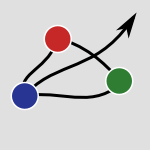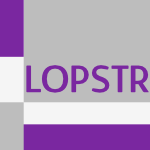1294 papers:
 CASE-2015-BjorkenstamCL
CASE-2015-BjorkenstamCL- Exploiting sparsity in the discrete mechanics and optimal control method with application to human motion planning (SB, JSC, BL), pp. 769–774.
 CASE-2015-HuangCZ #modelling
CASE-2015-HuangCZ #modelling- Interval model based human welder’s movement control in machine assisted manual GTAW torch operation (NH, SC, YZ), pp. 395–400.
 CASE-2015-KaipaTSKLG #automation #using
CASE-2015-KaipaTSKLG #automation #using- Resolving automated perception system failures in bin-picking tasks using assistance from remote human operators (KNK, SSTK, SS, AMK, JDL, SKG), pp. 1453–1458.
 CASE-2015-LiuZ #adaptation #human-computer #modelling #predict #process
CASE-2015-LiuZ #adaptation #human-computer #modelling #predict #process- Adaptive predictive ANFIS based human arm movement modeling and control in machine-human cooperative GTAW process (YL, YZ), pp. 1465–1470.
 CASE-2015-LuW
CASE-2015-LuW- Human-directed robot motion/force control for contact tasks in unstructured environments (LL, JTW), pp. 1165–1170.
 CASE-2015-RanatungaCLP #adaptation #case study
CASE-2015-RanatungaCLP #adaptation #case study- Neuroadaptive control for safe robots in human environments: A case study (IR, SC, FLL, DOP), pp. 322–327.
 DATE-2015-Rabaey #intranet
DATE-2015-Rabaey #intranet- The human intranet: where swarms and humans meet (JMR), pp. 637–640.
 DocEng-2015-WidlocherBLMR #information retrieval
DocEng-2015-WidlocherBLMR #information retrieval- Combining Advanced Information Retrieval and Text-Mining for Digital Humanities (AW, NB, JML, YM, JR), pp. 157–166.
 HT-2015-MishraDBS #analysis #incremental #learning #sentiment
HT-2015-MishraDBS #analysis #incremental #learning #sentiment- Sentiment Analysis with Incremental Human-in-the-Loop Learning and Lexical Resource Customization (SM, JD, JB, ES), pp. 323–325.
 HT-2015-RoutB #algorithm #dataset #ranking #twitter
HT-2015-RoutB #algorithm #dataset #ranking #twitter- A Human-annotated Dataset for Evaluating Tweet Ranking Algorithms (DPR, KB), pp. 95–99.
 FASE-2015-ShinBOBH #prototype #specification
FASE-2015-ShinBOBH #prototype #specification- Resource Specification for Prototyping Human-Intensive Systems (SYS, YB, LJO, HB, PLH), pp. 332–346.
 SEFM-2015-SukkerdGS #cyber-physical
SEFM-2015-SukkerdGS #cyber-physical- Task Planning of Cyber-Human Systems (RS, DG, RS), pp. 293–309.
 CHI-2015-LaputLWXBH #adaptation #named
CHI-2015-LaputLWXBH #adaptation #named- Zensors: Adaptive, Rapidly Deployable, Human-Intelligent Sensor Feeds (GL, WSL, JW, RX, JPB, CH), pp. 1935–1944.
 CHI-2015-LeeBCCWPSBR #exclamation #interactive
CHI-2015-LeeBCCWPSBR #exclamation #interactive- Trap it!: A Playful Human-Biology Interaction for a Museum Installation (SAL, EB, AMC, NC, BW, JYP, BS, PB, IHRK), pp. 2593–2602.
 CHI-2015-LeeKMD #algorithm #data-driven
CHI-2015-LeeKMD #algorithm #data-driven- Working with Machines: The Impact of Algorithmic and Data-Driven Management on Human Workers (MKL, DK, EM, LD), pp. 1603–1612.
 CHI-2015-LiYS #detection #interactive #named
CHI-2015-LiYS #detection #interactive #named- IDSense: A Human Object Interaction Detection System Based on Passive UHF RFID (HL, CY, APS), pp. 2555–2564.
 CHI-2015-MeutznerGK #difference
CHI-2015-MeutznerGK #difference- Constructing Secure Audio CAPTCHAs by Exploiting Differences between Humans and Machines (HM, SG, DK), pp. 2335–2338.
 CHI-2015-MunteanuMMROV #human-computer #interactive #requirements
CHI-2015-MunteanuMMROV #human-computer #interactive #requirements- Situational Ethics: Re-thinking Approaches to Formal Ethics Requirements for Human-Computer Interaction (CM, HM, WM, MR, SO, JV), pp. 105–114.
 CHI-2015-PerrierDDAKUJ #communication #human-computer #hybrid #women
CHI-2015-PerrierDDAKUJ #communication #human-computer #hybrid #women- Engaging Pregnant Women in Kenya with a Hybrid Computer-Human SMS Communication System (TP, ND, BD, RJA, JK, JU, GJS), pp. 1429–1438.
 CHI-2015-StraitVFSU #elicitation #interactive
CHI-2015-StraitVFSU #elicitation #interactive- Too Much Humanness for Human-Robot Interaction: Exposure to Highly Humanlike Robots Elicits Aversive Responding in Observers (MS, LV, VF, MS, HLU), pp. 3593–3602.
 CSCW-2015-TangCSR #deployment #framework #volunteer
CSCW-2015-TangCSR #deployment #framework #volunteer- Restructuring Human Infrastructure: The Impact of EHR Deployment in a Volunteer-Dependent Clinic (CT, YC, BCS, JAR), pp. 649–661.
 DHM-EH-2015-EndoTM #estimation #modelling
DHM-EH-2015-EndoTM #estimation #modelling- Estimation of Arbitrary Human Models from Anthropometric Dimensions (YE, MT, MM), pp. 3–14.
 DHM-EH-2015-GoffRB #effectiveness #interactive #towards
DHM-EH-2015-GoffRB #effectiveness #interactive #towards- Toward a Model for Effective Human-Automation Interaction: The Mediated Agency (KLG, AR, BB), pp. 274–283.
 DHM-EH-2015-HuDLZY #analysis
DHM-EH-2015-HuDLZY #analysis- Biomechanical Analysis of Human Thorax and Abdomen During Automotive Impact (HH, LD, XL, CZ, YY), pp. 266–273.
 DHM-EH-2015-MamessierDO #semantics
DHM-EH-2015-MamessierDO #semantics- Semantically Integrated Human Factors Engineering (SM, DD, MO), pp. 284–294.
 DHM-EH-2015-MaruyamaKD #adaptation #scalability #simulation
DHM-EH-2015-MaruyamaKD #adaptation #scalability #simulation- MoCap-Based Adaptive Human-Like Walking Simulation in Laser-Scanned Large-Scale as-Built Environments (TM, SK, HD), pp. 193–204.
 DHM-EH-2015-PerestreloTNS #framework #modelling #simulation
DHM-EH-2015-PerestreloTNS #framework #modelling #simulation- Modeling of a Virtual Open Platform for Human Cranium Simulation (PP, MT, PN, JS), pp. 358–366.
 DHM-EH-2015-RegazzoniRC #simulation
DHM-EH-2015-RegazzoniRC #simulation- The Role of Virtual Ergonomic Simulation to Develop Innovative Human Centered Products (DR, CR, GC), pp. 74–83.
 DHM-EH-2015-ZhouYLXZ #analysis
DHM-EH-2015-ZhouYLXZ #analysis- Moment Analysis of Virtual Human Joint Based on JACK (QXZ, QY, ZQL, FX, SZ), pp. 100–109.
 DHM-HM-2015-BoringJM #analysis #modelling #performance #reliability
DHM-HM-2015-BoringJM #analysis #modelling #performance #reliability- Human Performance Modeling for Dynamic Human Reliability Analysis (RLB, JCJ, DM), pp. 223–234.
 DHM-HM-2015-NazinF #bibliography
DHM-HM-2015-NazinF #bibliography- Human Machine Epistemology Survey (RN, DF), pp. 345–356.
 DUXU-DD-2015-MartinsMS #case study #fault
DUXU-DD-2015-MartinsMS #case study #fault- A Study of the Fault Tree Human in Aviation (ETM, ITM, MMS), pp. 524–534.
 DUXU-DD-2015-Mesbahi #exclamation #interactive
DUXU-DD-2015-Mesbahi #exclamation #interactive- Human-Robot Interaction Ethics in Sci-Fi Movies: Ethics Are Not “There”, We Are the Ethics! (MEM), pp. 590–598.
 DUXU-IXD-2015-DesouzartF #human-computer #interactive
DUXU-IXD-2015-DesouzartF #human-computer #interactive- Human-Computer Interaction in Bed (GD, EF), pp. 596–605.
 DUXU-UI-2015-ChenH #design #interactive
DUXU-UI-2015-ChenH #design #interactive- Designing an Interactive Map of Musical Culture and a Digital Humanity App (SCC, CHH), pp. 301–306.
 DUXU-UI-2015-GuimaraesS #simulation
DUXU-UI-2015-GuimaraesS #simulation- Humanizing Labor Resource in a Discrete Event Manufacturing Simulation Software (LBdMG, CSS), pp. 14–22.
 DUXU-UI-2015-InoueYHS #design #interface #process
DUXU-UI-2015-InoueYHS #design #interface #process- Applying Human Centered Design Process for Designing Air Traffic Control Interfaces (SI, KY, HH, TS), pp. 307–316.
 HCI-DE-2015-HornungPBL #challenge #interactive #perspective
HCI-DE-2015-HornungPBL #challenge #interactive #perspective- Challenges for Human-Data Interaction — A Semiotic Perspective (HHH, RP, MCCB, KL), pp. 37–48.
 HCI-DE-2015-SamaniSJ #interactive
HCI-DE-2015-SamaniSJ #interactive- Biologically Inspired Artificial Endocrine System for Human Computer Interaction (HAS, ES, B(J), pp. 71–81.
 HCI-DE-2015-ZhangBL #design #human-computer #interactive
HCI-DE-2015-ZhangBL #design #human-computer #interactive- Emotional Engagement for Human-Computer Interaction in Exhibition Design (MZ, CdB, WL), pp. 542–549.
 HCI-IT-2015-FioriniLEMMBCD #case study #interactive #interface #network #social
HCI-IT-2015-FioriniLEMMBCD #case study #interactive #interface #network #social- Enhancing Human Robot Interaction Through Social Network Interfaces: A Case Study (LF, RL, RE, AM, AM, MB, FC, PD), pp. 729–740.
 HCI-IT-2015-GohPL #game studies
HCI-IT-2015-GohPL #game studies- An Investigation of Reward Systems in Human Computation Games (DHLG, EPPPT, CSL), pp. 596–607.
 HCI-IT-2015-KondoTT #communication #smarttech #using
HCI-IT-2015-KondoTT #communication #smarttech #using- Information Select and Transfer Between Touch Panel and Wearable Devices Using Human Body Communication (YK, ST, JT), pp. 208–216.
 HCI-UC-2015-GofukuFU
HCI-UC-2015-GofukuFU- Some Investigations of Fukushima Dai-ichi Accidents from the Viewpoints of Human Factors (AG, HF, HU), pp. 314–326.
 HCI-UC-2015-OhJK #approach #human-computer #simulation #using
HCI-UC-2015-OhJK #approach #human-computer #simulation #using- Simulation of an Affordance-Based Human-Machine Cooperative Control Model Using an Agent-Based Simulation Approach (YgO, IJ, NK), pp. 226–237.
 HIMI-IKC-2015-ItaiM #development #interactive #using
HIMI-IKC-2015-ItaiM #development #interactive #using- Study About Creation of “Maai” Involving Intention Using Rhythm Controller — Development of Maai Creating Agent and Interaction Experiments Between Human and Agent (SI, YM), pp. 599–609.
 HIMI-IKC-2015-MayerBPGV #automation #generative #process #using #visualisation
HIMI-IKC-2015-MayerBPGV #automation #generative #process #using #visualisation- Automatic Generation of Integrated Process Data Visualizations Using Human Knowledge (FM, UB, DP, DG, BVH), pp. 488–498.
 HIMI-IKC-2015-Porathe #fault
HIMI-IKC-2015-Porathe #fault- Human Error and e-Navigation: Developing the Nautical Chart as Resilient Decision Support (TP), pp. 129–139.
 HIMI-IKD-2015-FujinawaSINHTH #behaviour #induction
HIMI-IKD-2015-FujinawaSINHTH #behaviour #induction- Induction of Human Behavior by Presentation of Environmental Acoustics (EF, SS, MI, TN, OH, TT, MH), pp. 582–594.
 HIMI-IKD-2015-GregoryD #human-computer #information management #multi
HIMI-IKD-2015-GregoryD #human-computer #information management #multi- Multisensory Information Processing for Enhanced Human-Machine Symbiosis (FDG, LD), pp. 354–365.
 HIMI-IKD-2015-LawsonBTKHR #development
HIMI-IKD-2015-LawsonBTKHR #development- Human Factors to Consider During the Early Development and Dissemination of New Displays to Improve Spatial Orientation and Situation Awareness (BDL, JCB, LBIT, AMK, CRH, AHR), pp. 412–424.
 HIMI-IKD-2015-ProssHTH #concept #interactive #visualisation
HIMI-IKD-2015-ProssHTH #concept #interactive #visualisation- A Concept for Visualizing Psychophysiological Data in Human Computer Interaction: The FeaturePlotter (FP, DH, HCT, HH), pp. 97–106.
 HIMI-IKD-2015-SharmaMMTD #graph #modelling
HIMI-IKD-2015-SharmaMMTD #graph #modelling- A Team Hiring Solution Based on Graph-Based Modelling of Human Resource Entities (AS, JM, AM, AT, PD), pp. 115–126.
 HIMI-IKD-2015-TanumaOM #feedback #recognition
HIMI-IKD-2015-TanumaOM #feedback #recognition- Human Characteristics of Figure Recognition in Tactile Feedback (MT, MO, HM), pp. 458–465.
 HIMI-IKD-2015-WongwichaiT #assembly #comprehension
HIMI-IKD-2015-WongwichaiT #assembly #comprehension- An Observation of Human Comprehension Through Wood Joints Assembly of a Cube Puzzle (TW, TT), pp. 668–677.
 LCT-2015-XueZZ #interactive #modelling
LCT-2015-XueZZ #interactive #modelling- Human-Human Interaction Modeling of Trainer (HX, WZ, XZ), pp. 528–534.
 ICEIS-v3-2015-NyameB #information management
ICEIS-v3-2015-NyameB #information management- The Adoption and Use of Human Resource Information System (HRIS) in Ghana (PKON, RB), pp. 130–138.
 RecSys-2015-Santos #hybrid #recommendation
RecSys-2015-Santos #hybrid #recommendation- A Hybrid Recommendation System Based on Human Curiosity (AMdS), pp. 367–370.
 SAC-2015-AhrndtBFA #adaptation #predict
SAC-2015-AhrndtBFA #adaptation #predict- Predictability in human-agent cooperation: adapting to humans’ personalities (SA, BB, JF, SA), pp. 474–479.
 SAC-2015-AlyI #named #process #realtime #recognition
SAC-2015-AlyI #named #process #realtime #recognition- ubiMonitor: intelligent fusion of body-worn sensors for real-time human activity recognition (HA, MAI), pp. 563–568.
 SAC-2015-HamataniUH #smarttech #using
SAC-2015-HamataniUH #smarttech #using- Estimating core body temperature based on human thermal model using wearable sensors (TH, AU, TH), pp. 521–526.
 SAC-2015-MainiS #communication #distributed #multi #using
SAC-2015-MainiS #communication #distributed #multi #using- Distributed task servicing using multiple robots with human-in-the-loop under limited communication range (PM, PBS), pp. 301–306.
 SAC-2015-SunyaevB #empirical #independence #testing
SAC-2015-SunyaevB #empirical #independence #testing- Truth and myth of independent software testing: a controlled human experiment (AS, DB), pp. 1722–1728.
 ICSE-v2-2015-HuangM #adaptation #self
ICSE-v2-2015-HuangM #adaptation #self- Incorporating Human Intention into Self-Adaptive Systems (SH, PM), pp. 571–574.
 CASE-2014-DingSM #assembly #case study #industrial
CASE-2014-DingSM #assembly #case study #industrial- Optimized task distribution for industrial assembly in mixed human-robot environments — Case study on IO module assembly (HD, MS, BM), pp. 19–24.
 CASE-2014-HabibDBHP #android #learning
CASE-2014-HabibDBHP #android #learning- Learning human-like facial expressions for Android Phillip K. Dick (AH, SKD, ICB, DH, DOP), pp. 1159–1165.
 CASE-2014-LasotaRS #industrial #interactive #standard #towards
CASE-2014-LasotaRS #industrial #interactive #standard #towards- Toward safe close-proximity human-robot interaction with standard industrial robots (PAL, GFR, JAS), pp. 339–344.
 CASE-2014-LinHC #gesture #network #recognition #using
CASE-2014-LinHC #gesture #network #recognition #using- Human hand gesture recognition using a convolution neural network (HIL, MHH, WKC), pp. 1038–1043.
 CASE-2014-LiWC #using
CASE-2014-LiWC #using- Pedestrian tracking system by using human shape prior model (KCL, HCW, JMC), pp. 1139–1143.
 DocEng-2014-SchmitzPD #automation #collaboration #metadata #tool support
DocEng-2014-SchmitzPD #automation #collaboration #metadata #tool support- DH-CASE II: collaborative annotations in shared environments: metadata, tools and techniques in the digital humanities (PS, LP, QD), pp. 211–212.
 VLDB-2014-CatastaTDDAC #named
VLDB-2014-CatastaTDDAC #named- TransactiveDB: Tapping into Collective Human Memories (MC, AT, DED, GD, KA, PCM), pp. 1977–1980.
 VLDB-2014-GaoP #algorithm #exclamation
VLDB-2014-GaoP #algorithm #exclamation- Finish Them!: Pricing Algorithms for Human Computation (YG, AGP), pp. 1965–1976.
 TACAS-2014-LiSSS #synthesis
TACAS-2014-LiSSS #synthesis- Synthesis for Human-in-the-Loop Control Systems (WL, DS, SSS, SAS), pp. 470–484.
 ICPC-2014-StefikHMAYS #design #empirical #programming language #what
ICPC-2014-StefikHMAYS #design #empirical #programming language #what- What is the Foundation of Evidence of Human Factors Decisions in Language Design? An Empirical Study on Programming Language Workshops (AS, SH, MM, AAA, SKY, SS), pp. 223–231.
 CHI-2014-BidwellHD #interface
CHI-2014-BidwellHD #interface- Measuring operator anticipatory inputs in response to time-delay for teleoperated human-robot interfaces (JB, AH, SD), pp. 1467–1470.
 CHI-2014-DurrantKR
CHI-2014-DurrantKR- Human values in curating a human rights media archive (AD, DSK, SR), pp. 2685–2694.
 CHI-2014-HongA #modelling #performance #predict #recommendation #user interface
CHI-2014-HongA #modelling #performance #predict #recommendation #user interface- Novice use of a predictive human performance modeling tool to produce UI recommendations (KWH, RSA), pp. 2251–2254.
 CHI-2014-HornbaekSBS #human-computer #interactive
CHI-2014-HornbaekSBS #human-computer #interactive- Is once enough?: on the extent and content of replications in human-computer interaction (KH, SSS, JABA, JGS), pp. 3523–3532.
 CHI-2014-ParkLMMHS #game studies
CHI-2014-ParkLMMHS #game studies- Human factors of speed-based exergame controllers (TP, UL, SM, MM, IH, JS), pp. 1865–1874.
 CHI-2014-PereiraPP #interactive #social
CHI-2014-PereiraPP #interactive #social- Improving social presence in human-agent interaction (ATP, RP, AP), pp. 1449–1458.
 CHI-2014-SauppeM #design pattern #interactive #prototype
CHI-2014-SauppeM #design pattern #interactive #prototype- Design patterns for exploring and prototyping human-robot interactions (AS, BM), pp. 1439–1448.
 CSCW-2014-QuinnB #named #performance #spreadsheet
CSCW-2014-QuinnB #named #performance #spreadsheet- AskSheet: efficient human computation for decision making with spreadsheets (AJQ, BBB), pp. 1456–1466.
 DHM-2014-Delgado-GonzaloRCSLBL #algorithm #embedded #energy #modelling #state of the art
DHM-2014-Delgado-GonzaloRCSLBL #algorithm #embedded #energy #modelling #state of the art- Human Energy Expenditure Models: Beyond State-of-the-Art Commercialized Embedded Algorithms (RDG, PR, EMC, JS, CL, MB, ML), pp. 3–14.
 DHM-2014-DuWZHM #evolution #image #using
DHM-2014-DuWZHM #evolution #image #using- Human Skeleton Extraction of Depth Images Using the Polygon Evolution (HD, JW, XxZ, YH, LM), pp. 15–23.
 DHM-2014-Fass
DHM-2014-Fass- Reclaiming Human Machine Nature (DF), pp. 588–599.
 DHM-2014-FuCLCZ #framework #modelling
DHM-2014-FuCLCZ #framework #modelling- Evaluating Work Disability of Lower Limb Handicapped within a Human Modeling Framework (YF, XC, SL, JGC, BZ), pp. 516–526.
 DHM-2014-MarlerBVJRD #design
DHM-2014-MarlerBVJRD #design- A Digital Human Model for Performance-Based Design (TM, SB, UV, RJ, VR, BD), pp. 136–147.
 DHM-2014-ZhangTWHFC #modelling
DHM-2014-ZhangTWHFC #modelling- Modeling Human Control Strategies in Simulated RVD Tasks through the Time-Fuel Optimal Control Model (SZ, YT, CW, SH, YF, SC), pp. 661–670.
 DUXU-DP-2014-HamachiTN #integration #process #quality
DUXU-DP-2014-HamachiTN #integration #process #quality- Activities to Improve System Integration and Service Quality and Add Additional Values — Reducing the Cost in Applying Human-Centered-Design Process (RH, IT, HN), pp. 32–38.
 DUXU-DP-2014-Kumar #enterprise #experience #user interface
DUXU-DP-2014-Kumar #enterprise #experience #user interface- Humanizing the Enterprise — Delivering Best in Class User Experience to Business Software Users (JK), pp. 61–70.
 DUXU-DP-2014-OnalMMO #case study #challenge #experience #user interface
DUXU-DP-2014-OnalMMO #case study #challenge #experience #user interface- Enabling Better User Experiences across Domains: Challenges and Opportunities Facing a Human Factors Professional (EO, SM, CM, OO), pp. 81–89.
 DUXU-DP-2014-RizvanogluOA
DUXU-DP-2014-RizvanogluOA- The Impact of Human Likeness on the Older Adults’ Perceptions and Preferences of Humanoid Robot Appearance (KR, ÖÖ, ÖA), pp. 164–172.
 DUXU-DP-2014-ShimizuINMHKWK #process
DUXU-DP-2014-ShimizuINMHKWK #process- Consideration for Interpretation of Brain Activity Pattern during Car Driving Based on Human Movements (SS, HI, HN, FM, NH, SK, EW, SK), pp. 458–468.
 DUXU-ELAS-2014-Abbas #behaviour #case study #challenge #implementation
DUXU-ELAS-2014-Abbas #behaviour #case study #challenge #implementation- Challenges in Implementation of TVM (Ticket Vending Machine) in Developing Countries for Mass Transport System: A Study of Human Behavior while Interacting with Ticket Vending Machine-TVM (MA), pp. 245–254.
 DUXU-ELAS-2014-BackhausBT #experience #user interface
DUXU-ELAS-2014-BackhausBT #experience #user interface- Positive Technology and User Experience for Human Needs in Developing Countries: Some Considerations (NB, SB, AT), pp. 400–410.
 DUXU-ELAS-2014-ChenDCY #comprehension #experience #user interface
DUXU-ELAS-2014-ChenDCY #comprehension #experience #user interface- Enhance User Experience Moving in Campus through Understanding Human Spatial Cognition (SMC, YSD, SFC, HCY), pp. 265–272.
 DUXU-ELAS-2014-DesouzartFMM #behaviour #interactive
DUXU-ELAS-2014-DesouzartFMM #behaviour #interactive- Human-Bed Interaction: A Methodology and Tool to Measure Postural Behavior during Sleep of the Air Force Military (GD, EF, FM, RM), pp. 662–674.
 DUXU-ELAS-2014-Takei #interactive #smarttech
DUXU-ELAS-2014-Takei #interactive #smarttech- Human Interactive Wearable Devices: Applications of Artificial Electronic Skins and Smart Bandages (KT), pp. 710–718.
 DUXU-TMT-2014-FilippiB #analysis #aspect-oriented #functional #human-computer #interactive #nondeterminism
DUXU-TMT-2014-FilippiB #analysis #aspect-oriented #functional #human-computer #interactive #nondeterminism- In-Depth Analysis of Non-deterministic Aspects of Human-Machine Interaction and Update of Dedicated Functional Mock-Ups (SF, DB), pp. 185–196.
 DUXU-TMT-2014-InoueSNTMHKWK #physics #process
DUXU-TMT-2014-InoueSNTMHKWK #physics #process- Attempts to Quantitative Analyze for the Change of Human Brain Activity with Physical and Psychological Load (HI, SS, HN, TT, FM, NH, SK, EW, SK), pp. 240–249.
 HCI-AIMT-2014-AlkhashramiAA #design #interface #learning
HCI-AIMT-2014-AlkhashramiAA #design #interface #learning- Human Factors in the Design of Arabic-Language Interfaces in Assistive Technologies for Learning Difficulties (SA, HA, AAW), pp. 362–369.
 HCI-AIMT-2014-AlrajhiHAA #design
HCI-AIMT-2014-AlrajhiHAA #design- Human Factors in the Design of BCI-Controlled Wheelchairs (WA, MH, AAW, AA), pp. 513–522.
 HCI-AIMT-2014-CataniaPS #human-computer #interactive #internet
HCI-AIMT-2014-CataniaPS #human-computer #interactive #internet- Introducing Consciousnet : Internet Content as an Environment for Human-Machine Interaction (VC, DP, MS), pp. 382–393.
 HCI-AIMT-2014-LackeyBM #communication #interactive #recommendation #requirements
HCI-AIMT-2014-LackeyBM #communication #interactive #recommendation #requirements- Recommended Considerations for Human-Robot Interaction Communication Requirements (SJL, DJB, SGM), pp. 663–674.
 HCI-AIMT-2014-MattarW #impact analysis
HCI-AIMT-2014-MattarW #impact analysis- Let’s Get Personal — Assessing the Impact of Personal Information in Human-Agent Conversations (NM, IW), pp. 450–461.
 HCI-AIMT-2014-MeyerBDS #concept #development #human-computer #information management #interactive
HCI-AIMT-2014-MeyerBDS #concept #development #human-computer #information management #interactive- Development of Interaction Concepts for Touchless Human-Computer Interaction with Geographic Information Systems (RM, JB, JD, CMS), pp. 589–599.
 HCI-AIMT-2014-NavarrettaL #behaviour #interactive #multimodal
HCI-AIMT-2014-NavarrettaL #behaviour #interactive #multimodal- Multimodal Behaviours in Comparable Danish and Polish Human-Human Triadic Spontaneous Interactions (CN, ML), pp. 462–471.
 HCI-AIMT-2014-NovickG #case study
HCI-AIMT-2014-NovickG #case study- Building Rapport between Human and ECA: A Pilot Study (DGN, IG), pp. 472–480.
 HCI-AIMT-2014-ReddyC #artificial reality #process #recognition #using
HCI-AIMT-2014-ReddyC #artificial reality #process #recognition #using- Human Activity Recognition from Kinect Captured Data Using Stick Model (VRR, TC), pp. 305–315.
 HCI-AIMT-2014-RoyC #artificial reality #detection #invariant #markov #using
HCI-AIMT-2014-RoyC #artificial reality #detection #invariant #markov #using- View-Invariant Human Detection from RGB-D Data of Kinect Using Continuous Hidden Markov Model (SR, TC), pp. 325–336.
 HCI-AIMT-2014-RuffieuxLMK #bibliography #dataset #gesture #recognition
HCI-AIMT-2014-RuffieuxLMK #bibliography #dataset #gesture #recognition- A Survey of Datasets for Human Gesture Recognition (SR, DL, EM, OAK), pp. 337–348.
 HCI-AIMT-2014-SantosCMJ #behaviour #case study #interactive
HCI-AIMT-2014-SantosCMJ #behaviour #case study #interactive- Behavioral Persona for Human-Robot Interaction: A Study Based on Pet Robot (TFdS, DGdC, AAM, PTAJ), pp. 687–696.
 HCI-AIMT-2014-SiegertHPW #human-computer #interactive
HCI-AIMT-2014-SiegertHPW #human-computer #interactive- Discourse Particles and User Characteristics in Naturalistic Human-Computer Interaction (IS, MH, DP, AW), pp. 492–501.
 HCI-AIMT-2014-WuttkeM #adaptation #behaviour #communication
HCI-AIMT-2014-WuttkeM #adaptation #behaviour #communication- Natural Forms of Communication and Adaptive Behaviour in Human-Computer-Interaction (MW, KUM), pp. 641–647.
 HCI-AS-2014-JiaNBBT #corpus #framework #named #online #research
HCI-AS-2014-JiaNBBT #corpus #framework #named #online #research- CORPUS: Next-Generation Online Platform for Research Collaborations in Humanities (YJ, XN, RB, DB, ADT), pp. 3–12.
 HCI-AS-2014-Kawecka-EndlerM #enterprise #process
HCI-AS-2014-Kawecka-EndlerM #enterprise #process- Humanization of Work and Environmental Protection in Activity of Enterprise (AKE, BM), pp. 700–709.
 HCI-AS-2014-NerisRL #aspect-oriented #bibliography #human-computer #interactive
HCI-AS-2014-NerisRL #aspect-oriented #bibliography #human-computer #interactive- A Systematic Review of Sustainability and Aspects of Human-Computer Interaction (VPdAN, KRdHR, RFL), pp. 742–753.
 HCI-AS-2014-NiedoberHMKSCJL #automation #case study #trust
HCI-AS-2014-NiedoberHMKSCJL #automation #case study #trust- Influence of Cultural, Organizational and Automation Factors on Human-Automation Trust: A Case Study of Auto-GCAS Engineers and Developmental History (DJN, NTH, GM, KK, MS, AC, WJ, JBL), pp. 473–484.
 HCI-TMT-2014-AraujoJ #human-computer #interactive #modelling
HCI-TMT-2014-AraujoJ #human-computer #interactive #modelling- Psychological Personas for Universal User Modeling in Human-Computer Interaction (CFdA, PTAJ), pp. 3–13.
 HCI-TMT-2014-BotegaBAN #data fusion #interactive
HCI-TMT-2014-BotegaBAN #data fusion #interactive- A Model to Promote Interaction between Humans and Data Fusion Intelligence to Enhance Situational Awareness (LCB, CBB, RBdA, VPdAN), pp. 399–410.
 HCI-TMT-2014-CafezeiroGCM #behaviour #collaboration #interactive #roadmap
HCI-TMT-2014-CafezeiroGCM #behaviour #collaboration #interactive #roadmap- A Knowledge-Construction Perspective on Human Computing, Collaborative Behavior and New Trends in System Interactions (IC, CG, VC, IdCM), pp. 58–68.
 HCI-TMT-2014-Gross #education #human-computer #interactive
HCI-TMT-2014-Gross #education #human-computer #interactive- Human-Computer Interaction Education and Diversity (TG), pp. 187–198.
 HCI-TMT-2014-LuzSN #generative #human-computer #ontology #workflow
HCI-TMT-2014-LuzSN #generative #human-computer #ontology #workflow- Generating Human-Computer Micro-task Workflows from Domain Ontologies (NL, NS, PN), pp. 98–109.
 HCI-TMT-2014-SilvaCP #education #human-computer #interactive #learning
HCI-TMT-2014-SilvaCP #education #human-computer #interactive #learning- Studio-Based Learning as a Natural Fit to Teaching Human-Computer Interaction (PAS, MEC, BJP), pp. 251–258.
 HIMI-AS-2014-JangKJS #analysis #framework #reliability
HIMI-AS-2014-JangKJS #analysis #framework #reliability- A Framework of Human Reliability Analysis Method Considering Soft Control in Digital Main Control Rooms (IJ, ARK, WJ, PHS), pp. 335–346.
 HIMI-AS-2014-KhaoulaOSO #concept
HIMI-AS-2014-KhaoulaOSO #concept- Concepts and Applications of Human-Dependent Robots (YK, NO, PRSDS, MO), pp. 435–444.
 HIMI-AS-2014-OliveiraAJ #interface #maintenance
HIMI-AS-2014-OliveiraAJ #interface #maintenance- Human-Centered Interfaces for Situation Awareness in Maintenance (AO, RBdA, AJ), pp. 193–204.
 HIMI-AS-2014-TerwilligerIVL #interface
HIMI-AS-2014-TerwilligerIVL #interface- Advancement and Application of Unmanned Aerial System Human-Machine-Interface (HMI) Technology (BAT, DCI, DAV, DL), pp. 273–283.
 HIMI-DE-2014-Miki #design #evaluation #experience #framework #user interface
HIMI-DE-2014-Miki #design #evaluation #experience #framework #user interface- User Experience Evaluation Framework for Human-Centered Design (HM), pp. 602–612.
 HIMI-DE-2014-MurataUS #interactive
HIMI-DE-2014-MurataUS #interactive- Effect of Haptic Perception on Remote Human-Pet Interaction (KM, KU, YS), pp. 226–232.
 HIMI-DE-2014-TanikawaSKF #design #problem #process #usability #verification
HIMI-DE-2014-TanikawaSKF #design #problem #process #usability #verification- Problems in Usability Improvement Activity by Software Engineers — Consideration through Verification Experiments for Human- Centered Design Process Support Environment (YT, HS, HK, SF), pp. 641–651.
 LCT-NLE-2014-Jo0L #analysis #empirical #people
LCT-NLE-2014-Jo0L #analysis #empirical #people- Empirical Analysis of Changes in Human Creativity in People Who Work with Humanoid Robots and Their Avatars (DJ, JGL, KCL), pp. 273–281.
 LCT-NLE-2014-SousaLD #human-computer #towards #trust
LCT-NLE-2014-SousaLD #human-computer #towards #trust- A Model for Human-Computer Trust — Contributions Towards Leveraging User Engagement (SCS, DRL, PD), pp. 128–137.
 LCT-NLE-2014-UlbrichtBFQ #component #interface #learning #testing #usability
LCT-NLE-2014-UlbrichtBFQ #component #interface #learning #testing #usability- The Emotion Component on Usability Testing Human Computer Interface of an Inclusive Learning Management System (VRU, CHB, LF, SRPdQ), pp. 334–345.
 ICEIS-v3-2014-AntonayaSC #collaboration #enterprise #information management
ICEIS-v3-2014-AntonayaSC #collaboration #enterprise #information management- Handling Human Factors in Cloud-based Collaborative Enterprise Information Systems (SLA, CBS, JGC), pp. 162–167.
 ICEIS-v3-2014-BaldominosCC #approach #information management #interactive
ICEIS-v3-2014-BaldominosCC #approach #information management #interactive- An Approach to Circumstantial Knowledge Management for Human-Like Interaction (AB, FJCG, DC), pp. 71–78.
 CIKM-2014-TakayamaTIOFC #detection #probability
CIKM-2014-TakayamaTIOFC #detection #probability- A Word-Scale Probabilistic Latent Variable Model for Detecting Human Values (YT, YT, EI, DWO, KRF, ASC), pp. 1489–1498.
 CIKM-2014-YeLQPM #generative
CIKM-2014-YeLQPM #generative- A Generative Model for Generating Relevance Labels from Human Judgments and Click-Logs (XY, JL, ZQ, BP, DM), pp. 1907–1910.
 ICPR-2014-0005ZTS #detection #segmentation
ICPR-2014-0005ZTS #detection #segmentation- Human Hair Segmentation and Length Detection for Human Appearance Model (YW, ZZ, EKT, BS), pp. 450–454.
 ICPR-2014-AlemdarKNME #behaviour #modelling #using
ICPR-2014-AlemdarKNME #behaviour #modelling #using- A Unified Model for Human Behavior Modeling Using a Hierarchy with a Variable Number of States (HÖA, TvK, MEN, AM, CE), pp. 3804–3809.
 ICPR-2014-AokiFKM #algorithm #architecture #visual notation
ICPR-2014-AokiFKM #algorithm #architecture #visual notation- KIZUKI Processing for Visual Inspection: A Smart Pattern Pop-Out Algorithm Based on Human Visual Architecture (KA, TF, HK, YM), pp. 2317–2322.
 ICPR-2014-BagheriHGE #classification #framework #multi #recognition
ICPR-2014-BagheriHGE #classification #framework #multi #recognition- A Framework of Multi-classifier Fusion for Human Action Recognition (MAB, GH, QG, SE), pp. 1260–1265.
 ICPR-2014-CaiTF #learning #recognition #taxonomy
ICPR-2014-CaiTF #learning #recognition #taxonomy- Learning Pose Dictionary for Human Action Recognition (JxC, XT, GCF), pp. 381–386.
 ICPR-2014-ChenDGYP #interactive #mobile
ICPR-2014-ChenDGYP #interactive #mobile- Stereovision-Only Based Interactive Mobile Robot for Human-Robot Face-to-Face Interaction (LC, ZD, SG, BY, MP), pp. 1840–1845.
 ICPR-2014-DeCannRC #clustering #on the
ICPR-2014-DeCannRC #clustering #on the- On Clustering Human Gait Patterns (BD, AR, MC), pp. 1794–1799.
 ICPR-2014-EvangelidisSH #recognition #using
ICPR-2014-EvangelidisSH #recognition #using- Skeletal Quads: Human Action Recognition Using Joint Quadruples (GE, GS, RH), pp. 4513–4518.
 ICPR-2014-GeronimoK #retrieval #video
ICPR-2014-GeronimoK #retrieval #video- Unsupervised Surveillance Video Retrieval Based on Human Action and Appearance (DG, HK), pp. 4630–4635.
 ICPR-2014-IosifidisTP #classification #network
ICPR-2014-IosifidisTP #classification #network- Semi-supervised Classification of Human Actions Based on Neural Networks (AI, AT, IP), pp. 1336–1341.
 ICPR-2014-KeceliC #approach #multimodal #using
ICPR-2014-KeceliC #approach #multimodal #using- A Multimodal Approach for Recognizing Human Actions Using Depth Information (ASK, ABC), pp. 421–426.
 ICPR-2014-KumarK #adaptation #multimodal #recognition #security #set #using
ICPR-2014-KumarK #adaptation #multimodal #recognition #security #set #using- Adaptive Security for Human Surveillance Using Multimodal Open Set Biometric Recognition (AK, AK), pp. 405–410.
 ICPR-2014-LiCGW #hybrid #interactive #recognition #using
ICPR-2014-LiCGW #hybrid #interactive #recognition #using- A Hybrid Method for Human Interaction Recognition Using Spatio-temporal Interest Points (NL, XC, HG, ZW), pp. 2513–2518.
 ICPR-2014-NieJ14a #recognition
ICPR-2014-NieJ14a #recognition- Capturing Global and Local Dynamics for Human Action Recognition (SN, QJ), pp. 1946–1951.
 ICPR-2014-OrriteRHRV #automation #recognition #segmentation #sequence
ICPR-2014-OrriteRHRV #automation #recognition #segmentation #sequence- Automatic Segmentation and Recognition of Human Actions in Monocular Sequences (CO, MR, EH, GR, SAV), pp. 4218–4223.
 ICPR-2014-SengerSMK #behaviour #multi #segmentation
ICPR-2014-SengerSMK #behaviour #multi #segmentation- Velocity-Based Multiple Change-Point Inference for Unsupervised Segmentation of Human Movement Behavior (LS, MS, JHM, EAK), pp. 4564–4569.
 ICPR-2014-SlamaWD #3d #gesture #recognition #representation
ICPR-2014-SlamaWD #3d #gesture #recognition #representation- Grassmannian Representation of Motion Depth for 3D Human Gesture and Action Recognition (RS, HW, MD), pp. 3499–3504.
 ICPR-2014-TaniH #detection #robust #using
ICPR-2014-TaniH #detection #robust #using- Robust Human Detection to Pose and Occlusion Using Bag-of-Words (YT, KH), pp. 4376–4381.
 ICPR-2014-UbukataSTMKMU #detection #image #performance #segmentation
ICPR-2014-UbukataSTMKMU #detection #image #performance #segmentation- Fast Human Detection Combining Range Image Segmentation and Local Feature Based Detection (TU, MS, KT, AM, TK, GM, KU), pp. 4281–4286.
 ICPR-2014-WilliamsCD #automation #human-computer #on the #recognition
ICPR-2014-WilliamsCD #automation #human-computer #on the #recognition- On Human Perception and Automatic Target Recognition: Strategies for Human-Computer Cooperation (DPW, MC, SD), pp. 4690–4695.
 ICPR-2014-ZhangHWZ #multi #parsing
ICPR-2014-ZhangHWZ #multi #parsing- Enhanced Human Parsing with Multiple Feature Fusion and Augmented Pose Model (ZZ, JH, YW, YZ), pp. 369–374.
 KDD-2014-LichmanS #kernel #modelling
KDD-2014-LichmanS #kernel #modelling- Modeling human location data with mixtures of kernel densities (ML, PS), pp. 35–44.
 KDD-2014-SongZSS #behaviour #predict #scalability
KDD-2014-SongZSS #behaviour #predict #scalability- Prediction of human emergency behavior and their mobility following large-scale disaster (XS, QZ, YS, RS), pp. 5–14.
 MLDM-2014-Schafer #classification #preprocessor #towards
MLDM-2014-Schafer #classification #preprocessor #towards- Towards Time Series Classification without Human Preprocessing (PS), pp. 228–242.
 RecSys-2014-HarmanOAG #recommendation #trust
RecSys-2014-HarmanOAG #recommendation #trust- Dynamics of human trust in recommender systems (JLH, JO, TFA, CG), pp. 305–308.
 SEKE-2014-ParkSHSHB #algorithm #resource management #search-based #using
SEKE-2014-ParkSHSHB #algorithm #resource management #search-based #using- Practical Human Resource Allocation in Software Projects Using Genetic Algorithm (JP, DS, GH, DS, JH, DHB), pp. 688–694.
 SAC-2014-AlharbiZ #predict #social
SAC-2014-AlharbiZ #predict #social- Exploring the significance of human mobility patterns in social link prediction (BA, XZ), pp. 604–609.
 SAC-2014-AnderssonDA #artificial reality #identification #using
SAC-2014-AnderssonDA #artificial reality #identification #using- Anthropometric and human gait identification using skeleton data from Kinect sensor (VOA, RD, RMdA), pp. 60–61.
 FSE-2014-Joseph #framework #interactive #machine learning
FSE-2014-Joseph #framework #interactive #machine learning- Software programmer management: a machine learning and human computer interaction framework for optimal task assignment (HRJ), pp. 826–828.
 FSE-2014-TaoKKX #automation #debugging
FSE-2014-TaoKKX #automation #debugging- Automatically generated patches as debugging aids: a human study (YT, JK, SK, CX), pp. 64–74.
 ICSE-2014-Monperrus #automation #bibliography #evaluation #generative #problem
ICSE-2014-Monperrus #automation #bibliography #evaluation #generative #problem- A critical review of “automatic patch generation learned from human-written patches”: essay on the problem statement and the evaluation of automatic software repair (MM), pp. 234–242.
 ICSE-2014-YaoHJ #analysis #case study #equivalence #using
ICSE-2014-YaoHJ #analysis #case study #equivalence #using- A study of equivalent and stubborn mutation operators using human analysis of equivalence (XY, MH, YJ), pp. 919–930.
 SPLC-2014-SimidchievaO #composition #generative #product line #verification
SPLC-2014-SimidchievaO #composition #generative #product line #verification- Generation, composition, and verification of families of human-intensive systems (BIS, LJO), pp. 207–216.
 CASE-2013-DingHMS #behaviour #collaboration #industrial
CASE-2013-DingHMS #behaviour #collaboration #industrial- Structured collaborative behavior of industrial robots in mixed human-robot environments (HD, JH, BM, HS), pp. 1101–1106.
 CASE-2013-LiuZZ #approach #data-driven #modelling
CASE-2013-LiuZZ #approach #data-driven #modelling- Data driven modeling of human welder intelligence: A neuro-fuzzy approach (YL, WZ, YZ), pp. 663–668.
 DocEng-2013-TomasiV #automation #collaboration #metadata
DocEng-2013-TomasiV #automation #collaboration #metadata- Collaborative annotations in shared environments: metadata, vocabularies and techniques in the digital humanities (DH-CASE 2013) (FT, FV), pp. 283–284.
 HT-2013-HelicSGS #distributed #modelling #navigation #network
HT-2013-HelicSGS #distributed #modelling #navigation #network- Models of human navigation in information networks based on decentralized search (DH, MS, MG, RS), pp. 89–98.
 ICDAR-2013-MalikLD #automation #comparison #forensics #verification
ICDAR-2013-MalikLD #automation #comparison #forensics #verification- Part-Based Automatic System in Comparison to Human Experts for Forensic Signature Verification (MIM, ML, AD), pp. 872–876.
 ICDAR-2013-RomeroS13a #evaluation #process
ICDAR-2013-RomeroS13a #evaluation #process- Human Evaluation of the Transcription Process of a Marriage License Book (VR, JAS), pp. 1255–1259.
 ICPC-2013-KamimuraM #generative #summary #testing #towards
ICPC-2013-KamimuraM #generative #summary #testing #towards- Towards generating human-oriented summaries of unit test cases (MK, GCM), pp. 215–218.
 PASTE-2013-BallHSL #interactive #web
PASTE-2013-BallHSL #interactive #web- Increasing human-tool interaction via the web (TB, PdH, NS, DL), pp. 49–52.
 CHI-2013-AceitunoCR #how
CHI-2013-AceitunoCR #how- How low can you go?: human limits in small unidirectional mouse movements (JA, GC, NR), pp. 1383–1386.
 CHI-2013-AdarTT #interactive
CHI-2013-AdarTT #interactive- Benevolent deception in human computer interaction (EA, DST, JT), pp. 1863–1872.
 CHI-2013-BullingWG #behaviour #named #recognition #visual notation
CHI-2013-BullingWG #behaviour #named #recognition #visual notation- EyeContext: recognition of high-level contextual cues from human visual behaviour (AB, CW, HG), pp. 305–308.
 CHI-2013-GreenHM
CHI-2013-GreenHM- The efficacy of human post-editing for language translation (SG, JH, CDM), pp. 439–448.
 CHI-2013-LeeKYHP #adaptation #video
CHI-2013-LeeKYHP #adaptation #video- A preliminary investigation of human adaptations for various virtual eyes in video see-through HMDS (JHL, SYK, HCY, BKH, JHP), pp. 309–312.
 CHI-2013-QuZ
CHI-2013-QuZ- Regularly visited patches in human mobility (YQ, JZ), pp. 395–398.
 CHI-2013-WisemanCBGO #detection #fault #using
CHI-2013-WisemanCBGO #detection #fault #using- Using redundancy to detect human error (SW, ALC, DPB, SG, SO), pp. 2403–2406.
 CSCW-2013-HuangF #consistency #evaluation #reliability #using
CSCW-2013-HuangF #consistency #evaluation #reliability #using- Enhancing reliability using peer consistency evaluation in human computation (SWH, WTF), pp. 639–648.
 CSCW-2013-JungLDAHB #using
CSCW-2013-JungLDAHB #using- Engaging robots: easing complex human-robot teamwork using backchanneling (MFJ, JJL, ND, SOA, PJH, CB), pp. 1555–1566.
 CSCW-2013-Waterhouse #metric
CSCW-2013-Waterhouse #metric- Pay by the bit: an information-theoretic metric for collective human judgment (TPW), pp. 623–638.
 DHM-HB-2013-BatainehMA #predict
DHM-HB-2013-BatainehMA #predict- Artificial Neural Network-Based Prediction of Human Posture (MB, TM, KAM), pp. 305–313.
 DHM-HB-2013-CaoJHK #assessment #modelling #using
DHM-HB-2013-CaoJHK #assessment #modelling #using- Ergonomic Assessment of Patient Barrow Lifting Technique Using Digital Human Modeling (WC, MJ, YH, MTK), pp. 20–29.
 DHM-HB-2013-ColomboRR #modelling
DHM-HB-2013-ColomboRR #modelling- Markerless Motion Capture Integrated with Human Modeling for Virtual Ergonomics (GC, DR, CR), pp. 314–323.
 DHM-HB-2013-HuhK #estimation #image #using
DHM-HB-2013-HuhK #estimation #image #using- Human Pose Estimation from Depth Image Using Visibility Estimation and Key Points (SH, GK), pp. 333–342.
 DHM-HB-2013-KeyvaniLBO #database #metric #using
DHM-HB-2013-KeyvaniLBO #database #metric #using- Using Methods-Time Measurement to Connect Digital Humans and Motion Databases (AK, DL, GB, RÖ), pp. 343–352.
 DHM-HB-2013-KuzMMS #human-computer #industrial #interactive #morphism #using
DHM-HB-2013-KuzMMS #human-computer #industrial #interactive #morphism #using- Using Anthropomorphism to Improve the Human-Machine Interaction in Industrial Environments (Part I) (SK, MPM, SM, CMS), pp. 76–85.
 DHM-HB-2013-MaruyamaKD #3d #simulation
DHM-HB-2013-MaruyamaKD #3d #simulation- Simulating a Walk of Digital Human Model Directly in Massive 3D Laser-Scanned Point Cloud of Indoor Environments (TM, SK, HD), pp. 366–375.
 DHM-HB-2013-MayerKS #human-computer #industrial #interactive #morphism #using
DHM-HB-2013-MayerKS #human-computer #industrial #interactive #morphism #using- Using Anthropomorphism to Improve the Human-Machine Interaction in Industrial Environments (Part II) (MPM, SK, CMS), pp. 93–100.
 DHM-HB-2013-SchmuntzschYR #industrial #modelling
DHM-HB-2013-SchmuntzschYR #industrial #modelling- Combining Motion Capture and Digital Human Modeling for Creating Instructions in Industrial Settings (US, UY, MR), pp. 124–133.
 DHM-HB-2013-WangH13a #clustering #re-engineering
DHM-HB-2013-WangH13a #clustering #re-engineering- Model Reconstruction of Human Buttocks and the Shape Clustering (LW, XH), pp. 245–251.
 DHM-HB-2013-WangL #design #evaluation #modelling
DHM-HB-2013-WangL #design #evaluation #modelling- Digital Human Modeling for Physiological Factors Evaluation in Work System Design (LW, HYKL), pp. 134–142.
 DHM-HB-2013-YangZF #simulation
DHM-HB-2013-YangZF #simulation- Simulation of Pushing the Push-Pull Rod Action Based on Human Body Dynamics (ZY, YZ, SF), pp. 393–401.
 DHM-SET-2013-AokiTUOIA #design
DHM-SET-2013-AokiTUOIA #design- Human Centered Design of a Pre-collision System (HA, HT, SU, TO, HI, MA), pp. 3–10.
 DHM-SET-2013-DemirelD #design #framework
DHM-SET-2013-DemirelD #design #framework- A Sustainable Human Centered Design Framework Based on Human Factors (HOD, VGD), pp. 307–315.
 DHM-SET-2013-Fass #biology #design #human-computer #modelling
DHM-SET-2013-Fass #biology #design #human-computer #modelling- Putting in Perspective Human-Machine System Theory and Modeling: From Theoretical Biology to Artifacts Integrative Design and Organization — “Artem Augmented Human Project” (DF), pp. 316–325.
 DHM-SET-2013-GoreM #approach #modelling #performance #validation
DHM-SET-2013-GoreM #approach #modelling #performance #validation- A Validation Approach for Complex NextGen Air Traffic Control Human Performance Models (BFG, PM), pp. 28–37.
 DHM-SET-2013-LiauLJ #assessment #development
DHM-SET-2013-LiauLJ #assessment #development- Development of Human Balance Assessment System with Continuous Center of Gravity Tracking (BYL, CWL, YKJ), pp. 332–337.
 DHM-SET-2013-MamessierF #automation #interactive #modelling #simulation
DHM-SET-2013-MamessierF #automation #interactive #modelling #simulation- Simulating the Impact of Mental Models on Human Automation Interaction in Aviation (SM, KMF), pp. 61–69.
 DHM-SET-2013-SunNHMDJMQ #adaptation #design #interactive #physics #safety
DHM-SET-2013-SunNHMDJMQ #adaptation #design #interactive #physics #safety- Adaptive User-Centered Design for Safety and Comfort of Physical Human Nursing — Care Robot Interaction (MS, HN, SH, KM, MD, CaJ, TM, GQ), pp. 365–372.
 DUXU-CXC-2013-ClarkeSMBKK #health #interactive
DUXU-CXC-2013-ClarkeSMBKK #health #interactive- Addressing Human Computer Interaction Issues of Electronic Health Record in Clinical Encounters (MAC, LMS, JLM, JLB, RJK, MSK), pp. 381–390.
 DUXU-CXC-2013-Wang13b #interactive
DUXU-CXC-2013-Wang13b #interactive- The Interactive Media between Human and the Sacred — An Example for Taiwanese Spiritual Practice (PFW), pp. 121–128.
 DUXU-NTE-2013-Danylak #analysis #gesture #human-computer #interactive
DUXU-NTE-2013-Danylak #analysis #gesture #human-computer #interactive- Semiotic Analysis for Gestural and Emotional Human-Computer Interaction (RD), pp. 465–474.
 DUXU-NTE-2013-MartinsMSA #behaviour #fault
DUXU-NTE-2013-MartinsMSA #behaviour #fault- Human Error in Aviation: The Behavior of Pilots Facing the Modern Technology (ITM, ETM, MMS, LGdSA), pp. 150–159.
 DUXU-PMT-2013-FilippiBFBC #interactive #simulation
DUXU-PMT-2013-FilippiBFBC #interactive #simulation- Human in the Loop: A Model to Integrate Interaction Issues in Complex Simulations (SF, DB, FF, MB, UC), pp. 242–251.
 DUXU-PMT-2013-FischerSN #design #set #towards #usability #validation
DUXU-PMT-2013-FischerSN #design #set #towards #usability #validation- Towards a Holistic Tool for the Selection and Validation of Usability Method Sets Supporting Human-Centered Design (HF, BS, KN), pp. 252–261.
 DUXU-PMT-2013-Matthiessen #design #education #experience #industrial #interactive #what
DUXU-PMT-2013-Matthiessen #design #education #experience #industrial #interactive #what- Interactive Design and the Human Experience: What Can Industrial Design Teach Us (NM), pp. 100–106.
 DUXU-WM-2013-InoueHSAFY #concept #design #interface #process
DUXU-WM-2013-InoueHSAFY #concept #design #interface #process- Developing a Concept Interface Design of ATM Systems Based on Human-Centred Design Processes (SI, HH, TS, HA, YF, KY), pp. 506–514.
 DUXU-WM-2013-KondoK #development #evaluation #image #interactive #prototype #using #visual notation
DUXU-WM-2013-KondoK #development #evaluation #image #interactive #prototype #using #visual notation- Trial of Diagnostic to Find Preferable Job Using the Visual Image Information Interaction: Prototype Development and Evaluation in Global Human Resources Matching Site (AK, NK), pp. 525–532.
 DUXU-WM-2013-MeloSCC #evaluation #human-computer #interface #people #visual notation #web
DUXU-WM-2013-MeloSCC #evaluation #human-computer #interface #people #visual notation #web- Ergonomic Evaluation of Websites Focusing on the Human-Computer Interface so as to Improve Access to the Web Especially by People with Visual Disabilities (ARM, MMS, FC, WC), pp. 257–264.
 DUXU-WM-2013-SchneidermeierMS #approach #communication #concept
DUXU-WM-2013-SchneidermeierMS #approach #communication #concept- Human-Centered Communication Planning: A Conceptual Approach (TS, FM, JS), pp. 94–102.
 HCI-AMTE-2013-ChoY #collaboration #design #human-computer #towards
HCI-AMTE-2013-ChoY #collaboration #design #human-computer #towards- Toward a New Design Philosophy of HCI: Knowledge of Collaborative Action of “We” Human-and-Technology (HC, JY), pp. 32–40.
 HCI-AMTE-2013-HashizumeK #approach #comprehension #design #development #experience #user interface
HCI-AMTE-2013-HashizumeK #approach #comprehension #design #development #experience #user interface- Understanding User Experience and Artifact Development through Qualitative Investigation: Ethnographic Approach for Human-Centered Design (AH, MK), pp. 68–76.
 HCI-AMTE-2013-HermannCW #human-computer #industrial #interactive #manycore #parallel
HCI-AMTE-2013-HermannCW #human-computer #industrial #interactive #manycore #parallel- Parallel Rendering of Human-Computer Interaction Industrial Applications on Multi-/Many-Core Platforms (SH, AC, L(W), pp. 350–360.
 HCI-AMTE-2013-JanderA #evaluation #framework #human-computer #interactive
HCI-AMTE-2013-JanderA #evaluation #framework #human-computer #interactive- Human-Machine Interaction Evaluation Framework (HJ, JA), pp. 221–230.
 HCI-AS-2013-NouriT #game studies #online
HCI-AS-2013-NouriT #game studies #online- A Cross-Cultural Study of Playing Simple Economic Games Online with Humans and Virtual Humans (EN, DRT), pp. 266–275.
 HCI-AS-2013-PlischkeSPK #specification #standard
HCI-AS-2013-PlischkeSPK #specification #standard- Human Adequate Lighting in Optimal Healing Environments — Measuring Non-visual Light Effects of a LED Light Source According to German Draft Pre-standard DIN SPEC 5031-100: 2012 (HP, CS, PP, NK), pp. 163–172.
 HCI-III-2013-Joo #behaviour #reasoning #simulation
HCI-III-2013-Joo #behaviour #reasoning #simulation- Perception and BDI Reasoning Based Agent Model for Human Behavior Simulation in Complex System (JJ), pp. 62–71.
 HCI-III-2013-LinWWJ #for free #human-computer #interface #mobile
HCI-III-2013-LinWWJ #for free #human-computer #interface #mobile- A Mobile Brain-Computer Interface for Freely Moving Humans (YPL, YW, CSW, TPJ), pp. 448–453.
 HCI-III-2013-NaganoHT #interactive
HCI-III-2013-NaganoHT #interactive- Developing Sophisticated Robot Reactions by Long-Term Human Interaction (HN, MH, MT), pp. 319–328.
 HCI-III-2013-NovotnyPSP
HCI-III-2013-NovotnyPSP- The Solid Angle of Light Sources and Its Impact on the Suppression of Melatonin in Humans (PN, PP, MJS, HP), pp. 454–463.
 HCI-III-2013-ParkKWL #metric #parametricity
HCI-III-2013-ParkKWL #metric #parametricity- Vision Based Body Dither Measurement for Estimating Human Emotion Parameters (SP, DK, MCW, ECL), pp. 346–352.
 HCI-III-2013-WangWDL #3d #estimation #image #multi #sequence
HCI-III-2013-WangWDL #3d #estimation #image #multi #sequence- Tracking End-Effectors for Marker-Less 3D Human Motion Estimation in Multi-view Image Sequences (WW, ZW, XD, BL), pp. 227–235.
 HCI-III-2013-YinTWDWZ #classification #image
HCI-III-2013-YinTWDWZ #classification #image- Classification Based on LBP and SVM for Human Embryo Microscope Images (YbY, YT, WW, FD, ZW, MZ), pp. 280–288.
 HCI-IMT-2013-AnastasiouJW #evaluation #interactive
HCI-IMT-2013-AnastasiouJW #evaluation #interactive- Evaluation of WikiTalk — User Studies of Human-Robot Interaction (DA, KJ, GW), pp. 32–42.
 HCI-IMT-2013-BarbeWM #approach #design
HCI-IMT-2013-BarbeWM #approach #design- Human Centered Design Approach to Integrate Touch Screen in Future Aircraft Cockpits (JB, MW, RM), pp. 429–438.
 HCI-IMT-2013-BoyP
HCI-IMT-2013-BoyP- A Situation Awareness Assistant for Human Deep Space Exploration (GAB, DP), pp. 629–636.
 HCI-IMT-2013-CarrinoCKIM #functional #gesture #interactive
HCI-IMT-2013-CarrinoCKIM #functional #gesture #interactive- Functional Gestures for Human-Environment Interaction (SC, MC, OAK, RI, EM), pp. 167–176.
 HCI-IMT-2013-MaWHZ #gesture #interactive
HCI-IMT-2013-MaWHZ #gesture #interactive- A Method for Single Hand Fist Gesture Input to Enhance Human Computer Interaction (TM, WGW, CYH, XZ), pp. 291–300.
 HCI-IMT-2013-PappuSSR #interactive #multi
HCI-IMT-2013-PappuSSR #interactive #multi- Situated Multiparty Interaction between Humans and Agents (AP, MS, SS, AIR), pp. 107–116.
 HCI-IMT-2013-RabeW #interactive #memory management
HCI-IMT-2013-RabeW #interactive #memory management- Enhancing Human Computer Interaction with Episodic Memory in a Virtual Guide (FR, IW), pp. 117–125.
 HCI-IMT-2013-TawatsujiKM #case study #eye tracking #modelling #towards
HCI-IMT-2013-TawatsujiKM #case study #eye tracking #modelling #towards- Experimental Study Toward Modeling of the Uncanny Valley Based on Eye Movements on Human/Non-human Faces (YT, KK, TM), pp. 398–407.
 HCI-IMT-2013-TingTHZL #3d #research #user interface
HCI-IMT-2013-TingTHZL #3d #research #user interface- Human Factor Research of User Interface for 3D Display (CHT, TYT, YPH, WJZ, MHL), pp. 506–512.
 HCI-IMT-2013-TungGKM #human-computer #interactive #multimodal #using
HCI-IMT-2013-TungGKM #human-computer #interactive #multimodal #using- Multi-party Human-Machine Interaction Using a Smart Multimodal Digital Signage (TT, RG, TK, TM), pp. 408–415.
 HCI-UC-2013-NothdurftHM #human-computer #trust
HCI-UC-2013-NothdurftHM #human-computer #trust- The Impact of Explanation Dialogues on Human-Computer Trust (FN, TH, WM), pp. 59–67.
 HIMI-D-2013-HungCLC #human-computer #interface #novel #web
HIMI-D-2013-HungCLC #human-computer #interface #novel #web- A Novel Human-Computer Interface for Browsing Web Data by Leaping Up Web Pages (CLH, CC, CCL, HCC), pp. 197–202.
 HIMI-D-2013-Miki #design #experience #user interface
HIMI-D-2013-Miki #design #experience #user interface- Reconsidering the Notion of User Experience for Human-Centered Design (HM), pp. 329–337.
 HIMI-D-2013-TakemoriYST #interactive #learning #modelling #process
HIMI-D-2013-TakemoriYST #interactive #learning #modelling #process- Modeling a Human’s Learning Processes to Support Continuous Learning on Human Computer Interaction (KT, TY, KS, KT), pp. 555–564.
 HIMI-HSM-2013-CastronovoMM #interface #what
HIMI-HSM-2013-CastronovoMM #interface #what- What, Where, and When? Intelligent Presentation Management for Automotive Human Machine Interfaces and Its Application (SC, AM, CAM), pp. 460–469.
 HIMI-HSM-2013-OhneiserG #interactive #migration
HIMI-HSM-2013-OhneiserG #interactive #migration- Migration Tolerant Human Computer Interaction for Air Traffic Controllers (OO, HG), pp. 143–152.
 HIMI-HSM-2013-ShimizuI #people
HIMI-HSM-2013-ShimizuI #people- Human Support System for Elderly People in Daily Life (SS, HI), pp. 308–314.
 HIMI-HSM-2013-SuzukiMKY #behaviour
HIMI-HSM-2013-SuzukiMKY #behaviour- Human Behavior of Prioritizing Right-Turning Vehicles and Traffic Flow at Intersections (HS, YM, TK, YY), pp. 558–567.
 HIMI-LCCB-2013-BraunerRGSZ
HIMI-LCCB-2013-BraunerRGSZ- Human Factors in Supply Chain Management — Decision Making in Complex Logistic Scenarios (PB, SR, MG, GS, MZ), pp. 423–432.
 HIMI-LCCB-2013-JohnstonGHW #communication #development
HIMI-LCCB-2013-JohnstonGHW #communication #development- Development of a System for Communicating Human Factors Readiness (MJ, KDG, KSH, BW), pp. 475–484.
 OCSC-2013-JamiesonGHW #game studies #metaheuristic
OCSC-2013-JamiesonGHW #game studies #metaheuristic- Metaheuristic Entry Points for Harnessing Human Computation in Mainstream Games (PJ, LG, JH, AW), pp. 156–163.
 OCSC-2013-KalwarHP13b #behaviour #comprehension #internet
OCSC-2013-KalwarHP13b #behaviour #comprehension #internet- Quantifying Cultural Attributes for Understanding Human Behavior on the Internet (SKK, KH, JP), pp. 40–49.
 ICEIS-v2-2013-EomA #testing
ICEIS-v2-2013-EomA #testing- Developing and Testing a Model to Understand Relationships between e-Learning Outcomes and Human Factors (SBE, NJA), pp. 361–370.
 ICEIS-v3-2013-FerreiraFSCRPO #analysis #interactive #search-based
ICEIS-v3-2013-FerreiraFSCRPO #analysis #interactive #search-based- Log Analysis of Human Computer Interactions Regarding Break The Glass Accesses to Genetic Reports (AMF, PF, CSP, RJCC, PPR, AdCP, VO), pp. 46–53.
 ICEIS-v3-2013-RomaniB #design #process #social
ICEIS-v3-2013-RomaniB #design #process #social- Exploring Human Computation and Social Computing to Inform the Design Process (RR, MCCB), pp. 67–74.
 ECIR-2013-EickhoffCBD #design #evaluation
ECIR-2013-EickhoffCBD #design #evaluation- Designing Human-Readable User Profiles for Search Evaluation (CE, KCT, PNB, STD), pp. 701–705.
 ICML-c1-2013-PareekR
ICML-c1-2013-PareekR- Human Boosting (HHP, PDR), pp. 338–346.
 ICML-c3-2013-JunZSR #learning
ICML-c3-2013-JunZSR #learning- Learning from Human-Generated Lists (KSJ, X(Z, BS, TTR), pp. 181–189.
 ICML-c3-2013-KoppulaS #detection #learning #process
ICML-c3-2013-KoppulaS #detection #learning #process- Learning Spatio-Temporal Structure from RGB-D Videos for Human Activity Detection and Anticipation (HSK, AS), pp. 792–800.
 KEOD-2013-LepperT #named
KEOD-2013-LepperT #named- tScore: Makes Computers and Humans Talk About Time (ML, BTyW), pp. 176–183.
 SEKE-2013-HoritaHGB #development #maturity #quality
SEKE-2013-HoritaHGB #development #maturity #quality- Maturity Model and Lesson Learned for improve the Quality of Organizational Knowledge and Human Resources Management in Software Development (S) (FEAH, MIH, FHG, RMdB), pp. 552–555.
 ICSE-2013-Balachandran #automation #code review #quality #recommendation #static analysis #using
ICSE-2013-Balachandran #automation #code review #quality #recommendation #static analysis #using- Reducing human effort and improving quality in peer code reviews using automatic static analysis and reviewer recommendation (VB), pp. 931–940.
 ICSE-2013-BallandCNS #development
ICSE-2013-BallandCNS #development- A case for human-driven software development (EB, CC, BN, HS), pp. 1229–1232.
 ICSE-2013-DornT #adaptation #architecture
ICSE-2013-DornT #adaptation #architecture- Coupling software architecture and human architecture for collaboration-aware system adaptation (CD, RNT), pp. 53–62.
 ICSE-2013-KimNSK #automation #generative
ICSE-2013-KimNSK #automation #generative- Automatic patch generation learned from human-written patches (DK, JN, JS, SK), pp. 802–811.
 ICSE-2013-LewisLSZOW #case study #debugging #developer #predict
ICSE-2013-LewisLSZOW #case study #debugging #developer #predict- Does bug prediction support human developers? findings from a google case study (CL, ZL, CS, XZ, RO, EJWJ), pp. 372–381.
 ICSE-2013-NiuMCB #comprehension #information management #requirements
ICSE-2013-NiuMCB #comprehension #information management #requirements- Departures from optimality: understanding human analyst’s information foraging in assisted requirements tracing (NN, AM, ZC, GB), pp. 572–581.
 ICSE-2013-SwearnginCJB #performance #testing
ICSE-2013-SwearnginCJB #performance #testing- Human performance regression testing (AS, MBC, BEJ, RKEB), pp. 152–161.
 ICST-2013-AfshanMS #evolution #natural language #string #testing #using
ICST-2013-AfshanMS #evolution #natural language #string #testing #using- Evolving Readable String Test Inputs Using a Natural Language Model to Reduce Human Oracle Cost (SA, PM, MS), pp. 352–361.
 ASE-2012-ChenK #automation #testing
ASE-2012-ChenK #automation #testing- Puzzle-based automatic testing: bringing humans into the loop by solving puzzles (NC, SK), pp. 140–149.
 CASE-2012-BrunoMSVZ #approach #modelling #recognition
CASE-2012-BrunoMSVZ #approach #modelling #recognition- Human motion modelling and recognition: A computational approach (BB, FM, AS, TV, RZ), pp. 156–161.
 CASE-2012-DhananjayanS #automation #design #realtime #requirements #specification #validation
CASE-2012-DhananjayanS #automation #design #realtime #requirements #specification #validation- Automating timed specification transparency for human designer validation of real-time discrete-event control requirements (AD, KTS), pp. 908–913.
 DAC-2012-Bertacco
DAC-2012-Bertacco- Humans for EDA and EDA for humans (VB), pp. 729–733.
 DAC-2012-LiSJ #crowdsourcing #named #towards #verification
DAC-2012-LiSJ #crowdsourcing #named #towards #verification- CrowdMine: towards crowdsourced human-assisted verification (WL, SAS, SJ), pp. 1254–1255.
 DocEng-2012-KimBTFD #comparison #evaluation #parsing #tool support
DocEng-2012-KimBTFD #comparison #evaluation #parsing #tool support- Evaluation of BILBO reference parsing in digital humanities via a comparison of different tools (YMK, PB, JT, EF, MD), pp. 209–212.
 DocEng-2012-MahlowGHS #framework #retrieval #using #xquery
DocEng-2012-MahlowGHS #framework #retrieval #using #xquery- A framework for retrieval and annotation in digital humanities using XQuery full text and update in BaseX (CM, CG, AH, MHS), pp. 195–204.
 DRR-2012-ChazalonC #analysis #documentation #interactive #performance
DRR-2012-ChazalonC #analysis #documentation #interactive #performance- Iterative analysis of document collections enables efficient human-initiated interaction (JC, BC).
 DRR-2012-CoetzerSS #collaboration #human-computer #performance #verification
DRR-2012-CoetzerSS #collaboration #human-computer #performance #verification- Efficient cost-sensitive human-machine collaboration for offline signature verification (JC, JPS, RS).
 HT-2012-Leskovec #navigation #network
HT-2012-Leskovec #navigation #network- Human navigation in networks (JL), pp. 143–144.
 SIGMOD-2012-ParameswaranGPPRW #algorithm #named
SIGMOD-2012-ParameswaranGPPRW #algorithm #named- CrowdScreen: algorithms for filtering data with humans (AGP, HGM, HP, NP, AR, JW), pp. 361–372.
 WRLA-2012-FadlisyahOA #analysis #formal method #modelling
WRLA-2012-FadlisyahOA #analysis #formal method #modelling- Formal Modeling and Analysis of Human Body Exposure to Extreme Heat in HI-Maude (MF, PCÖ, EÁ), pp. 139–161.
 ICPC-2012-FeigenspanS #comprehension
ICPC-2012-FeigenspanS #comprehension- Supporting comprehension experiments with human subjects (JF, NS), pp. 244–246.
 SCAM-2012-Xie #analysis #testing
SCAM-2012-Xie #analysis #testing- Cooperative Testing and Analysis: Human-Tool, Tool-Tool and Human-Human Cooperations to Get Work Done (TX), pp. 1–3.
 CHI-2012-BackCB #fault #information management
CHI-2012-BackCB #fault #information management- Choosing to interleave: human error and information access cost (JB, ALC, DPB), pp. 1651–1654.
 CHI-2012-KimBGCV #3d #estimation #named
CHI-2012-KimBGCV #3d #estimation #named- TeleHuman: effects of 3d perspective on gaze and pose estimation with a life-size cylindrical telepresence pod (KK, JB, AG, JC, RV), pp. 2531–2540.
 CHI-2012-LazarFBMWHOE #approach #interactive #proving
CHI-2012-LazarFBMWHOE #approach #interactive #proving- The SoundsRight CAPTCHA: an improved approach to audio human interaction proofs for blind users (JL, JF, TB, GM, BW, JH, AO, NE), pp. 2267–2276.
 CHI-2012-LeeLLLHP #evaluation #performance
CHI-2012-LeeLLLHP #evaluation #performance- Evaluation of human tangential force input performance (BL, HL, SCL, HL, SH, JP), pp. 3121–3130.
 CHI-2012-MustafaLM #analysis #visual notation
CHI-2012-MustafaLM #analysis #visual notation- EEG analysis of implicit human visual perception (MM, LL, MAM), pp. 513–516.
 CHI-2012-SatoPH #interactive #named
CHI-2012-SatoPH #interactive #named- Touché: enhancing touch interaction on humans, screens, liquids, and everyday objects (MS, IP, CH), pp. 483–492.
 CHI-2012-SwearnginCJB #generative #legacy #modelling #performance #predict
CHI-2012-SwearnginCJB #generative #legacy #modelling #performance #predict- Easing the generation of predictive human performance models from legacy systems (AS, MBC, BEJ, RKEB), pp. 2489–2498.
 CHI-2012-TeradaYI #adaptation #game studies
CHI-2012-TeradaYI #adaptation #game studies- Experimental investigation of human adaptation to change in agent’s strategy through a competitive two-player game (KT, SY, AI), pp. 2807–2810.
 CHI-2012-ZhangLMGPH #constraints
CHI-2012-ZhangLMGPH #constraints- Human computation tasks with global constraints (HZ, EL, RM, KG, DCP, EH), pp. 217–226.
 CSCW-2012-Benkler #design #towards
CSCW-2012-Benkler #design #towards- The penguin and the leviathan: towards cooperative human systems design (YB), pp. 1–2.
 ICEIS-J-2012-PrenzelR12a #interactive #modelling #scheduling
ICEIS-J-2012-PrenzelR12a #interactive #modelling #scheduling- Models for Human Computer Interaction in Scheduling Applications (AP, GR), pp. 155–171.
 ICEIS-v1-2012-LambeckSAG #concept #enterprise #realtime
ICEIS-v1-2012-LambeckSAG #concept #enterprise #realtime- Changing Concepts in Human-Computer-Interaction in Real-time Enterprise Systems — Introducing a Concept for Intuitive Decision Support in SCM Scenarios (CL, DS, RA, RG), pp. 139–144.
 ICEIS-v1-2012-PrenzelR #design #human-computer #interface #scheduling
ICEIS-v1-2012-PrenzelR #design #human-computer #interface #scheduling- Design of Human-computer Interfaces in Scheduling Applications (AP, GR), pp. 219–228.
 CIKM-2012-GeorgescuPFNG #crowdsourcing #fault #library
CIKM-2012-GeorgescuPFNG #crowdsourcing #fault #library- Map to humans and reduce error: crowdsourcing for deduplication applied to digital libraries (MG, DDP, CSF, WN, JG), pp. 1970–1974.
 CIKM-2012-MurakamiM #how #people #question #web
CIKM-2012-MurakamiM #how #people #question #web- How do humans distinguish different people with identical names on the web? (HM, YM), pp. 2475–2478.
 ICML-2012-JiangLS #3d #learning #using
ICML-2012-JiangLS #3d #learning #using- Learning Object Arrangements in 3D Scenes using Human Context (YJ, ML, AS), p. 119.
 ICML-2012-WulsinJL #clustering #modelling #multi #process
ICML-2012-WulsinJL #clustering #modelling #multi #process- A Hierarchical Dirichlet Process Model with Multiple Levels of Clustering for Human EEG Seizure Modeling (DW, SJ, BL), p. 67.
 ICPR-2012-AmanoKSNY
ICPR-2012-AmanoKSNY- Appearance control for human material perception manipulation (TA, KK, TS, SN, SY), pp. 13–16.
 ICPR-2012-BaccoucheMWGB #2d #invariant #learning #recognition #representation #sequence
ICPR-2012-BaccoucheMWGB #2d #invariant #learning #recognition #representation #sequence- Sparse shift-invariant representation of local 2D patterns and sequence learning for human action recognition (MB, FM, CW, CG, AB), pp. 3823–3826.
 ICPR-2012-BarbulescuGGMR #2d #3d #detection #estimation #using
ICPR-2012-BarbulescuGGMR #2d #3d #detection #estimation #using- 3D human pose estimation using 2D body part detectors (AB, WG, JG, TBM, FXR), pp. 2484–2487.
 ICPR-2012-BarnachonBBG #recognition
ICPR-2012-BarnachonBBG #recognition- Human actions recognition from streamed Motion Capture (MB, SB, BB, EG), pp. 3807–3810.
 ICPR-2012-BurghoutsS #correlation #detection
ICPR-2012-BurghoutsS #correlation #detection- Correlations between 48 human actions improve their detection (GJB, KS), pp. 3815–3818.
 ICPR-2012-CaoL #categorisation #fuzzy
ICPR-2012-CaoL #categorisation #fuzzy- Type-2 fuzzy labeled latent Dirichlet allocation for human action categorization (XQC, ZQL), pp. 1338–1341.
 ICPR-2012-ChenHCHC #analysis #using
ICPR-2012-ChenHCHC #analysis #using- Occluded human action analysis using dynamic manifold model (LCC, JWH, CHC, CYH, DYC), pp. 1245–1248.
 ICPR-2012-DaveDG #question
ICPR-2012-DaveDG #question- Do humans fixate on interest points? (AD, RD, BG), pp. 2784–2787.
 ICPR-2012-GaoLZXX #recognition #representation
ICPR-2012-GaoLZXX #recognition #representation- Human action recognition based on sparse representation induced by L1/L2 regulations (ZG, AL, HZ, GX, YX), pp. 1868–1871.
 ICPR-2012-IkemuraF #detection #using
ICPR-2012-IkemuraF #detection #using- Human detection by Haar-like filtering using depth information (SI, HF), pp. 813–816.
 ICPR-2012-JiS12a #3d #estimation #learning #robust
ICPR-2012-JiS12a #3d #estimation #learning #robust- Robust 3D human pose estimation via dual dictionaries learning (HJ, FS), pp. 3370–3373.
 ICPR-2012-LiF #approach #named #process #recognition
ICPR-2012-LiF #approach #named #process #recognition- ARMA-HMM: A new approach for early recognition of human activity (KL, YF), pp. 1779–1782.
 ICPR-2012-LinSCLH #recognition #using
ICPR-2012-LinSCLH #recognition #using- Human action recognition using Action Trait Code (SYL, CKS, SCC, MSL, YPH), pp. 3456–3459.
 ICPR-2012-LiuCZZ
ICPR-2012-LiuCZZ- Fusion of low-and high-dimensional approaches by trackers sampling for generic human motion tracking (YL, JC, HZ, HZ), pp. 898–901.
 ICPR-2012-MoutzourisRNM
ICPR-2012-MoutzourisRNM- Human pose tracking by Hierarchical Manifold Searching (AM, JMdR, JCN, DM), pp. 866–869.
 ICPR-2012-NamA #image #learning
ICPR-2012-NamA #image #learning- Learning human preferences to sharpen images (MN, NA), pp. 2173–2176.
 ICPR-2012-NikanA #recognition #using
ICPR-2012-NikanA #recognition #using- Human face recognition under occlusion using LBP and entropy weighted voting (SN, MA), pp. 1699–1702.
 ICPR-2012-OnofriS #recognition #sequence #video
ICPR-2012-OnofriS #recognition #sequence #video- Combining video subsequences for human action recognition (LO, PS), pp. 597–600.
 ICPR-2012-PerezMMSV #recognition #using
ICPR-2012-PerezMMSV #recognition #using- Combining gradient histograms using orientation tensors for human action recognition (EdAP, VFM, LMM, DOS, MBV), pp. 3460–3463.
 ICPR-2012-PourdamghaniRZ #estimation #graph #learning #metric
ICPR-2012-PourdamghaniRZ #estimation #graph #learning #metric- Metric learning for graph based semi-supervised human pose estimation (NP, HRR, MZ), pp. 3386–3389.
 ICPR-2012-SadekAMS #invariant #recognition
ICPR-2012-SadekAMS #invariant #recognition- Human action recognition via affine moment invariants (SS, AAH, BM, US), pp. 218–221.
 ICPR-2012-TabiaGL #quantifier #recognition
ICPR-2012-TabiaGL #quantifier #recognition- Motion histogram quantification for human action recognition (HT, MG, LL), pp. 2404–2407.
 ICPR-2012-TanK #identification #image
ICPR-2012-TanK #identification #image- Human identification from at-a-distance images by simultaneously exploiting iris and periocular features (CWT, AK), pp. 553–556.
 ICPR-2012-TsaoH #estimation #image #parametricity #realtime
ICPR-2012-TsaoH #estimation #image #parametricity #realtime- Real-time human object motion parameters estimation from depth images (ICT, CLH), pp. 829–832.
 ICPR-2012-VillamizarGSM #learning #online #random #using
ICPR-2012-VillamizarGSM #learning #online #random #using- Online human-assisted learning using Random Ferns (MV, AG, AS, FMN), pp. 2821–2824.
 ICPR-2012-VuralA #machine learning #video
ICPR-2012-VuralA #machine learning #video- A machine learning system for human-in-the-loop video surveillance (UV, YSA), pp. 1092–1095.
 ICPR-2012-WakayamaDDIMT #detection #estimation #performance #visual notation
ICPR-2012-WakayamaDDIMT #detection #estimation #performance #visual notation- Estimation of the human performance for pedestrian detectability based on visual search and motion features (MW, DD, KD, II, HM, YT), pp. 1940–1943.
 ICPR-2012-WangC #3d #visual notation
ICPR-2012-WangC #3d #visual notation- Recovering human pose in 3D by visual manifolds (ZW, RC), pp. 1771–1774.
 ICPR-2012-WangJ12b #learning #network #process #recognition
ICPR-2012-WangJ12b #learning #network #process #recognition- Learning dynamic Bayesian network discriminatively for human activity recognition (XW, QJ), pp. 3553–3556.
 ICPR-2012-YiP #classification #graph
ICPR-2012-YiP #classification #graph- Sparse Granger causality graphs for human action classification (SY, VP), pp. 3374–3377.
 ICPR-2012-ZhangWXZL #kernel #recognition
ICPR-2012-ZhangWXZL #kernel #recognition- Contextual Fisher kernels for human action recognition (ZZ, CW, BX, WZ, SL), pp. 437–440.
 ICPR-2012-ZhangXSS #modelling #process #recognition #representation #smarttech #using
ICPR-2012-ZhangXSS #modelling #process #recognition #representation #smarttech #using- Sparse representation for motion primitive-based human activity modeling and recognition using wearable sensors (MZ, WX, AAS, MS), pp. 1807–1810.
 ICPR-2012-ZhouWXZM #learning #recognition
ICPR-2012-ZhouWXZM #learning #recognition- Learning weighted features for human action recognition (WZ, CW, BX, ZZ, LM), pp. 1160–1163.
 ICPR-2012-ZhouWXZM12a #recognition #representation
ICPR-2012-ZhouWXZM12a #recognition #representation- Human action recognition by bagging data dependent representation (WZ, CW, BX, ZZ, LM), pp. 3120–3123.
 KDD-2012-YuanZX #using
KDD-2012-YuanZX #using- Discovering regions of different functions in a city using human mobility and POIs (JY, YZ, XX), pp. 186–194.
 MLDM-2012-GlodekSP #detection #process #recognition
MLDM-2012-GlodekSP #detection #process #recognition- Detecting Actions by Integrating Sequential Symbolic and Sub-symbolic Information in Human Activity Recognition (MG, FS, GP), pp. 394–404.
 MLDM-2012-HossainC #behaviour #identification
MLDM-2012-HossainC #behaviour #identification- Combination of Physiological and Behavioral Biometric for Human Identification (EH, GC), pp. 380–393.
 SEKE-2012-HoritaBB #development #process #quality
SEKE-2012-HoritaBB #development #process #quality- A Process Model for Human Resources Management Focused on Increasing the Quality of Software Development (FEAH, JDB, RMdB), pp. 225–230.
 SIGIR-2012-Masys #personalisation
SIGIR-2012-Masys #personalisation- Retrieving information from the book of humanity: the personalized medicine data tsunami crashes on the beach of jeopardy (DRM), pp. 3–4.
 OOPSLA-2012-BarowyCBM #framework #named
OOPSLA-2012-BarowyCBM #framework #named- AutoMan: a platform for integrating human-based and digital computation (DWB, CC, EDB, AM), pp. 639–654.
 PLATEAU-2012-OliveroLDR
PLATEAU-2012-OliveroLDR- Tracking human-centric controlled experiments with biscuit (FO, ML, MD, RR), pp. 1–6.
 RE-2012-KongHDD #case study #process #traceability
RE-2012-KongHDD #case study #process #traceability- Process improvement for traceability: A study of human fallibility (WKK, JHH, AD, OD), pp. 31–40.
 SAC-2012-HornfeckZL #health #interactive #monitoring #named
SAC-2012-HornfeckZL #health #interactive #monitoring #named- Philos: a sociable robot for human robot interactions and wireless health monitoring (KH, YZ, KL), pp. 293–294.
 ICSE-2012-Corrigan #information management
ICSE-2012-Corrigan #information management- Augmented intelligence — The new AI — Unleashing human capabilities in knowledge work (JMC), pp. 1285–1288.
 ICSE-2012-DornT #adaptation #architecture #co-evolution
ICSE-2012-DornT #adaptation #architecture #co-evolution- Co-adapting human collaborations and software architectures (CD, RNT), pp. 1277–1280.
 ISSTA-2012-FryLW #maintenance
ISSTA-2012-FryLW #maintenance- A human study of patch maintainability (ZPF, BL, WW), pp. 177–187.
 ECSA-2011-Schulte
ECSA-2011-Schulte- Web-Scale Human Task Management (DS), pp. 190–193.
 CASE-2011-VasilePB #distributed #interactive
CASE-2011-VasilePB #distributed #interactive- Integrating human swarm interaction in a distributed robotic control system (CIV, AP, CB), pp. 743–748.
 HT-2011-SimkoTB #game studies #network
HT-2011-SimkoTB #game studies #network- Little search game: term network acquisition via a human computation game (JS, MT, MB), pp. 57–62.
 ICDAR-2011-Kuster #challenge
ICDAR-2011-Kuster #challenge- The Four and a Half Challenges of Humanities Data (MWK), pp. 1017–1023.
 ICDAR-2011-VajdaJF #approach #learning
ICDAR-2011-VajdaJF #approach #learning- A Semi-supervised Ensemble Learning Approach for Character Labeling with Minimal Human Effort (SV, AJ, GAF), pp. 259–263.
 VLDB-2011-ParameswaranSGPW #graph
VLDB-2011-ParameswaranSGPW #graph- Human-assisted graph search: it’s okay to ask questions (AGP, ADS, HGM, NP, JW), pp. 267–278.
 VLDB-2012-MarcusWKMM11
VLDB-2012-MarcusWKMM11- Human-powered Sorts and Joins (AM, EW, DRK, SM, RCM), pp. 13–24.
 STOC-2011-FeigeT #design #nondeterminism
STOC-2011-FeigeT #design #nondeterminism- Mechanism design with uncertain inputs: (to err is human, to forgive divine) (UF, MT), pp. 549–558.
 CHI-2011-AmershiLKMC #named #network #performance
CHI-2011-AmershiLKMC #named #network #performance- CueT: human-guided fast and accurate network alarm triage (SA, BL, AK, RM, BC), pp. 157–166.
 CHI-2011-Fallman #human-computer #interactive
CHI-2011-Fallman #human-computer #interactive- The new good: exploring the potential of philosophy of technology to contribute to human-computer interaction (DF), pp. 1051–1060.
 CHI-2011-FiebrinkCT #evaluation #interactive #learning
CHI-2011-FiebrinkCT #evaluation #interactive #learning- Human model evaluation in interactive supervised learning (RF, PRC, DT), pp. 147–156.
 CHI-2011-HolzW #gesture
CHI-2011-HolzW #gesture- Data miming: inferring spatial object descriptions from human gesture (CH, AW), pp. 811–820.
 CHI-2011-HuBRK #named
CHI-2011-HuBRK #named- MonoTrans2: a new human computation system to support monolingual translation (CH, BBB, PR, YK), pp. 1133–1136.
 CHI-2011-John #design #modelling #performance #predict #recommendation #user interface #using
CHI-2011-John #design #modelling #performance #predict #recommendation #user interface #using- Using predictive human performance models to inspire and support UI design recommendations (BEJ), pp. 983–986.
 CHI-2011-PaldaniusKVJH #case study #communication #experience #interactive
CHI-2011-PaldaniusKVJH #case study #communication #experience #interactive- Communication technology for human-dog interaction: exploration of dog owners’ experiences and expectations (MP, TK, KVVM, OJ, JH), pp. 2641–2650.
 CHI-2011-PierceP11a
CHI-2011-PierceP11a- A phenomenology of human-electricity relations (JP, EP), pp. 2405–2408.
 CHI-2011-QuinnB #bibliography #taxonomy
CHI-2011-QuinnB #bibliography #taxonomy- Human computation: a survey and taxonomy of a growing field (AJQ, BBB), pp. 1403–1412.
 CHI-2011-RomeroVPSA #behaviour #video #visualisation
CHI-2011-RomeroVPSA #behaviour #video #visualisation- Evaluating video visualizations of human behavior (MR, AV, JP, JTS, GDA), pp. 1441–1450.
 CHI-2011-TamakiMR #named #using
CHI-2011-TamakiMR #named #using- PossessedHand: techniques for controlling human hands using electrical muscles stimuli (ET, TM, JR), pp. 543–552.
 CHI-2011-ToomimKPL #human-computer #interactive #metric #towards
CHI-2011-ToomimKPL #human-computer #interactive #metric #towards- Utility of human-computer interactions: toward a science of preference measurement (MT, TK, CP, JAL), pp. 2275–2284.
 CHI-2011-VihavainenMSCC #collaboration #human-computer #mobile #music #social #video
CHI-2011-VihavainenMSCC #collaboration #human-computer #mobile #music #social #video- We want more: human-computer collaboration in mobile social video remixing of music concerts (SV, SM, LS, FC, IDDC), pp. 287–296.
 CHI-2011-WeilenmannJ #comprehension #interactive #people
CHI-2011-WeilenmannJ #comprehension #interactive #people- Understanding people and animals: the use of a positioning system in ordinary human-canine interaction (AW, OJ), pp. 2631–2640.
 CSCW-2011-AspinR #3d #approach #gpu #multi
CSCW-2011-AspinR #3d #approach #gpu #multi- A GPU based, projective multi-texturing approach to reconstructing the 3D human form for application in tele-presence (RAA, DJR), pp. 105–112.
 CSCW-2011-ShawHC #design
CSCW-2011-ShawHC #design- Designing incentives for inexpert human raters (ADS, JJH, DLC), pp. 275–284.
 DHM-2011-CloutierBY #modelling #validation
DHM-2011-CloutierBY #modelling #validation- Motion Capture Experiments for Validating Optimization-Based Human Models (AC, RB, J(Y), pp. 59–68.
 DHM-2011-DongWYF #evaluation #research #simulation
DHM-2011-DongWYF #evaluation #research #simulation- Research on Digital Human Model Used in Human Factor Simulation and Evaluation of Load Carriage Equipment (DD, LW, XY, SF), pp. 255–262.
 DHM-2011-FritzscheJLBJP #editing #performance #process #simulation
DHM-2011-FritzscheJLBJP #editing #performance #process #simulation- Introducing ema (Editor for Manual Work Activities) — A New Tool for Enhancing Accuracy and Efficiency of Human Simulations in Digital Production Planning (LF, RJ, WL, SB, TJ, AP), pp. 272–281.
 DHM-2011-JiangWTXW #case study #evaluation #performance
DHM-2011-JiangWTXW #case study #evaluation #performance- Study on Synthetic Evaluation of Human Performance in Manually Controlled Spacecraft Rendezvous and Docking Tasks (TJ, CW, ZT, YX, ZW), pp. 387–393.
 DHM-2011-Maier #human-computer #interactive #recognition
DHM-2011-Maier #human-computer #interactive #recognition- Implicit Human-Computer Interaction by Posture Recognition (EM), pp. 143–150.
 DHM-2011-SchafferSM #human-computer #interactive #multimodal
DHM-2011-SchafferSM #human-computer #interactive #multimodal- A Model of Shortcut Usage in Multimodal Human-Computer Interaction (SS, RS, SM), pp. 337–346.
 DHM-2011-SchieferKOHE #3d #metric
DHM-2011-SchieferKOHE #3d #metric- 3D Human Motion Capturing Based Only on Acceleration and Angular Rate Measurement for Low Extremities (CS, TK, EO, IH, RPE), pp. 195–203.
 DHM-2011-ShenY #assessment
DHM-2011-ShenY #assessment- The Application of the Human Model in the Thermal Comfort Assessment of Fighter Plane’s Cockpit (HS, XY), pp. 357–366.
 DHM-2011-SunGYZ #design #modelling #multi
DHM-2011-SunGYZ #design #modelling #multi- Application of Human Modeling in Multi-crew Cockpit Design (XS, FG, XY, JZ), pp. 204–209.
 DHM-2011-WelkePRJ #analysis #how #modelling #validation #what
DHM-2011-WelkePRJ #analysis #how #modelling #validation #what- What Is Human? How the Analysis of Brain Dynamics Can Help to Improve and Validate Driver Models (SW, JP, MR, TJ), pp. 513–522.
 DHM-2011-ZhangWRFHLN
DHM-2011-ZhangWRFHLN- Human Dimensions of Chinese Minors (XZ, YW, LR, AF, KH, TL, JN), pp. 37–45.
 DHM-2011-ZhengF #evaluation #research
DHM-2011-ZhengF #evaluation #research- The Research of Crew Workload Evaluation Based on Digital Human Model (YZ, SF), pp. 446–450.
 DUXU-v1-2011-AnderssonBORT #industrial
DUXU-v1-2011-AnderssonBORT #industrial- To Develop Viable Human Factors Engineering Methods for Improved Industrial Use (JA, LOB, ALO, MJR, ST), pp. 355–362.
 DUXU-v1-2011-KimPHE #approach #case study #design #experience
DUXU-v1-2011-KimPHE #approach #case study #design #experience- The Essence of Enjoyable Experiences: The Human Needs — A Psychological Needs-Driven Experience Design Approach (JK, SP, MH, KE), pp. 77–83.
 DUXU-v2-2011-Albers11a #interactive
DUXU-v2-2011-Albers11a #interactive- Human-Information Interactions with Complex Software (MJA), pp. 245–254.
 DUXU-v2-2011-Cai #assessment #human-computer #interactive #protocol
DUXU-v2-2011-Cai #assessment #human-computer #interactive #protocol- A Camera-Aided Legibility Assessment Protocol of Displays for Enhanced Human-Computer Interaction (HC), pp. 359–367.
 HCD-2011-AhramK #behaviour #design #modelling #network #social
HCD-2011-AhramK #behaviour #design #modelling #network #social- Social Networking Applications: Smarter Product Design for Complex Human Behaviour Modeling (TZA, WK), pp. 471–480.
 HCD-2011-ChaudronGMC #process #safety
HCD-2011-ChaudronGMC #process #safety- Building Human Profile by Aggregation of Activities — Application to Aeronautics Safety (LC, DG, NM, JC), pp. 389–396.
 HCD-2011-Clark #collaboration #interactive
HCD-2011-Clark #collaboration #interactive- Human Interaction and Collaborative Innovation (KAC), pp. 13–21.
 HCD-2011-GoreHHBM #approach #modelling #performance
HCD-2011-GoreHHBM #approach #modelling #performance- A Methodical Approach for Developing Valid Human Performance Models of Flight Deck Operations (BFG, BLH, NH, DLB, EM), pp. 379–388.
 HCD-2011-IharaKY #simulation
HCD-2011-IharaKY #simulation- Human Affordance as Life-Log for Environmental Simulations (MI, MK, TY), pp. 235–242.
 HCD-2011-LaubliGN #design
HCD-2011-LaubliGN #design- Human-Centered Design in the Care of Immobile Patients (TL, RG, MN), pp. 321–326.
 HCD-2011-LieberF #design #integration #question
HCD-2011-LieberF #design #integration #question- Human Systems Integration Design: Which Generalized Rationale? (RL, DF), pp. 101–109.
 HCD-2011-LiemS #design
HCD-2011-LiemS #design- The Impact of Human-Centred Design Workshops in Strategic Design Projects (AL, EBNS), pp. 110–119.
 HCI-DDA-2011-AmrajiMM #recognition
HCI-DDA-2011-AmrajiMM #recognition- Shape -Based Human Actions Recognition in Videos (NA, LM, MGM), pp. 539–546.
 HCI-DDA-2011-Fernandez-LlatasMSN #interactive #process #simulation
HCI-DDA-2011-Fernandez-LlatasMSN #interactive #process #simulation- Process Choreography for Human Interaction Computer-Aided Simulation (CFL, JBM, PS, JCN), pp. 214–220.
 HCI-DDA-2011-KalwarHP #behaviour #internet
HCI-DDA-2011-KalwarHP #behaviour #internet- Finding a Relationship between Internet Anxiety and Human Behavior (SKK, KH, JP), pp. 359–367.
 HCI-DDA-2011-KimJRWS #behaviour #simulation #using
HCI-DDA-2011-KimJRWS #behaviour #simulation #using- Human Behavioral Simulation Using Affordance-Based Agent Model (NK, JJ, LR, RAW, YJS), pp. 368–377.
 HCI-ITE-2011-FahnC #gesture #interactive #recognition
HCI-ITE-2011-FahnC #gesture #interactive #recognition- Hidden-Markov-Model-Based Hand Gesture Recognition Techniques Used for a Human-Robot Interaction System (CSF, KYC), pp. 248–258.
 HCI-ITE-2011-HayashiKMO #information management #interactive
HCI-ITE-2011-HayashiKMO #information management #interactive- Influence of Prior Knowledge and Embodiment on Human-Agent Interaction (YH, VVK, KM, HO), pp. 513–522.
 HCI-ITE-2011-HowleyR #human-computer #interactive #modelling
HCI-ITE-2011-HowleyR #human-computer #interactive #modelling- Modeling the Rhetoric of Human-Computer Interaction (IKH, CPR), pp. 341–350.
 HCI-ITE-2011-JayaramanB #interface #using
HCI-ITE-2011-JayaramanB #interface #using- Uni-model Human System Interface Using sEMG (SJ, VB), pp. 446–453.
 HCI-ITE-2011-OhILLK #gesture #interactive #recognition
HCI-ITE-2011-OhILLK #gesture #interactive #recognition- Upper Body Gesture Recognition for Human-Robot Interaction (CMO, MZI, JSL, CWL, ISK), pp. 294–303.
 HCI-ITE-2011-SchmeierRA
HCI-ITE-2011-SchmeierRA- Computer Assistance in Bilingual Task-Oriented Human-Human Dialogues (SS, MR, RA), pp. 387–395.
 HCI-ITE-2011-TanakaMK #case study #human-computer #interactive #interface #multi
HCI-ITE-2011-TanakaMK #case study #human-computer #interactive #interface #multi- Experimental Study on Appropriate Reality of Agents as a Multi-modal Interface for Human-Computer Interaction (KT, TM, KK), pp. 613–622.
 HCI-ITE-2011-ZhangAR #human-computer #interactive #multi
HCI-ITE-2011-ZhangAR #human-computer #interactive #multi- Developing and Exploiting a Multilingual Grammar for Human-Computer Interaction (XZ, RA, DFR), pp. 396–405.
 HCI-MIIE-2011-AhmadTSSK #framework #interactive
HCI-MIIE-2011-AhmadTSSK #framework #interactive- Guess Who? An Interactive and Entertaining Game-Like Platform for Investigating Human Emotions (MIA, HT, MS, SS, EK), pp. 543–551.
 HCI-MIIE-2011-CarrinoMKI #approach #hybrid #interactive #named #towards
HCI-MIIE-2011-CarrinoMKI #approach #hybrid #interactive #named #towards- ARAMIS: Toward a Hybrid Approach for Human- Environment Interaction (SC, EM, OAK, RI), pp. 165–174.
 HCI-MIIE-2011-OehlSTHP #approach #detection #human-computer #interactive
HCI-MIIE-2011-OehlSTHP #approach #detection #human-computer #interactive- Improving Human-Machine Interaction — A Non Invasive Approach to Detect Emotions in Car Drivers (MO, FWS, TKT, RH, HRP), pp. 577–585.
 HCI-UA-2011-KhairatG #communication #human-computer #interactive
HCI-UA-2011-KhairatG #communication #human-computer #interactive- Clinical Communication: Human-Computer and Human-Human Interactions (SSK, YG), pp. 182–191.
 HCI-UA-2011-Wang11a #interactive #learning #network #student #tool support #using
HCI-UA-2011-Wang11a #interactive #learning #network #student #tool support #using- Interactions between Human and Computer Networks: EFL College Students Using Computer Learning Tools in Remedial English Classes (ALW), pp. 107–112.
 HIMI-v1-2011-InuiYH #interactive
HIMI-v1-2011-InuiYH #interactive- Virtual Interaction between Human and Fabric (SI, AY, YH), pp. 418–424.
 HIMI-v1-2011-Mori #towards
HIMI-v1-2011-Mori #towards- Some Issues toward Creating Human-Centric Services (HM), pp. 118–121.
 HIMI-v1-2011-MurakamiK #music #parametricity #process
HIMI-v1-2011-MurakamiK #music #parametricity #process- Auditory Feature Parameters for Music Based on Human Auditory Processes (MM, TK), pp. 612–617.
 HIMI-v1-2011-OkuboTT #comparison #complexity
HIMI-v1-2011-OkuboTT #comparison #complexity- Comparison between Mathematical Complexity and Human Feeling (MO, AT, ST), pp. 132–141.
 HIMI-v1-2011-TakahashiSHNIHKWK #analysis #process
HIMI-v1-2011-TakahashiSHNIHKWK #analysis #process- Basic Study of Analysis of Human Brain Activities during Car Driving (NT, SS, YH, HN, HI, NH, SK, EW, SK), pp. 627–635.
 HIMI-v1-2011-TewsOSHF #human-computer #interactive
HIMI-v1-2011-TewsOSHF #human-computer #interactive- Emotional Human-Machine Interaction: Cues from Facial Expressions (TKT, MO, FWS, RH, HF), pp. 641–650.
 HIMI-v1-2011-VogelZO #analysis
HIMI-v1-2011-VogelZO #analysis- Constructing Phylogenetic Trees Based on Intra-group Analysis of Human Mitochondrial DNA (IV, FZ, PO), pp. 165–169.
 HIMI-v1-2011-YanoAFJ #modelling #performance #predict #process
HIMI-v1-2011-YanoAFJ #modelling #performance #predict #process- Feasibility Study of Predictive Human Performance Modeling Technique in Field Activities (NY, TA, SF, BEJ), pp. 180–189.
 HIMI-v1-2011-ZenkoyohT #generative
HIMI-v1-2011-ZenkoyohT #generative- Surprise Generator for Virtual KANSEI Based on Human Surprise Characteristics (MZ, KT), pp. 190–198.
 HIMI-v1-2011-ZhouDHY #industrial #interface #tool support
HIMI-v1-2011-ZhouDHY #industrial #interface #tool support- A Human Interface Toolkit for Developing Operation Support System of Complex Industrial Systems with IVI-COM Technology (YZ, YD, XH, HY), pp. 82–89.
 HIMI-v2-2011-KuboDM #interactive #realtime
HIMI-v2-2011-KuboDM #interactive #realtime- Real-time and Interactive Rendering for Translucent Materials such as Human Skin (HK, YD, SM), pp. 388–395.
 HIMI-v2-2011-TakadamaOSMOIHS #order #question #what
HIMI-v2-2011-TakadamaOSMOIHS #order #question #what- What Kinds of Human Negotiation Skill Can Be Acquired by Changing Negotiation Order of Bargaining Agents? (KT, AO, KS, HM, MO, YI, KH, HS), pp. 335–344.
 IDGD-2011-RinconBCPC #community #human-computer #interactive
IDGD-2011-RinconBCPC #community #human-computer #interactive- Human-Computer Interaction as an Instrument for Strengthening Culture and Language of a Colombian Native Community (SRR, AB, GC, FP, TRC), pp. 556–565.
 CAiSE-2011-KabicherR #analysis #process
CAiSE-2011-KabicherR #analysis #process- Human-Centered Process Engineering Based on Content Analysis and Process View Aggregation (SK, SRM), pp. 467–481.
 CAiSE-2011-MohanA #comprehension #what
CAiSE-2011-MohanA #comprehension #what- What Methodology Attributes Are Critical for Potential Users? Understanding the Effect of Human Needs (KM, FA), pp. 314–328.
 ICEIS-v4-2011-DuG #research
ICEIS-v4-2011-DuG #research- The Research on Human Factors in Urban Traffic based on the Causal Relationship (XD, JG), pp. 557–562.
 CIKM-2011-AkerG #comprehension
CIKM-2011-AkerG #comprehension- Understanding the types of information humans associate with geographic objects (AA, RJG), pp. 1929–1932.
 CIKM-2011-QianHCZN #ambiguity #machine learning
CIKM-2011-QianHCZN #ambiguity #machine learning- Combining machine learning and human judgment in author disambiguation (YnQ, YH, JC, QZ, ZN), pp. 1241–1246.
 KDD-2011-WangPSGB #predict #social
KDD-2011-WangPSGB #predict #social- Human mobility, social ties, and link prediction (DW, DP, CS, FG, ALB), pp. 1100–1108.
 KEOD-2011-AlbertiK #database #interpreter
KEOD-2011-AlbertiK #database #interpreter- The Implemented Human Interpreter as a Database (GA, MK), pp. 379–385.
 SEKE-2011-ReformatP #approach #evaluation #feature model
SEKE-2011-ReformatP #approach #evaluation #feature model- Criteria of Human Software Evaluation: Feature Selection Approach (MR, SP), pp. 71–76.
 ICMT-2011-EgyedDGLMNR #co-evolution #consistency #model transformation
ICMT-2011-EgyedDGLMNR #co-evolution #consistency #model transformation- Fine-Tuning Model Transformation: Change Propagation in Context of Consistency, Completeness, and Human Guidance (AE, AD, AG, RELH, PM, AN, AR), pp. 1–14.
 Onward-2011-CukierY #research
Onward-2011-CukierY #research- The artist in the computer scientist: more humanity to our research (DC, JWY), pp. 129–136.
 RE-2011-DekhtyarDHHCK #analysis #on the #performance #requirements #statistics
RE-2011-DekhtyarDHHCK #analysis #on the #performance #requirements #statistics- On human analyst performance in assisted requirements tracing: Statistical analysis (AD, OD, JH, JHH, DC, WKK), pp. 111–120.
 SAC-2011-GohLC #game studies #image #performance
SAC-2011-GohLC #game studies #image #performance- Performance and perceptions of human computation games for image tagging (DHLG, CSL, AYKC), pp. 1124–1129.
 SAC-2011-SkopikSPD #adaptation
SAC-2011-SkopikSPD #adaptation- Adaptive provisioning of human expertise in service-oriented systems (FS, DS, HP, SD), pp. 1568–1575.
 ICSE-2011-Bacchelli #email #re-engineering
ICSE-2011-Bacchelli #email #re-engineering- Exploring, exposing, and exploiting emails to include human factors in software engineering (AB), pp. 1074–1077.
 ICSE-2011-CuddebackDHHK #process #requirements #towards
ICSE-2011-CuddebackDHHK #process #requirements #towards- Towards overcoming human analyst fallibility in the requirements tracing process (DC, AD, JHH, JH, WKK), pp. 860–863.
 ICSE-2011-PirzadehH #analysis #behaviour #framework
ICSE-2011-PirzadehH #analysis #behaviour #framework- A software behaviour analysis framework based on the human perception systems (HP, AHL), pp. 948–951.
 CASE-2010-LeungLECS #detection
CASE-2010-LeungLECS #detection- Detection and tracking of low contrast human sperm tail (CL, ZL, NE, RFC, YS), pp. 263–268.
 CASE-2010-SunLJJWS #energy
CASE-2010-SunLJJWS #energy- An integrated control of shading blinds, natural ventilation, and HVAC systems for energy saving and human comfort (BS, PBL, QSJ, ZJ, FW, CS), pp. 7–14.
 CASE-2010-ZengB #mobile #predict
CASE-2010-ZengB #mobile #predict- Collision avoidance for nonholonomic mobile robots among unpredictable dynamic obstacles including humans (LZ, GMB), pp. 940–947.
 DAC-2010-ChouMM #design #embedded #experience
DAC-2010-ChouMM #design #embedded #experience- Find your flow: increasing flow experience by designing “human” embedded systems (CLC, AMM, RM), pp. 619–620.
 DATE-2010-BoydSS #detection #process #trade-off
DATE-2010-BoydSS #detection #process #trade-off- Power-accuracy tradeoffs in human activity transition detection (JB, HS, AS), pp. 1524–1529.
 DRR-2010-Obafemi-AjayiAF10a #documentation #evaluation #image
DRR-2010-Obafemi-AjayiAF10a #documentation #evaluation #image- Evaluation of human perception of degradation in document images (TOA, GA, OF), pp. 1–10.
 SIGMOD-2010-Amer-YahiaDKKF #algorithm #big data
SIGMOD-2010-Amer-YahiaDKKF #algorithm #big data- Crowds, clouds, and algorithms: exploring the human side of “big data” applications (SAY, AD, JMK, NK, MJF), pp. 1259–1260.
 ICSM-2010-FryW #fault #locality
ICSM-2010-FryW #fault #locality- A human study of fault localization accuracy (ZPF, WW), pp. 1–10.
 ICSM-2010-Mantyla #empirical #smell
ICSM-2010-Mantyla #empirical #smell- Empirical software evolvability — code smells and human evaluations (MM), pp. 1–6.
 CHI-2010-DenningBFGKM #security
CHI-2010-DenningBFGKM #security- Patients, pacemakers, and implantable defibrillators: human values and security for wireless implantable medical devices (TD, AB, BF, BTG, TK, WHM), pp. 917–926.
 CHI-2010-DixonPH #feedback #named #recognition #sketching #using
CHI-2010-DixonPH #feedback #named #recognition #sketching #using- iCanDraw: using sketch recognition and corrective feedback to assist a user in drawing human faces (DD, MP, TH), pp. 897–906.
 CHI-2010-ShastriFBTP #process
CHI-2010-ShastriFBTP #process- O job can you return my mojo: improving human engagement and enjoyment in routine activities (DS, YF, RB, PT, IP), pp. 2491–2498.
 ICEIS-DISI-2010-Duin #pattern matching #pattern recognition #problem #recognition
ICEIS-DISI-2010-Duin #pattern matching #pattern recognition #problem #recognition- Pattern Recognition as a Human Centered non-Euclidean Problem (RPWD), p. 5.
 ICEIS-HCI-2010-SuadamaraWH #design #interactive #towards
ICEIS-HCI-2010-SuadamaraWH #design #interactive #towards- Culture Influence on Human Computer Interaction — Cultural Factors Toward User’s Preference on Groupware Application Design (RS, SW, AH), pp. 186–191.
 ICEIS-J-2010-Duin10a #pattern matching #pattern recognition #problem #recognition
ICEIS-J-2010-Duin10a #pattern matching #pattern recognition #problem #recognition- Non-Euclidean Problems in Pattern Recognition Related to Human Expert Knowledge (RPWD), pp. 15–28.
 CIKM-2010-BamisFS #component
CIKM-2010-BamisFS #component- A method for discovering components of human rituals from streams of sensor data (AB, JF, AS), pp. 779–788.
 CIKM-2010-BundschusBTFK #case study #information management
CIKM-2010-BundschusBTFK #case study #information management- Digging for knowledge with information extraction: a case study on human gene-disease associations (MB, ABM, VT, LIF, HPK), pp. 1845–1848.
 ECIR-2010-KnothCSZ #multi #named #retrieval
ECIR-2010-KnothCSZ #multi #named #retrieval- EUROGENE: Multilingual Retrieval and Machine Translation Applied to Human Genetics (PK, TDC, ES, ZZ), pp. 670–671.
 ICML-2010-CaniniSG #categorisation #learning #modelling #process
ICML-2010-CaniniSG #categorisation #learning #modelling #process- Modeling Transfer Learning in Human Categorization with the Hierarchical Dirichlet Process (KRC, MMS, TLG), pp. 151–158.
 ICML-2010-JiXYY #3d #network #recognition
ICML-2010-JiXYY #3d #network #recognition- 3D Convolutional Neural Networks for Human Action Recognition (SJ, WX, MY, KY), pp. 495–502.
 ICML-2010-ZhuGJRHK #learning #modelling
ICML-2010-ZhuGJRHK #learning #modelling- Cognitive Models of Test-Item Effects in Human Category Learning (XZ, BRG, KSJ, TTR, JH, CK), pp. 1247–1254.
 ICPR-2010-AliL #correlation #question #recognition
ICPR-2010-AliL #correlation #question #recognition- Are Correlation Filters Useful for Human Action Recognition? (SA, SL), pp. 2608–2611.
 ICPR-2010-AndoF #classification #image #segmentation
ICPR-2010-AndoF #classification #image #segmentation- Human-Area Segmentation by Selecting Similar Silhouette Images Based on Weak-Classifier Response (HA, HF), pp. 3444–3447.
 ICPR-2010-BaysalKD #using
ICPR-2010-BaysalKD #using- Recognizing Human Actions Using Key Poses (SB, MCK, PD), pp. 1727–1730.
 ICPR-2010-CaoZL #markov #random #using
ICPR-2010-CaoZL #markov #random #using- Human Body Parts Tracking Using Sequential Markov Random Fields (XQC, JZ, ZQL), pp. 1759–1762.
 ICPR-2010-ChangCH #approach #estimation #image #ranking
ICPR-2010-ChangCH #approach #estimation #image #ranking- A Ranking Approach for Human Ages Estimation Based on Face Images (KYC, CSC, YPH), pp. 3396–3399.
 ICPR-2010-ChenA
ICPR-2010-ChenA- Human Shadow Removal with Unknown Light Source (CCC, JKA), pp. 2407–2410.
 ICPR-2010-DaubneyX #3d #image #refinement #using
ICPR-2010-DaubneyX #3d #image #refinement #using- Estimating 3D Human Pose from Single Images Using Iterative Refinement of the Prior (BD, XX), pp. 3440–3443.
 ICPR-2010-GhaeminiaSS #adaptation #using
ICPR-2010-GhaeminiaSS #adaptation #using- Adaptive Motion Model for Human Tracking Using Particle Filter (MHG, AHS, SBS), pp. 2073–2076.
 ICPR-2010-HeimonenH #detection #framework
ICPR-2010-HeimonenH #detection #framework- A Human Detection Framework for Heavy Machinery (TAH, JH), pp. 416–419.
 ICPR-2010-HuCY #estimation #interactive
ICPR-2010-HuCY #estimation #interactive- Hand Pointing Estimation for Human Computer Interaction Based on Two Orthogonal-Views (KH, SJC, LY), pp. 3760–3763.
 ICPR-2010-Jiang #3d #re-engineering #using
ICPR-2010-Jiang #3d #re-engineering #using- 3D Human Pose Reconstruction Using Millions of Exemplars (HJ), pp. 1674–1677.
 ICPR-2010-JoshiP #adaptation #detection #incremental #learning
ICPR-2010-JoshiP #adaptation #detection #incremental #learning- Scene-Adaptive Human Detection with Incremental Active Learning (AJJ, FP), pp. 2760–2763.
 ICPR-2010-KaramanBMDDG #monitoring #process #smarttech
ICPR-2010-KaramanBMDDG #monitoring #process #smarttech- Human Daily Activities Indexing in Videos from Wearable Cameras for Monitoring of Patients with Dementia Diseases (SK, JBP, RM, VD, JFD, YG), pp. 4113–4116.
 ICPR-2010-KarpovRKRA #interactive #multimodal
ICPR-2010-KarpovRKRA #interactive #multimodal- Multimodal Human Computer Interaction with MIDAS Intelligent Infokiosk (AK, AR, ISK, ALR, LA), pp. 3862–3865.
 ICPR-2010-KojimaMK #n-gram #recognition
ICPR-2010-KojimaMK #n-gram #recognition- Object Recognition Based on n-gram Expression of Human Actions (AK, HM, KK), pp. 372–375.
 ICPR-2010-KosmopoulosVV #behaviour #modelling #multi #robust
ICPR-2010-KosmopoulosVV #behaviour #modelling #multi #robust- Robust Human Behavior Modeling from Multiple Cameras (DIK, AV, TAV), pp. 3575–3578.
 ICPR-2010-LiP10a #analysis #classification #monitoring #realtime
ICPR-2010-LiP10a #analysis #classification #monitoring #realtime- Human State Classification and Predication for Critical Care Monitoring by Real-Time Bio-signal Analysis (XL, FP), pp. 2460–2463.
 ICPR-2010-LuoBTV #estimation #multi #re-engineering
ICPR-2010-LuoBTV #estimation #multi #re-engineering- Human Pose Estimation for Multiple Persons Based on Volume Reconstruction (XL, BB, RTT, RCV), pp. 3591–3594.
 ICPR-2010-Marin-JimenezBM #encoding #modelling
ICPR-2010-Marin-JimenezBM #encoding #modelling- RBM-based Silhouette Encoding for Human Action Modelling (MJMJ, NPdlB, MÁM), pp. 979–982.
 ICPR-2010-RybokVES #estimation #multi
ICPR-2010-RybokVES #estimation #multi- Multi-view Based Estimation of Human Upper-Body Orientation (LR, MV, HKE, RS), pp. 1558–1561.
 ICPR-2010-SchryverR #categorisation #set
ICPR-2010-SchryverR #categorisation #set- The Rex Leopold II Model: Application of the Reduced Set Density Estimator to Human Categorization (MDS, BR), pp. 4356–4359.
 ICPR-2010-SethiC #analysis #motivation #probability #process #video
ICPR-2010-SethiC #analysis #motivation #probability #process #video- A Neurobiologically Motivated Stochastic Method for Analysis of Human Activities in Video (RJS, AKRC), pp. 281–285.
 ICPR-2010-SethiC10a #image
ICPR-2010-SethiC10a #image- The Human Action Image (RJS, AKRC), pp. 3674–3678.
 ICPR-2010-ShimosakaINSM #detection #process
ICPR-2010-ShimosakaINSM #detection #process- Detecting Human Activity Profiles with Dirichlet Enhanced Inhomogeneous Poisson Processes (MS, TI, HN, TS, TM), pp. 4384–4387.
 ICPR-2010-TakimotoYMF #visual notation
ICPR-2010-TakimotoYMF #visual notation- Invisible Calibration Pattern Based on Human Visual Perception Characteristics (HT, SY, YM, MF), pp. 4210–4213.
 ICPR-2010-TaWLBJ #recognition
ICPR-2010-TaWLBJ #recognition- Pairwise Features for Human Action Recognition (APT, CW, GL, AB, JMJ), pp. 3224–3227.
 ICPR-2010-UegakiNB
ICPR-2010-UegakiNB- Discriminating Intended Human Objects in Consumer Videos (HU, YN, NB), pp. 4380–4383.
 ICPR-2010-VenkateshaT #process #recognition #using
ICPR-2010-VenkateshaT #process #recognition #using- Human Activity Recognition Using Local Shape Descriptors (SV, MT), pp. 3704–3707.
 ICPR-2010-VenkateshJ #using
ICPR-2010-VenkateshJ #using- Human Electrocardiogram for Biometrics Using DTW and FLDA (NV, SJ), pp. 3838–3841.
 ICPR-2010-WangAYL #bottom-up #estimation #learning #top-down #using
ICPR-2010-WangAYL #bottom-up #estimation #learning #top-down #using- Combined Top-Down/Bottom-Up Human Articulated Pose Estimation Using AdaBoost Learning (SW, HA, TY, SL), pp. 3670–3673.
 ICPR-2010-WangC #3d #estimation
ICPR-2010-WangC #3d #estimation- 3D Human Pose Estimation by an Annealed Two-Stage Inference Method (YKW, KYC), pp. 535–538.
 ICPR-2010-WangC10a #3d #estimation #using
ICPR-2010-WangC10a #3d #estimation #using- Articulated Human Body: 3D Pose Estimation Using a Single Camera (ZW, RC), pp. 3768–3771.
 ICPR-2010-WangY #detection
ICPR-2010-WangY #detection- Detection Based Low Frame Rate Human Tracking (LW, NHCY), pp. 3529–3532.
 ICPR-2010-WuHCCT #detection #interactive #using #visual notation
ICPR-2010-WuHCCT #detection #interactive #using #visual notation- Human Smoking Event Detection Using Visual Interaction Clues (PW, JWH, JCC, SCC, SYT), pp. 4344–4347.
 ICPR-2010-XingAL #detection #learning #multi
ICPR-2010-XingAL #detection #learning #multi- Multiple Human Tracking Based on Multi-view Upper-Body Detection and Discriminative Learning (JX, HA, SL), pp. 1698–1701.
 ICPR-2010-YamauchiBS #3d #modelling #using
ICPR-2010-YamauchiBS #3d #modelling #using- 3D Human Body Modeling Using Range Data (KY, BB, HS), pp. 3476–3479.
 ICPR-2010-YoonK #recognition #using
ICPR-2010-YoonK #recognition #using- Human Action Recognition Using Segmented Skeletal Features (SMY, AK), pp. 3740–3743.
 ICPR-2010-ZhaoWIZ #3d #recognition
ICPR-2010-ZhaoWIZ #3d #recognition- Human 3D Motion Recognition Based on Spatial-Temporal Context of Joints (QZ, LW, HHSI, XZ), pp. 2740–2743.
 ICPR-2010-ZiaeefardE #recognition
ICPR-2010-ZiaeefardE #recognition- Hierarchical Human Action Recognition by Normalized-Polar Histogram (MZ, HE), pp. 3720–3723.
 ICPR-2010-ZwengK #behaviour #image #multi #recognition #sequence #using
ICPR-2010-ZwengK #behaviour #image #multi #recognition #sequence #using- Unexpected Human Behavior Recognition in Image Sequences Using Multiple Features (AZ, MK), pp. 368–371.
 KDD-2010-AttenbergP #classification #learning #modelling #why
KDD-2010-AttenbergP #classification #learning #modelling #why- Why label when you can search?: alternatives to active learning for applying human resources to build classification models under extreme class imbalance (JA, FJP), pp. 423–432.
 KDIR-2010-Pastor #challenge #concept #modelling
KDIR-2010-Pastor #challenge #concept #modelling- Conceptual Modeling for the Human Genome Challenge (OP), p. 11.
 KMIS-2010-MacePM #editing #ontology #security
KMIS-2010-MacePM #editing #ontology #security- Ontology Editing Tool for Information Security and Human Factors Experts (JCM, SEP, APAvM), pp. 207–212.
 SEKE-2010-CintoP #design #guidelines #human-computer #interface
SEKE-2010-CintoP #design #guidelines #human-computer #interface- Human-Computer Interface Design Guidelines: An Expert System (TC, CSAP), pp. 361–366.
 SEKE-2010-Yeh #animation #human-computer #interactive #learning
SEKE-2010-Yeh #animation #human-computer #interactive #learning- The effects of human-computer interaction modes for weak learners in an animation learning environment (YFY), pp. 18–23.
 SIGIR-2010-SmuckerJ #performance #precise #retrieval #revisited
SIGIR-2010-SmuckerJ #performance #precise #retrieval #revisited- Human performance and retrieval precision revisited (MDS, CPJ), pp. 595–602.
 OOPSLA-2010-Hanenberg10a
OOPSLA-2010-Hanenberg10a- Faith, hope, and love: an essay on software science’s neglect of human factors (SH), pp. 933–946.
 RE-2010-CuddebackDH #automation #case study #requirements #traceability
RE-2010-CuddebackDH #automation #case study #requirements #traceability- Automated Requirements Traceability: The Study of Human Analysts (DC, AD, JHH), pp. 231–240.
 SAC-2010-BozzonBFP #framework #integration
SAC-2010-BozzonBFP #framework #integration- Integration of a human face annotation technology in an audio-visual search engine platform (AB, MB, PF, PP), pp. 839–843.
 ICSE-2010-HazzanD #framework #re-engineering
ICSE-2010-HazzanD #framework #re-engineering- A HOT --- Human, Organizational and Technological --- framework for a software engineering course (OH, YD), pp. 559–566.
 CASE-2009-PandeyA #process #towards
CASE-2009-PandeyA #process #towards- Towards a sociable robot guide which respects and supports the human activity (AKP, RA), pp. 262–267.
 CASE-2009-ParasuramanOG #development
CASE-2009-ParasuramanOG #development- Development of robot assisted stroke rehabilitation system of human upper limb (SP, AWO, VG), pp. 256–261.
 CASE-2009-SolisT #comprehension #learning #towards
CASE-2009-SolisT #comprehension #learning #towards- Towards enhancing the understanding of human motor learning (JS, AT), pp. 591–596.
 CASE-2009-TanDZKA #collaboration #design #development #safety
CASE-2009-TanDZKA #collaboration #design #development #safety- Safety design and development of human-robot collaboration in cellular manufacturing (JTCT, FD, YZ, RK, TA), pp. 537–542.
 DAC-2009-Ahn
DAC-2009-Ahn- Human computation (LvA), pp. 418–419.
 DAC-2009-DeOrioB
DAC-2009-DeOrioB- Human computing for EDA (AD, VB), pp. 621–622.
 HT-2009-StrohmaierKK #automation
HT-2009-StrohmaierKK #automation- Automatically annotating textual resources with human intentions (MS, MK, CK), pp. 355–356.
 ICDAR-2009-CollFL #analysis #documentation
ICDAR-2009-CollFL #analysis #documentation- Graphological Analysis of Handwritten Text Documents for Human Resources Recruitment (RC, AF, JL), pp. 1081–1085.
 CSEET-2009-Sangal #education #re-engineering
CSEET-2009-Sangal #education #re-engineering- Software Engineering: Research-Led Education with Human Values (RS), p. 1.
 ITiCSE-2009-HislopEM #case study #experience #student
ITiCSE-2009-HislopEM #case study #experience #student- Evaluating student experiences in developing software for humanity (GWH, HJCE, RAM), pp. 263–267.
 ITiCSE-2009-MhiriR #development #learning #named
ITiCSE-2009-MhiriR #development #learning #named- AARTIC: development of an intelligent environment for human learning (FM, SR), p. 359.
 CHI-2009-BergstromK #clustering #human-computer #topic
CHI-2009-BergstromK #clustering #human-computer #topic- Conversation clusters: grouping conversation topics through human-computer dialog (TB, KK), pp. 2349–2352.
 CHI-2009-BudiuPH #how #memory management
CHI-2009-BudiuPH #how #memory management- Remembrance of things tagged: how tagging effort affects tag production and human memory (RB, PP, LH), pp. 615–624.
 CHI-2009-LawA #game studies #named #using
CHI-2009-LawA #game studies #named #using- Input-agreement: a new mechanism for collecting data using human computation games (EL, LvA), pp. 1197–1206.
 CHI-2009-RamirezDD #navigation #towards
CHI-2009-RamirezDD #navigation #towards- Towards human-centered support for indoor navigation (LR, SD, TD), pp. 1279–1282.
 CHI-2009-TakayamaGN #aspect-oriented #social
CHI-2009-TakayamaGN #aspect-oriented #social- I’m sorry, Dave: I’m afraid i won’t do that: social aspects of human-agent conflict (LT, VG, CN), pp. 2099–2108.
 CHI-2009-ZimmermanRHTM #communication #effectiveness
CHI-2009-ZimmermanRHTM #communication #effectiveness- User-created forms as an effective method of human-agent communication (JZ, KR, IH, AT, KM), pp. 1869–1878.
 DHM-2009-BurghardtK #approach #behaviour #modelling #probability #smarttech
DHM-2009-BurghardtK #approach #behaviour #modelling #probability #smarttech- A Probabilistic Approach for Modeling Human Behavior in Smart Environments (CB, TK), pp. 202–210.
 DHM-2009-CaseMHSGS #modelling #named
DHM-2009-CaseMHSGS #modelling #named- HADRIAN: Fitting Trials by Digital Human Modelling (KC, RM, DH, SJS, DG, RES), pp. 673–680.
 DHM-2009-ChengR #modelling
DHM-2009-ChengR #modelling- Static and Dynamic Human Shape Modeling (ZC, KMR), pp. 3–12.
 DHM-2009-DzaackU #analysis #modelling #multi #performance #safety
DHM-2009-DzaackU #analysis #modelling #multi #performance #safety- Multilevel Analysis of Human Performance Models in Safety-Critical Systems (JD, LU), pp. 375–383.
 DHM-2009-EngstlerB #generative
DHM-2009-EngstlerB #generative- Generation of Percentile Values for Human Joint Torque Characteristics (FE, HB), pp. 95–104.
 DHM-2009-GoreHWS #implementation
DHM-2009-GoreHWS #implementation- A Computational Implementation of a Human Attention Guiding Mechanism in MIDAS v5 (BFG, BLH, CDW, SSN), pp. 237–246.
 DHM-2009-GuoWD #3d #design #metric
DHM-2009-GuoWD #3d #design #metric- Human Head 3D Dimensions Measurement for the Design of Helmets (FG, LW, DD), pp. 624–631.
 DHM-2009-HaazebroekH #interactive #towards
DHM-2009-HaazebroekH #interactive #towards- Towards a Computational Model of Perception and Action in Human Computer Interaction (PH, BH), pp. 247–256.
 DHM-2009-HansonHLW #health #industrial #modelling
DHM-2009-HansonHLW #health #industrial #modelling- Application of Human Modelling in Health Care Industry (LH, DH, DL, MW), pp. 521–530.
 DHM-2009-HeZFH #artificial reality #multi #visualisation
DHM-2009-HeZFH #artificial reality #multi #visualisation- A Multi-functional Visualization System for Motion Captured Human Body Based on Virtual Reality Technology (QH, LZ, XF, YH), pp. 115–122.
 DHM-2009-LudtkeWOW #behaviour #fault #modelling #simulation
DHM-2009-LudtkeWOW #behaviour #fault #modelling #simulation- Modeling Pilot and Driver Behavior for Human Error Simulation (AL, LW, JPO, BW), pp. 403–412.
 DHM-2009-MilanovaB #estimation
DHM-2009-MilanovaB #estimation- Video-Based Human Motion Estimation System (MGM, LB), pp. 132–139.
 DHM-2009-PaolisPA #interactive #modelling #visualisation
DHM-2009-PaolisPA #interactive #modelling #visualisation- An Advanced Modality of Visualization and Interaction with Virtual Models of the Human Body (LTDP, MP, GA), pp. 13–18.
 DHM-2009-PitarchYA #simulation
DHM-2009-PitarchYA #simulation- Virtual Human Hand: Grasping and Simulation (EPP, JY, KAM), pp. 140–149.
 DHM-2009-PreuveneersB #automation #modelling
DHM-2009-PreuveneersB #automation #modelling- Modeling Human Actors in an Intelligent Automated Warehouse (DP, YB), pp. 285–294.
 DHM-2009-SakellariouCWCA #approach #novel
DHM-2009-SakellariouCWCA #approach #novel- A Novel Approach to CT Scans’ Interpretation via Incorporation into a VR Human Model (SS, VC, BMW, DC, PA), pp. 550–559.
 DHM-2009-ThorvaldHC #aspect-oriented #modelling
DHM-2009-ThorvaldHC #aspect-oriented #modelling- Incorporating Cognitive Aspects in Digital Human Modeling (PT, DH, KC), pp. 323–332.
 DHM-2009-YangDZ #bibliography #modelling #perspective
DHM-2009-YangDZ #bibliography #modelling #perspective- Human Head Modeling and Personal Head Protective Equipment: A Literature Review (J(Y, JD, ZZ), pp. 661–670.
 DHM-2009-YangFKXR
DHM-2009-YangFKXR- Joint Coupling for Human Shoulder Complex (JY, XF, JHK, YX, SR), pp. 72–81.
 HCD-2009-BoyR #design
HCD-2009-BoyR #design- Participatory Human-Centered Design: User Involvement and Design Cross-Fertilization (GAB, NR), pp. 835–843.
 HCD-2009-BradshawFJBBEJLUD #process #tool support
HCD-2009-BradshawFJBBEJLUD #process #tool support- From Tools to Teammates: Joint Activity in Human-Agent-Robot Teams (JMB, PJF, MJ, MRB, LB, TCE, HJ, JL, AU, JvD), pp. 935–944.
 HCD-2009-LoveHA #case study #design #industrial #mobile #process #requirements
HCD-2009-LoveHA #case study #design #industrial #mobile #process #requirements- Accommodating Real User and Organisational Requirements in the Human Centered Design Process: A Case Study from the Mobile Phone Industry (SL, PH, MA), pp. 758–764.
 HCD-2009-MayerOFNKKS #assembly #self
HCD-2009-MayerOFNKKS #assembly #self- Cognitive Engineering for Direct Human-Robot Cooperation in Self-optimizing Assembly Cells (MPM, BO, MF, JN, WK, BK, CMS), pp. 1003–1012.
 HCD-2009-MoundalexisDR #development #human-computer #interactive
HCD-2009-MoundalexisDR #development #human-computer #interactive- Integrating Human-Computer Interaction Artifacts into System Development (MM, JD, KR), pp. 284–291.
 HCD-2009-NotteMCBDM
HCD-2009-NotteMCBDM- Human Factor’s in Telemedicine: Training Surgeons by Telementoring (DN, RM, GBC, JB, MD, PM), pp. 1033–1041.
 HCD-2009-Yamazaki #approach #design #prototype
HCD-2009-Yamazaki #approach #design #prototype- Approach to Human Centered Design Innovation by Utilized Paper Prototyping (KY), pp. 367–373.
 HCD-2009-YousefiSH #design #mobile
HCD-2009-YousefiSH #design #mobile- Human Centered Design of Mobile Machines by a Virtual Environment (HY, AMS, HH), pp. 1099–1108.
 HCI-AUII-2009-GlasnappB #detection
HCI-AUII-2009-GlasnappB #detection- A Human-Centered Model for Detecting Technology Engagement (JG, OB), pp. 621–630.
 HCI-AUII-2009-GronliG #interactive #process #social
HCI-AUII-2009-GronliG #interactive #process #social- Human Computer Interaction with a PIM Application: Merging Activity, Location and Social Setting into Context (TMG, GG), pp. 30–38.
 HCI-AUII-2009-HayashiM #communication #interactive
HCI-AUII-2009-HayashiM #communication #interactive- Cognitive and Emotional Characteristics of Communication in Human-Human/Human-Agent Interaction (YH, KM), pp. 267–274.
 HCI-AUII-2009-Heimgartner #identification #interactive
HCI-AUII-2009-Heimgartner #identification #interactive- Identification of the User by Analyzing Human Computer Interaction (RH), pp. 275–283.
 HCI-AUII-2009-IizukaAM #behaviour #using
HCI-AUII-2009-IizukaAM #behaviour #using- The Anticipation of Human Behavior Using “Parasitic Humanoid” (HI, HA, TM), pp. 284–293.
 HCI-AUII-2009-KubickiLLSKC #human-computer #interactive #using
HCI-AUII-2009-KubickiLLSKC #human-computer #interactive #using- New Human-Computer Interactions Using Tangible Objects: Application on a Digital Tabletop with RFID Technology (SK, SL, YL, PDS, CK, JC), pp. 446–455.
 HCI-AUII-2009-SongPJPKJ #effectiveness #human-computer #interactive #multi #using
HCI-AUII-2009-SongPJPKJ #effectiveness #human-computer #interactive #multi #using- Multi-pointing Method Using a Desk Lamp and Single Camera for Effective Human-Computer Interaction (TS, TCP, SJ, JHP, KHK, JWJ), pp. 520–525.
 HCI-AUII-2009-SungJC #metric #using
HCI-AUII-2009-SungJC #metric #using- Establishing a Measurement System for Human Motions Using a Textile-Based Motion Sensor (MS, KJ, GC), pp. 784–792.
 HCI-NIMT-2009-BannatGRRRW #industrial #multimodal
HCI-NIMT-2009-BannatGRRRW #industrial #multimodal- A Multimodal Human-Robot-Interaction Scenario: Working Together with an Industrial Robot (AB, JG, TR, WR, GR, FW), pp. 303–311.
 HCI-NIMT-2009-GastBRRWMR #analysis #gesture #human-computer #interactive
HCI-NIMT-2009-GastBRRWMR #analysis #gesture #human-computer #interactive- Did I Get It Right: Head Gestures Analysis for Human-Machine Interactions (JG, AB, TR, GR, FW, CM, BR), pp. 170–177.
 HCI-NIMT-2009-RehrlBGRW #human-computer #interface #named #novel
HCI-NIMT-2009-RehrlBGRW #human-computer #interface #named #novel- cfHMI: A Novel Contact-Free Human-Machine Interface (TR, AB, JG, GR, FW), pp. 246–254.
 HCI-NT-2009-AhmedMB #human-computer #interactive
HCI-NT-2009-AhmedMB #human-computer #interactive- Aesthetics in Human-Computer Interaction: Views and Reviews (SUA, AAM, KB), pp. 559–568.
 HCI-NT-2009-BullingerB #collaboration #development #human-computer #interactive
HCI-NT-2009-BullingerB #collaboration #development #human-computer #interactive- Collaborative Development and New Devices for Human-Computer Interaction (HJB, GB), pp. 789–795.
 HCI-NT-2009-Chi #design #human-computer #interactive
HCI-NT-2009-Chi #design #human-computer #interactive- A Position Paper on “Living Laboratories”: Rethinking Ecological Designs and Experimentation in Human-Computer Interaction (EHC), pp. 597–605.
 HCI-NT-2009-KalwarH #internet
HCI-NT-2009-KalwarH #internet- Study of Human Anxiety on the Internet (SKK, KH), pp. 69–76.
 HCI-VAD-2009-FicarraR #human-computer #interactive
HCI-VAD-2009-FicarraR #human-computer #interactive- CAD and Communicability: A System That Improves the Human-Computer Interaction (FVCF, RAR), pp. 468–477.
 HCI-VAD-2009-KennyPR #interactive #standard
HCI-VAD-2009-KennyPR #interactive #standard- Human Computer Interaction in Virtual Standardized Patient Systems (PGK, TDP, AAR), pp. 514–523.
 HCI-VAD-2009-KiriyamaS #behaviour #interactive
HCI-VAD-2009-KiriyamaS #behaviour #interactive- Analyzing Human Behaviors in an Interactive Art Installation (TK, MS), pp. 345–352.
 HCI-VAD-2009-LiHLW #difference
HCI-VAD-2009-LiHLW #difference- The Differences of Aviation Human Factors between Individualism and Collectivism Culture (WCL, DH, LWL, TW), pp. 723–730.
 HCI-VAD-2009-LinYYC #automation #interface
HCI-VAD-2009-LinYYC #automation #interface- Allocating Human-System Interfaces Functions by Levels of Automation in an Advanced Control Room (CJL, CWY, TCY, LYC), pp. 741–750.
 HIMI-DIE-2009-LeuchterM #human-computer #interface
HIMI-DIE-2009-LeuchterM #human-computer #interface- Distribution of Human-Machine Interfaces in System-of-Systems Engineering (SL, DM), pp. 271–278.
 HIMI-DIE-2009-LinYLL #enterprise #implementation
HIMI-DIE-2009-LinYLL #enterprise #implementation- A Human Factors Model for Enterprise Resources Planning System Implementation (CJL, CWY, SBL, SFL), pp. 123–130.
 HIMI-DIE-2009-MikiHY #design
HIMI-DIE-2009-MikiHY #design- Transcending Human-Centered Design by Service Sciences (HM, NH, SY), pp. 685–692.
 HIMI-II-2009-ChangLZ #challenge #interface
HIMI-II-2009-ChangLZ #challenge #interface- Human-System Interface (HSI) Challenges in Nuclear Power Plant Control Rooms (JLC, HL, LZ), pp. 729–737.
 HIMI-II-2009-ItoTHNYUST #human-computer #interface
HIMI-II-2009-ItoTHNYUST #human-computer #interface- Clinical Usefulness of Human-Computer Interface for Training Targeted Facial Expression: Application to Patients with Cleft Lip and/or Palate (KI, AT, SH, SN, MY, SU, NS, KT), pp. 513–521.
 HIMI-II-2009-JacobsonMM #collaboration #interactive #learning #lifecycle #named
HIMI-II-2009-JacobsonMM #collaboration #interactive #learning #lifecycle #named- HILAS: Human Interaction in the Lifecycle of Aviation Systems — Collaboration, Innovation and Learning (DJ, NM, BM), pp. 786–796.
 HIMI-II-2009-KukulaP #interactive #performance
HIMI-II-2009-KukulaP #interactive #performance- Human-Biometric Sensor Interaction: Impact of Training on Biometric System and User Performance (EPK, RWP), pp. 168–177.
 HIMI-II-2009-KushiroKNI #behaviour #health #monitoring
HIMI-II-2009-KushiroKNI #behaviour #health #monitoring- Non-intrusive Human Behavior Monitoring Sensor for Health Care System (NK, MK, MN, YI), pp. 549–558.
 HIMI-II-2009-WallhoffBGRDR #exclamation #game studies #interface #statistics
HIMI-II-2009-WallhoffBGRDR #exclamation #game studies #interface #statistics- Statistics-Based Cognitive Human-Robot Interfaces for Board Games — Let’s Play! (FW, AB, JG, TR, MD, GR), pp. 708–715.
 IDGD-2009-LinLSL #design #human-computer #interactive
IDGD-2009-LinLSL #design #human-computer #interactive- Cultural Aspect of Interaction Design beyond Human-Computer Interaction (RL, PHL, WSS, SHL), pp. 49–58.
 IDGD-2009-TungSDL #human-computer #interactive
IDGD-2009-TungSDL #human-computer #interactive- A Cross-Cultural Study on the Perception of Sociability within Human-Computer Interaction (FWT, KS, YSD, TYL), pp. 135–144.
 OCSC-2009-FaiolaS #experience #human-computer #interactive
OCSC-2009-FaiolaS #experience #human-computer #interactive- Flow Experience in Second Life: The Impact of Telepresence on Human-Computer Interaction (AF, OVS), pp. 574–583.
 ICEIS-DISI-2009-Geczy #behaviour #interactive #web
ICEIS-DISI-2009-Geczy #behaviour #interactive #web- Human Behavior and Interactions in Web Environments (PG), pp. 5–6.
 ICEIS-HCI-2009-Gunnlaugsdottir
ICEIS-HCI-2009-Gunnlaugsdottir- Electronic Records Management Systems — The Human Factor (JG), pp. 97–104.
 CIKM-2009-MaCQG #game studies #using
CIKM-2009-MaCQG #game studies #using- Improving search engines using human computation games (HM, RC, CQ, AG), pp. 275–284.
 ECIR-2009-Efron #aspect-oriented #multi #query #using
ECIR-2009-Efron #aspect-oriented #multi #query #using- Using Multiple Query Aspects to Build Test Collections without Human Relevance Judgments (ME), pp. 276–287.
 KDD-2009-DuFWA #communication #generative #network #scalability
KDD-2009-DuFWA #communication #generative #network #scalability- Large human communication networks: patterns and a utility-driven generator (ND, CF, BW, LA), pp. 269–278.
 KEOD-2009-KoitRO #human-computer #information management #interactive #representation
KEOD-2009-KoitRO #human-computer #information management #interactive #representation- Knowledge Representation for Human-machine Interaction (MK, TR, HÕ), pp. 396–399.
 KEOD-2009-LamsfusAMSU #modelling #ontology
KEOD-2009-LamsfusAMSU #modelling #ontology- Human-centric Ontology-based Context Modelling in Tourism (CL, AAS, DM, ZS, AU), pp. 424–434.
 KEOD-2009-SancinD #design #integration
KEOD-2009-SancinD #design #integration- Integration of Human Cognition into Plastic Products’ Design — A Decision Support System (US, BD), pp. 123–128.
 SEKE-2009-Fan #architecture #multi
SEKE-2009-Fan #architecture #multi- A Recognition-primed Architecture for Human-centric Multi-agent Systems (XF), pp. 200–205.
 SEKE-2009-XieWXWY #named #scheduling
SEKE-2009-XieWXWY #named #scheduling- PP-HAS: A Task Priority Based Preemptive Human Resource Scheduling Method (LX, QW, JX, YW, YY), pp. 655–660.
 SIGIR-2009-Barabasi #behaviour #network
SIGIR-2009-Barabasi #behaviour #network- From networks to human behavior (ALB), p. 435.
 SIGIR-2009-MaCQG #game studies #using
SIGIR-2009-MaCQG #game studies #using- Page hunt: improving search engines using human computation games (HM, RC, CQ, AG), pp. 746–747.
 SAC-2009-LeezerZ #simulation
SAC-2009-LeezerZ #simulation- Simulating human intuitive decisions by Q-learning (JL, YZ), pp. 2077–2081.
 CASE-2008-DuanZPWYA
CASE-2008-DuanZPWYA- Analyzing human skill through control trajectories and motion capture data (FD, YZ, NP, KW, HY, TA), pp. 454–459.
 CASE-2008-NagarshethSP #modelling
CASE-2008-NagarshethSP #modelling- Modeling and dynamics of human arm (HJN, PVS, MAP), pp. 924–928.
 CASE-2008-SolisT #detection #performance
CASE-2008-SolisT #detection #performance- Enabling autonomous systems to perceptually detect human performance improvements and their applications (JS, AT), pp. 259–264.
 CASE-2008-ZhangZLK #design #interactive #interface #morphism
CASE-2008-ZhangZLK #design #interactive #interface #morphism- Service robot anthropomorphism and interface design for emotion in human-robot interaction (TZ, BZ, LL, DK), pp. 674–679.
 CASE-2008-ZhuCS #markov #recognition #using
CASE-2008-ZhuCS #markov #recognition #using- Human intention recognition in Smart Assisted Living Systems using a Hierarchical Hidden Markov Model (CZ, QC, WS), pp. 253–258.
 SIGMOD-2008-BollackerEPST #database #graph #named
SIGMOD-2008-BollackerEPST #database #graph #named- Freebase: a collaboratively created graph database for structuring human knowledge (KDB, CE, PP, TS, JT), pp. 1247–1250.
 CSEET-2008-Taran #education #interactive #people
CSEET-2008-Taran #education #interactive #people- Managing Technical People: Creatively Teaching the Skills of Human Interaction in Today’s Diverse Classrooms (GT), pp. 93–100.
 ICSM-2008-XiaoWLYZX #constraints #development #maintenance #process #scheduling
ICSM-2008-XiaoWLYZX #constraints #development #maintenance #process #scheduling- A constraint-driven human resource scheduling method in software development and maintenance process (JX, QW, ML, YY, FZ, LX), pp. 17–26.
 STOC-2008-Haussler #how
STOC-2008-Haussler #how- Computing how we became human (DH), pp. 639–640.
 CHI-2008-GuoS #case study #comparative #interactive #user interface
CHI-2008-GuoS #case study #comparative #interactive #user interface- Exploring the use of tangible user interfaces for human-robot interaction: a comparative study (CG, ES), pp. 121–130.
 CHI-2008-JacobssonBH #framework
CHI-2008-JacobssonBH #framework- The see-Puck: a platform for exploring human-robot relationships (MJ, JB, LEH), pp. 141–144.
 CHI-2008-LiL #process #prototype
CHI-2008-LiL #process #prototype- Activity-based prototyping of ubicomp applications for long-lived, everyday human activities (YL, JAL), pp. 1303–1312.
 CHI-2008-OConnellC #analysis #interactive #metric #visualisation
CHI-2008-OConnellC #analysis #interactive #metric #visualisation- Metrics for measuring human interaction with interactive visualizations for information analysis (TAO, YYC), pp. 1493–1496.
 CHI-2008-ShenoyT #image
CHI-2008-ShenoyT #image- Human-aided computing: utilizing implicit human processing to classify images (PS, DST), pp. 845–854.
 CHI-2008-WangM #interactive #learning
CHI-2008-WangM #interactive #learning- Human-Currency Interaction: learning from virtual currency use in China (YW, SDM), pp. 25–28.
 CHI-2008-YamazakiYKBKK #coordination #interactive #precise
CHI-2008-YamazakiYKBKK #coordination #interactive #precise- Precision timing in human-robot interaction: coordination of head movement and utterance (AY, KY, YK, MB, MK, HK), pp. 131–140.
 CSCW-2008-EricksonDKH #named
CSCW-2008-EricksonDKH #named- Assistance: the work practices of human administrative assistants and their implications for it and organizations (TE, CMD, WAK, MEH), pp. 609–618.
 CSCW-2008-KuzuokaPSKYYKLH
CSCW-2008-KuzuokaPSKYYKLH- Effect of restarts and pauses on achieving a state of mutual orientation between a human and a robot (HK, KP, YS, IK, KY, AY, YK, PL, CH), pp. 201–204.
 ICEIS-DISI-2008-StoitsevSFM #architecture #composition #process
ICEIS-DISI-2008-StoitsevSFM #architecture #composition #process- Architecture for End User-Driven Composition of Underspecified, Human-Centric Business Processes (TS, SS, FF, MM), pp. 165–172.
 ICEIS-HCI-2008-ConciNPS #algorithm #detection
ICEIS-HCI-2008-ConciNPS #algorithm #detection- Comparing Color and Texture-Based Algorithms for Human Skin Detection (AC, EN, JJP, ÁS), pp. 166–173.
 ICEIS-HCI-2008-LoiselCK #design #human-computer #interactive #modelling
ICEIS-HCI-2008-LoiselCK #design #human-computer #interactive #modelling- Modeling Human Interaction to Design a Human-Computer Dialog System (AL, NC, JPK), pp. 227–232.
 ICEIS-HCI-2008-StoitsevSFM08a #modelling #process #programming
ICEIS-HCI-2008-StoitsevSFM08a #modelling #process #programming- Enabling end Users to Proactively Tailor Underspecified, Human-Centric Business Processes — “Programming by Example” of Weakly-Structured Process Models (TS, SS, FF, MM), pp. 38–46.
 ICEIS-J-2008-StoitsevSFM08b #modelling #process #programming
ICEIS-J-2008-StoitsevSFM08b #modelling #process #programming- Enabling End Users to Proactively Tailor Underspecified, Human-Centric Business Processes: “Programming by Example” of Weakly-Structured Process Models (TS, SS, FF, MM), pp. 307–320.
 CIKM-2008-Agrawal #data mining #mining
CIKM-2008-Agrawal #data mining #mining- Humane data mining (RA), pp. 1–2.
 ICPR-2008-ChowdhuryYULS #detection #image
ICPR-2008-ChowdhuryYULS #detection #image- Detection of anatomical landmarks in human colon from computed tomographic colonography images (ASC, JY, RLVUJ, MGL, RMS), pp. 1–4.
 ICPR-2008-ChuangHFH #detection #multi #using
ICPR-2008-ChuangHFH #detection #multi #using- Monocular multi-human detection using Augmented Histograms of Oriented Gradients (CHC, SSH, LCF, PYH), pp. 1–4.
 ICPR-2008-ChuangLL #analysis #process #representation
ICPR-2008-ChuangLL #analysis #process #representation- Human activity analysis based on a torso-less representation (JHC, CWL, KHL), pp. 1–4.
 ICPR-2008-DarbyLC #behaviour
ICPR-2008-DarbyLC #behaviour- Behaviour based particle filtering for human articulated motion tracking (JD, BL, NPC), pp. 1–4.
 ICPR-2008-GehrigS #recognition
ICPR-2008-GehrigS #recognition- Selecting relevant features for human motion recognition (DG, TS), pp. 1–4.
 ICPR-2008-GritaiBS #2d #constraints #geometry #modelling
ICPR-2008-GritaiBS #2d #constraints #geometry #modelling- Geometric constraints on 2D action models for tracking human body (AG, AB, MS), pp. 1–4.
 ICPR-2008-GuDWW #recognition
ICPR-2008-GuDWW #recognition- Full body tracking-based human action recognition (JG, XD, SW, YW), pp. 1–4.
 ICPR-2008-HahnKW #3d #algorithm #estimation #using
ICPR-2008-HahnKW #3d #algorithm #estimation #using- Spatio-temporal 3D pose estimation and tracking of human body parts using the Shape Flow algorithm (MH, LK, CW), pp. 1–4.
 ICPR-2008-HsiaoCC #recognition #using
ICPR-2008-HsiaoCC #recognition #using- Human action recognition using temporal-state shape contexts (PCH, CSC, LWC), pp. 1–4.
 ICPR-2008-HuWJHG #detection #learning #online
ICPR-2008-HuWJHG #detection #learning #online- Human reappearance detection based on on-line learning (LH, YW, SJ, QH, WG), pp. 1–4.
 ICPR-2008-IkizlerCD #recognition
ICPR-2008-IkizlerCD #recognition- Human action recognition with line and flow histograms (NI, RGC, PD), pp. 1–4.
 ICPR-2008-KonKAT #adaptation #detection #interactive #realtime #using
ICPR-2008-KonKAT #adaptation #detection #interactive #realtime #using- Adaptive habituation detection to build human computer interactive systems using a real-time cross-modal computation (MK, TK, KA, HT), pp. 1–4.
 ICPR-2008-LablackD #analysis #behaviour
ICPR-2008-LablackD #analysis #behaviour- Analysis of human behaviour in front of a target scene (AL, CD), pp. 1–4.
 ICPR-2008-Lu #performance
ICPR-2008-Lu #performance- Markerless human motion capture: An application of simulated annealing and Fast Marching Method (YL), pp. 1–4.
 ICPR-2008-LuJZ #detection #effectiveness #segmentation
ICPR-2008-LuJZ #detection #effectiveness #segmentation- An effective method for detection and segmentation of the body of human in the view of a single stationary camera (HL, CJ, RZ), pp. 1–4.
 ICPR-2008-MengLMW #detection
ICPR-2008-MengLMW #detection- Directional entropy feature for human detection (LM, LL, SM, WW), pp. 1–4.
 ICPR-2008-OnishiTA #3d #estimation #image #using
ICPR-2008-OnishiTA #3d #estimation #image #using- 3D human posture estimation using the HOG features from monocular image (KO, TT, YA), pp. 1–4.
 ICPR-2008-RyooA #fuzzy #nondeterminism #process #using
ICPR-2008-RyooA #fuzzy #nondeterminism #process #using- Human activities: Handling uncertainties using fuzzy time intervals (MSR, JKA), pp. 1–5.
 ICPR-2008-ThomeA #bottom-up #detection #invariant
ICPR-2008-ThomeA #bottom-up #detection #invariant- A bottom-up, view-point invariant human detector (NT, SA), pp. 1–4.
 ICPR-2008-YamashitaFLK #online
ICPR-2008-YamashitaFLK #online- Human tracking based on Soft Decision Feature and online real boosting (TY, HF, SL, MK), pp. 1–4.
 ICPR-2008-ZhaoE #process #recognition #representation
ICPR-2008-ZhaoE #process #recognition #representation- Human activity recognition from frame’s spatiotemporal representation (ZZ, AME), pp. 1–4.
 ICPR-2008-ZhouWS #classification #process #recognition #using
ICPR-2008-ZhouWS #classification #process #recognition #using- Human motion recognition using Gaussian Processes classification (HZ, LW, DS), pp. 1–4.
 RecSys-2008-KrishnanNNDK #online #predict #recommendation
RecSys-2008-KrishnanNNDK #online #predict #recommendation- Who predicts better?: results from an online study comparing humans and an online recommender system (VK, PKN, MN, RTD, JAK), pp. 211–218.
 SEKE-2008-XieXLW #scheduling
SEKE-2008-XieXLW #scheduling- A Project Scheduling Method Based on Human Resource Availability (LX, JX, DL, QW), pp. 161–166.
 ECMDA-FA-2008-HolmesTZD #approach #aspect-oriented #modelling #process
ECMDA-FA-2008-HolmesTZD #approach #aspect-oriented #modelling #process- Modeling Human Aspects of Business Processes — A View-Based, Model-Driven Approach (TH, HT, UZ, SD), pp. 246–261.
 MoDELS-2008-RosePKP #modelling
MoDELS-2008-RosePKP #modelling- Constructing Models with the Human-Usable Textual Notation (LMR, RFP, DSK, FP), pp. 249–263.
 MoDELS-2008-RosePKP #modelling
MoDELS-2008-RosePKP #modelling- Constructing Models with the Human-Usable Textual Notation (LMR, RFP, DSK, FP), pp. 249–263.
 SAC-2008-KasamsettyWC #biology #database #towards
SAC-2008-KasamsettyWC #biology #database #towards- Towards an integrative human pathway database for systems biology applications (HNK, XW, JYC), pp. 1297–1301.
 SAC-2008-MitrofanovaM #evolution #modelling #simulation
SAC-2008-MitrofanovaM #evolution #modelling #simulation- Population genetics of human copy number variations: models and simulation of their evolution along and across the genomes (AM, BM), pp. 1309–1310.
 ICSE-2008-LungAEW #on the #re-engineering
ICSE-2008-LungAEW #on the #re-engineering- On the difficulty of replicating human subjects studies in software engineering (JL, JA, SME, GVW), pp. 191–200.
 CASE-2007-AramakiNKHT #interface #knowledge base #using
CASE-2007-AramakiNKHT #interface #knowledge base #using- Human-Robot Interface by using frame like knowledge base (SA, TN, MK, YH, TT), pp. 729–734.
 CASE-2007-JiangLCHHS #automation #development #framework
CASE-2007-JiangLCHHS #automation #development #framework- Development of Whole Human Genome Micro-array Automated Hybridization Platform (JYJ, KHL, CCC, JLH, CHH, HJS), pp. 640–645.
 CASE-2007-KaberST #interactive #research
CASE-2007-KaberST #interactive #research- Human-automation Interaction Strategies for Life Science Applications: Implications and Future Research (DK, NS, KT), pp. 615–620.
 CASE-2007-KaberST07a #interactive #research
CASE-2007-KaberST07a #interactive #research- Human-Automation Interaction Strategies for Life Science Applications: Implications and Future Research (DK, NS, KT), p. 92–?.
 CASE-2007-NagarshethSP #simulation
CASE-2007-NagarshethSP #simulation- Computer Simulation of Dynamics of Human Leg (HJN, SVS, MAP), pp. 249–254.
 CASE-2007-SugiMTOA #evaluation
CASE-2007-SugiMTOA #evaluation- Quantitative Evaluation of Human Supporting Production System “Attentive Workbench” (MS, IM, YT, JO, TA), pp. 531–535.
 ICDAR-2007-CoetzerS #verification
ICDAR-2007-CoetzerS #verification- A Human-Centric Off-Line Signature Verification System (HC, RS), pp. 153–157.
 ICDAR-2007-HaleB #documentation #image #modelling
ICDAR-2007-HaleB #documentation #image #modelling- Human Image Preference and Document Degradation Models (CH, EHBS), pp. 257–261.
 CHI-2007-AvrahamiFH #bias #estimation
CHI-2007-AvrahamiFH #bias #estimation- Biases in human estimation of interruptibility: effects and implications for practice (DA, JF, SEH), pp. 50–60.
 CHI-2007-CaoZ #gesture #modelling #performance
CHI-2007-CaoZ #gesture #modelling #performance- Modeling human performance of pen stroke gestures (XC, SZ), pp. 1495–1504.
 CHI-2007-FogartyH #modelling #statistics #tool support
CHI-2007-FogartyH #modelling #statistics #tool support- Toolkit support for developing and deploying sensor-based statistical models of human situations (JF, SEH), pp. 135–144.
 CHI-2007-HalversonH #human-computer #interactive #predict #visual notation
CHI-2007-HalversonH #human-computer #interactive #predict #visual notation- A minimal model for predicting visual search in human-computer interaction (TH, AJH), pp. 431–434.
 CHI-2007-JohnsenRSLL #education #experience
CHI-2007-JohnsenRSLL #education #experience- The validity of a virtual human experience for interpersonal skills education (KJ, AR, AOS, DSL, BL), pp. 1049–1058.
 CHI-2007-KaiserBEC #interactive #multimodal #speech
CHI-2007-KaiserBEC #interactive #multimodal #speech- Multimodal redundancy across handwriting and speech during computer mediated human-human interactions (ECK, PB, CE, PRC), pp. 1009–1018.
 CHI-2007-YeeBR #case study #experience #user interface
CHI-2007-YeeBR #case study #experience #user interface- A meta-analysis of the impact of the inclusion and realism of human-like faces on user experiences in interfaces (NY, JNB, KR), pp. 1–10.
 CHI-2007-ZanbakaUGH #design #interface #social
CHI-2007-ZanbakaUGH #design #interface #social- Social responses to virtual humans: implications for future interface design (CAZ, ACU, PG, LFH), pp. 1561–1570.
 DHM-2007-Abdel-MalekYKMBSFMMRA #development
DHM-2007-Abdel-MalekYKMBSFMMRA #development- Development of the Virtual-Human SantosTM (KAM, JY, JHK, TM, SB, CS, LFL, AM, CM, SR, JA), pp. 490–499.
 DHM-2007-AndreoniRP #simulation
DHM-2007-AndreoniRP #simulation- Simulation of Complex Human Movement Through the Modulation of Observed Motor Tasks (GA, MR, AP), pp. 3–12.
 DHM-2007-BeurierCMTW #approach #data-driven #database #simulation #using
DHM-2007-BeurierCMTW #approach #data-driven #database #simulation #using- Simulation of Digital Human Hand Postures of Car Controls Using a Data Based Approach (GB, NC, GM, JT, XW), pp. 13–22.
 DHM-2007-CarruthTRM #modelling
DHM-2007-CarruthTRM #modelling- Integrating Perception, Cognition and Action for Digital Human Modeling (DWC, MDT, BR, AM), pp. 333–342.
 DHM-2007-ChoiKHSKHLPMMHL #modelling #simulation
DHM-2007-ChoiKHSKHLPMMHL #modelling #simulation- Human Body Modeling for Riding Comfort Simulation (HYC, KMK, JH, SS, SHK, SHH, KNL, JKP, NM, CM, EH, IL), pp. 813–823.
 DHM-2007-ChungP
DHM-2007-ChungP- Applications of the Visible Korean Human (MSC, JSP), pp. 353–362.
 DHM-2007-ClapworthyKGTVHPFMLJWC #modelling #perspective
DHM-2007-ClapworthyKGTVHPFMLJWC #modelling #perspective- Digital Human Modelling: A Global Vision and a European Perspective (GC, PK, HG, SRT, MV, DRH, DP, JF, KMM, PVL, SLVSJ, SW, PVC), pp. 549–558.
 DHM-2007-ColomboFRR #design #simulation
DHM-2007-ColomboFRR #design #simulation- ICT Methodologies to Model and Simulate Parts of Human Body for Prosthesis Design (GC, SF, PR, CR), pp. 559–568.
 DHM-2007-DebrilPMGL #case study #estimation
DHM-2007-DebrilPMGL #case study #estimation- Human Articulation Efforts Estimation in the Automobile Vehicle Accessibility Movement — A Pilot Study (JFD, PP, MOAEM, PG, FXL), pp. 23–32.
 DHM-2007-DeLaurentis #complexity
DHM-2007-DeLaurentis #complexity- Role of Humans in Complexity of a System-of-Systems (DD), pp. 363–371.
 DHM-2007-DemirelD #lifecycle #modelling
DHM-2007-DemirelD #lifecycle #modelling- Digital Human Modeling for Product Lifecycle Management (HOD, VGD), pp. 372–381.
 DHM-2007-DemirelD07a #industrial #modelling
DHM-2007-DemirelD07a #industrial #modelling- Applications of Digital Human Modeling in Industry (HOD, VGD), pp. 824–832.
 DHM-2007-DongWY #research #simulation
DHM-2007-DongWY #research #simulation- Experimental Research on Human Body Motion Simulation Based on the Motion Capture Technology (DD, LW, XY), pp. 42–47.
 DHM-2007-DuSY #modelling
DHM-2007-DuSY #modelling- Modeling of Human’s Pointing Movement on the Effect of Target Position (JD, HS, XY), pp. 48–55.
 DHM-2007-Feyen #interactive #modelling
DHM-2007-Feyen #interactive #modelling- Bridging the Gap: Exploring Interactions Between Digital Human Models and Cognitive Models (RF), pp. 382–391.
 DHM-2007-GeorgeG #modelling #using
DHM-2007-GeorgeG #modelling #using- Facilitating Pronunciation Skills for Children with Phonological Disorders Using Human Modelling (JG, PG), pp. 595–605.
 DHM-2007-GeTYS #3d #animation #modelling
DHM-2007-GeTYS #3d #animation #modelling- Color 3D Digital Human Modeling and Its Applications to Animation and Anthropometry (BzG, QgT, KDY, YcS), pp. 82–91.
 DHM-2007-Godil #analysis #representation
DHM-2007-Godil #analysis #representation- Advanced Human Body and Head Shape Representation and Analysis (AG), pp. 92–100.
 DHM-2007-HaoJZZ #3d #analysis #finite
DHM-2007-HaoJZZ #3d #analysis #finite- A Finite Element 3D Model of in Vivo Human Knee Joint Based on MRI for the Tibiofemoral Joint Contact Analysis (ZH, DJ, YZ, JZ), pp. 616–622.
 DHM-2007-HelinVMAM #design #modelling
DHM-2007-HelinVMAM #design #modelling- Digital Human Model Based Participatory Design Method to Improve Work Tasks and Workplaces (KH, JV, JM, SA, TM), pp. 847–855.
 DHM-2007-Heng #roadmap
DHM-2007-Heng #roadmap- Advances in Visible Human Based Virtual Medicine (PAH), pp. 623–632.
 DHM-2007-JiangSZLL #analysis
DHM-2007-JiangSZLL #analysis- Shape Analysis of Human Brain with Cognitive Disorders (TJ, FS, WZ, SL, XL), pp. 409–414.
 DHM-2007-JonesLBA #comparison #recognition
DHM-2007-JonesLBA #comparison #recognition- Comparison of Human and Machine Recognition of Everyday Human Actions (TDJ, SWL, DB, AA), pp. 120–129.
 DHM-2007-Kim07b #modelling #research #simulation
DHM-2007-Kim07b #modelling #research #simulation- Computer Graphic Modeling and Simulation of Human Musculoskeletal System for Biomechanical Research (YHK), pp. 136–143.
 DHM-2007-KimCKL #modelling
DHM-2007-KimCKL #modelling- Modeling of Human Head for Custom Wig Production (YK, JC, BK, KL), pp. 874–883.
 DHM-2007-KimPHL #design #evaluation #using
DHM-2007-KimPHL #design #evaluation #using- Evaluation of Navy Shipboard Habitability for a Warship Design Using Human Model (HK, JHP, HH, CML), pp. 884–893.
 DHM-2007-KuboTA
DHM-2007-KuboTA- Two Vibration Modes of a Human Body Sitting on a Car Seat- The Relationship Between Riding Discomfort Affected by the Material Properties of the Seat Cushion and the Two Vibration Modes (MK, FT, HA), pp. 894–903.
 DHM-2007-KukulaED #interactive #performance
DHM-2007-KukulaED #interactive #performance- The Effects of Human Interaction on Biometric System Performance (EPK, SJE, VGD), pp. 904–914.
 DHM-2007-LarsLT #artificial reality
DHM-2007-LarsLT #artificial reality- Human Age and Vehicle Speeds Affect on Vehicle Ingress Motion Pattern (LH, YL, TF), pp. 843–846.
 DHM-2007-LiLZ #algorithm #approach #identification #modelling #multi #robust
DHM-2007-LiLZ #algorithm #approach #identification #modelling #multi #robust- A Robust Algorithm for a System Identification Approach to Digital Human Modeling: An Application to Multi-fingered Hand Movement (KL, SWL, XZ), pp. 157–160.
 DHM-2007-LiuHZ
DHM-2007-LiuHZ- Actions of an External Electrical Shock on Human Atrial Excitation — A Computer Model Study (JL, AVH, HZ), pp. 659–667.
 DHM-2007-LiuLC #framework #named #simulation
DHM-2007-LiuLC #framework #named #simulation- AIPlayer: A Platform of Intelligent Simulation of Virtual Human in Virtual Environment (JL, YL, JC), pp. 434–442.
 DHM-2007-LiZ #framework #modelling #simulation
DHM-2007-LiZ #framework #modelling #simulation- The Strength Factor in Digital Human Modeling and Simulation: A Case for a New Framework (KL, XZ), pp. 144–146.
 DHM-2007-MariasDSZGMMT #analysis #information management #modelling #multi #validation
DHM-2007-MariasDSZGMMT #analysis #information management #modelling #multi #validation- Multi-level Analysis and Information Extraction Considerations for Validating 4D Models of Human Function (KM, DDD, GSS, FZ, ECG, TM, TGM, IGT), pp. 703–709.
 DHM-2007-MavrikiosPKKC #assembly #evaluation
DHM-2007-MavrikiosPKKC #assembly #evaluation- Digital Humans for Virtual Assembly Evaluation (DM, MP, MK, VK, GC), pp. 939–948.
 DHM-2007-OhS #behaviour #comprehension #nondeterminism
DHM-2007-OhS #behaviour #comprehension #nondeterminism- Understanding RUTH: Creating Believable Behaviors for a Virtual Human Under Uncertainty (IO, MS), pp. 443–452.
 DHM-2007-QiaoYY #equation #predict
DHM-2007-QiaoYY #equation #predict- The Application of Kane Equation in the Impact Prediction of Human Motion (MQ, CY, XY), pp. 179–188.
 DHM-2007-Soltysinski #human-computer #interactive #multimodal #novel
DHM-2007-Soltysinski #human-computer #interactive #multimodal #novel- Novel Methods for Human-Computer Interaction in Multimodal and Multidimensional Noninvasive Medical Imaging (TS), pp. 717–726.
 DHM-2007-SunFC #evaluation #generative #modelling
DHM-2007-SunFC #evaluation #generative #modelling- Dynamic Generation of Human-Populated VR Models for Workspace Ergonomic Evaluation (TLS, WYF, CJC), pp. 979–987.
 DHM-2007-ThomasCRMM #3d #modelling #navigation
DHM-2007-ThomasCRMM #3d #modelling #navigation- Modeling Human Bipedal Navigation in a Dynamic Three Dimensional Virtual Environment (MDT, DWC, BR, JAM, AM), pp. 205–214.
 DHM-2007-WangCC #approach #capacity #data-driven #modelling
DHM-2007-WangCC #approach #capacity #data-driven #modelling- A Data-Based Modeling Approach of Reach Capacity and Discomfort for Digital Human Models (XW, EC, NC), pp. 215–223.
 DHM-2007-WanlissLUW #modelling #process
DHM-2007-WanlissLUW #modelling #process- Fractal Modeling of Human Psychomotor Skills Acquisition Process (JW, DL, VU, MW), pp. 474–482.
 DHM-2007-YangRMAH #predict #validation
DHM-2007-YangRMAH #predict #validation- Validation of Predicted Posture for the Virtual Human SantosTM (JY, SR, TM, KAM, CH), pp. 500–510.
 DHM-2007-YangWZJW #analysis
DHM-2007-YangWZJW #analysis- Redundant Muscular Force Analysis of Human Lower Limbs During Rising from a Squat (YY, RW, MZ, DJ, FW), pp. 259–267.
 DHM-2007-YuWXM #automation
DHM-2007-YuWXM #automation- Automatic Joints Extraction of Scanned Human Body (YY, ZW, SX, TM), pp. 286–293.
 DHM-2007-ZhangHLTQLLLCGX #set
DHM-2007-ZhangHLTQLLLCGX #set- Chinese Visible Human Data Sets and Their Applications (SXZ, PAH, ZJL, LWT, MGQ, QYL, RXL, KL, GYC, YG, YMX), pp. 530–535.
 DHM-2007-ZhaoL #3d #image #locality #orthogonal #using
DHM-2007-ZhaoL #3d #image #locality #orthogonal #using- Capturing 3D Human Motion from Monocular Images Using Orthogonal Locality Preserving Projection (XZ, YL), pp. 304–313.
 DHM-2007-ZhengLODK #corpus #simulation
DHM-2007-ZhengLODK #corpus #simulation- Human Motion Simulation and Action Corpus (GZ, WL, PO, LD, IK), pp. 314–322.
 HCI-AS-2007-HayakawaUSAK #design #developer #identification #process #web
HCI-AS-2007-HayakawaUSAK #design #developer #identification #process #web- Report on Project to Identify Excellent Local Government Web Sites An Attempt to Educate Web Systems Developers on the Importance of Human-Centered Design Processes (SH, HU, TS, NA, YK), pp. 899–905.
 HCI-AS-2007-KossackGJ #design #industrial
HCI-AS-2007-KossackGJ #design #industrial- Industrial Design and Human Factors: Design Synergy for Medical Devices (MK, AG, AJ), pp. 489–498.
 HCI-AS-2007-LinJYLHC #approach #design
HCI-AS-2007-LinJYLHC #approach #design- A Human-Centered Systems Approach to Ship Facility Design (CJL, YTJ, CWY, SBL, YHH, HJC), pp. 639–648.
 HCI-AS-2007-Rodriguez-AscasoNBS #design #experience #guidelines #user interface
HCI-AS-2007-Rodriguez-AscasoNBS #design #experience #guidelines #user interface- Human Factors: User Experience Design Guidelines for Telecare Services (ARA, BvN, SB, TS), pp. 413–417.
 HCI-AS-2007-SaccoRCLDP #named
HCI-AS-2007-SaccoRCLDP #named- DiFac: Digital Factory for Human Oriented Production System (MS, CR, CC, GL, MD, MP), pp. 1140–1149.
 HCI-IDU-2007-FerreM #approach #development #how
HCI-IDU-2007-FerreM #approach #development #how- How a Human-Centered Approach Impacts Software Development (XF, NM), pp. 68–77.
 HCI-IDU-2007-GiersichFFKRS #approach #behaviour #modelling #recognition #towards
HCI-IDU-2007-GiersichFFKRS #approach #behaviour #modelling #recognition #towards- Towards an Integrated Approach for Task Modeling and Human Behavior Recognition (MG, PF, GF, TK, DR, HS), pp. 1109–1118.
 HCI-IDU-2007-Janlert #concept #human-computer #interactive #interface
HCI-IDU-2007-Janlert #concept #human-computer #interactive #interface- The Evasive Interface — The Changing Concept of Interface and the Varying Role of Symbols in Human-Computer Interaction (LEJ), pp. 117–126.
 HCI-IDU-2007-KurosuGHK #collaboration #database
HCI-IDU-2007-KurosuGHK #collaboration #database- Micro-Scenario Database for Substantializing the Collaboration Between Human Science and Engineering (MK, KG, NH, HK), pp. 140–145.
 HCI-IDU-2007-SeifertK #human-computer #interactive
HCI-IDU-2007-SeifertK #human-computer #interactive- Entelechy and Embodiment in (Artistic) Human-Computer Interaction (US, JHK), pp. 929–938.
 HCI-IDU-2007-UranoM #evaluation #performance
HCI-IDU-2007-UranoM #evaluation #performance- Human Performance Model and Evaluation of PBUI (NU, KM), pp. 652–661.
 HCI-IDU-2007-VanharantaS #interactive
HCI-IDU-2007-VanharantaS #interactive- Holistic Interaction Between the Computer and the Active Human Being (HV, TS), pp. 252–261.
 HCI-IPT-2007-ChenC #using
HCI-IPT-2007-ChenC #using- Using Agent Technology to Study Human Action and Perception Through a Virtual Street Simulator (CHC, MLC), pp. 560–568.
 HCI-IPT-2007-ChiCLC #design #interactive
HCI-IPT-2007-ChiCLC #design #interactive- Designing Smart Living Objects — Enhancing vs. Distracting Traditional Human-Object Interaction (PYC, JhC, SyL, HHC), pp. 788–797.
 HCI-IPT-2007-KimKL #human-computer #implementation #interactive #multi
HCI-IPT-2007-KimKL #human-computer #implementation #interactive #multi- Implementation of Multi-touch Tabletop Display for HCI (Human Computer Interaction) (SGK, JWK, CWL), pp. 854–863.
 HCI-IPT-2007-PhamJYWA #human-computer #interface #locality #novel
HCI-IPT-2007-PhamJYWA #human-computer #interface #locality #novel- A Novel Human-Computer Interface Based on Passive Acoustic Localisation (DTP, ZJ, MY, ZW, MAK), pp. 901–909.
 HCI-IPT-2007-SchwaigerTU #framework #implementation #named
HCI-IPT-2007-SchwaigerTU #framework #implementation #named- Cyberwalk: Implementation of a Ball Bearing Platform for Humans (MCS, TT, HU), pp. 926–935.
 HCI-IPT-2007-UedaMCSKMK #interactive #network #ubiquitous
HCI-IPT-2007-UedaMCSKMK #interactive #network #ubiquitous- Human-Robot Interaction in the Home Ubiquitous Network Environment (HU, MM, MC, JS, AK, KM, MK), pp. 990–997.
 HCI-IPT-2007-ZhangHHLCS #human-computer #interactive #research
HCI-IPT-2007-ZhangHHLCS #human-computer #interactive #research- The Research on Human-Computer Interaction in Ambient Intelligence (YZ, YH, ZH, HL, RC, HS), pp. 1030–1039.
 HCI-MIE-2007-GratchWOLMWM #question
HCI-MIE-2007-GratchWOLMWM #question- Can Virtual Humans Be More Engaging Than Real Ones? (JG, NW, AO, FL, MM, RJvdW, LPM), pp. 286–297.
 HCI-MIE-2007-HongSL #gesture #interactive #multi #people #recognition
HCI-MIE-2007-HongSL #gesture #interactive #multi #people #recognition- Multiple People Gesture Recognition for Human-Robot Interaction (SJH, NAS, CWL), pp. 625–633.
 HCI-MIE-2007-HwangLK #interactive
HCI-MIE-2007-HwangLK #interactive- Three Way Relationship of Human-Robot Interaction (JHH, KWL, DSK), pp. 321–330.
 HCI-MIE-2007-JungKK #estimation #image #modelling #using
HCI-MIE-2007-JungKK #estimation #image #modelling #using- Human Pose Estimation Using a Mixture of Gaussians Based Image Modeling (DJJ, KSK, HJK), pp. 649–658.
 HCI-MIE-2007-JungS #adaptation #email #multi
HCI-MIE-2007-JungS #adaptation #email #multi- A Location-Adaptive Human-Centered Audio Email Notification Service for Multi-user Environments (RJ, TS), pp. 340–348.
 HCI-MIE-2007-KangEKKASK #modelling #multi #using
HCI-MIE-2007-KangEKKASK #modelling #multi #using- Human Motion Modeling Using Multivision (BDK, JSE, JHK, CK, SHA, BJS, SKK), pp. 659–668.
 HCI-MIE-2007-KimKK #algorithm #architecture #low cost
HCI-MIE-2007-KimKK #algorithm #architecture #low cost- Human-Aided Cleaning Algorithm for Low-Cost Robot Architecture (SK, KK, THK), pp. 366–375.
 HCI-MIE-2007-KirakowskiOY
HCI-MIE-2007-KirakowskiOY- The Perception of Artificial Intelligence as “Human” by Computer Users (JK, PO, AY), pp. 376–384.
 HCI-MIE-2007-KwonPKK #recognition #using
HCI-MIE-2007-KwonPKK #recognition #using- Human Shape Tracking for Gait Recognition Using Active Contours with Mean Shift (KSK, SHP, EYK, HJK), pp. 690–699.
 HCI-MIE-2007-ParkC #comprehension #social
HCI-MIE-2007-ParkC #comprehension #social- Understanding the Social Relationship Between Humans and Virtual Humans (SP, RC), pp. 459–464.
 HCI-MIE-2007-PeterSVUNJKG #detection #monitoring #performance #usability
HCI-MIE-2007-PeterSVUNJKG #detection #monitoring #performance #usability- EREC-II in Use — Studies on Usability and Suitability of a Sensor System for Affect Detection and Human Performance Monitoring (CP, RS, JV, BU, NN, HJ, KK, RG), pp. 465–474.
 HCI-MIE-2007-SetiawanHL #interactive #multi #people #using
HCI-MIE-2007-SetiawanHL #interactive #multi #people #using- Multiple People Labeling and Tracking Using Stereo for Human Computer Interaction (NAS, SJH, CWL), pp. 738–746.
 HCI-MIE-2007-WangHW #case study
HCI-MIE-2007-WangHW #case study- A Study of Human Vision Inspection for Mura (PCW, SLH, CHW), pp. 747–754.
 HCI-MIE-2007-ZhangZLY #human-computer #interactive
HCI-MIE-2007-ZhangZLY #human-computer #interactive- Human-Computer Interaction System Based on Nose Tracking (LZ, FZ, WL, XY), pp. 769–778.
 HIMI-IIE-2007-IchikawaN #navigation
HIMI-IIE-2007-IchikawaN #navigation- Driver Support System: Spatial Cognitive Ability and Its Application to Human Navigation (KI, YN), pp. 1013–1019.
 HIMI-IIE-2007-JeongL #interactive #learning #ubiquitous
HIMI-IIE-2007-JeongL #interactive #learning #ubiquitous- Context Aware Human Computer Interaction for Ubiquitous Learning (CJ, EL), pp. 364–373.
 HIMI-IIE-2007-LanzenbergerS #ontology #visual notation
HIMI-IIE-2007-LanzenbergerS #ontology #visual notation- Human-Mediated Visual Ontology Alignment (ML, JS), pp. 394–403.
 HIMI-IIE-2007-MyojinNKN #human-computer #interactive #process #prototype #type system
HIMI-IIE-2007-MyojinNKN #human-computer #interactive #process #prototype #type system- Friendly Process of Human-Computer Interaction — A Prototype System in Nostalgic World (SM, MN, HK, SN), pp. 102–109.
 HIMI-IIE-2007-Nirschl #development
HIMI-IIE-2007-Nirschl #development- Human-Centered Development of Advanced Driver Assistance Systems (GN), pp. 1088–1097.
 HIMI-IIE-2007-SchmidtRWMF #development #human-computer #interface #video
HIMI-IIE-2007-SchmidtRWMF #development #human-computer #interface #video- Development of an Augmented Vision Video Panorama Human-Machine Interface for Remote Airport Tower Operation (MS, MR, BW, CM, NF), pp. 1119–1128.
 HIMI-MTT-2007-AndoSA #evaluation #interactive #visual notation
HIMI-MTT-2007-AndoSA #evaluation #interactive #visual notation- Human Evaluation of Visual and Haptic Interaction (HA, YS, HA), pp. 12–20.
 HIMI-MTT-2007-BullingerSP #human-computer #interactive
HIMI-MTT-2007-BullingerSP #human-computer #interactive- Signposts to Tomorrow’s Human-Computer Interaction (HJB, DS, MP), pp. 571–574.
 HIMI-MTT-2007-Encarnacao #exclamation #interactive
HIMI-MTT-2007-Encarnacao #exclamation #interactive- HEI! — The Human Environment Interaction (JLE), pp. 623–631.
 HIMI-MTT-2007-EnriquezBH #communication
HIMI-MTT-2007-EnriquezBH #communication- Embodied Communication Between Human and Robot in Route Guidance (GE, YB, SH), pp. 824–829.
 HIMI-MTT-2007-ItoT
HIMI-MTT-2007-ItoT- The Importance of Human Stance in Reading Machine’s Mind (Intention) (AI, KT), pp. 795–803.
 HIMI-MTT-2007-KarashimaI
HIMI-MTT-2007-KarashimaI- Unconscious Transmission Services of Human Feelings (MK, YI), pp. 68–76.
 HIMI-MTT-2007-KimYKYK #approach #interactive
HIMI-MTT-2007-KimYKYK #approach #interactive- A Cognitive Approach to Enhancing Human-Robot Interaction for Service Robots (YCK, WCY, HTK, YSY, HJK), pp. 858–867.
 HIMI-MTT-2007-NakayasuNH #analysis #communication #metric #performance
HIMI-MTT-2007-NakayasuNH #analysis #communication #metric #performance- Measurement and Analysis of Performance of Human Perception for Information Communication Technology (HN, MN, HH), pp. 126–135.
 HIMI-MTT-2007-NoorinaeiniLW #classification #composition #hybrid
HIMI-MTT-2007-NoorinaeiniLW #classification #composition #hybrid- Hybrid Singular Value Decomposition: A Model of Human Text Classification (AN, MRL, SjW), pp. 517–525.
 HIMI-MTT-2007-ParlitzBRH #implementation
HIMI-MTT-2007-ParlitzBRH #implementation- Intuitive Human-Machine-Interaction and Implementation on a Household Robot Companion (CP, WB, UR, MH), pp. 922–929.
 HIMI-MTT-2007-SakataH #information management
HIMI-MTT-2007-SakataH #information management- KANSEI Information Processing of Human Body Movement (MS, KH), pp. 930–939.
 HIMI-MTT-2007-TamuraOC #interface #process
HIMI-MTT-2007-TamuraOC #interface #process- NIRS Trajectories in Oxy-Deoxy Hb Plane and the Trajectory Map to Understand Brain Activities Related to Human Interface (HT, MO, MC), pp. 994–1003.
 HIMI-MTT-2007-Watanabe07a #communication
HIMI-MTT-2007-Watanabe07a #communication- Human-Entrained E-COSMIC: Embodied Communication System for Mind Connection (TW), pp. 1008–1016.
 HIMI-MTT-2007-YangDJB #human-computer
HIMI-MTT-2007-YangDJB #human-computer- Human-Friendly HCI Method for the Control of Home Appliance (SEY, JHD, HJ, ZB), pp. 218–226.
 OCSC-2007-LimBS #challenge #design #research
OCSC-2007-LimBS #challenge #design #research- Grand Challenges in Design Research for Human-Centered Design Informatics (YKL, EB, ES), pp. 106–115.
 ICEIS-AIDSS-2007-Constantine #enterprise #information management #process
ICEIS-AIDSS-2007-Constantine #enterprise #information management #process- Enterprise information systems for use: From business processes to human activity (LLC), pp. 33–38.
 ICEIS-AIDSS-2007-VaginY #modelling #reasoning
ICEIS-AIDSS-2007-VaginY #modelling #reasoning- Modelling Human Reasoning in Intelligent Decision Support Systems (VNV, APY), pp. 277–282.
 ICEIS-AIDSS-2007-XiaRYM
ICEIS-AIDSS-2007-XiaRYM- Human-Centered Meta-Synthetic Engineering for Knowledge Creative System (CX, DR, LY, ZM), pp. 485–491.
 ICEIS-DISI-2007-Constantine #enterprise #information management #process
ICEIS-DISI-2007-Constantine #enterprise #information management #process- Enterprise information systems for use: From business processes to human activity (LLC), pp. 33–38.
 ICEIS-EIS-2007-Constantine #enterprise #information management #process
ICEIS-EIS-2007-Constantine #enterprise #information management #process- Enterprise information systems for use: From business processes to human activity (LLC), pp. 33–38.
 ICEIS-HCI-2007-Constantine #enterprise #information management #process
ICEIS-HCI-2007-Constantine #enterprise #information management #process- Enterprise information systems for use: From business processes to human activity (LLC), pp. 33–38.
 ICEIS-HCI-2007-Scaffidi
ICEIS-HCI-2007-Scaffidi- Unsupervised Inference of Data Formats in Human-Readable Notation (CS), pp. 236–244.
 ICEIS-HCI-2007-SpillnerBS #flexibility #interface
ICEIS-HCI-2007-SpillnerBS #flexibility #interface- Flexible Human Service Interfaces (JS, IB, AS), pp. 79–85.
 ICEIS-HCI-2007-WerdaMH #approach #interactive
ICEIS-HCI-2007-WerdaMH #approach #interactive- A New LIP-Reading Approach for Human Computer Interaction (SW, WM, ABH), pp. 27–36.
 ICEIS-J-2007-ArjunanWKNY #recognition #using
ICEIS-J-2007-ArjunanWKNY #recognition #using- Recognition of Human Voice Utterances from Facial Surface EMG without Using Audio Signals (SPA, HW, DKK, GRN, WCY), pp. 366–378.
 ICEIS-SAIC-2007-Constantine #enterprise #information management #process
ICEIS-SAIC-2007-Constantine #enterprise #information management #process- Enterprise information systems for use: From business processes to human activity (LLC), pp. 33–38.
 ICEIS-SAIC-2007-PoloniaCO #scalability
ICEIS-SAIC-2007-PoloniaCO #scalability- A MODEL to Optimize the Use of Imaging Equipment and Human Skills Scattered in Very Large Geographical Areas (DFP, CMAC, JLO), pp. 208–212.
 SEKE-2007-AvolaFG #interactive #recognition #sketching
SEKE-2007-AvolaFG #interactive #recognition #sketching- Sketch Style Recognition in Human Computer Interaction (DA, FF, PG), pp. 670–675.
 SEKE-2007-FerriGP #approach #human-computer #interactive #multimodal
SEKE-2007-FerriGP #approach #human-computer #interactive #multimodal- An Approach to Multimodal Input Interpretation in Human-Computer Interaction (FF, PG, SP), pp. 664–669.
 SEKE-2007-Gomez-PerezRV #reuse #standard
SEKE-2007-Gomez-PerezRV #reuse #standard- Methodology for Reusing Human Resources Management Standards (AGP, JR, BVT), pp. 280–285.
 SEKE-2007-KangK #human-computer #interactive #novel
SEKE-2007-KangK #human-computer #interactive #novel- Human-Computer Interaction for a Novel Arm-wrestling Robot (CgK, HyK), p. 676–?.
 ECMDA-FA-2007-ScheidgenF #semantics #specification
ECMDA-FA-2007-ScheidgenF #semantics #specification- Human Comprehensible and Machine Processable Specifications of Operational Semantics (MS, JF), pp. 157–171.
 MoDELS-2007-SukaviriyaSRM #approach #design #interface #lifecycle #modelling
MoDELS-2007-SukaviriyaSRM #approach #design #interface #lifecycle #modelling- Model-Driven Approach for Managing Human Interface Design Life Cycle (NS, VS, TR, SM), pp. 226–240.
 MoDELS-2007-SukaviriyaSRM #approach #design #interface #lifecycle #modelling
MoDELS-2007-SukaviriyaSRM #approach #design #interface #lifecycle #modelling- Model-Driven Approach for Managing Human Interface Design Life Cycle (NS, VS, TR, SM), pp. 226–240.
 REFSQ-2007-JonesMMG #modelling #process #scalability #specification
REFSQ-2007-JonesMMG #modelling #process #scalability #specification- Informing the Specification of a Large-Scale Socio-technical System with Models of Human Activity (SJ, NAMM, SM, JG), pp. 175–189.
 SAC-2007-NunesVN #animation #flexibility #representation
SAC-2007-NunesVN #animation #flexibility #representation- A flexible representation of controllers for physically-based animation of virtual humans (RFN, CAV, JBCN), pp. 30–36.
 ASE-2006-ReinhardSMGM #diagrams
ASE-2006-ReinhardSMGM #diagrams- Human-Friendly Line Routing for Hierarchical Diagrams (TR, CS, SM, MG, NMS), pp. 273–276.
 CASE-2006-PengLG
CASE-2006-PengLG- A Model for Virtual Emotional Human System (LP, WL, XG), pp. 310–313.
 CASE-2006-RenWJXY #analysis #fault
CASE-2006-RenWJXY #analysis #fault- A Methodology to Model Human and Organisational Errors on Offshore Risk Analysis (JR, JW, IJ, DLX, JBY), pp. 144–149.
 CASE-2006-Tan #automation #security
CASE-2006-Tan #automation #security- Automatic Interpretation of Human and Vehicle Motion for Enhanced Security (TT), p. 2.
 CASE-2006-YoungSB #implementation #interactive
CASE-2006-YoungSB #implementation #interactive- Implementing Bubblegrams: The Use of Haar-Like Features for Human-Robot Interaction (JEY, ES, JEB), pp. 298–303.
 DAC-2006-Paradiso #mobile
DAC-2006-Paradiso #mobile- Systems for human-powered mobile computing (JAP), pp. 645–650.
 ITiCSE-2006-WintersP #assessment
ITiCSE-2006-WintersP #assessment- Computer aided assessment with human oversight (TW, TP), p. 320.
 CHI-2006-PlouznikoffPRD #human-computer #interactive #interface #smarttech
CHI-2006-PlouznikoffPRD #human-computer #interactive #interface #smarttech- Enhancing human-machine interactions: virtual interface alteration through wearable computers (AP, NP, JMR, MD), pp. 373–376.
 CHI-2006-WeinbergD #interactive
CHI-2006-WeinbergD #interactive- Robot-human interaction with an anthropomorphic percussionist (GW, SD), pp. 1229–1232.
 CSCW-2006-LeeDM #framework
CSCW-2006-LeeDM #framework- The human infrastructure of cyberinfrastructure (CPL, PD, GM), pp. 483–492.
 ICEIS-DISI-2006-Aggarwal #challenge #process #recognition
ICEIS-DISI-2006-Aggarwal #challenge #process #recognition- Human Activity Recognition — A Grand Challenge (JKA), p. 5.
 ICEIS-HCI-2006-FrangeskidesL #interactive #multi #prototype #type system
ICEIS-HCI-2006-FrangeskidesL #interactive #multi #prototype #type system- Multi-Modal Hands-Free Human Computer Interaction: A Prototype System (FF, AL), pp. 19–26.
 ICEIS-J-2006-FrangeskidesL06a #interactive #multi
ICEIS-J-2006-FrangeskidesL06a #interactive #multi- Multi-modal Contact-Less Human Computer Interaction (FF, AL), pp. 405–419.
 ICPR-v1-2006-AhmadL #image #multi #recognition #sequence #using
ICPR-v1-2006-AhmadL #image #multi #recognition #sequence #using- HMM-based Human Action Recognition Using Multiview Image Sequences (MA, SWL), pp. 263–266.
 ICPR-v1-2006-Al-ZubiS #adaptation #learning
ICPR-v1-2006-Al-ZubiS #adaptation #learning- Learning to Imitate Human Movement to Adapt to Environmental Changes (SAZ, GS), pp. 191–194.
 ICPR-v1-2006-ChenHHH #segmentation #using
ICPR-v1-2006-ChenHHH #segmentation #using- Segmentation of Human Body Parts Using Deformable Triangulation (CCC, JWH, YTH, CYH), pp. 355–358.
 ICPR-v1-2006-GormanTBH #behaviour #game studies #interactive
ICPR-v1-2006-GormanTBH #behaviour #game studies #interactive- Bayesian Imitation of Human Behavior in Interactive Computer Games (BG, CT, CB, MH), pp. 1244–1247.
 ICPR-v1-2006-GunesP #analysis #automation #behaviour #database #gesture
ICPR-v1-2006-GunesP #analysis #automation #behaviour #database #gesture- A Bimodal Face and Body Gesture Database for Automatic Analysis of Human Nonverbal Affective Behavior (HG, MP), pp. 1148–1153.
 ICPR-v1-2006-HarasseBD #detection #people
ICPR-v1-2006-HarasseBD #detection #people- Human model for people detection in dynamic scenes (SH, LB, MD), pp. 335–354.
 ICPR-v1-2006-IshiyamaIS
ICPR-v1-2006-IshiyamaIS- A Compact Model of Human Postures Extracting Common Motion from Individual Samples (RI, HI, SS), pp. 187–190.
 ICPR-v1-2006-OgataCKI #detection #multi #process
ICPR-v1-2006-OgataCKI #detection #multi #process- Improving human activity detection by combining multi-dimensional motion descriptors with boosting (TO, WJC, JK, SI), pp. 295–298.
 ICPR-v1-2006-RiusVGV #performance
ICPR-v1-2006-RiusVGV #performance- Action Spaces for Efficient Bayesian Tracking of Human Motion (IR, XV, JG, JJV), pp. 472–475.
 ICPR-v1-2006-RyooA #comprehension #process #recursion #semantics
ICPR-v1-2006-RyooA #comprehension #process #recursion #semantics- Semantic Understanding of Continued and Recursive Human Activities (MSR, JKA), pp. 379–382.
 ICPR-v1-2006-YinWLB #3d #interactive #using
ICPR-v1-2006-YinWLB #3d #interactive #using- Analyzing Facial Expressions Using Intensity-Variant 3D Data For Human Computer Interaction (LY, XW, PL, AB), pp. 1248–1251.
 ICPR-v1-2006-ZhaoKTH #framework #multi
ICPR-v1-2006-ZhaoKTH #framework #multi- Part Based Human Tracking In A Multiple Cues Fusion Framework (QZ, JK, HT, WH), pp. 450–455.
 ICPR-v2-2006-GuoQ #3d #learning
ICPR-v2-2006-GuoQ #3d #learning- Learning and Inference of 3D Human Poses from Gaussian Mixture Modeled Silhouettes (FG, GQ), pp. 43–47.
 ICPR-v2-2006-JinM #learning #parametricity #recognition
ICPR-v2-2006-JinM #learning #parametricity #recognition- A Non-Parametric HMM Learning Method for Shape Dynamics with Application to Human Motion Recognition (NJ, FM), pp. 29–32.
 ICPR-v2-2006-KurazumeOUTH #interface
ICPR-v2-2006-KurazumeOUTH #interface- Embodied Proactive Human Interface “PICO-2” (RK, HO, SU, RiT, TH), pp. 1233–1237.
 ICPR-v2-2006-OsawaWWY #3d #using
ICPR-v2-2006-OsawaWWY #3d #using- Human Tracking by Particle Filtering Using Full 3D Model of Both Target and Environment (TO, XW, KW, TY), pp. 25–28.
 ICPR-v2-2006-WangS06b #recognition
ICPR-v2-2006-WangS06b #recognition- Informative Shape Representations for Human Action Recognition (LW, DS), pp. 1266–1269.
 ICPR-v2-2006-ZhaoL
ICPR-v2-2006-ZhaoL- Human Silhouette Extraction based on HMM (SLZ, HJL), pp. 994–997.
 ICPR-v3-2006-DuongPBV #behaviour #exponential #markov #modelling #product line #recognition
ICPR-v3-2006-DuongPBV #behaviour #exponential #markov #modelling #product line #recognition- Human Behavior Recognition with Generic Exponential Family Duration Modeling in the Hidden Semi-Markov Model (TVD, DQP, HHB, SV), pp. 202–207.
 ICPR-v3-2006-HuS #complexity
ICPR-v3-2006-HuS #complexity- Regularity and Complexity of Human Electroencephalogram Dynamics: Applications to Diagnosis of Alzheimers Disease (ZH, PS), pp. 245–248.
 ICPR-v3-2006-HuW #distance #recognition #similarity
ICPR-v3-2006-HuW #distance #recognition #similarity- A Similarity Measure Based on Hausdorff Distance for Human Face Recognition (YH, ZW), pp. 1131–1134.
 ICPR-v3-2006-HuW06a #representation
ICPR-v3-2006-HuW06a #representation- A Low-dimensional Illumination Space Representation of Human Faces for Arbitrary Lighting Conditions (YH, ZW), pp. 1147–1150.
 ICPR-v3-2006-KawanakaFI #3d
ICPR-v3-2006-KawanakaFI #3d- Human Head Tracking in Three Dimensional Voxel Space (HK, HF, YI), pp. 826–829.
 ICPR-v3-2006-LamL #identification #using
ICPR-v3-2006-LamL #identification #using- Human Identification by Using the Motion and Static Characteristic of Gait (THWL, RSTL), pp. 996–999.
 ICPR-v3-2006-LienH #multi
ICPR-v3-2006-LienH #multi- Multi-view-based Cooperative Tracking of Multiple Human Objects in Cluttered Scenes (KCL, CLH), pp. 1123–1126.
 ICPR-v3-2006-SakaiA #detection #metric #using
ICPR-v3-2006-SakaiA #detection #metric #using- Human and Object Detection in Smoke-filled Space using Millimeter-wave radar based Measurement System (MS, YA), p. 750.
 ICPR-v3-2006-TangkuampienS #analysis #component #kernel
ICPR-v3-2006-TangkuampienS #analysis #component #kernel- Human Motion De-noising via Greedy Kernel Principal Component Analysis Filtering (TT, DS), pp. 457–460.
 ICPR-v3-2006-TsaiSH #multi
ICPR-v3-2006-TsaiSH #multi- Multiple Human Objects Tracking in Crowded Scenes (YTT, HCS, CLH), pp. 51–54.
 ICPR-v3-2006-WangWKH #probability #using #video
ICPR-v3-2006-WangWKH #probability #using #video- Tracking a Variable Number of Human Groups in Video Using Probability Hypothesis Density (YDW, JKW, AAK, WH), pp. 1127–1130.
 ICPR-v3-2006-YangL06a #3d #image #learning #sequence #using
ICPR-v3-2006-YangL06a #3d #image #learning #sequence #using- Reconstructing 3D Human Body Pose from Stereo Image Sequences Using Hierarchical Human Body Model Learning (HDY, SWL), pp. 1004–1007.
 ICPR-v3-2006-ZouB #classification #energy #image #process #programming #search-based
ICPR-v3-2006-ZouB #classification #energy #image #process #programming #search-based- Human Activity Classification Based on Gait Energy Image and Coevolutionary Genetic Programming (XZ, BB), pp. 556–559.
 ICPR-v4-2006-ChaiWJZ #novel #recognition
ICPR-v4-2006-ChaiWJZ #novel #recognition- A Novel Human Gait Recognition Method by Segmenting and Extracting the Region Variance Feature (YC, QW, JJ, RZ), pp. 425–428.
 ICPR-v4-2006-KimPL #3d #using
ICPR-v4-2006-KimPL #3d #using- Tracking 3D Human Body using Particle Filter in Moving Monocular Camera (SK, CBP, SWL), pp. 805–808.
 ICPR-v4-2006-LeeRS #hybrid #recognition
ICPR-v4-2006-LeeRS #hybrid #recognition- Fusion of Chaotic Measure Into a New Hybrid Face-Gait System for Human Recognition (TKML, SR, SS), pp. 541–544.
 ICPR-v4-2006-LuC #3d
ICPR-v4-2006-LuC #3d- Accurate 3D Scanning of Swaying Human Body Parts by One Projection Based on OIMP Technique (CL, GC), pp. 1–4.
 ICPR-v4-2006-MitaniTKF #analysis #mobile #recognition
ICPR-v4-2006-MitaniTKF #analysis #mobile #recognition- Environment Recognition Based on Analysis of Human Actions for Mobile Robot (MM, MT, AK, KF), pp. 782–786.
 ICPR-v4-2006-PeursumVW #linear
ICPR-v4-2006-PeursumVW #linear- Observation-Switching Linear Dynamic Systems for Tracking Humans Through Unexpected Partial Occlusions by Scene Objects (PP, SV, GAWW), pp. 929–934.
 ICPR-v4-2006-YamauchiS #3d #image #metric #multi
ICPR-v4-2006-YamauchiS #3d #image #metric #multi- 3D Human Body Measurement by Multiple Range Images (KY, YS), pp. 833–836.
 ICPR-v4-2006-YangPL #gesture #interactive #recognition
ICPR-v4-2006-YangPL #gesture #interactive #recognition- Human-Robot Interaction by Whole Body Gesture Spotting and Recognition (HDY, AYP, SWL), pp. 774–777.
 ICPR-v4-2006-ZhouB #distance #recognition #video
ICPR-v4-2006-ZhouB #distance #recognition #video- Feature Fusion of Face and Gait for Human Recognition at a Distance in Video (XZ, BB), pp. 529–532.
 KDD-2006-FormanKS #mining
KDD-2006-FormanKS #mining- Pragmatic text mining: minimizing human effort to quantify many issues in call logs (GF, EK, JS), pp. 852–861.
 KDD-2006-KonigB #categorisation
KDD-2006-KonigB #categorisation- Reducing the human overhead in text categorization (ACK, EB), pp. 598–603.
 LOPSTR-2006-Marchiori #how #semantics #web
LOPSTR-2006-Marchiori #how #semantics #web- How to Talk to a Human: The Semantic Web and the Clash of the Titans (MM), pp. 1–14.
 SAC-2006-CarvalhoRHS #chat #interactive #interface
SAC-2006-CarvalhoRHS #chat #interactive #interface- A chat interface for human-agent interaction in MAST (MMC, MR, JH, NS), pp. 112–118.
 SAC-2006-MalaquiasRC
SAC-2006-MalaquiasRC- A small-world model of the human mind (JLM, ACdR, CMBAC), pp. 15–22.
 SAC-2006-Manders-Huits
SAC-2006-Manders-Huits- Moral responsibility and IT for human enhancement (NMH), pp. 267–271.
 ASE-2005-Swartout #lessons learnt #scalability
ASE-2005-Swartout #lessons learnt #scalability- Virtual humans: lessons learned in integrating a large-scale AI project (WRS), p. 2.
 ICDAR-2005-Miyazaki #documentation
ICDAR-2005-Miyazaki #documentation- Documents and Services: From the Historical Points of Document Media as Extension of Human Body (JM), p. 811.
 ICDAR-2005-RusuG #algorithm #interactive #proving #recognition #using
ICDAR-2005-RusuG #algorithm #interactive #proving #recognition #using- A Human Interactive Proof Algorithm Using Handwriting Recognition (AIR, VG), pp. 967–971.
 ICDAR-2005-SclaroffBKAALMT #analysis #gesture #recognition #video
ICDAR-2005-SclaroffBKAALMT #analysis #gesture #recognition #video- Tracking, Analysis, and Recognition of Human Gestures in Video (SS, MB, GK, JA, VA, RL, JJM, TPT), pp. 806–810.
 ICDAR-2005-Suen
ICDAR-2005-Suen- From Humans to Handwriting to Computer and Back (CYS), p. 2.
 SIGMOD-2005-LiuZWM #database
SIGMOD-2005-LiuZWM #database- A system for analyzing and indexing human-motion databases (GL, JZ, WW, LM), pp. 924–926.
 ITiCSE-2005-Lindholm #development #student
ITiCSE-2005-Lindholm #development #student- Development of object-understanding among students in the humanities (ML), p. 382.
 ITiCSE-2005-SilvestrePCCCC #framework #generative
ITiCSE-2005-SilvestrePCCCC #framework #generative- A platform for the generation of virtual environments inhabited by intelligent virtual humans (MS, MPA, MBC, APC, JDC, HC), p. 402.
 SEFM-2005-CeroneLC #analysis #formal method #human-computer #interactive #model checking #using
SEFM-2005-CeroneLC #analysis #formal method #human-computer #interactive #model checking #using- Formal Analysis of Human-computer Interaction using Model-checking (AC, PAL, SC), pp. 352–362.
 CHI-2005-ChellapillaLSC #design #interactive #proving
CHI-2005-ChellapillaLSC #design #interactive #proving- Designing human friendly human interaction proofs (HIPs) (KC, KL, PYS, MC), pp. 711–720.
 CHI-2005-FogartyKAGTH #modelling #statistics
CHI-2005-FogartyKAGTH #modelling #statistics- Examining task engagement in sensor-based statistical models of human interruptibility (JF, AJK, HHA, EG, KPT, SEH), pp. 331–340.
 SOFTVIS-2005-StoreyCG #bibliography #development #framework #on the #process #visualisation
SOFTVIS-2005-StoreyCG #bibliography #development #framework #on the #process #visualisation- On the use of visualization to support awareness of human activities in software development: a survey and a framework (MADS, DC, DMG), pp. 193–202.
 ICEIS-v5-2005-CouturierNN #interactive #process
ICEIS-v5-2005-CouturierNN #interactive #process- Interactive Datamining Process Based on Human-Centered System for Banking Marketing Applications (OC, EMN, BN), pp. 104–109.
 CIKM-2005-Shneiderman
CIKM-2005-Shneiderman- Leonardo’s laptop: human needs and the new computing technologies (BS), p. 1.
 ECIR-2005-AliCJ #effectiveness #evaluation
ECIR-2005-AliCJ #effectiveness #evaluation- Exploring Cost-Effective Approaches to Human Evaluation of Search Engine Relevance (KA, CCC, YFJ), pp. 360–374.
 MLDM-2005-XiangZCL #approach #recognition #sequence
MLDM-2005-XiangZCL #approach #recognition #sequence- A New Approach to Human Motion Sequence Recognition with Application to Diving Actions (SX, CZ, XC, NL), pp. 487–496.
 SEKE-2005-HsuCCY #configuration management #interface #named
SEKE-2005-HsuCCY #configuration management #interface #named- Cricketbot — A Configurable Human Interface Software Robot (WTH, YLC, JCC, YPY), pp. 25–28.
 SIGIR-2005-BainbridgeWO #interface #metadata
SIGIR-2005-BainbridgeWO #interface #metadata- An interface to search human movements based on geographic and chronological metadata (WB, RWW, DWO), pp. 579–580.
 SAC-2005-AroraF
SAC-2005-AroraF- Pocket PC beacons: Wi-Fi based human tracking and following (AA, AF), pp. 970–974.
 ICSE-2005-Ayton #how
ICSE-2005-Ayton #how- Extending the discipline: how software can help or hinder human decision making (and vice-versa) (PA), p. 36.
 ICSE-2005-HazzanT #aspect-oriented #education #re-engineering
ICSE-2005-HazzanT #aspect-oriented #education #re-engineering- Teaching human aspects of software engineering (OH, JET), pp. 647–648.
 VLDB-2004-PalpanasCGKZ #database #scalability
VLDB-2004-PalpanasCGKZ #database #scalability- Indexing Large Human-Motion Databases (EJK, TP, VBZ, DG, MC), pp. 780–791.
 CSEET-2004-HazzanT #aspect-oriented #education #learning #process #re-engineering
CSEET-2004-HazzanT #aspect-oriented #education #learning #process #re-engineering- Reflection Processes in the Teaching and Learning of Human Aspects of Software Engineering (OH, JET), pp. 32–38.
 ICSM-2004-MantylaVL #smell
ICSM-2004-MantylaVL #smell- Bad Smells — Humans as Code Critics (MM, JV, CL), pp. 399–408.
 CHI-2004-FogartyHL #modelling #robust #statistics
CHI-2004-FogartyHL #modelling #robust #statistics- Examining the robustness of sensor-based statistical models of human interruptibility (JF, SEH, JL), pp. 207–214.
 CHI-2004-HeerGRDM
CHI-2004-HeerGRDM- Presiding over accidents: system direction of human action (JH, NG, AR, MD, JM), pp. 463–470.
 CHI-2004-JohnPSK #modelling #performance #predict
CHI-2004-JohnPSK #modelling #performance #predict- Predictive human performance modeling made easy (BEJ, KCP, DDS, KRK), pp. 455–462.
 CHI-2004-OlsenW #multi #named
CHI-2004-OlsenW #multi #named- Fan-out: measuring human control of multiple robots (DRO, SBW), pp. 231–238.
 CSCW-2004-YoonONKG #interactive #named #social
CSCW-2004-YoonONKG #interactive #named #social- FishPong: encouraging human-to-human interaction in informal social environments (JY, JO, JN, KK, NG), pp. 374–377.
 ICEIS-v1-2004-ChertourasC #approach #case study #enterprise #process #re-engineering
ICEIS-v1-2004-ChertourasC #approach #case study #enterprise #process #re-engineering- ERP Based Business Process Reengineering in a Human Resources Department: A Case Study Approach (KC, TC), pp. 78–83.
 ICEIS-v2-2004-MararCPF #adaptation #detection
ICEIS-v2-2004-MararCPF #adaptation #detection- Adaptative Techniques for the Human Faces Detection (JFM, DC, OP, EF), pp. 465–468.
 ICEIS-v3-2004-ToffolonD #consistency #development #nondeterminism
ICEIS-v3-2004-ToffolonD #consistency #development #nondeterminism- Human-Centered Systems Development and Use Inconsistencies (CT, SD), pp. 34–41.
 ICEIS-v5-2004-KitamuraNKM #process
ICEIS-v5-2004-KitamuraNKM #process- Real World Sensorization and Virtualization for Observing Human Activities (KK, YN, MK, HM), pp. 15–20.
 CIKM-2004-JungHWH #named #recommendation
CIKM-2004-JungHWH #named #recommendation- SERF: integrating human recommendations with search (SJ, KH, JW, JLH), pp. 571–580.
 ICML-2004-AgarwalT #3d #learning
ICML-2004-AgarwalT #3d #learning- Learning to track 3D human motion from silhouettes (AA, BT).
 ICPR-v1-2004-ParkL #distance #fault #identification #image #using
ICPR-v1-2004-ParkL #distance #fault #identification #image #using- Enhancing Low-Resolution Facial Images Using Error Back-Projection for Human Identification at a Distance (JSP, SWL), pp. 346–349.
 ICPR-v1-2004-YoonK #image
ICPR-v1-2004-YoonK #image- Human Perception Based Color Image Quantization (KJY, ISK), pp. 664–667.
 ICPR-v1-2004-YoshimotoDAT #architecture #performance #realtime
ICPR-v1-2004-YoshimotoDAT #architecture #performance #realtime- Confidence-Driven Architecture for Real-time Vision Processing and Its Application to Efficient Vision-Based Human Motion Sensing (HY, ND, DA, RiT), pp. 736–740.
 ICPR-v2-2004-EngWKY #detection #framework #robust #using
ICPR-v2-2004-EngWKY #detection #framework #robust #using- A Bayesian Framework for Robust Human Detection and Occlusion Handling using Human Shape Model (HLE, JW, AHK, WYY), pp. 257–260.
 ICPR-v2-2004-GritaiSS #analysis #invariant #on the
ICPR-v2-2004-GritaiSS #analysis #invariant #on the- On the use of Anthropometry in the Invariant Analysis of Human Actions (AG, YS, MS), pp. 923–926.
 ICPR-v2-2004-Hammoud #visual notation
ICPR-v2-2004-Hammoud #visual notation- Color Texture Signatures for Art-Paintings vs. Scene-Photographs Based on Human Visual System (RIH), pp. 525–528.
 ICPR-v2-2004-Sidenbladh #detection
ICPR-v2-2004-Sidenbladh #detection- Detecting Human Motion with Support Vector Machines (HS), pp. 188–191.
 ICPR-v3-2004-ChenB04a #detection #image
ICPR-v3-2004-ChenB04a #detection #image- Human Ear Detection from Side Face Range Images (HC, BB), pp. 574–577.
 ICPR-v3-2004-ChengCK #database #video
ICPR-v3-2004-ChengCK #database #video- Periodic Human Motion Description for Sports Video Databases (FC, WJC, JK), pp. 870–873.
 ICPR-v3-2004-FurukawaKMSMT #3d #approximate #estimation #image #physics #using
ICPR-v3-2004-FurukawaKMSMT #3d #approximate #estimation #image #physics #using- Spine Posture Estimation Method from Human Images Using 3D Spine Model — Computation of the rough approximation of the physical forces working on vertebral bodies (DF, TK, KM, YS, KM, TT), pp. 322–325.
 ICPR-v3-2004-HiguchiAKF #recognition
ICPR-v3-2004-HiguchiAKF #recognition- Scene Recognition Based on Relationship between Human Actions and Objects (MH, SA, AK, KF), pp. 73–78.
 ICPR-v3-2004-KarlssonOH #automation #image #segmentation
ICPR-v3-2004-KarlssonOH #automation #image #segmentation- Automatic Segmentation of Zona Pellucida in HMC Images of Human Embryos (AK, NCO, AH), pp. 518–521.
 ICPR-v3-2004-KimJLK #how #novel #visual notation
ICPR-v3-2004-KimJLK #how #novel #visual notation- How Human Visual Systems Recognize Objects — A Novel Computational Model (SK, GjJ, WHL, ISK), pp. 61–64.
 ICPR-v3-2004-LiewWY #classification #sequence #statistics
ICPR-v3-2004-LiewWY #classification #sequence #statistics- Selection of Statistical Features Based on Mutual Information for Classification of Human Coding and Non-coding DNA Sequences (AWCL, YW, HY), pp. 766–769.
 ICPR-v3-2004-RahmanI #recognition #robust
ICPR-v3-2004-RahmanI #recognition #robust- Robust Appearance-based Human Action Recognition (MMR, SI), pp. 165–168.
 ICPR-v3-2004-SchuldtLC #approach
ICPR-v3-2004-SchuldtLC #approach- Recognizing Human Actions: A Local SVM Approach (CS, IL, BC), pp. 32–36.
 ICPR-v3-2004-XiaoSW #distance #segmentation
ICPR-v3-2004-XiaoSW #distance #segmentation- Topological Segmentation of Discrete Human Body Shapes in Various Postures Based on Geodesic Distance (YX, PS, NW), pp. 131–135.
 ICPR-v4-2004-HagaSY #analysis #detection #using
ICPR-v4-2004-HagaSY #analysis #detection #using- Human Detection in Outdoor Scene using Spatio-Temporal Motion Analysis (TH, KS, YY), pp. 331–334.
 ICPR-v4-2004-Hild #3d #estimation #image #recognition #sequence
ICPR-v4-2004-Hild #3d #estimation #image #recognition #sequence- Estimation of 3D Motion Trajectory and Velocity from Monocular Image Sequences in the Context of Human Gait Recognition (MH), pp. 231–235.
 ICPR-v4-2004-KadyrovP #reverse engineering
ICPR-v4-2004-KadyrovP #reverse engineering- Reverse Engineering the Human Vision System: A Possible Explanation for the Role of Microsaccades (AK, MP), pp. 64–67.
 ICPR-v4-2004-KamTEYW #automation #behaviour #recognition
ICPR-v4-2004-KamTEYW #automation #behaviour #recognition- Automated Recognition of Highly Complex Human Behavior (AHK, KAT, HLE, WYY, JW), pp. 327–330.
 ICPR-v4-2004-LeoDGSD #monitoring #process #recognition
ICPR-v4-2004-LeoDGSD #monitoring #process #recognition- Complex Human Activity Recognition for Monitoring Wide Outdoor Environments (ML, TD, IG, PS, AD), pp. 913–916.
 ICPR-v4-2004-MiyauchiSNK
ICPR-v4-2004-MiyauchiSNK- Human-Robot Eye Contact through Observations and Actions (DM, AS, AN, YK), pp. 392–395.
 ICPR-v4-2004-MurakitaII #markov #monte carlo #using
ICPR-v4-2004-MurakitaII #markov #monte carlo #using- Human Tracking using Floor Sensors based on the Markov Chain Monte Carlo Method (TM, TI, HI), pp. 917–920.
 ICPR-v4-2004-Orrite-UrunuelaRJR #2d #3d #detection #modelling
ICPR-v4-2004-Orrite-UrunuelaRJR #2d #3d #detection #modelling- 2D Silhouette and 3D Skeletal Models for Human Detection and Tracking (COU, JMdR, JEHJ, GR), pp. 244–247.
 ICPR-v4-2004-OyekoyaS #behaviour #using #visual notation
ICPR-v4-2004-OyekoyaS #behaviour #using #visual notation- Exploring Human Eye Behaviour using a Model of Visual Attention (OO, FS), pp. 945–948.
 ICPR-v4-2004-PeternelL #learning #probability #recognition #visual notation
ICPR-v4-2004-PeternelL #learning #probability #recognition #visual notation- Visual Learning and Recognition of a Probabilistic Spatio-Temporal Model of Cyclic Human Locomotion (MP, AL), pp. 146–149.
 ICPR-v4-2004-PeursumBVW #segmentation
ICPR-v4-2004-PeursumBVW #segmentation- Human Action Segmentation via Controlled Use of Missing Data in HMMs (PP, HHB, SV, GAWW), pp. 440–445.
 ICPR-v4-2004-YazdiAB #analysis #process #segmentation
ICPR-v4-2004-YazdiAB #analysis #process #segmentation- Morphological Analysis of Spatio-Temporal Patterns for the Segmentation of Cyclic Human Activities (MY, ABA, RB), pp. 240–243.
 SIGIR-2004-WuMMTWLLB #topic
SIGIR-2004-WuMMTWLLB #topic- Human versus machine in the topic distillation task (MW, GM, AM, MC(T, RW, YL, HJL, NJB), pp. 385–392.
 RE-2004-GregoriadesSS #requirements
RE-2004-GregoriadesSS #requirements- Human-Centred Requirements Engineering (AG, JES, AGS), pp. 154–163.
 FSE-2004-Capra #mobile #trust
FSE-2004-Capra #mobile #trust- Engineering human trust in mobile system collaborations (LC), pp. 107–116.
 ICSE-2004-KazmanBJ #human-computer #interactive #re-engineering
ICSE-2004-KazmanBJ #human-computer #interactive #re-engineering- Bridging the Gaps II: Bridging the Gaps between Software Engineering and Human-Computer Interaction (RK, LB, BEJ), pp. 773–774.
 DRR-2003-ChewB #interactive #named #proving
DRR-2003-ChewB #interactive #named #proving- BaffleText: a human interactive proof (MC, HSB), pp. 305–316.
 ICDAR-2003-SimardSBCC #recognition #segmentation #using
ICDAR-2003-SimardSBCC #recognition #segmentation #using- Using Character Recognition and Segmentation to Tell Computer from Humans (PYS, RS, JB, JC, IC), pp. 418–423.
 CHI-2003-Fallman #human-computer #interactive
CHI-2003-Fallman #human-computer #interactive- Design-oriented human-computer interaction (DF), pp. 225–232.
 CHI-2003-FriedmanKH #hardware #online #what
CHI-2003-FriedmanKH #hardware #online #what- Hardware companions?: what online AIBO discussion forums reveal about the human-robotic relationship (BF, PHKJ, JH), pp. 273–280.
 CHI-2003-HudsonFAAFKLY #predict
CHI-2003-HudsonFAAFKLY #predict- Predicting human interruptibility with sensors: a Wizard of Oz feasibility study (SEH, JF, CGA, DA, JF, SBK, JCL, JY), pp. 257–264.
 CHI-2003-KitamuraYHKK #tool support
CHI-2003-KitamuraYHKK #tool support- Things happening in the brain while humans learn to use new tools (YK, YY, HI, FK, MK), pp. 417–424.
 CHI-2003-LeeN #design #interactive #social
CHI-2003-LeeN #design #interactive #social- Designing social presence of social actors in human computer interaction (KML, CN), pp. 289–296.
 CHI-2003-ZhaiCBG #online
CHI-2003-ZhaiCBG #online- Human on-line response to target expansion (SZ, SC, MBL, YG), pp. 177–184.
 CAiSE-2003-ChiuCL #adaptation #collaboration
CAiSE-2003-ChiuCL #adaptation #collaboration- A Three-Tier View-Based Methodology for Adapting Human-Agent Collaboration Systems (DKWC, SCC, HfL), pp. 226–241.
 ICEIS-v1-2003-Luna-RamirezGF #information management #metadata #repository #retrieval
ICEIS-v1-2003-Luna-RamirezGF #information management #metadata #repository #retrieval- Data Warehousing: A Repository Model for Metadata Storage and Retrieval Based on the Human Information Processing (ELR, FGM, MCFB), pp. 321–326.
 ICSE-2003-KazmanBB #human-computer #interactive #re-engineering
ICSE-2003-KazmanBB #human-computer #interactive #re-engineering- Bridging the Gaps Between Software Engineering and Human-Computer Interaction (RK, LJB, JB), pp. 777–778.
 ICSE-2003-SeffahA #design
ICSE-2003-SeffahA #design- Empowering Software Engineers in Human-Centered Design (AS, AA), pp. 653–659.
 CHI-2002-ScottLK #human-computer #optimisation
CHI-2002-ScottLK #human-computer #optimisation- Investigating human-computer optimization (SDS, NL, GWK), pp. 155–162.
 ICPR-v1-2002-Bayro-CorrochanoA #approach #detection #geometry
ICPR-v1-2002-Bayro-CorrochanoA #approach #detection #geometry- Geometric Approach for Pose Detection of Moving Human Heads (EBC, AA), pp. 636–639.
 ICPR-v1-2002-DockstaderBT #analysis #feature model
ICPR-v1-2002-DockstaderBT #analysis #feature model- Feature Extraction for the Analysis of Gait and Human Motion (SLD, KAB, AMT), pp. 5–8.
 ICPR-v1-2002-Hayfron-AcquahNC #identification #symmetry
ICPR-v1-2002-Hayfron-AcquahNC #identification #symmetry- Human Identification by Spatio-Temporal Symmetry (JBHA, MSN, JNC), pp. 632–635.
 ICPR-v1-2002-HuangH #modelling
ICPR-v1-2002-HuangH #modelling- Model-Based Human Body Tracking (YH, TSH), pp. 552–555.
 ICPR-v1-2002-KimMK #approach #detection
ICPR-v1-2002-KimMK #approach #detection- Wavelet-Based Morphological Approach for Detection of Human Face Region (JBK, CHM, HJK), pp. 417–420.
 ICPR-v1-2002-LiH #approach #recognition
ICPR-v1-2002-LiH #approach #recognition- Recognition of Human Periodic Motion — A Frequency Domain Approach (BL, HH), pp. 311–314.
 ICPR-v1-2002-LvZN #self #video
ICPR-v1-2002-LvZN #self #video- Self-Calibration of a Camera from Video of a Walking Human (FL, TZ, RN), p. 562–?.
 ICPR-v1-2002-ParameswaranC #invariant #recognition #representation
ICPR-v1-2002-ParameswaranC #invariant #recognition #representation- Quasi-Invariants for Human Action Representation and Recognition (VP, RC), pp. 307–310.
 ICPR-v1-2002-RahmanNI #behaviour #using
ICPR-v1-2002-RahmanNI #behaviour #using- Recognizing Human Behavior Using Universal Eigenspace (MMR, KN, SI), pp. 295–298.
 ICPR-v1-2002-RobertsMR #3d #learning #online
ICPR-v1-2002-RobertsMR #3d #learning #online- Online Appearance Learning or 3D Articulated Human Tracking (TJR, SJM, IWR), pp. 425–428.
 ICPR-v1-2002-TerrillonPNY #detection #human-computer #image #interactive #recognition #robust
ICPR-v1-2002-TerrillonPNY #detection #human-computer #image #interactive #recognition #robust- Robust Face Detection and Hand Posture Recognition in Color Images for Human-Machine Interaction (JCT, AP, YN, KY), pp. 204–209.
 ICPR-v1-2002-TominagaHKNY #estimation #gesture #multi #recognition
ICPR-v1-2002-TominagaHKNY #estimation #gesture #multi #recognition- Estimation of Human Motion from Multiple Cameras for Gesture Recognition (MT, HH, HK, YN, KY), pp. 401–404.
 ICPR-v1-2002-WangHT #identification
ICPR-v1-2002-WangHT #identification- A New Attempt to Gait-based Human Identification (LW, WH, TT), pp. 115–118.
 ICPR-v1-2002-WerghiX #3d
ICPR-v1-2002-WerghiX #3d- Wavelet Moments for Recognizing Human Body Posture from 3D (NW, YX), pp. 319–322.
 ICPR-v1-2002-YamNC #automation #identification #on the
ICPR-v1-2002-YamNC #automation #identification #on the- On the Relationship of Human Walking and Running: Automatic Person Identification by Gait (CYY, MSN, JNC), pp. 287–290.
 ICPR-v1-2002-ZhaoN #3d #approach #recognition
ICPR-v1-2002-ZhaoN #3d #approach #recognition- 3D Tracking of Human Locomotion: A Tracking as Recognition Approach (TZ, RN), pp. 546–551.
 ICPR-v1-2002-ZhouC #algorithm #probability #recognition #robust
ICPR-v1-2002-ZhouC #algorithm #probability #recognition #robust- A Robust Algorithm for Probabilistic Human Recognition From (SKZ, RC), pp. 226–229.
 ICPR-v2-2002-ChambersVWB #gesture #recognition #video
ICPR-v2-2002-ChambersVWB #gesture #recognition #video- Hierarchical Recognition of Intentional Human Gestures for Sports Video Annotation (GSC, SV, GAWW, HHB), pp. 1082–1085.
 ICPR-v2-2002-ChengCK #behaviour #sequence #video
ICPR-v2-2002-ChengCK #behaviour #sequence #video- Recognising Human Running Behaviour in Sports Video Sequences (FC, WJC, JK), pp. 1017–1020.
 ICPR-v2-2002-FarmerHJ #multi #robust
ICPR-v2-2002-FarmerHJ #multi #robust- Interacting Multiple Model (IMM) Kalman Filters for Robust High Speed Human Motion Tracking (MEF, RLH, AKJ), pp. 20–23.
 ICPR-v2-2002-KojimaTF #process
ICPR-v2-2002-KojimaTF #process- Textual Description of Human Activities by Tracking Head and Hand Motions (AK, TT, KF), pp. 1073–1077.
 ICPR-v2-2002-RenX #recognition
ICPR-v2-2002-RenX #recognition- Human Action Recognition with Primitive-Based Coupled-HMM (HR, GX), pp. 494–498.
 ICPR-v2-2002-UtsumiT #adaptation #statistics #using
ICPR-v2-2002-UtsumiT #adaptation #statistics #using- Texture Adaptation for Human Tracking Using Statistical Shape Model (AU, NT), pp. 973–976.
 ICPR-v2-2002-WechslerDL #learning #process #using
ICPR-v2-2002-WechslerDL #learning #process #using- Hierarchical Interpretation of Human Activities Using Competitive Learning (HW, ZD, FL), pp. 338–341.
 ICPR-v3-2002-BulthoffWG #recognition
ICPR-v3-2002-BulthoffWG #recognition- View-Based Dynamic Object Recognition Based on Human Perception (HHB, CW, ABAG), pp. 768–776.
 ICPR-v3-2002-GarainCP #framework #online #recognition
ICPR-v3-2002-GarainCP #framework #online #recognition- Online Handwritten Indian Script Recognition: A Human Motor Function Based Framework (UG, BBC, TP), pp. 164–167.
 ICPR-v3-2002-MarugameSYMFYKKTT #metric #performance #precise
ICPR-v3-2002-MarugameSYMFYKKTT #metric #performance #precise- A Fast and Precise System for Taking High-Density Human Head Measurements with Surrounding Range Finders (AM, SS, TY, KM, OF, YY, YK, HK, WT, JT), pp. 978–982.
 ICPR-v3-2002-ShihL #interface #visual notation
ICPR-v3-2002-ShihL #interface #visual notation- A Bi-Directional Visual Stereo Interface for Accessing Stereo Matching Results from a Human Brain (SWS, THL), pp. 1039–1042.
 ICPR-v3-2002-Vasilescu #analysis #recognition #synthesis
ICPR-v3-2002-Vasilescu #analysis #recognition #synthesis- Human Motion Signatures: Analysis, Synthesis, Recognition (MAOV), pp. 456–460.
 ICPR-v4-2002-LuWKS #documentation #image #visual notation
ICPR-v4-2002-LuWKS #documentation #image #visual notation- An Objective Distortion Measure for Binary Document Images Based on Human Visual Perceptio (HL, JW, ACK, YQS), pp. 239–242.
 SIGIR-2002-MayfieldM #online
SIGIR-2002-MayfieldM #online- Converting on-line bilingual dictionaries from human-readable to machine-readable form (JM, PM), pp. 405–406.
 SIGIR-2002-NomotoM #modelling #summary #variability
SIGIR-2002-NomotoM #modelling #summary #variability- Modeling (in)variability of human judgments for text summarization (TN, YM), pp. 407–408.
 SAC-2002-SmithH #analysis #design #reliability
SAC-2002-SmithH #analysis #design #reliability- Augmenting descriptive scenario analysis for improvements in human reliability design (SPS, MDH), pp. 739–743.
 ICSE-2002-AcunaLQ #process #validation
ICSE-2002-AcunaLQ #process #validation- Human capacities in the software process: empiric validation (STA, CML, VEQ), p. 715.
 CSEET-2001-VeerV #component #education #human-computer #interface #re-engineering
CSEET-2001-VeerV #component #education #human-computer #interface #re-engineering- The Human-Computer Interface is the System: A Plea for a Poor Man’s HCI Component in Software Engineering Curricula (GCvdV, HvV), p. 276–?.
 CHI-2001-AbergS #empirical #information management #web
CHI-2001-AbergS #empirical #information management #web- An empirical study of human Web assistants: implications for user support in Web information systems (JÅ, NS), pp. 404–411.
 CHI-2001-GongL #performance #speech
CHI-2001-GongL #performance #speech- Shall we mix synthetic speech and human speech?: impact on users’ performance, perception, and attitude (LG, JL), pp. 158–165.
 CHI-2001-LaiCGT #comprehension #on the #speech #web
CHI-2001-LaiCGT #comprehension #on the #speech #web- On the road and on the Web?: comprehension of synthetic and human speech while driving (JL, KC, PAG, OT), pp. 206–212.
 CHI-2001-PhilipsRJ #collaboration #design
CHI-2001-PhilipsRJ #collaboration #design- Building a human factors “knowledge shelf” as a collaborative information tool for designers (BHP, MR, JJ), pp. 98–103.
 CAiSE-2001-Rudolph #experience #pervasive
CAiSE-2001-Rudolph #experience #pervasive- Project Oxygen: Pervasive, Human-Centric Computing — An Initial Experience (LR), pp. 1–12.
 EDOC-2001-SteelR #generative #modelling
EDOC-2001-SteelR #generative #modelling- Generating Human-Usable Textual Notations for Information Models (JS, KR), pp. 250–261.
 ICEIS-v2-2001-BourguinP #process
ICEIS-v2-2001-BourguinP #process- Supporting Human Activities (GB, XLP), pp. 793–798.
 KDD-2001-Aggarwal #clustering #effectiveness #human-computer
KDD-2001-Aggarwal #clustering #effectiveness #human-computer- A human-computer cooperative system for effective high dimensional clustering (CCA), pp. 221–226.
 TOOLS-USA-2001-Pour01a #architecture #mobile
TOOLS-USA-2001-Pour01a #architecture #mobile- Jini-Based Mobile Agent Architecture for Human Planetary Exploration (GP), pp. 337–346.
 WRLA-2000-Nakashima #bibliography #information management
WRLA-2000-Nakashima #bibliography #information management- Cyber Assistance for Situtated Human Information Processing Overview of the invited talk (HN), pp. 292–293.
 CHI-2000-IsbisterNIN #design #interactive
CHI-2000-IsbisterNIN #design #interactive- Helper agent: designing an assistant for human-human interaction in a virtual meeting space (KI, HN, TI, CN), pp. 57–64.
 ICEIS-2000-HsiehLL #image #multi #visual notation
ICEIS-2000-HsiehLL #image #multi #visual notation- Digital Image Multiresolution Watermark Based on Human Visual System (CTH, YLL, CPL), pp. 442–446.
 ICEIS-2000-Stamper #requirements #social
ICEIS-2000-Stamper #requirements #social- Information Requirements are Human, Computers only Machines: Measur’s Rigorous Methods Based on Social Norms (RKS), p. XXVII-XXX.
 ICML-2000-LaneB #interface #learning #reduction
ICML-2000-LaneB #interface #learning #reduction- Data Reduction Techniques for Instance-Based Learning from Human/Computer Interface Data (TL, CEB), pp. 519–526.
 ICPR-v1-2000-BesshoIY #detection #using
ICPR-v1-2000-BesshoIY #detection #using- Detecting Human Face and Recognizing Facial Expressions Using Potential Net (HB, YI, MY), pp. 5076–5079.
 ICPR-v1-2000-BrandM #assessment #comparative #detection
ICPR-v1-2000-BrandM #assessment #comparative #detection- A Comparative Assessment of Three Approaches to Pixel-Level Human Skin-Detection (JB, JSDM), pp. 5056–5059.
 ICPR-v1-2000-KumarSR #detection #realtime #recognition #using
ICPR-v1-2000-KumarSR #detection #realtime #recognition #using- Real Time Detection and Recognition of Human Profiles Using Inexpensive Desktop Cameras (PK, KS, SR), pp. 5096–5099.
 ICPR-v1-2000-LiGG #detection
ICPR-v1-2000-LiGG #detection- Detecting and Tracking Human Faces in Videos (YL, AAG, ONG), pp. 1807–1810.
 ICPR-v1-2000-MarquesV #approach #segmentation
ICPR-v1-2000-MarquesV #approach #segmentation- A Morphological Approach for Segmentation and Tracking of Human Face (FM, VV), pp. 5064–5067.
 ICPR-v1-2000-PanM #3d #algorithm #estimation #search-based
ICPR-v1-2000-PanM #3d #algorithm #estimation #search-based- 3D Motion Estimation of Human by Genetic Algorithm (CP, SM), pp. 1159–1163.
 ICPR-v1-2000-ParkA #image #interactive #multi #recognition #using
ICPR-v1-2000-ParkA #image #interactive #multi #recognition #using- Recognition of Human Interaction Using Multiple Features in Grayscale Images (SP, JKA), pp. 1051–1054.
 ICPR-v2-2000-AchermannB #distance #image
ICPR-v2-2000-AchermannB #distance #image- Classifying Range Images of Human Faces with Hausdorff Distance (BA, HB), pp. 2809–2813.
 ICPR-v2-2000-Caelli #feature model #image #learning #modelling #performance #predict
ICPR-v2-2000-Caelli #feature model #image #learning #modelling #performance #predict- Learning Image Feature Extraction: Modeling, Tracking and Predicting Human Performance (TC), pp. 2215–2218.
 ICPR-v2-2000-HongoOYY #gesture #human-computer #interactive #recognition
ICPR-v2-2000-HongoOYY #gesture #human-computer #interactive #recognition- Face and Hand Gesture Recognition for Human-Computer Interaction (HH, MO, MY, KY), pp. 2921–2924.
 ICPR-v2-2000-LinF #detection #geometry #using
ICPR-v2-2000-LinF #detection #geometry #using- Human Face Detection Using Geometric Triangle Relationship (CL, KCF), pp. 2941–2944.
 ICPR-v2-2000-WuKS #gesture #programming #recognition
ICPR-v2-2000-WuKS #gesture #programming #recognition- Improvement of Continuous Dynamic Programming for Human Gesture Recognition (HW, RK, TS), pp. 2945–2948.
 ICPR-v3-2000-AbbadeniZW #visual notation
ICPR-v3-2000-AbbadeniZW #visual notation- Autocovariance-based Perceptual Textural Features Corresponding to Human Visual Perception (NA, DZ, SW), pp. 3913–3916.
 ICPR-v3-2000-BenaventeSBVL #normalisation #segmentation
ICPR-v3-2000-BenaventeSBVL #normalisation #segmentation- Normalized Color Segmentation for Human Appearance Description (RB, GS, RB, MV, JL), pp. 3637–3641.
 ICPR-v3-2000-HoshinoSY #automation #image #sequence
ICPR-v3-2000-HoshinoSY #automation #image #sequence- Automatic Registration of Virtual Objects onto Human Image Sequences (JH, HS, MY), pp. 3175–3177.
 ICPR-v3-2000-IiyamaKM #estimation
ICPR-v3-2000-IiyamaKM #estimation- Estimation of the Location of Joint Points of Human Body from Successive Volume Data (MI, YK, MM), pp. 3699–3702.
 ICPR-v3-2000-KobayashiK #comprehension #multi
ICPR-v3-2000-KobayashiK #comprehension #multi- Multi Contrast Based Texture Model for Understanding Human Subjectivity (YK, TK), pp. 3929–3934.
 ICPR-v3-2000-LeonS #fourier #recognition
ICPR-v3-2000-LeonS #fourier #recognition- Human Silhouette Recognition with Fourier Descriptors (RDdL, LES), pp. 3713–3716.
 ICPR-v3-2000-Nakano #using
ICPR-v3-2000-Nakano #using- Classifying the Motions of Human Body by Using Gabor Wavelets (HN), pp. 3691–3694.
 ICPR-v4-2000-BolterL #detection #re-engineering
ICPR-v4-2000-BolterL #detection #re-engineering- Detection and Reconstruction of Human Scale Features from High Resolution Interferometric SAR Data (RB, FL), pp. 4291–4294.
 ICPR-v4-2000-DavisPD #framework
ICPR-v4-2000-DavisPD #framework- Tracking Humans from a Moving Platform (LSD, VP, RD), pp. 4171–4178.
 ICPR-v4-2000-KagamiOII #3d #generative #realtime
ICPR-v4-2000-KagamiOII #3d #generative #realtime- Realtime 3D Depth Flow Generation and its Application to Track to Walking Human Being (SK, KO, MI, HI), pp. 4197–4200.
 ICPR-v4-2000-KojimaITF #behaviour #generative #image #natural language #video
ICPR-v4-2000-KojimaITF #behaviour #generative #image #natural language #video- Generating Natural Language Description of Human Behavior from Video Images (AK, MI, TT, KF), pp. 4728–4731.
 ICPR-v4-2000-SekiguchiE #generative #performance
ICPR-v4-2000-SekiguchiE #generative #performance- Generating the Human Piano Performance in Virtual Space (HS, SE), pp. 4477–4481.
 ICPR-v4-2000-ShimadaOI #image #metric #video
ICPR-v4-2000-ShimadaOI #image #metric #video- Human Body Posture Measurement by Matching Foot Pressure Distribution to Video Images (SS, SO, KI), pp. 4188–4191.
 ICPR-v4-2000-SusinNVB #re-engineering #recognition
ICPR-v4-2000-SusinNVB #re-engineering #recognition- Dynamic Recognition and Reconstruction of the Human Heart (AS, IN, AV, PB), pp. 4088–4093.
 ICPR-v4-2000-TakahashiSO #3d #estimation #image #realtime #using
ICPR-v4-2000-TakahashiSO #3d #estimation #image #realtime #using- Remarks on a Real-Time 3D Human Body Posture Estimation Method Using Trinocular Images (KT, TS, JO), pp. 4693–4697.
 ICPR-v4-2000-UtsumiYO #adaptation #multi #using
ICPR-v4-2000-UtsumiYO #adaptation #multi #using- Adaptive Human Motion Tracking Using Non-Synchronous Multiple Viewpoint Observations (AU, HY, JO), pp. 4607–4610.
 SAC-2000-KohleM #detection
SAC-2000-KohleM #detection- Analyzing Human Gait Patterns for Malfunction Detection (MK, DM), pp. 41–45.
 ITiCSE-1999-Clear #collaboration #concept #education #interactive #learning
ITiCSE-1999-Clear #collaboration #concept #education #interactive #learning- A collaborative learning trial between New Zealand and Sweden-using Lotus Notes Domino in teaching the concepts of Human Computer Interaction (TC), pp. 111–114.
 ITiCSE-1999-MutchlerAKLOSY #interactive #multi
ITiCSE-1999-MutchlerAKLOSY #interactive #multi- CS 1 closed laboratories = multimedia materials + human interaction (DM, CA, AK, CL, DO, RS, FHY), p. 210.
 ITiCSE-1999-Omland
ITiCSE-1999-Omland- Educating systems analysts emphasising the human factor (HOO), pp. 44–47.
 CHI-1999-KunoINS #behaviour #human-computer #interactive
CHI-1999-KunoINS #behaviour #human-computer #interactive- Combining Observations of Intentional and Unintentional Behaviors for Human-Computer Interaction (YK, TI, SN, YS), pp. 238–245.
 HCI-CCAD-1999-BambaNF #agile #design
HCI-CCAD-1999-BambaNF #agile #design- Human cognitive model for organizational design suited to task in agile manufacturing (EB, KN, TF), pp. 1231–1235.
 HCI-CCAD-1999-BarretoSA #human-computer #interface
HCI-CCAD-1999-BarretoSA #human-computer #interface- Hands-off human-computer interfaces for individuals with severe motor disabilities (AB, SS, MA), pp. 970–974.
 HCI-CCAD-1999-BoussoffaraE #interface #performance #scalability
HCI-CCAD-1999-BoussoffaraE #interface #performance #scalability- Influence of interfaces on human performance in S&C of large technical systems (BB, PFE), pp. 1286–1290.
 HCI-CCAD-1999-FurutaOK #human-computer #interface
HCI-CCAD-1999-FurutaOK #human-computer #interface- Intelligent plant human-machine interface based on intent inferencing (KF, YO, SK), pp. 1192–1196.
 HCI-CCAD-1999-IshikawaS #collaboration
HCI-CCAD-1999-IshikawaS #collaboration- Feasibility study on the application of a human collaborative robot system to the inspecting patrol of nuclear power plants (NI, KS), pp. 1172–1176.
 HCI-CCAD-1999-Keenan #concept
HCI-CCAD-1999-Keenan #concept- Systems of intellectual capital in collectivities from work organizations to human settlements: Some conceptualizations (JJK), pp. 397–401.
 HCI-CCAD-1999-KohnoMNA #network
HCI-CCAD-1999-KohnoMNA #network- A sensor network system for human support in living environments (MK, MM, HN, YA), pp. 241–245.
 HCI-CCAD-1999-Loftin #human-computer #interactive
HCI-CCAD-1999-Loftin #human-computer #interactive- Human-Computer Interactions in shared virtual environments (RBL), pp. 1120–1123.
 HCI-CCAD-1999-MajoeH #analysis #gesture #recognition
HCI-CCAD-1999-MajoeH #analysis #gesture #recognition- Human gesture analysis and recognition for medical and dance applications (DM, NH), pp. 818–822.
 HCI-CCAD-1999-MatsumotoNMK #human-computer #interactive #learning #process
HCI-CCAD-1999-MatsumotoNMK #human-computer #interactive #learning #process- Learning human-computer interactive process of learning with intelligence tutoring systems (TM, HN, EM, KK), pp. 1216–1220.
 HCI-CCAD-1999-NakagawaN #algorithm #clustering #image
HCI-CCAD-1999-NakagawaN #algorithm #clustering #image- Image clustering by computer with human-oriented emergence algorithm (MN, HN), pp. 1221–1225.
 HCI-CCAD-1999-NakayasuNNNK #design #human-computer
HCI-CCAD-1999-NakayasuNNNK #design #human-computer- Human-computer cooperative work for design and production cycle (HN, MN, EN, YN, TK), pp. 1226–1230.
 HCI-CCAD-1999-NumanoMTMNFM #fault #reduction
HCI-CCAD-1999-NumanoMTMNFM #fault #reduction- Reduction of human errors in plant operation utilizing human error correction function as an individual and crew (MN, KM, KT, HM, YN, JF, YM), pp. 1206–1210.
 HCI-CCAD-1999-OhyaOUIS #communication #image #towards
HCI-CCAD-1999-OhyaOUIS #communication #image #towards- Towards the realization of non-verbal communication — computer vision based technologies for analyzing human images (JO, TO, AU, SI, TS), pp. 172–176.
 HCI-CCAD-1999-OzawaAFSY #adaptation #case study #education #implementation #process #realtime
HCI-CCAD-1999-OzawaAFSY #adaptation #case study #education #implementation #process #realtime- An experimental study on implementing real-time estimator of human cognitive process into eye-sensing head mounted display for realizing adaptive CAI for teaching plant diagnosis knowledge (TO, YA, SF, HS, HY), pp. 1197–1200.
 HCI-CCAD-1999-Rentzsch #design
HCI-CCAD-1999-Rentzsch #design- Human-computer-interactions in call centres — ergonomic demands and design solutions (MR), pp. 1311–1315.
 HCI-CCAD-1999-WatanabeO #analysis #communication #interactive #synthesis
HCI-CCAD-1999-WatanabeO #analysis #communication #interactive #synthesis- Virtual face-to-face communication system for human interaction analysis by synthesis (TW, MO), pp. 182–186.
 HCI-EI-1999-Adam #human-computer #interface #specification
HCI-EI-1999-Adam #human-computer #interface #specification- Specifications of Human-Machine Interfaces for Helping Cooperation in Human Organizations (EA), pp. 311–315.
 HCI-EI-1999-AverboukhMS #generative #interactive #usability
HCI-EI-1999-AverboukhMS #generative #interactive #usability- Creativity and Usability Engineering for Next Generation of Human Computer Interaction (EA, RM, RS), pp. 426–430.
 HCI-EI-1999-BoucseinS #human-computer #interactive #multi
HCI-EI-1999-BoucseinS #human-computer #interactive #multi- Coping with Psychophysiological Stress during Multi-Tasking in Human-Computer Interaction (WB, FS), pp. 197–200.
 HCI-EI-1999-CarbonellD #empirical #gesture #human-computer #multimodal #speech
HCI-EI-1999-CarbonellD #empirical #gesture #human-computer #multimodal #speech- Empirical data on the use of speech and gestures in a multimodal human-computer environment (NC, PD), pp. 446–450.
 HCI-EI-1999-ChengYH #design #distributed #human-computer #interface #learning
HCI-EI-1999-ChengYH #design #distributed #human-computer #interface #learning- Cognition and Learning in Distributed Design Environments: Experimental Studies and Human-Computer Interfaces (FC, YHY, HH), pp. 631–635.
 HCI-EI-1999-Fischer #design #human-computer #interface #speech
HCI-EI-1999-Fischer #design #human-computer #interface #speech- Repeats, Reformulations, and Emotional Speech: Evidence for the Design of Human-Computer Speech Interfaces (KF), pp. 560–565.
 HCI-EI-1999-Furtado #approach #design #usability #user interface #using
HCI-EI-1999-Furtado #approach #design #usability #user interface #using- An Approach to Improve Design and Usability of User Interfaces for Supervision Systems by Using Human Factors (EF), pp. 993–997.
 HCI-EI-1999-Haller #design #interface #relational
HCI-EI-1999-Haller #design #interface #relational- Systematic Design of Human-Computer-Interfaces as Relational Semiotic Systems (RH), pp. 607–611.
 HCI-EI-1999-HienzMSA #communication #human-computer #multimodal
HCI-EI-1999-HienzMSA #communication #human-computer #multimodal- Multimodal Human-Computer Communication in Technical Applications (HH, JM, RS, SA), pp. 755–759.
 HCI-EI-1999-Johnson #design #interactive #modelling
HCI-EI-1999-Johnson #design #interactive #modelling- Tasks and Situations: Considerations for Models and Design Principles in Human Computer Interaction (PJ), pp. 1199–1204.
 HCI-EI-1999-KandaN #classification #visual notation
HCI-EI-1999-KandaN #classification #visual notation- Studies on Classification of Similar Trademarks Corresponding to Human Visual Cognitive Sense (TK, HN), pp. 501–505.
 HCI-EI-1999-Kitamura #concept #design #interactive #usability
HCI-EI-1999-Kitamura #concept #design #interactive #usability- Creativity and Usability Concepts in Designing Human Computer Interaction for Management of Complex Dynamic Systems (MK), pp. 431–435.
 HCI-EI-1999-MachiiMAKYKNK #3d #interface #internet #using
HCI-EI-1999-MachiiMAKYKNK #3d #interface #internet #using- An Easy Internet Browsing System with Sophisticated Human Interface Using 3-D Graphics (KM, SM, YA, SK, MY, KK, YN, KK), pp. 228–232.
 HCI-EI-1999-MatsuoNNO #evaluation #interface #maintenance
HCI-EI-1999-MatsuoNNO #evaluation #interface #maintenance- Simulation-Based Human Interface Evaluation for Maintenance Facilities (SM, TN, YN, TO), pp. 948–952.
 HCI-EI-1999-NtuenH #human-computer #interactive
HCI-EI-1999-NtuenH #human-computer #interactive- Intelligent Objects in Human-Computer Interaction (CAN, KH), pp. 1262–1267.
 HCI-EI-1999-OHaraB #guidelines
HCI-EI-1999-OHaraB #guidelines- Software Tool for the Use of Human Factors Engineering Guidelines to Conduct Control Room Evaluations (JMO, WSB), pp. 973–977.
 HCI-EI-1999-Puerta99a #development #interface #modelling
HCI-EI-1999-Puerta99a #development #interface #modelling- Human-Centered Model-Based Interface Development (ARP), pp. 1048–1052.
 HCI-EI-1999-TeiwesBEMST #eye tracking #human-computer #interactive #research #testing #usability
HCI-EI-1999-TeiwesBEMST #eye tracking #human-computer #interactive #research #testing #usability- The Use of Eye Tracking for Human-Computer Interaction Research and Usability Testing (WT, MB, GWE, SM, ES, WT), pp. 1119–1122.
 HCI-EI-1999-WandkeH #guidelines #interactive
HCI-EI-1999-WandkeH #guidelines #interactive- Completing Human Factor Guidelines by Interactive Examples (HW, JH), pp. 983–987.
 MLDM-1999-Sawaragi #data mining #effectiveness #interactive #mining
MLDM-1999-Sawaragi #data mining #effectiveness #interactive #mining- Reproductive Process-Oriented Data Mining from Interactions between Human and Complex Artifact System (TS), pp. 180–194.
 SIGIR-1999-JingM #composition #summary
SIGIR-1999-JingM #composition #summary- The Decomposition of Human-Written Summary Sentences (HJ, KM), pp. 129–136.
 SIGIR-1999-Nordlie #comparison #development #interactive #online #query #quote
SIGIR-1999-Nordlie #comparison #development #interactive #online #query #quote- “User Revealment” — a Comparison of Initial Queries and Ensuing Question Development in Online Searching and in Human Reference Interactions (RN), pp. 11–18.
 RE-1999-SutcliffeGM #fault #requirements
RE-1999-SutcliffeGM #fault #requirements- Human Errors and System Requirements (AGS, JRG, SM), p. 23–?.
 SAC-1999-DamianiK #architecture
SAC-1999-DamianiK #architecture- A Human Centered Agent-Based Architecture for Electronic brokerage (ED, RK), pp. 243–249.
 CADE-1999-Horacek #proving
CADE-1999-Horacek #proving- Presenting Proofs in a Human-Oriented Way (HH), pp. 142–156.
 FASE-1998-Sucrow #graph grammar #interactive #specification
FASE-1998-Sucrow #graph grammar #interactive #specification- Refining Formal Specifications of Human Computer Interaction by Graph Rewrite Rules (BS), pp. 302–317.
 WCRE-1998-BurdM #comprehension #re-engineering
WCRE-1998-BurdM #comprehension #re-engineering- Assisting Human Understanding to Aid the Targeting of Necessary Reengineering Work (EB, MM), pp. 2–9.
 CHI-1998-Boy #analysis #automation #safety
CHI-1998-Boy #analysis #automation #safety- Cognitive Function Analysis for Human-Centered Automation of Safety-Critical Systems (GAB), pp. 265–272.
 CHI-1998-Moon #distance #human-computer #interactive
CHI-1998-Moon #distance #human-computer #interactive- The Effects of Distance in Local versus Remote Human-Computer Interaction (YM), pp. 103–108.
 CHI-1998-RoweSI #human-computer #interactive #variability
CHI-1998-RoweSI #human-computer #interactive #variability- Hear Rate Variability: Indicator of User State as an Aid to Human-Computer Interaction (DWR, JLS, DI), pp. 480–487.
 CHI-1998-WangMSB #human-computer #interactive
CHI-1998-WangMSB #human-computer #interactive- The Structure of Object Transportation and Orientation in Human-Computer Interaction (YW, CLM, VAS, KSB), pp. 312–319.
 CHI-1998-YangSMW #interactive #multimodal #visual notation
CHI-1998-YangSMW #interactive #multimodal #visual notation- Visual Tracking for Multimodal Human Computer Interaction (JY, RS, UM, AW), pp. 140–147.
 ICPR-1998-Claridge #algorithm #bound #consistency #locality #visual notation
ICPR-1998-Claridge #algorithm #bound #consistency #locality #visual notation- A boundary localisation algorithm consistent with human visual perception (EC), pp. 300–304.
 ICPR-1998-DutaJ #concept #image #learning
ICPR-1998-DutaJ #concept #image #learning- Learning the human face concept in black and white images (ND, AKJ), pp. 1365–1367.
 ICPR-1998-HaritaogluHD #named #using
ICPR-1998-HaritaogluHD #named #using- Ghost: a human body part labeling system using silhouettes (IH, DH, LSD), pp. 77–82.
 ICPR-1998-HattoriMS #image #symmetry #using
ICPR-1998-HattoriMS #image #symmetry #using- Estimating pose of human face based on symmetry plane using range and intensity images (KH, SM, YS), pp. 1183–1187.
 ICPR-1998-LiML #estimation #multi #recognition #using
ICPR-1998-LiML #estimation #multi #recognition #using- Human posture recognition using multi-scale morphological method and Kalman motion estimation (YL, SM, HL), pp. 175–177.
 ICPR-1998-NagelWWL #3d #animation #automation #modelling
ICPR-1998-NagelWWL #3d #animation #automation #modelling- Automated modelling of real human faces for 3D animation (BN, JW, SW, CEL), pp. 693–696.
 ICPR-1998-NakaiMI #analysis #simulation
ICPR-1998-NakaiMI #analysis #simulation- Simulation and analysis of spectral distributions of human skin (HN, YM, SI), pp. 1065–1067.
 ICPR-1998-NakazawaKI #distributed #using
ICPR-1998-NakazawaKI #distributed #using- Human tracking using distributed vision systems (AN, HK, SI), pp. 593–596.
 ICPR-1998-SakalliYLK #image #modelling #multi
ICPR-1998-SakalliYLK #image #modelling #multi- Model-based multi-stage compression of human face images (MS, HY, KML, TK), pp. 1278–1280.
 ICPR-1998-TanakaHMK #detection
ICPR-1998-TanakaHMK #detection- Dynamic attention map by Ising model for human face detection (MT, KH, TM, TK), pp. 1044–1046.
 ICPR-1998-TerrillonDA #detection #image #invariant
ICPR-1998-TerrillonDA #detection #image #invariant- Detection of human faces in complex scene images by use of a skin color model and of invariant Fourier-Mellin moments (JCT, MD, SA), pp. 1350–1355.
 ICPR-1998-UtsumiMOY #multi
ICPR-1998-UtsumiMOY #multi- Multiple-view-based tracking of multiple humans (AU, HM, JO, MY), pp. 597–601.
 ICPR-1998-YokoyamaYY
ICPR-1998-YokoyamaYY- Active contour model for extracting human faces (TY, YY, MY), pp. 673–676.
 ICPR-1998-YuenFD #database #image #retrieval #scalability
ICPR-1998-YuenFD #database #image #retrieval #scalability- Human face image retrieval system for large database (PCY, GCF, DQD), pp. 1585–1588.
 ICPR-1998-ZhengS #approach #generative #modelling
ICPR-1998-ZhengS #approach #generative #modelling- A model based approach in extracting and generating human motion (JYZ, SS), pp. 1201–1205.
 KDD-1998-MacskassyBDH #case study #clustering #performance #web
KDD-1998-MacskassyBDH #case study #clustering #performance #web- Human Performance on Clustering Web Pages: A Preliminary Study (SAM, AB, BDD, HH), pp. 264–268.
 ICRE-1998-Leveson #approach #specification
ICRE-1998-Leveson #approach #specification- Intent Specifications: An Approach to Building Human-Centered Specifications (NGL), pp. 204–213.
 SAC-1998-LimaR #classification
SAC-1998-LimaR #classification- Maximum likelihood based classification for the microstructure of human sleep (JAL, ACR), pp. 60–64.
 ASE-1997-Sucrow #graph grammar #human-computer #interactive #specification
ASE-1997-Sucrow #graph grammar #human-computer #interactive #specification- Formal Specification of Human-Computer Interaction by Graph Grammars under Consideration of Information Resources (BS), pp. 28–35.
 ICDAR-1997-CoteCLS #automation #using
ICDAR-1997-CoteCLS #automation #using- Automatic Reading of Cursive Scripts Using Human Knowledge (MC, MC, EL, CYS), pp. 107–111.
 ICDAR-1997-KimuraKMS #recognition #word
ICDAR-1997-KimuraKMS #recognition #word- Machine and Human Recognition of Segmented Characters from Handwritten Words (FK, NK, YM, MS), p. 866–?.
 ITiCSE-1997-PalmeM #education
ITiCSE-1997-PalmeM #education- Use of computer conferencing to teach a course on humans and computers (JP, SM), pp. 88–90.
 CHI-1997-MullerWML #human-computer #research #social #towards
CHI-1997-MullerWML #human-computer #research #social #towards- Toward an HCI Research and Practice Agenda Based on Human Needs and Social Responsibility (MJM, CW, WJMJ, LFL), pp. 155–161.
 CHI-1997-OviattDK #human-computer #integration #interactive #multimodal
CHI-1997-OviattDK #human-computer #integration #interactive #multimodal- Integration and Synchronization of Input Modes during Multimodal Human-Computer Interaction (SLO, ADA, KK), pp. 415–422.
 HCI-CC-1997-Alty #interactive
HCI-CC-1997-Alty #interactive- Human Computer Interaction: The Year 2000 and Beyond (JLA), pp. 193–196.
 HCI-CC-1997-Blanchard #how #human-computer #interactive #question #standard #what
HCI-CC-1997-Blanchard #how #human-computer #interactive #question #standard #what- International Standards on Human-Computer Interaction: What is Out There and How Will it be Implemented? (HEB), pp. 599–602.
 HCI-CC-1997-Charytonowicz
HCI-CC-1997-Charytonowicz- Computer in Shaping of Human Habitat (JC), pp. 691–694.
 HCI-CC-1997-DobronetsSV #identification
HCI-CC-1997-DobronetsSV #identification- Ergodynamic Method of Identification of the Cognitive Strategy Used by the Human-Operator (BSD, AAS, VFV), pp. 837–840.
 HCI-CC-1997-FoxBBBB #design
HCI-CC-1997-FoxBBBB #design- Human Factors Techniques for Designing the Virtual Mission Operations Center (JAF, JB, RB, PB, MB), pp. 737–740.
 HCI-CC-1997-HuZX #design #human-computer #interface
HCI-CC-1997-HuZX #design #human-computer #interface- Views on Designing Human-Computer Interface for ELS (WH, WZ, NX), pp. 809–812.
 HCI-CC-1997-KameiMSH #integration
HCI-CC-1997-KameiMSH #integration- Creating a Source and Target Language Mixed Stage for Integration of Human Knowledge into Machine Translation (SiK, KM, KS, KH), pp. 825–828.
 HCI-CC-1997-KojimaYME #adaptation #human-computer #interface #performance
HCI-CC-1997-KojimaYME #adaptation #human-computer #interface #performance- Task Adaptive Electronic Manual as Human-Computer Interface for Business Performance Improvement Support (HK, TY, YM, HE), pp. 789–792.
 HCI-CC-1997-KumeSJ #agile #aspect-oriented #visual notation
HCI-CC-1997-KumeSJ #agile #aspect-oriented #visual notation- VDT Task Related Visual Fatigue: Human Aspects of Agile Manufacturing (YK, NS, HSJ), pp. 343–346.
 HCI-CC-1997-MatarazzoN #automation #case study
HCI-CC-1997-MatarazzoN #automation #case study- A Human-Oriented Case Study of Office Automation Systems (GM, AN), pp. 749–752.
 HCI-CC-1997-ShimizuSSSTIY #difference
HCI-CC-1997-ShimizuSSSTIY #difference- Differences of Force Distribution Patterns on Grip Types in Human Grasping Motions (SS, MS, SS, YS, AT, YI, MY), pp. 425–428.
 HCI-CC-1997-SmithBSA #interface
HCI-CC-1997-SmithBSA #interface- Ergonomic Systems Engineering: The Human Interface and the Management of International Relations in the 21st Century (JHS, ADB, MJS, GAF), pp. 185–188.
 HCI-CC-1997-TrybusV97a
HCI-CC-1997-TrybusV97a- Professional Training and Work: Planning Transformation Dynamics Throughout Human Life (RJT, VFV), pp. 863–868.
 HCI-SEC-1997-Bannon97a #communication #human-computer #interactive #problem
HCI-SEC-1997-Bannon97a #communication #human-computer #interactive #problem- Problems in Human-Machine Interaction and Communication (LJB), pp. 47–50.
 HCI-SEC-1997-Benyon #communication #human-computer
HCI-SEC-1997-Benyon #communication #human-computer- Communication and Shared Knowledge in Human-Computer Systems (DB), pp. 43–46.
 HCI-SEC-1997-Eggleston #adaptation #approach #human-computer #interface
HCI-SEC-1997-Eggleston #adaptation #approach #human-computer #interface- Adaptive Interfaces as an Approach to Human-Machine Cooperation (RGE), pp. 495–500.
 HCI-SEC-1997-Geddes #framework #human-computer
HCI-SEC-1997-Geddes #framework #human-computer- Associate Systems: A Framework for Human-Machine Cooperation (NDG), pp. 237–242.
 HCI-SEC-1997-KitajimaP #human-computer #interactive
HCI-SEC-1997-KitajimaP #human-computer #interactive- Mapping Instructions onto Actions: A Comprehension-Based Model of Display-Based Human-Computer Interaction (MK, PGP), pp. 83–86.
 HCI-SEC-1997-LathanN #performance #quantifier
HCI-SEC-1997-LathanN #performance #quantifier- Quantification of Human Performance in Extreme Environments (CEL, DJN), pp. 1005–1008.
 HCI-SEC-1997-LaugheryP #case study #performance #predict
HCI-SEC-1997-LaugheryP #case study #performance #predict- Predicting Human Performance in Complex Systems-A Method and Case Study (KRLJ, BMP), pp. 75–78.
 HCI-SEC-1997-LawsonRGGM #challenge #human-computer #interface #using
HCI-SEC-1997-LawsonRGGM #challenge #human-computer #interface #using- The Human-Machine Interface Challenges of Using Virtual Environment (VE) Displays Aboard Centrifuge Devices (BDL, AHR, FEG, JDG, AMM), pp. 945–948.
 HCI-SEC-1997-Lockett #modelling
HCI-SEC-1997-Lockett #modelling- Task Netwoerk Modeling of Human Workload Coping Strategies (JFLI), pp. 71–74.
 HCI-SEC-1997-Long97a #human-computer #interactive #re-engineering
HCI-SEC-1997-Long97a #human-computer #interactive #re-engineering- Integrating Human Factors with Software Engineering for Human-Computer Interaction (JL), pp. 509–512.
 HCI-SEC-1997-LowryHK #bias #evolution #heuristic #human-computer #interface #robust
HCI-SEC-1997-LowryHK #bias #evolution #heuristic #human-computer #interface #robust- Heuristics and Biases in the Evolution of a Robust Human-Machine Interface Methodology (JCL, PEVH, SZK), pp. 323–326.
 HCI-SEC-1997-MaidaAN #performance
HCI-SEC-1997-MaidaAN #performance- Effects of Lighting on Human Performance in Training (JM, AA, JN), pp. 877–880.
 HCI-SEC-1997-Marshall #human-computer #interactive #modelling #multimodal
HCI-SEC-1997-Marshall #human-computer #interactive #modelling #multimodal- Modeling Multimodal Human-Computer Interaction: Semiotics, Proxemics and Kinesics (RM), pp. 671–674.
 HCI-SEC-1997-MatsushitaMA #interactive #pointer
HCI-SEC-1997-MatsushitaMA #interactive #pointer- Lock-On Pointer: A Foundation for Human-Object Interaction (NM, MM, YA), pp. 193–196.
 HCI-SEC-1997-MoraesPM #design
HCI-SEC-1997-MoraesPM #design- Human Computer-Interaction: Graphic Designers X Graphic Softwares (AdM, SP, CM), pp. 319–322.
 HCI-SEC-1997-NakajimaAF #interactive #lightweight #symmetry
HCI-SEC-1997-NakajimaAF #interactive #lightweight #symmetry- Transformation of Human-to-Human Interaction into Asymmetric and Lightweight Computer-Mediated Interaction (AN, FA, YF), pp. 307–310.
 HCI-SEC-1997-NakamuraTK #interactive #modelling #scheduling
HCI-SEC-1997-NakamuraTK #interactive #modelling #scheduling- The Human Scheduler’s Mental Models and Decision Aids of the Interactive Scheduling System (NN, JT, TK), pp. 87–90.
 HCI-SEC-1997-Ntuen #formal method
HCI-SEC-1997-Ntuen #formal method- A Formal Method for Deriving Command Production Language from Human Intents (CAN), pp. 257–260.
 HCI-SEC-1997-Okamoto #information management #interface #people #theory and practice #towards
HCI-SEC-1997-Okamoto #information management #interface #people #theory and practice #towards- Toward Rehabilitation Cognitive Engineering-Gap Between Theory and Practice in the Human Interface of Information Processing Devices for People with Disabilities (AO), pp. 551–554.
 HCI-SEC-1997-PedottiFB
HCI-SEC-1997-PedottiFB- Human Motor Strategies in Long Term Space Flights (AP, GF, GB), pp. 1009–1012.
 HCI-SEC-1997-Perez-QuinonesS #architecture #composition #human-computer #programming
HCI-SEC-1997-Perez-QuinonesS #architecture #composition #human-computer #programming- Modular Dialogue Units: A Software Architecture for Programming Human-Computer Dialogues (MAPQ, JLS), pp. 355–358.
 HCI-SEC-1997-RauterbergF #human-computer #interactive #modelling
HCI-SEC-1997-RauterbergF #human-computer #interactive #modelling- An Analyzing and Modelling Tool Kit for Human-Computer Interaction (MR, MF), pp. 589–592.
 HCI-SEC-1997-SantoniFF #adaptation #design #interface
HCI-SEC-1997-SantoniFF #adaptation #design #interface- Aid Methodology for Designing Adaptive Human Computer Interfaces for Supervision Systems (CS, EF, PF), pp. 501–504.
 HCI-SEC-1997-SoFTSY #approach #case study #database #development #distributed
HCI-SEC-1997-SoFTSY #approach #case study #database #development #distributed- A Closed-Loop Approach for Integrating Human Factors into Systems Development: A Case Study Involving a Distributed Database System (RHYS, CMF, MMT, CJS, BPY), pp. 517–520.
 HCI-SEC-1997-StorkL #development #research
HCI-SEC-1997-StorkL #development #research- Structured Methods for Human Factors Research and Development (AS, JL), pp. 531–534.
 HCI-SEC-1997-Strijland #interface #research
HCI-SEC-1997-Strijland #interface #research- Human Interface Research and Practice at Apple Computer (PFS), pp. 543–546.
 HCI-SEC-1997-Taylor97a #requirements
HCI-SEC-1997-Taylor97a #requirements- Human Electronic Crew Teamwork: Cognitive Requirements for Compatibility and Control with Dynamic Function Allocation (RMT), pp. 247–250.
 HCI-SEC-1997-ZanottiRC
HCI-SEC-1997-ZanottiRC- Human Factors Principles for Variable Message Signs Utilized in Intelligent Transportation Systems (AZ, MLR, GC), pp. 339–342.
 CAiSE-1997-BrataasHS #performance #workflow
CAiSE-1997-BrataasHS #performance #workflow- Performance Engineering of Human and Computerised Workflows (GB, PHH, AS), pp. 187–202.
 CHI-1996-Miller #approach #development #multi #using
CHI-1996-Miller #approach #development #multi #using- Integrating Human Factors in Customer Support Systems Development Using a Multi-Level Organisational Approach (AM), pp. 368–375.
 CHI-1996-OosterholtKV #design #development #interactive
CHI-1996-OosterholtKV #design #development #interactive- Interaction Design and Human Factors Support in the Development of a Personal Communicator for Children (RO, MK, GdV), pp. 450–457.
 CHI-1996-Perez-QuinonesS #collaboration #feedback #human-computer #interactive
CHI-1996-Perez-QuinonesS #collaboration #feedback #human-computer #interactive- A Collaborative Model of Feedback in Human-Computer Interaction (MAPQ, JLS), pp. 316–323.
 CHI-1996-VelichkovskyH #human-computer #interactive
CHI-1996-VelichkovskyH #human-computer #interactive- New Technological Windows into Mind: There is More in Eyes and Brains for Human-Computer Interaction (BV, JPH), pp. 496–503.
 ICPR-1996-Albanesi #image #visual notation
ICPR-1996-Albanesi #image #visual notation- Wavelets and human visual perception in image compression (MGA), pp. 859–863.
 ICPR-1996-BernardoGP #3d #implementation #realtime
ICPR-1996-BernardoGP #3d #implementation #realtime- Monocular tracking of the human arm in 3D: real-time implementation and experiments (EDB, LG, PP), pp. 622–626.
 ICPR-1996-CaiA #multi #using
ICPR-1996-CaiA #multi #using- Tracking human motion using multiple cameras (QC, JKA), pp. 68–72.
 ICPR-1996-ChangH #analysis
ICPR-1996-ChangH #analysis- Ribbon-based motion analysis of human body movements (ICC, CLH), pp. 436–440.
 ICPR-1996-ChenY #symmetry #using #visual notation
ICPR-1996-ChenY #symmetry #using #visual notation- Thinning noisy binary patterns using human visual symmetry (YSC, YTY), pp. 146–150.
 ICPR-1996-KunoWSN #automation #detection #visual notation
ICPR-1996-KunoWSN #automation #detection #visual notation- Automated detection of human for visual surveillance system (YK, NW, YS, SN), pp. 865–869.
 ICPR-1996-LamY96a #image
ICPR-1996-LamY96a #image- An Improved Method for Locating and Extracting the Eye in Human Face Images (KML, HY).
 ICPR-1996-LeeL #verification
ICPR-1996-LeeL #verification- An off-line method for human signature verification (LLL, MGL), pp. 195–198.
 ICPR-1996-LeeL96a #image
ICPR-1996-LeeL96a #image- A lossless image compression method for human static signatures (LLL, MGL), pp. 910–913.
 ICPR-1996-LohmannK #image
ICPR-1996-LohmannK #image- Extracting lines of maximal depth from MR images of the human brain (GL, FK), pp. 518–522.
 ICPR-1996-Matsui #detection #image #multi
ICPR-1996-Matsui #detection #image #multi- A new mathematical human vision model with an autonomous image observing mechanism and its application to multiple motion detection (TM), pp. 723–727.
 ICPR-1996-SchackK #information management #parametricity
ICPR-1996-SchackK #information management #parametricity- Instantaneous coherence as a sensible parameter for considering human information processing (BS, WK), pp. 45–49.
 KDD-1996-Grinstein #information management
KDD-1996-Grinstein #information management- Harnessing the Human in Knowledge Discovery (GGG), pp. 384–385.
 KR-1996-McCarthy
KR-1996-McCarthy- From Here to Human-Level AI (JM0), pp. 640–646.
 SAC-1996-ZadroznyK #consistency #query #towards #user interface
SAC-1996-ZadroznyK #consistency #query #towards #user interface- FQUERY for Access: towards human consistent querying user interface (SZ, JK), pp. 532–536.
 ICDAR-v2-1995-Lee #verification
ICDAR-v2-1995-Lee #verification- Neural approaches for human signature verification (LLL), pp. 1055–1058.
 CHI-1995-ShipmanMM #using
CHI-1995-ShipmanMM #using- Finding and Using Implicit Structure in Human-Organized Spatial Layouts of Information (FMSI, CCM, TPM), pp. 346–353.
 CHI-1995-ZimmermanSPAG #human-computer #interface
CHI-1995-ZimmermanSPAG #human-computer #interface- Applying Electric Field Sensing to Human-Computer Interfaces (TGZ, JRS, JAP, DA, NG), pp. 280–287.
 SEKE-1995-FarCK #design #reuse #specification #using
SEKE-1995-FarCK #design #reuse #specification #using- Software Creation: Using Specification and Description Language (SDL) for Capturing and Reusing Human Experts’ Knowledge in Software Design (BHF, HC, ZK), pp. 189–196.
 SIGIR-1995-Ruge #memory management #modelling
SIGIR-1995-Ruge #memory management #modelling- Human Memory Models and Term Association (GR), pp. 219–227.
 RE-1995-FieldsWH #approach #fault #requirements
RE-1995-FieldsWH #approach #fault #requirements- A task centered approach to analysing human error tolerance requirements (BF, PCW, MDH), pp. 18–26.
 CHI-1994-WalkerSS94a #interface #using
CHI-1994-WalkerSS94a #interface #using- Using a human face in an interface (JHW, LS, RS), pp. 85–91.
 CIKM-1994-DavidsonKE #database
CIKM-1994-DavidsonKE #database- Facilitating Transformations in a Human Genome Project Database (SBD, AK, BAE), pp. 423–432.
 SIGIR-1994-Yang #categorisation #effectiveness #learning #network #performance #retrieval
SIGIR-1994-Yang #categorisation #effectiveness #learning #network #performance #retrieval- Expert Network: Effective and Efficient Learning from Human Decisions in Text Categorization and Retrieval (YY), pp. 13–22.
 ICRE-1994-WrightFH #requirements
ICRE-1994-WrightFH #requirements- Deriving human-error tolerance requirements from tasks (PCW, BF, MDH), pp. 135–142.
 ICDAR-1993-LeeKM #algorithm #fault #performance #recognition
ICDAR-1993-LeeKM #algorithm #fault #performance #recognition- Efficient postprocessing algorithms for error correction in handwritten Hangul address and human name recognition (SWL, ESK, BWM), pp. 232–235.
 HCI-ACS-1993-BaughG #case study #interactive
HCI-ACS-1993-BaughG #case study #interactive- Human Computer Interaction Within the Criminal Justice System: A Study of the Probation Service (PJB, ACG), pp. 344–349.
 HCI-ACS-1993-ChrismanOBM #human-computer #information management #interactive
HCI-ACS-1993-ChrismanOBM #human-computer #information management #interactive- Human-Computer Interaction Issues Involved with Geographic Information Systems (SEC, KO, BB, FM), pp. 179–184.
 HCI-ACS-1993-ClarkH #automation #case study #human-computer #interactive
HCI-ACS-1993-ClarkH #automation #case study #human-computer #interactive- A Study of Human-Computer Interaction in the Selection of Commercial Pilots for Automated Flight Decks (REC, WFHI), pp. 350–355.
 HCI-ACS-1993-DoosB #development #human-computer #interactive #safety
HCI-ACS-1993-DoosB #development #human-computer #interactive #safety- Disturbances in Production — A Safety Risk or a Chance for Development in the Human-Computer Interaction Context (MD, TB), pp. 809–814.
 HCI-ACS-1993-HolmB #knowledge base
HCI-ACS-1993-HolmB #knowledge base- Human Competence, Work Organisation and Knowledge Based System (PH, GB), pp. 970–975.
 HCI-ACS-1993-Hopkin #automation
HCI-ACS-1993-Hopkin #automation- Human Factors Implications of Air Traffic Control Automation (VDH), pp. 145–150.
 HCI-ACS-1993-HowerRB #constraints #interactive
HCI-ACS-1993-HowerRB #constraints #interactive- Constraint Processing in Human Computer Interaction with an Emphasis on Intelligent CAD (WH, MR, RB), pp. 243–248.
 HCI-ACS-1993-KeranRS #automation #mining #mobile #perspective
HCI-ACS-1993-KeranRS #automation #mining #mobile #perspective- Automation of Mobile Equipment in Mining: A Human Factors Perspective (CMK, RFR, TJS), pp. 307–312.
 HCI-ACS-1993-LipnerSS #design #interface
HCI-ACS-1993-LipnerSS #design #interface- The Relationship Between Task Structure and Choice of Navigational Aid in Human Computer Interface Design (RSL, GWS, KEOS), pp. 522–527.
 HCI-ACS-1993-LomanBR #human-computer #interface
HCI-ACS-1993-LomanBR #human-computer #interface- Cognitive Model of Human-Computer Interface (HCI) Onboard Space Station Freedom (SSF) (JML, DJB, CR), pp. 201–206.
 HCI-ACS-1993-Marsh
HCI-ACS-1993-Marsh- Managing the Human Factors that Affect Change in Manufacturing (JLM), pp. 68–73.
 HCI-ACS-1993-Nakamura #distributed
HCI-ACS-1993-Nakamura #distributed- Cooperation of Distributed Human Scheduler in Cellular Manufacturing Systems (NN), pp. 14–19.
 HCI-ACS-1993-NakauchiSYA #interface #named
HCI-ACS-1993-NakauchiSYA #interface #named- FRECS: Interface System for Human-Robot Cooperation (YN, MS, YY, YA), pp. 237–242.
 HCI-ACS-1993-NtuenPK #architecture #human-computer #interface #mining
HCI-ACS-1993-NtuenPK #architecture #human-computer #interface #mining- A Blackboard Architecture for Human-Machine Interface in a Mining Teleoperation (CAN, EHP, SMK), pp. 50–55.
 HCI-ACS-1993-OBrienFM #automation #monitoring
HCI-ACS-1993-OBrienFM #automation #monitoring- The Effect of Automated Intelligent Advisors on Human Decision Making in Monitoring Complex Mechanical Systems (KO, EMF, FM), pp. 185–190.
 HCI-ACS-1993-OkadaYA #interactive #interface
HCI-ACS-1993-OkadaYA #interactive #interface- The Active Interface for Human Robot Interaction (TO, YY, YA), pp. 231–236.
 HCI-ACS-1993-OnoYA #interactive
HCI-ACS-1993-OnoYA #interactive- A Model of Expressive Machine and Its Application to Human-Robot Interaction (CO, YY, YA), pp. 225–230.
 HCI-ACS-1993-Rauterberg #human-computer #interface #metric
HCI-ACS-1993-Rauterberg #human-computer #interface #metric- Quantitative Measures for Evaluating Human-Computer Interfaces (MR), pp. 612–617.
 HCI-ACS-1993-StanneyS #human-computer #information management #performance
HCI-ACS-1993-StanneyS #human-computer #information management #performance- The Influence of Information Processing Strategies on Human-Computer Performance (KMS, GS), pp. 463–468.
 HCI-ACS-1993-Stanton #design #human-computer #interface
HCI-ACS-1993-Stanton #design #human-computer #interface- Designing the Human-Computer Interface for a Medical Information Workstation (NAS), pp. 827–832.
 HCI-ACS-1993-VendaH #analysis #complexity
HCI-ACS-1993-VendaH #analysis #complexity- Qualitative and Quantitative Analysis of Human Decision-Making Complexity (VFV, HWH), pp. 636–641.
 HCI-ACS-1993-WarneckeFW #artificial reality #human-computer #interactive
HCI-ACS-1993-WarneckeFW #artificial reality #human-computer #interactive- Virtual Reality for Improved Human-Computer Interaction in Robotics and Medicine (HJW, TF, MW), pp. 207–212.
 HCI-ACS-1993-WickSH #assembly #interface #testing
HCI-ACS-1993-WickSH #assembly #interface #testing- Testing the Human Computer Interface for the Telerobotic Assembly of the Space Station (DTW, NMS, ARH), pp. 213–218.
 HCI-ACS-1993-YufikS #complexity #framework #human-computer #interface
HCI-ACS-1993-YufikS #complexity #framework #human-computer #interface- A Framework for Measuring Cognitive Complexity of the Human-Machine Interface (YMY, TBS), pp. 587–592.
 HCI-SHI-1993-Anzai #interactive #multi
HCI-SHI-1993-Anzai #interactive #multi- Human-Robot-Computer Interaction in Multiagent Environment (YA), pp. 2–7.
 HCI-SHI-1993-BiasGT #interface #usability
HCI-SHI-1993-BiasGT #interface #usability- Three Usability Enhancements to the Human Factors-Design Interface (RGB, DJG, TST), pp. 169–174.
 HCI-SHI-1993-DohiI #human-computer #interactive #realtime #synthesis #towards
HCI-SHI-1993-DohiI #human-computer #interactive #realtime #synthesis #towards- Realtime Synthesis of a Realistic Anthropomorphous Agent Toward Advanced Human-Computer Interaction (HD, MI), pp. 152–157.
 HCI-SHI-1993-Edmondson #behaviour #human-computer #interactive #taxonomy
HCI-SHI-1993-Edmondson #behaviour #human-computer #interactive #taxonomy- A Taxonomy for Human Behaviour and Human-Computer Interaction (WHE), pp. 885–890.
 HCI-SHI-1993-FahnrichH #aspect-oriented #human-computer #interactive #multimodal
HCI-SHI-1993-FahnrichH #aspect-oriented #human-computer #interactive #multimodal- Aspects of Multimodal and Multimedia Human-Computer Interaction (KPF, KHH), pp. 440–445.
 HCI-SHI-1993-FrascinaS #analysis #design #human-computer #interface
HCI-SHI-1993-FrascinaS #analysis #design #human-computer #interface- Task Analysis in Design of a Human-Computer Interface for a Ward Based System (TF, RAS), pp. 226–230.
 HCI-SHI-1993-IshibuchiTK #detection #human-computer #interactive #multi #realtime
HCI-SHI-1993-IshibuchiTK #detection #human-computer #interactive #multi #realtime- Real-Time Multi-Hand Detection for Human-Computer Interaction (KI, HT, FK), pp. 1040–1045.
 HCI-SHI-1993-KishinoOTT #3d #detection #image #realtime
HCI-SHI-1993-KishinoOTT #3d #detection #image #realtime- Virtual Space Teleconferencing System — Real Time Detection and Reproduction of 3-D Human Images (FK, JO, HT, NT), pp. 669–674.
 HCI-SHI-1993-KoubekS #concept #requirements
HCI-SHI-1993-KoubekS #concept #requirements- A Conceptual Model of Human Skill Requirements for Advanced Manufacturing Settings (RJK, GS), pp. 356–361.
 HCI-SHI-1993-LimL #interactive #specification
HCI-SHI-1993-LimL #interactive #specification- Structured Notations for Human Factors Specification of Interactive Systems (KYL, JBL), pp. 325–331.
 HCI-SHI-1993-MassonK #fault #process
HCI-SHI-1993-MassonK #fault #process- Preventing Human Errors in Skilled Activities Through a Computerized Support System (MM, VDK), pp. 802–807.
 HCI-SHI-1993-MorimotoKN #human-computer #interactive #representation
HCI-SHI-1993-MorimotoKN #human-computer #interactive #representation- Dynamic Representation of Icons in Human-Computer Interaction (KM, TK, TN), pp. 38–43.
 HCI-SHI-1993-MorishimaH #animation #communication #human-computer #synthesis
HCI-SHI-1993-MorishimaH #animation #communication #human-computer #synthesis- Facial Animation Synthesis for Human-Machine Communication System (SM, HH), pp. 1085–1090.
 HCI-SHI-1993-SakaOK #memory management #modelling
HCI-SHI-1993-SakaOK #memory management #modelling- A Human Memory Model Based on Search Patterns (TS, HO, NKI), pp. 849–854.
 HCI-SHI-1993-Sato #collaboration #design #development
HCI-SHI-1993-Sato #collaboration #design #development- Human Centred Collaborative Design in System Development — Intelligent Back Scratcher to be Attentive to User’s Needs (YS), pp. 949–954.
 HCI-SHI-1993-SharitC #reasoning #rule-based
HCI-SHI-1993-SharitC #reasoning #rule-based- The Use of Expert Systems for Training Humans in Rule-Based Reasoning (JS, SC), pp. 819–824.
 HCI-SHI-1993-SmithS #automation #human-computer #interactive
HCI-SHI-1993-SmithS #automation #human-computer #interactive- Human-Computer Interaction and the Automation of Work (KUS, TJS), pp. 837–842.
 HCI-SHI-1993-TsiramuaK #design #effectiveness #human-computer #multi
HCI-SHI-1993-TsiramuaK #design #effectiveness #human-computer #multi- Designing of Highly Effective “Human-Computer” Systems, Based on Multifunctional Elements (ST, RK), pp. 33–37.
 HCI-SHI-1993-UetakeNTT #analysis #using
HCI-SHI-1993-UetakeNTT #analysis #using- A Meeting Support System Based on Analyses of Human-Communication — Using the Context and Contents of Meetings (TU, MN, KT, HT), pp. 967–972.
 HCI-SHI-1993-Watanabe #feedback #speech
HCI-SHI-1993-Watanabe #feedback #speech- Voice-Responsive Eye-Blinking Feedback for Improved Human-to-Machine Speech Input (TW), pp. 1091–1096.
 INTERCHI-1993-ApperleyP #human-computer #interactive #research
INTERCHI-1993-ApperleyP #human-computer #interactive #research- Human-computer interaction research at Massey University, New Zealand (MDA, CP), pp. 244–245.
 INTERCHI-1993-Bailey #design #human-computer #interface
INTERCHI-1993-Bailey #design #human-computer #interface- Iterative methodology and designer training in human-computer interface design (GSB), pp. 198–205.
 INTERCHI-1993-BrewsterWE #evaluation #human-computer #interface
INTERCHI-1993-BrewsterWE #evaluation #human-computer #interface- An evaluation of earcons for use in auditory human-computer interfaces (SAB, PCW, ADNE), pp. 222–227.
 INTERCHI-1993-ColganSR #automation #design
INTERCHI-1993-ColganSR #automation #design- The human guidance of automated design (LC, RS, PR), p. 515.
 INTERCHI-1993-Eisenstadt #research
INTERCHI-1993-Eisenstadt #research- Human cognition research laboratory: the Open University (U.K.) (ME), pp. 51–52.
 INTERCHI-1993-KabbashMB #performance #using
INTERCHI-1993-KabbashMB #performance #using- Human performance using computer input devices in the preferred and non-preferred hands (PK, ISM, WB), pp. 474–481.
 INTERCHI-1993-MacKenzieW #interactive #performance
INTERCHI-1993-MacKenzieW #interactive #performance- Lag as a determinant of human performance in interactive systems (ISM, CW), pp. 488–493.
 INTERCHI-1993-QuekP #human-computer
INTERCHI-1993-QuekP #human-computer- Human-machine perceptual cooperation (FKHQ, MCP), pp. 123–130.
 INTERCHI-1993-Tognazzini #design #interface
INTERCHI-1993-Tognazzini #design #interface- Principles, techniques, and ethics of stage magic and their application to human interface design (BT), pp. 355–362.
 CIKM-1993-LeeRTL #assembly #representation
CIKM-1993-LeeRTL #assembly #representation- An Information Model for Human Genome Map Representation and Assembly (AJL, EAR, ST, SL), pp. 75–84.
 SEKE-1993-AbbattistaLV #concept #modelling
SEKE-1993-AbbattistaLV #concept #modelling- Recovering Conceptual Data Models is Human-Intensive (FA, FL, GV), pp. 534–543.
 SEKE-1993-KoonoFBYOH #automation #design #simulation #towards
SEKE-1993-KoonoFBYOH #automation #design #simulation #towards- Software Creation: Towards Automatic Software Design By Simulating Human Designers (ZK, BHF, TB, YY, MO, KIH), pp. 327–331.
 SAC-1993-MooneyGWSB #process
SAC-1993-MooneyGWSB #process- A PC-Controlled Data Acquisition System for Transabdominal Recording of Cardiac Activity in the Human Fetus (DMM, LJG, JDW, DLS, LSB), pp. 622–626.
 SAC-1993-PelkeyTTLD #gnome #representation #visual notation
SAC-1993-PelkeyTTLD #gnome #representation #visual notation- Gnome View: A Tool for Visual Representation of Human Genome Data (JEP, GST, DAT, VBL, RJD), pp. 21–27.
 SAC-1993-Trans #simulation
SAC-1993-Trans #simulation- A Symbolic Simulation Model of the Organization of Human Procedural Knowledge (KT), pp. 482–489.
 CHI-1992-Bush #human-computer
CHI-1992-Bush #human-computer- The Human-Computer Technology Group at Bellcore (RMB), pp. 283–284.
 CHI-1992-FoleyMW #human-computer #interactive #research
CHI-1992-FoleyMW #human-computer #interactive #research- Human-Computer Interaction Research at Georgia Institute of Technology (JDF, CMM, NW), pp. 61–62.
 CHI-1992-Group
CHI-1992-Group- The Human Factors Group at Compaq Computer Corporation (HFG), pp. 285–286.
 CHI-1992-HargreavesRHMKL #towards
CHI-1992-HargreavesRHMKL #towards- Toward a more humane keyboard (WH, DR, NH, RM, KK, JL), pp. 365–368.
 CHI-1992-LimL #design
CHI-1992-LimL #design- A Method for (recruiting) Methods: Facilitating Human Factors Input to System Design (KYL, JBL), pp. 549–556.
 CHI-1992-McMillan #human-computer #interactive #modelling
CHI-1992-McMillan #human-computer #interactive #modelling- Computing for Users with Special Needs and Models of Computer-Human Interaction (WWM), pp. 143–148.
 CHI-1992-MrazekR #scalability #usability
CHI-1992-MrazekR #scalability #usability- Integrating Human Factors on a Large Scale: Product Usability Champions (DM, MR), pp. 565–570.
 CHI-1992-RafflerSK #development #human-computer #interactive #research
CHI-1992-RafflerSK #development #human-computer #interactive #research- System Ergonomics and Human-Computer Interaction at SIEMENS Corporate Research and Development (HR, MSH, TK), pp. 65–66.
 CHI-1992-RussellXW #design #flexibility #human-computer #interface #process
CHI-1992-RussellXW #design #flexibility #human-computer #interface #process- Action Assignable Graphics: A Flexible Human-Computer Interface Design Process (MDR, HX, LW), pp. 71–72.
 CHI-1992-Shackel #human-computer #named #research
CHI-1992-Shackel #human-computer #named #research- HUSAT — 21 Years of HCI: The Human Sciences and Advanced Technology Research Institute (BS), pp. 281–283.
 OOPSLA-1992-WanglerH #concept #interactive #visualisation
OOPSLA-1992-WanglerH #concept #interactive #visualisation- Visualizing Objects: Methods for Exploring Human Computer Interaction Concepts (MFW, PH), pp. 146–153.
 CAV-1992-Lamport #verification
CAV-1992-Lamport #verification- Computer-Hindered Verification (Humans Can Do It Too) (LL), p. 1.
 CHI-1991-CurtisKHMC #interface
CHI-1991-CurtisKHMC #interface- Retrospective on the MCC Human Interface Laboratory (BC, RK, JH, SJM, GC), pp. 373–376.
 CHI-1991-Ehrlich #interface
CHI-1991-Ehrlich #interface- Human interface at SUN (East) (KE), pp. 471–472.
 CHI-1991-Gomoll #interface
CHI-1991-Gomoll #interface- Apple computer’s human interface group: advanced technology group (KMG), pp. 473–474.
 CHI-1991-Johnson #interactive
CHI-1991-Johnson #interactive- Human computer interaction laboratory Queen Mary and Westfield College University of London (PJ), pp. 475–476.
 CHI-1991-LundellN #development #modelling
CHI-1991-LundellN #development #modelling- Human factors in software development: models, techniques, and outcomes (JL, MN), pp. 145–151.
 CHI-1991-NonogakiU #interface
CHI-1991-NonogakiU #interface- FRIEND21 project: a construction of 21st century human interface (HN, HU), pp. 407–414.
 CHI-1991-Rivers #interactive
CHI-1991-Rivers #interactive- Human computer interaction division Logica Cambridge LTD., UK (RR), pp. 481–482.
 ML-1991-LangleyA
ML-1991-LangleyA- The Acquisition of Human Planning Expertise (PL, JAA), pp. 80–84.
 ML-1991-Shultz #development #modelling #simulation
ML-1991-Shultz #development #modelling #simulation- Simulating Stages of Human Cognitive Development With Connectionist Models (TRS), pp. 105–109.
 ICSE-1991-RustonMC #design
ICSE-1991-RustonMC #design- Designing Software for Use by Humans, not Machines (LR, MJM, KDC), pp. 104–113.
 SIGMOD-1990-Pecherer #database
SIGMOD-1990-Pecherer #database- Database Management Issues of the Human Genome Project (RMP), p. 397.
 CHI-1990-Barnard #bibliography #human-computer #interactive #research
CHI-1990-Barnard #bibliography #human-computer #interactive #research- Research for human-computer interaction at the MRC Applied Psychology Unit (lab review) (PJB), pp. 379–380.
 CHI-1990-EndoI #bibliography #interface
CHI-1990-EndoI #bibliography #interface- NTT human interface laboratories (lab review) (TE, HI), pp. 81–82.
 CHI-1990-GillanB #design #human-computer #interface #modelling
CHI-1990-GillanB #design #human-computer #interface #modelling- Designers’ models of the human-computer interface (DJG, SDB), pp. 391–398.
 CHI-1990-HarrisonM #bibliography #interactive
CHI-1990-HarrisonM #bibliography #interactive- Human computer interaction group, University of York, U.K. (lab review) (MDH, AFM), pp. 85–86.
 CHI-1990-KramerW #bibliography #human-computer #interactive #research
CHI-1990-KramerW #bibliography #human-computer #interactive #research- Human-computer interaction research at the University of Illinois (lab review) (AFK, CDW), pp. 79–80.
 CHI-1990-Williges #bibliography #human-computer #interface
CHI-1990-Williges #bibliography #human-computer #interface- Human-computer interface laboratory — Virginia Polytechnic Institute and State University (lab review) (RCW), pp. 283–284.
 CHI-1990-Winograd #education #human-computer #interactive #what
CHI-1990-Winograd #education #human-computer #interactive #what- What can we teach about human-computer interaction? (plenary address) (TW), pp. 443–448.
 ICSE-1990-Biggerstaff #abstraction #concept #re-engineering
ICSE-1990-Biggerstaff #abstraction #concept #re-engineering- Human-Oriented Conceptual Abstractions in the Re-engineering of Software (TJB), p. 120.
 DAC-1989-McFarland #social
DAC-1989-McFarland #social- The Social Implications of Computerization: Making the Technology Humane (MCM), pp. 129–134.
 CHI-1989-Kendzierski #human-computer #interactive
CHI-1989-Kendzierski #human-computer #interactive- Human-computer interaction department, Hewlett-Packard Laboratories (NK), pp. 305–306.
 CHI-1989-RudisillG #human-computer #interactive
CHI-1989-RudisillG #human-computer #interactive- NASA Johnson Space Center, Human-Computer Interaction (MR, DJG), pp. 55–56.
 CHI-1989-Shneiderman #human-computer #interactive
CHI-1989-Shneiderman #human-computer #interactive- Human-computer interaction lab, University of Maryland (BS), pp. 309–310.
 CAiSE-1989-Sutcliffe #automation #design #interface #tool support
CAiSE-1989-Sutcliffe #automation #design #interface #tool support- CASE Tools and the Human Computer Interface: Implications for Designers (AS).
 ML-1989-MuggletonBMM #comparison #machine learning
ML-1989-MuggletonBMM #comparison #machine learning- An Experimental Comparison of Human and Machine Learning Formalisms (SM, MB, JHM, DM), pp. 113–118.
 ML-1989-VanLehn #problem #what
ML-1989-VanLehn #problem #what- Discovering Problem Solving Strategies: What Humans Do and Machines Don’t (Yet) (KV), pp. 215–217.
 DAC-1988-OdawaraTHOHO #compilation #interface
DAC-1988-OdawaraTHOHO #compilation #interface- A Human Machine Interface for Silicon Compilation (GO, MT, KH, OO, TH, MO), pp. 115–120.
 HCI-CE-1987-AnzaiMIH #problem
HCI-CE-1987-AnzaiMIH #problem- A Serial-Parallel Integrated Information-Processing Model for Complex Human Problem Solving (YA, HM, MI, YH), pp. 175–182.
 HCI-CE-1987-Balzert #adaptation #architecture #human-computer #interface
HCI-CE-1987-Balzert #adaptation #architecture #human-computer #interface- A Blackboard Architecture to Realize Adaptive Human-Computer Interfaces and Application Systems (HB), pp. 89–96.
 HCI-CE-1987-Chignell #interface
HCI-CE-1987-Chignell #interface- Computer Interfaces for the Humanities (MHC), pp. 273–280.
 HCI-CE-1987-Elkerton #design #framework #human-computer
HCI-CE-1987-Elkerton #design #framework #human-computer- A Framework for Designing Intelligent Human-Computer Dialogues (JE), pp. 567–574.
 HCI-CE-1987-FahnrichZD
HCI-CE-1987-FahnrichZD- HUFIT (Human Factors in Information Technology) (KPF, JZ, DD), pp. 37–43.
 HCI-CE-1987-Glenn #human-computer #interactive #question #speech
HCI-CE-1987-Glenn #human-computer #interactive #question #speech- Where Does Speech Technology Fit in Human-Computer Interaction? (JWG), pp. 431–438.
 HCI-CE-1987-HanniganH #design
HCI-CE-1987-HanniganH #design- Human Factors in Office Product Design: European Practice (SH, VH), pp. 225–232.
 HCI-CE-1987-Muckler #human-computer #interface
HCI-CE-1987-Muckler #human-computer #interface- The Human-Computer Interface: The Past 35 Years and the Next 35 Years (FAM), pp. 3–12.
 HCI-CE-1987-NakamuraS #case study #flexibility #scheduling
HCI-CE-1987-NakamuraS #case study #flexibility #scheduling- Human Decision Making in Computer-Based Scheduling within a Flexible Manufacturing System: An Experimental Study (NN, GS), pp. 257–264.
 HCI-CE-1987-PaulW #human-computer #interface #towards
HCI-CE-1987-PaulW #human-computer #interface #towards- Towards a Truly High-Level and Integrated Human-Computer Interface (DWP, HRW), pp. 53–60.
 HCI-CE-1987-Raskin #human-computer #interactive
HCI-CE-1987-Raskin #human-computer #interactive- The Role of Nature Language Processing in Human-Computer Interaction (VR), pp. 121–128.
 HCI-CE-1987-RussellG #design
HCI-CE-1987-RussellG #design- Designing Human Factors Design Aids for Designers (AJR, MDG), pp. 289–296.
 HCI-CE-1987-Salvendy #development #human-computer #interactive #research #what
HCI-CE-1987-Salvendy #development #human-computer #interactive #research #what- What We Know and What We Should Know About Human-Computer Interaction: Strategies for Research and Development (GS), pp. 13–19.
 HCI-CE-1987-Swain #automation #dependence #problem
HCI-CE-1987-Swain #automation #dependence #problem- Four Human Factors Problems for System Operators as Dependence on Automation Increases (ADS), pp. 105–112.
 HCI-CE-1987-Ulich #concept #difference #human-computer #interactive #research
HCI-CE-1987-Ulich #concept #difference #human-computer #interactive #research- Individual Differences in Human-Computer Interaction: Concepts and Research Findings (EU), pp. 29–36.
 HCI-CE-1987-Williges #adaptation #human-computer #interface
HCI-CE-1987-Williges #adaptation #human-computer #interface- Adapting Human-Computer Interfaces for Inexperienced Users (RCW), pp. 21–28.
 HCI-CE-1987-Williges87a #human-computer #interface
HCI-CE-1987-Williges87a #human-computer #interface- Analyzing Human-Computer Dialogue Interfaces (BHW), pp. 67–74.
 HCI-CE-1987-YamagishiA #evaluation #human-computer #interactive
HCI-CE-1987-YamagishiA #evaluation #human-computer #interactive- Experiments on Human-Computer Interaction Evaluation (NY, MA), pp. 167–174.
 HCI-SES-1987-Frese #concept #human-computer #interactive #performance
HCI-SES-1987-Frese #concept #human-computer #interactive #performance- A Concept of Control: Implications for Stress and Performance in Human-Computer Interaction (MF), pp. 43–50.
 HCI-SES-1987-Litewka #concept #human-computer #interactive #research
HCI-SES-1987-Litewka #concept #human-computer #interactive #research- Questionable Assumptions and Misconceptions in Ergonomic Research on Human-Computer Interaction: A Discussion (JL), pp. 337–344.
 HCI-SES-1987-Malt #analysis #approach #human-computer #interface
HCI-SES-1987-Malt #analysis #approach #human-computer #interface- Skills Analysis in Human-Computer Interface: A Holistic Approach (LGM), pp. 319–326.
 HCI-SES-1987-Nowakowski #human-computer #personalisation #recognition
HCI-SES-1987-Nowakowski #human-computer #personalisation #recognition- Personalized Recognition of Mental Workload in Human-Computer System (MN), pp. 75–82.
 HCI-SES-1987-QuintanarCM #human-computer #interactive #social
HCI-SES-1987-QuintanarCM #human-computer #interactive #social- The interactive Computer as a Social Stimulus in Human-Computer Interactions (LRQ, CRC, PJM), pp. 303–310.
 HCI-SES-1987-SmithS #feedback #interface
HCI-SES-1987-SmithS #feedback #interface- Motor Feedback Control of Human Cognition: Implication for the Cognitive Interface (TJS, KUS), pp. 239–254.
 HCI-SES-1987-Watanabe #architecture #automation #interface
HCI-SES-1987-Watanabe #architecture #automation #interface- Human-Interface Architecture: Its Significance for Office Automation System (HW), pp. 279–294.
 ICSE-1987-Rathke #communication #human-computer #re-engineering
ICSE-1987-Rathke #communication #human-computer #re-engineering- Human-Computer Communication Meets Software Engineering (CR), pp. 216–224.
 DAC-1983-Frome
DAC-1983-Frome- Incorporating the human factor in color CAD systems (FSF), pp. 189–195.
 ICSE-1982-KuoLR #approach
ICSE-1982-KuoLR #approach- A Form-Based Approach to Human Engineering Methodologies (HCCK, CHL, JR), pp. 254–271.
 VLDB-1980-Phillips #database
VLDB-1980-Phillips #database- Telidon and the Human Factors of Videotex Data Bases (DAP), pp. 330–331.
 DAC-1978-Eisenberg #interface #named
DAC-1978-Eisenberg #interface #named- CADMON: Improving the CAD system human interface (HE), pp. 353–358.
 DAC-1978-Fetter
DAC-1978-Fetter- A computer graphic human figure system applicable to kineseology (WF), p. 297.
 DAC-1977-Matthews #design
DAC-1977-Matthews #design- A human engineered PCB design system (AJM), pp. 182–186.
 VLDB-1977-Nickerson #database #memory management #scalability
VLDB-1977-Nickerson #database #memory management #scalability- Some Comments on Human Archival Memory as a Very Large Data Base (RSN), pp. 159–168.
 DAC-1976-RabideauF #interactive #layout
DAC-1976-RabideauF #interactive #layout- Interactive graphics package for human engineering and layout of vehicle workspace (GFR, JF), pp. 34–41.
 CASE-2015-BjorkenstamCL
CASE-2015-BjorkenstamCL CASE-2015-HuangCZ #modelling
CASE-2015-HuangCZ #modelling CASE-2015-KaipaTSKLG #automation #using
CASE-2015-KaipaTSKLG #automation #using CASE-2015-LiuZ #adaptation #human-computer #modelling #predict #process
CASE-2015-LiuZ #adaptation #human-computer #modelling #predict #process CASE-2015-LuW
CASE-2015-LuW CASE-2015-RanatungaCLP #adaptation #case study
CASE-2015-RanatungaCLP #adaptation #case study DATE-2015-Rabaey #intranet
DATE-2015-Rabaey #intranet DocEng-2015-WidlocherBLMR #information retrieval
DocEng-2015-WidlocherBLMR #information retrieval HT-2015-MishraDBS #analysis #incremental #learning #sentiment
HT-2015-MishraDBS #analysis #incremental #learning #sentiment HT-2015-RoutB #algorithm #dataset #ranking #twitter
HT-2015-RoutB #algorithm #dataset #ranking #twitter FASE-2015-ShinBOBH #prototype #specification
FASE-2015-ShinBOBH #prototype #specification SEFM-2015-SukkerdGS #cyber-physical
SEFM-2015-SukkerdGS #cyber-physical CHI-2015-LaputLWXBH #adaptation #named
CHI-2015-LaputLWXBH #adaptation #named CHI-2015-LeeBCCWPSBR #exclamation #interactive
CHI-2015-LeeBCCWPSBR #exclamation #interactive CHI-2015-LeeKMD #algorithm #data-driven
CHI-2015-LeeKMD #algorithm #data-driven CHI-2015-LiYS #detection #interactive #named
CHI-2015-LiYS #detection #interactive #named CHI-2015-MeutznerGK #difference
CHI-2015-MeutznerGK #difference CHI-2015-MunteanuMMROV #human-computer #interactive #requirements
CHI-2015-MunteanuMMROV #human-computer #interactive #requirements CHI-2015-PerrierDDAKUJ #communication #human-computer #hybrid #women
CHI-2015-PerrierDDAKUJ #communication #human-computer #hybrid #women CHI-2015-StraitVFSU #elicitation #interactive
CHI-2015-StraitVFSU #elicitation #interactive CSCW-2015-TangCSR #deployment #framework #volunteer
CSCW-2015-TangCSR #deployment #framework #volunteer DHM-EH-2015-EndoTM #estimation #modelling
DHM-EH-2015-EndoTM #estimation #modelling DHM-EH-2015-GoffRB #effectiveness #interactive #towards
DHM-EH-2015-GoffRB #effectiveness #interactive #towards DHM-EH-2015-HuDLZY #analysis
DHM-EH-2015-HuDLZY #analysis DHM-EH-2015-MamessierDO #semantics
DHM-EH-2015-MamessierDO #semantics DHM-EH-2015-MaruyamaKD #adaptation #scalability #simulation
DHM-EH-2015-MaruyamaKD #adaptation #scalability #simulation DHM-EH-2015-PerestreloTNS #framework #modelling #simulation
DHM-EH-2015-PerestreloTNS #framework #modelling #simulation DHM-EH-2015-RegazzoniRC #simulation
DHM-EH-2015-RegazzoniRC #simulation DHM-EH-2015-ZhouYLXZ #analysis
DHM-EH-2015-ZhouYLXZ #analysis DHM-HM-2015-BoringJM #analysis #modelling #performance #reliability
DHM-HM-2015-BoringJM #analysis #modelling #performance #reliability DHM-HM-2015-NazinF #bibliography
DHM-HM-2015-NazinF #bibliography DUXU-DD-2015-MartinsMS #case study #fault
DUXU-DD-2015-MartinsMS #case study #fault DUXU-DD-2015-Mesbahi #exclamation #interactive
DUXU-DD-2015-Mesbahi #exclamation #interactive DUXU-IXD-2015-DesouzartF #human-computer #interactive
DUXU-IXD-2015-DesouzartF #human-computer #interactive DUXU-UI-2015-ChenH #design #interactive
DUXU-UI-2015-ChenH #design #interactive DUXU-UI-2015-GuimaraesS #simulation
DUXU-UI-2015-GuimaraesS #simulation DUXU-UI-2015-InoueYHS #design #interface #process
DUXU-UI-2015-InoueYHS #design #interface #process HCI-DE-2015-HornungPBL #challenge #interactive #perspective
HCI-DE-2015-HornungPBL #challenge #interactive #perspective HCI-DE-2015-SamaniSJ #interactive
HCI-DE-2015-SamaniSJ #interactive HCI-DE-2015-ZhangBL #design #human-computer #interactive
HCI-DE-2015-ZhangBL #design #human-computer #interactive HCI-IT-2015-FioriniLEMMBCD #case study #interactive #interface #network #social
HCI-IT-2015-FioriniLEMMBCD #case study #interactive #interface #network #social HCI-IT-2015-GohPL #game studies
HCI-IT-2015-GohPL #game studies HCI-IT-2015-KondoTT #communication #smarttech #using
HCI-IT-2015-KondoTT #communication #smarttech #using HCI-UC-2015-GofukuFU
HCI-UC-2015-GofukuFU HCI-UC-2015-OhJK #approach #human-computer #simulation #using
HCI-UC-2015-OhJK #approach #human-computer #simulation #using HIMI-IKC-2015-ItaiM #development #interactive #using
HIMI-IKC-2015-ItaiM #development #interactive #using HIMI-IKC-2015-MayerBPGV #automation #generative #process #using #visualisation
HIMI-IKC-2015-MayerBPGV #automation #generative #process #using #visualisation HIMI-IKC-2015-Porathe #fault
HIMI-IKC-2015-Porathe #fault HIMI-IKD-2015-FujinawaSINHTH #behaviour #induction
HIMI-IKD-2015-FujinawaSINHTH #behaviour #induction HIMI-IKD-2015-GregoryD #human-computer #information management #multi
HIMI-IKD-2015-GregoryD #human-computer #information management #multi HIMI-IKD-2015-LawsonBTKHR #development
HIMI-IKD-2015-LawsonBTKHR #development HIMI-IKD-2015-ProssHTH #concept #interactive #visualisation
HIMI-IKD-2015-ProssHTH #concept #interactive #visualisation HIMI-IKD-2015-SharmaMMTD #graph #modelling
HIMI-IKD-2015-SharmaMMTD #graph #modelling HIMI-IKD-2015-TanumaOM #feedback #recognition
HIMI-IKD-2015-TanumaOM #feedback #recognition HIMI-IKD-2015-WongwichaiT #assembly #comprehension
HIMI-IKD-2015-WongwichaiT #assembly #comprehension LCT-2015-XueZZ #interactive #modelling
LCT-2015-XueZZ #interactive #modelling ICEIS-v3-2015-NyameB #information management
ICEIS-v3-2015-NyameB #information management RecSys-2015-Santos #hybrid #recommendation
RecSys-2015-Santos #hybrid #recommendation SAC-2015-AhrndtBFA #adaptation #predict
SAC-2015-AhrndtBFA #adaptation #predict SAC-2015-AlyI #named #process #realtime #recognition
SAC-2015-AlyI #named #process #realtime #recognition SAC-2015-HamataniUH #smarttech #using
SAC-2015-HamataniUH #smarttech #using SAC-2015-MainiS #communication #distributed #multi #using
SAC-2015-MainiS #communication #distributed #multi #using SAC-2015-SunyaevB #empirical #independence #testing
SAC-2015-SunyaevB #empirical #independence #testing ICSE-v2-2015-HuangM #adaptation #self
ICSE-v2-2015-HuangM #adaptation #self CASE-2014-DingSM #assembly #case study #industrial
CASE-2014-DingSM #assembly #case study #industrial CASE-2014-HabibDBHP #android #learning
CASE-2014-HabibDBHP #android #learning CASE-2014-LasotaRS #industrial #interactive #standard #towards
CASE-2014-LasotaRS #industrial #interactive #standard #towards CASE-2014-LinHC #gesture #network #recognition #using
CASE-2014-LinHC #gesture #network #recognition #using CASE-2014-LiWC #using
CASE-2014-LiWC #using DocEng-2014-SchmitzPD #automation #collaboration #metadata #tool support
DocEng-2014-SchmitzPD #automation #collaboration #metadata #tool support VLDB-2014-CatastaTDDAC #named
VLDB-2014-CatastaTDDAC #named VLDB-2014-GaoP #algorithm #exclamation
VLDB-2014-GaoP #algorithm #exclamation TACAS-2014-LiSSS #synthesis
TACAS-2014-LiSSS #synthesis ICPC-2014-StefikHMAYS #design #empirical #programming language #what
ICPC-2014-StefikHMAYS #design #empirical #programming language #what CHI-2014-BidwellHD #interface
CHI-2014-BidwellHD #interface CHI-2014-DurrantKR
CHI-2014-DurrantKR CHI-2014-HongA #modelling #performance #predict #recommendation #user interface
CHI-2014-HongA #modelling #performance #predict #recommendation #user interface CHI-2014-HornbaekSBS #human-computer #interactive
CHI-2014-HornbaekSBS #human-computer #interactive CHI-2014-ParkLMMHS #game studies
CHI-2014-ParkLMMHS #game studies CHI-2014-PereiraPP #interactive #social
CHI-2014-PereiraPP #interactive #social CHI-2014-SauppeM #design pattern #interactive #prototype
CHI-2014-SauppeM #design pattern #interactive #prototype CSCW-2014-QuinnB #named #performance #spreadsheet
CSCW-2014-QuinnB #named #performance #spreadsheet DHM-2014-Delgado-GonzaloRCSLBL #algorithm #embedded #energy #modelling #state of the art
DHM-2014-Delgado-GonzaloRCSLBL #algorithm #embedded #energy #modelling #state of the art DHM-2014-DuWZHM #evolution #image #using
DHM-2014-DuWZHM #evolution #image #using DHM-2014-Fass
DHM-2014-Fass DHM-2014-FuCLCZ #framework #modelling
DHM-2014-FuCLCZ #framework #modelling DHM-2014-MarlerBVJRD #design
DHM-2014-MarlerBVJRD #design DHM-2014-ZhangTWHFC #modelling
DHM-2014-ZhangTWHFC #modelling DUXU-DP-2014-HamachiTN #integration #process #quality
DUXU-DP-2014-HamachiTN #integration #process #quality DUXU-DP-2014-Kumar #enterprise #experience #user interface
DUXU-DP-2014-Kumar #enterprise #experience #user interface DUXU-DP-2014-OnalMMO #case study #challenge #experience #user interface
DUXU-DP-2014-OnalMMO #case study #challenge #experience #user interface DUXU-DP-2014-RizvanogluOA
DUXU-DP-2014-RizvanogluOA DUXU-DP-2014-ShimizuINMHKWK #process
DUXU-DP-2014-ShimizuINMHKWK #process DUXU-ELAS-2014-Abbas #behaviour #case study #challenge #implementation
DUXU-ELAS-2014-Abbas #behaviour #case study #challenge #implementation DUXU-ELAS-2014-BackhausBT #experience #user interface
DUXU-ELAS-2014-BackhausBT #experience #user interface DUXU-ELAS-2014-ChenDCY #comprehension #experience #user interface
DUXU-ELAS-2014-ChenDCY #comprehension #experience #user interface DUXU-ELAS-2014-DesouzartFMM #behaviour #interactive
DUXU-ELAS-2014-DesouzartFMM #behaviour #interactive DUXU-ELAS-2014-Takei #interactive #smarttech
DUXU-ELAS-2014-Takei #interactive #smarttech DUXU-TMT-2014-FilippiB #analysis #aspect-oriented #functional #human-computer #interactive #nondeterminism
DUXU-TMT-2014-FilippiB #analysis #aspect-oriented #functional #human-computer #interactive #nondeterminism DUXU-TMT-2014-InoueSNTMHKWK #physics #process
DUXU-TMT-2014-InoueSNTMHKWK #physics #process HCI-AIMT-2014-AlkhashramiAA #design #interface #learning
HCI-AIMT-2014-AlkhashramiAA #design #interface #learning HCI-AIMT-2014-AlrajhiHAA #design
HCI-AIMT-2014-AlrajhiHAA #design HCI-AIMT-2014-CataniaPS #human-computer #interactive #internet
HCI-AIMT-2014-CataniaPS #human-computer #interactive #internet HCI-AIMT-2014-LackeyBM #communication #interactive #recommendation #requirements
HCI-AIMT-2014-LackeyBM #communication #interactive #recommendation #requirements HCI-AIMT-2014-MattarW #impact analysis
HCI-AIMT-2014-MattarW #impact analysis HCI-AIMT-2014-MeyerBDS #concept #development #human-computer #information management #interactive
HCI-AIMT-2014-MeyerBDS #concept #development #human-computer #information management #interactive HCI-AIMT-2014-NavarrettaL #behaviour #interactive #multimodal
HCI-AIMT-2014-NavarrettaL #behaviour #interactive #multimodal HCI-AIMT-2014-NovickG #case study
HCI-AIMT-2014-NovickG #case study HCI-AIMT-2014-ReddyC #artificial reality #process #recognition #using
HCI-AIMT-2014-ReddyC #artificial reality #process #recognition #using HCI-AIMT-2014-RoyC #artificial reality #detection #invariant #markov #using
HCI-AIMT-2014-RoyC #artificial reality #detection #invariant #markov #using HCI-AIMT-2014-RuffieuxLMK #bibliography #dataset #gesture #recognition
HCI-AIMT-2014-RuffieuxLMK #bibliography #dataset #gesture #recognition HCI-AIMT-2014-SantosCMJ #behaviour #case study #interactive
HCI-AIMT-2014-SantosCMJ #behaviour #case study #interactive HCI-AIMT-2014-SiegertHPW #human-computer #interactive
HCI-AIMT-2014-SiegertHPW #human-computer #interactive HCI-AIMT-2014-WuttkeM #adaptation #behaviour #communication
HCI-AIMT-2014-WuttkeM #adaptation #behaviour #communication HCI-AS-2014-JiaNBBT #corpus #framework #named #online #research
HCI-AS-2014-JiaNBBT #corpus #framework #named #online #research HCI-AS-2014-Kawecka-EndlerM #enterprise #process
HCI-AS-2014-Kawecka-EndlerM #enterprise #process HCI-AS-2014-NerisRL #aspect-oriented #bibliography #human-computer #interactive
HCI-AS-2014-NerisRL #aspect-oriented #bibliography #human-computer #interactive HCI-AS-2014-NiedoberHMKSCJL #automation #case study #trust
HCI-AS-2014-NiedoberHMKSCJL #automation #case study #trust HCI-TMT-2014-AraujoJ #human-computer #interactive #modelling
HCI-TMT-2014-AraujoJ #human-computer #interactive #modelling HCI-TMT-2014-BotegaBAN #data fusion #interactive
HCI-TMT-2014-BotegaBAN #data fusion #interactive HCI-TMT-2014-CafezeiroGCM #behaviour #collaboration #interactive #roadmap
HCI-TMT-2014-CafezeiroGCM #behaviour #collaboration #interactive #roadmap HCI-TMT-2014-Gross #education #human-computer #interactive
HCI-TMT-2014-Gross #education #human-computer #interactive HCI-TMT-2014-LuzSN #generative #human-computer #ontology #workflow
HCI-TMT-2014-LuzSN #generative #human-computer #ontology #workflow HCI-TMT-2014-SilvaCP #education #human-computer #interactive #learning
HCI-TMT-2014-SilvaCP #education #human-computer #interactive #learning HIMI-AS-2014-JangKJS #analysis #framework #reliability
HIMI-AS-2014-JangKJS #analysis #framework #reliability HIMI-AS-2014-KhaoulaOSO #concept
HIMI-AS-2014-KhaoulaOSO #concept HIMI-AS-2014-OliveiraAJ #interface #maintenance
HIMI-AS-2014-OliveiraAJ #interface #maintenance HIMI-AS-2014-TerwilligerIVL #interface
HIMI-AS-2014-TerwilligerIVL #interface HIMI-DE-2014-Miki #design #evaluation #experience #framework #user interface
HIMI-DE-2014-Miki #design #evaluation #experience #framework #user interface HIMI-DE-2014-MurataUS #interactive
HIMI-DE-2014-MurataUS #interactive HIMI-DE-2014-TanikawaSKF #design #problem #process #usability #verification
HIMI-DE-2014-TanikawaSKF #design #problem #process #usability #verification LCT-NLE-2014-Jo0L #analysis #empirical #people
LCT-NLE-2014-Jo0L #analysis #empirical #people LCT-NLE-2014-SousaLD #human-computer #towards #trust
LCT-NLE-2014-SousaLD #human-computer #towards #trust LCT-NLE-2014-UlbrichtBFQ #component #interface #learning #testing #usability
LCT-NLE-2014-UlbrichtBFQ #component #interface #learning #testing #usability ICEIS-v3-2014-AntonayaSC #collaboration #enterprise #information management
ICEIS-v3-2014-AntonayaSC #collaboration #enterprise #information management ICEIS-v3-2014-BaldominosCC #approach #information management #interactive
ICEIS-v3-2014-BaldominosCC #approach #information management #interactive CIKM-2014-TakayamaTIOFC #detection #probability
CIKM-2014-TakayamaTIOFC #detection #probability CIKM-2014-YeLQPM #generative
CIKM-2014-YeLQPM #generative ICPR-2014-0005ZTS #detection #segmentation
ICPR-2014-0005ZTS #detection #segmentation ICPR-2014-AlemdarKNME #behaviour #modelling #using
ICPR-2014-AlemdarKNME #behaviour #modelling #using ICPR-2014-AokiFKM #algorithm #architecture #visual notation
ICPR-2014-AokiFKM #algorithm #architecture #visual notation ICPR-2014-BagheriHGE #classification #framework #multi #recognition
ICPR-2014-BagheriHGE #classification #framework #multi #recognition ICPR-2014-CaiTF #learning #recognition #taxonomy
ICPR-2014-CaiTF #learning #recognition #taxonomy ICPR-2014-ChenDGYP #interactive #mobile
ICPR-2014-ChenDGYP #interactive #mobile ICPR-2014-DeCannRC #clustering #on the
ICPR-2014-DeCannRC #clustering #on the ICPR-2014-EvangelidisSH #recognition #using
ICPR-2014-EvangelidisSH #recognition #using ICPR-2014-GeronimoK #retrieval #video
ICPR-2014-GeronimoK #retrieval #video ICPR-2014-IosifidisTP #classification #network
ICPR-2014-IosifidisTP #classification #network ICPR-2014-KeceliC #approach #multimodal #using
ICPR-2014-KeceliC #approach #multimodal #using ICPR-2014-KumarK #adaptation #multimodal #recognition #security #set #using
ICPR-2014-KumarK #adaptation #multimodal #recognition #security #set #using ICPR-2014-LiCGW #hybrid #interactive #recognition #using
ICPR-2014-LiCGW #hybrid #interactive #recognition #using ICPR-2014-NieJ14a #recognition
ICPR-2014-NieJ14a #recognition ICPR-2014-OrriteRHRV #automation #recognition #segmentation #sequence
ICPR-2014-OrriteRHRV #automation #recognition #segmentation #sequence ICPR-2014-SengerSMK #behaviour #multi #segmentation
ICPR-2014-SengerSMK #behaviour #multi #segmentation ICPR-2014-SlamaWD #3d #gesture #recognition #representation
ICPR-2014-SlamaWD #3d #gesture #recognition #representation ICPR-2014-TaniH #detection #robust #using
ICPR-2014-TaniH #detection #robust #using ICPR-2014-UbukataSTMKMU #detection #image #performance #segmentation
ICPR-2014-UbukataSTMKMU #detection #image #performance #segmentation ICPR-2014-WilliamsCD #automation #human-computer #on the #recognition
ICPR-2014-WilliamsCD #automation #human-computer #on the #recognition ICPR-2014-ZhangHWZ #multi #parsing
ICPR-2014-ZhangHWZ #multi #parsing KDD-2014-LichmanS #kernel #modelling
KDD-2014-LichmanS #kernel #modelling KDD-2014-SongZSS #behaviour #predict #scalability
KDD-2014-SongZSS #behaviour #predict #scalability MLDM-2014-Schafer #classification #preprocessor #towards
MLDM-2014-Schafer #classification #preprocessor #towards RecSys-2014-HarmanOAG #recommendation #trust
RecSys-2014-HarmanOAG #recommendation #trust SEKE-2014-ParkSHSHB #algorithm #resource management #search-based #using
SEKE-2014-ParkSHSHB #algorithm #resource management #search-based #using SAC-2014-AlharbiZ #predict #social
SAC-2014-AlharbiZ #predict #social SAC-2014-AnderssonDA #artificial reality #identification #using
SAC-2014-AnderssonDA #artificial reality #identification #using FSE-2014-Joseph #framework #interactive #machine learning
FSE-2014-Joseph #framework #interactive #machine learning FSE-2014-TaoKKX #automation #debugging
FSE-2014-TaoKKX #automation #debugging ICSE-2014-Monperrus #automation #bibliography #evaluation #generative #problem
ICSE-2014-Monperrus #automation #bibliography #evaluation #generative #problem ICSE-2014-YaoHJ #analysis #case study #equivalence #using
ICSE-2014-YaoHJ #analysis #case study #equivalence #using SPLC-2014-SimidchievaO #composition #generative #product line #verification
SPLC-2014-SimidchievaO #composition #generative #product line #verification CASE-2013-DingHMS #behaviour #collaboration #industrial
CASE-2013-DingHMS #behaviour #collaboration #industrial CASE-2013-LiuZZ #approach #data-driven #modelling
CASE-2013-LiuZZ #approach #data-driven #modelling DocEng-2013-TomasiV #automation #collaboration #metadata
DocEng-2013-TomasiV #automation #collaboration #metadata HT-2013-HelicSGS #distributed #modelling #navigation #network
HT-2013-HelicSGS #distributed #modelling #navigation #network ICDAR-2013-MalikLD #automation #comparison #forensics #verification
ICDAR-2013-MalikLD #automation #comparison #forensics #verification ICDAR-2013-RomeroS13a #evaluation #process
ICDAR-2013-RomeroS13a #evaluation #process ICPC-2013-KamimuraM #generative #summary #testing #towards
ICPC-2013-KamimuraM #generative #summary #testing #towards PASTE-2013-BallHSL #interactive #web
PASTE-2013-BallHSL #interactive #web CHI-2013-AceitunoCR #how
CHI-2013-AceitunoCR #how CHI-2013-AdarTT #interactive
CHI-2013-AdarTT #interactive CHI-2013-BullingWG #behaviour #named #recognition #visual notation
CHI-2013-BullingWG #behaviour #named #recognition #visual notation CHI-2013-GreenHM
CHI-2013-GreenHM CHI-2013-LeeKYHP #adaptation #video
CHI-2013-LeeKYHP #adaptation #video CHI-2013-QuZ
CHI-2013-QuZ CHI-2013-WisemanCBGO #detection #fault #using
CHI-2013-WisemanCBGO #detection #fault #using CSCW-2013-HuangF #consistency #evaluation #reliability #using
CSCW-2013-HuangF #consistency #evaluation #reliability #using CSCW-2013-JungLDAHB #using
CSCW-2013-JungLDAHB #using CSCW-2013-Waterhouse #metric
CSCW-2013-Waterhouse #metric DHM-HB-2013-BatainehMA #predict
DHM-HB-2013-BatainehMA #predict DHM-HB-2013-CaoJHK #assessment #modelling #using
DHM-HB-2013-CaoJHK #assessment #modelling #using DHM-HB-2013-ColomboRR #modelling
DHM-HB-2013-ColomboRR #modelling DHM-HB-2013-HuhK #estimation #image #using
DHM-HB-2013-HuhK #estimation #image #using DHM-HB-2013-KeyvaniLBO #database #metric #using
DHM-HB-2013-KeyvaniLBO #database #metric #using DHM-HB-2013-KuzMMS #human-computer #industrial #interactive #morphism #using
DHM-HB-2013-KuzMMS #human-computer #industrial #interactive #morphism #using DHM-HB-2013-MaruyamaKD #3d #simulation
DHM-HB-2013-MaruyamaKD #3d #simulation DHM-HB-2013-MayerKS #human-computer #industrial #interactive #morphism #using
DHM-HB-2013-MayerKS #human-computer #industrial #interactive #morphism #using DHM-HB-2013-SchmuntzschYR #industrial #modelling
DHM-HB-2013-SchmuntzschYR #industrial #modelling DHM-HB-2013-WangH13a #clustering #re-engineering
DHM-HB-2013-WangH13a #clustering #re-engineering DHM-HB-2013-WangL #design #evaluation #modelling
DHM-HB-2013-WangL #design #evaluation #modelling DHM-HB-2013-YangZF #simulation
DHM-HB-2013-YangZF #simulation DHM-SET-2013-AokiTUOIA #design
DHM-SET-2013-AokiTUOIA #design DHM-SET-2013-DemirelD #design #framework
DHM-SET-2013-DemirelD #design #framework DHM-SET-2013-Fass #biology #design #human-computer #modelling
DHM-SET-2013-Fass #biology #design #human-computer #modelling DHM-SET-2013-GoreM #approach #modelling #performance #validation
DHM-SET-2013-GoreM #approach #modelling #performance #validation DHM-SET-2013-LiauLJ #assessment #development
DHM-SET-2013-LiauLJ #assessment #development DHM-SET-2013-MamessierF #automation #interactive #modelling #simulation
DHM-SET-2013-MamessierF #automation #interactive #modelling #simulation DHM-SET-2013-SunNHMDJMQ #adaptation #design #interactive #physics #safety
DHM-SET-2013-SunNHMDJMQ #adaptation #design #interactive #physics #safety DUXU-CXC-2013-ClarkeSMBKK #health #interactive
DUXU-CXC-2013-ClarkeSMBKK #health #interactive DUXU-CXC-2013-Wang13b #interactive
DUXU-CXC-2013-Wang13b #interactive DUXU-NTE-2013-Danylak #analysis #gesture #human-computer #interactive
DUXU-NTE-2013-Danylak #analysis #gesture #human-computer #interactive DUXU-NTE-2013-MartinsMSA #behaviour #fault
DUXU-NTE-2013-MartinsMSA #behaviour #fault DUXU-PMT-2013-FilippiBFBC #interactive #simulation
DUXU-PMT-2013-FilippiBFBC #interactive #simulation DUXU-PMT-2013-FischerSN #design #set #towards #usability #validation
DUXU-PMT-2013-FischerSN #design #set #towards #usability #validation DUXU-PMT-2013-Matthiessen #design #education #experience #industrial #interactive #what
DUXU-PMT-2013-Matthiessen #design #education #experience #industrial #interactive #what DUXU-WM-2013-InoueHSAFY #concept #design #interface #process
DUXU-WM-2013-InoueHSAFY #concept #design #interface #process DUXU-WM-2013-KondoK #development #evaluation #image #interactive #prototype #using #visual notation
DUXU-WM-2013-KondoK #development #evaluation #image #interactive #prototype #using #visual notation DUXU-WM-2013-MeloSCC #evaluation #human-computer #interface #people #visual notation #web
DUXU-WM-2013-MeloSCC #evaluation #human-computer #interface #people #visual notation #web DUXU-WM-2013-SchneidermeierMS #approach #communication #concept
DUXU-WM-2013-SchneidermeierMS #approach #communication #concept HCI-AMTE-2013-ChoY #collaboration #design #human-computer #towards
HCI-AMTE-2013-ChoY #collaboration #design #human-computer #towards HCI-AMTE-2013-HashizumeK #approach #comprehension #design #development #experience #user interface
HCI-AMTE-2013-HashizumeK #approach #comprehension #design #development #experience #user interface HCI-AMTE-2013-HermannCW #human-computer #industrial #interactive #manycore #parallel
HCI-AMTE-2013-HermannCW #human-computer #industrial #interactive #manycore #parallel HCI-AMTE-2013-JanderA #evaluation #framework #human-computer #interactive
HCI-AMTE-2013-JanderA #evaluation #framework #human-computer #interactive HCI-AS-2013-NouriT #game studies #online
HCI-AS-2013-NouriT #game studies #online HCI-AS-2013-PlischkeSPK #specification #standard
HCI-AS-2013-PlischkeSPK #specification #standard HCI-III-2013-Joo #behaviour #reasoning #simulation
HCI-III-2013-Joo #behaviour #reasoning #simulation HCI-III-2013-LinWWJ #for free #human-computer #interface #mobile
HCI-III-2013-LinWWJ #for free #human-computer #interface #mobile HCI-III-2013-NaganoHT #interactive
HCI-III-2013-NaganoHT #interactive HCI-III-2013-NovotnyPSP
HCI-III-2013-NovotnyPSP HCI-III-2013-ParkKWL #metric #parametricity
HCI-III-2013-ParkKWL #metric #parametricity HCI-III-2013-WangWDL #3d #estimation #image #multi #sequence
HCI-III-2013-WangWDL #3d #estimation #image #multi #sequence HCI-III-2013-YinTWDWZ #classification #image
HCI-III-2013-YinTWDWZ #classification #image HCI-IMT-2013-AnastasiouJW #evaluation #interactive
HCI-IMT-2013-AnastasiouJW #evaluation #interactive HCI-IMT-2013-BarbeWM #approach #design
HCI-IMT-2013-BarbeWM #approach #design HCI-IMT-2013-BoyP
HCI-IMT-2013-BoyP HCI-IMT-2013-CarrinoCKIM #functional #gesture #interactive
HCI-IMT-2013-CarrinoCKIM #functional #gesture #interactive HCI-IMT-2013-MaWHZ #gesture #interactive
HCI-IMT-2013-MaWHZ #gesture #interactive HCI-IMT-2013-PappuSSR #interactive #multi
HCI-IMT-2013-PappuSSR #interactive #multi HCI-IMT-2013-RabeW #interactive #memory management
HCI-IMT-2013-RabeW #interactive #memory management HCI-IMT-2013-TawatsujiKM #case study #eye tracking #modelling #towards
HCI-IMT-2013-TawatsujiKM #case study #eye tracking #modelling #towards HCI-IMT-2013-TingTHZL #3d #research #user interface
HCI-IMT-2013-TingTHZL #3d #research #user interface HCI-IMT-2013-TungGKM #human-computer #interactive #multimodal #using
HCI-IMT-2013-TungGKM #human-computer #interactive #multimodal #using HCI-UC-2013-NothdurftHM #human-computer #trust
HCI-UC-2013-NothdurftHM #human-computer #trust HIMI-D-2013-HungCLC #human-computer #interface #novel #web
HIMI-D-2013-HungCLC #human-computer #interface #novel #web HIMI-D-2013-Miki #design #experience #user interface
HIMI-D-2013-Miki #design #experience #user interface HIMI-D-2013-TakemoriYST #interactive #learning #modelling #process
HIMI-D-2013-TakemoriYST #interactive #learning #modelling #process HIMI-HSM-2013-CastronovoMM #interface #what
HIMI-HSM-2013-CastronovoMM #interface #what HIMI-HSM-2013-OhneiserG #interactive #migration
HIMI-HSM-2013-OhneiserG #interactive #migration HIMI-HSM-2013-ShimizuI #people
HIMI-HSM-2013-ShimizuI #people HIMI-HSM-2013-SuzukiMKY #behaviour
HIMI-HSM-2013-SuzukiMKY #behaviour HIMI-LCCB-2013-BraunerRGSZ
HIMI-LCCB-2013-BraunerRGSZ HIMI-LCCB-2013-JohnstonGHW #communication #development
HIMI-LCCB-2013-JohnstonGHW #communication #development OCSC-2013-JamiesonGHW #game studies #metaheuristic
OCSC-2013-JamiesonGHW #game studies #metaheuristic OCSC-2013-KalwarHP13b #behaviour #comprehension #internet
OCSC-2013-KalwarHP13b #behaviour #comprehension #internet ICEIS-v2-2013-EomA #testing
ICEIS-v2-2013-EomA #testing ICEIS-v3-2013-FerreiraFSCRPO #analysis #interactive #search-based
ICEIS-v3-2013-FerreiraFSCRPO #analysis #interactive #search-based ICEIS-v3-2013-RomaniB #design #process #social
ICEIS-v3-2013-RomaniB #design #process #social ECIR-2013-EickhoffCBD #design #evaluation
ECIR-2013-EickhoffCBD #design #evaluation ICML-c1-2013-PareekR
ICML-c1-2013-PareekR ICML-c3-2013-JunZSR #learning
ICML-c3-2013-JunZSR #learning ICML-c3-2013-KoppulaS #detection #learning #process
ICML-c3-2013-KoppulaS #detection #learning #process KEOD-2013-LepperT #named
KEOD-2013-LepperT #named SEKE-2013-HoritaHGB #development #maturity #quality
SEKE-2013-HoritaHGB #development #maturity #quality ICSE-2013-Balachandran #automation #code review #quality #recommendation #static analysis #using
ICSE-2013-Balachandran #automation #code review #quality #recommendation #static analysis #using ICSE-2013-BallandCNS #development
ICSE-2013-BallandCNS #development ICSE-2013-DornT #adaptation #architecture
ICSE-2013-DornT #adaptation #architecture ICSE-2013-KimNSK #automation #generative
ICSE-2013-KimNSK #automation #generative ICSE-2013-LewisLSZOW #case study #debugging #developer #predict
ICSE-2013-LewisLSZOW #case study #debugging #developer #predict ICSE-2013-NiuMCB #comprehension #information management #requirements
ICSE-2013-NiuMCB #comprehension #information management #requirements ICSE-2013-SwearnginCJB #performance #testing
ICSE-2013-SwearnginCJB #performance #testing ICST-2013-AfshanMS #evolution #natural language #string #testing #using
ICST-2013-AfshanMS #evolution #natural language #string #testing #using ASE-2012-ChenK #automation #testing
ASE-2012-ChenK #automation #testing CASE-2012-BrunoMSVZ #approach #modelling #recognition
CASE-2012-BrunoMSVZ #approach #modelling #recognition CASE-2012-DhananjayanS #automation #design #realtime #requirements #specification #validation
CASE-2012-DhananjayanS #automation #design #realtime #requirements #specification #validation DAC-2012-Bertacco
DAC-2012-Bertacco DAC-2012-LiSJ #crowdsourcing #named #towards #verification
DAC-2012-LiSJ #crowdsourcing #named #towards #verification DocEng-2012-KimBTFD #comparison #evaluation #parsing #tool support
DocEng-2012-KimBTFD #comparison #evaluation #parsing #tool support DocEng-2012-MahlowGHS #framework #retrieval #using #xquery
DocEng-2012-MahlowGHS #framework #retrieval #using #xquery DRR-2012-ChazalonC #analysis #documentation #interactive #performance
DRR-2012-ChazalonC #analysis #documentation #interactive #performance DRR-2012-CoetzerSS #collaboration #human-computer #performance #verification
DRR-2012-CoetzerSS #collaboration #human-computer #performance #verification HT-2012-Leskovec #navigation #network
HT-2012-Leskovec #navigation #network SIGMOD-2012-ParameswaranGPPRW #algorithm #named
SIGMOD-2012-ParameswaranGPPRW #algorithm #named WRLA-2012-FadlisyahOA #analysis #formal method #modelling
WRLA-2012-FadlisyahOA #analysis #formal method #modelling ICPC-2012-FeigenspanS #comprehension
ICPC-2012-FeigenspanS #comprehension SCAM-2012-Xie #analysis #testing
SCAM-2012-Xie #analysis #testing CHI-2012-BackCB #fault #information management
CHI-2012-BackCB #fault #information management CHI-2012-KimBGCV #3d #estimation #named
CHI-2012-KimBGCV #3d #estimation #named CHI-2012-LazarFBMWHOE #approach #interactive #proving
CHI-2012-LazarFBMWHOE #approach #interactive #proving CHI-2012-LeeLLLHP #evaluation #performance
CHI-2012-LeeLLLHP #evaluation #performance CHI-2012-MustafaLM #analysis #visual notation
CHI-2012-MustafaLM #analysis #visual notation CHI-2012-SatoPH #interactive #named
CHI-2012-SatoPH #interactive #named CHI-2012-SwearnginCJB #generative #legacy #modelling #performance #predict
CHI-2012-SwearnginCJB #generative #legacy #modelling #performance #predict CHI-2012-TeradaYI #adaptation #game studies
CHI-2012-TeradaYI #adaptation #game studies CHI-2012-ZhangLMGPH #constraints
CHI-2012-ZhangLMGPH #constraints CSCW-2012-Benkler #design #towards
CSCW-2012-Benkler #design #towards ICEIS-J-2012-PrenzelR12a #interactive #modelling #scheduling
ICEIS-J-2012-PrenzelR12a #interactive #modelling #scheduling ICEIS-v1-2012-LambeckSAG #concept #enterprise #realtime
ICEIS-v1-2012-LambeckSAG #concept #enterprise #realtime ICEIS-v1-2012-PrenzelR #design #human-computer #interface #scheduling
ICEIS-v1-2012-PrenzelR #design #human-computer #interface #scheduling CIKM-2012-GeorgescuPFNG #crowdsourcing #fault #library
CIKM-2012-GeorgescuPFNG #crowdsourcing #fault #library CIKM-2012-MurakamiM #how #people #question #web
CIKM-2012-MurakamiM #how #people #question #web ICML-2012-JiangLS #3d #learning #using
ICML-2012-JiangLS #3d #learning #using ICML-2012-WulsinJL #clustering #modelling #multi #process
ICML-2012-WulsinJL #clustering #modelling #multi #process ICPR-2012-AmanoKSNY
ICPR-2012-AmanoKSNY ICPR-2012-BaccoucheMWGB #2d #invariant #learning #recognition #representation #sequence
ICPR-2012-BaccoucheMWGB #2d #invariant #learning #recognition #representation #sequence ICPR-2012-BarbulescuGGMR #2d #3d #detection #estimation #using
ICPR-2012-BarbulescuGGMR #2d #3d #detection #estimation #using ICPR-2012-BarnachonBBG #recognition
ICPR-2012-BarnachonBBG #recognition ICPR-2012-BurghoutsS #correlation #detection
ICPR-2012-BurghoutsS #correlation #detection ICPR-2012-CaoL #categorisation #fuzzy
ICPR-2012-CaoL #categorisation #fuzzy ICPR-2012-ChenHCHC #analysis #using
ICPR-2012-ChenHCHC #analysis #using ICPR-2012-DaveDG #question
ICPR-2012-DaveDG #question ICPR-2012-GaoLZXX #recognition #representation
ICPR-2012-GaoLZXX #recognition #representation ICPR-2012-IkemuraF #detection #using
ICPR-2012-IkemuraF #detection #using ICPR-2012-JiS12a #3d #estimation #learning #robust
ICPR-2012-JiS12a #3d #estimation #learning #robust ICPR-2012-LiF #approach #named #process #recognition
ICPR-2012-LiF #approach #named #process #recognition ICPR-2012-LinSCLH #recognition #using
ICPR-2012-LinSCLH #recognition #using ICPR-2012-LiuCZZ
ICPR-2012-LiuCZZ ICPR-2012-MoutzourisRNM
ICPR-2012-MoutzourisRNM ICPR-2012-NamA #image #learning
ICPR-2012-NamA #image #learning ICPR-2012-NikanA #recognition #using
ICPR-2012-NikanA #recognition #using ICPR-2012-OnofriS #recognition #sequence #video
ICPR-2012-OnofriS #recognition #sequence #video ICPR-2012-PerezMMSV #recognition #using
ICPR-2012-PerezMMSV #recognition #using ICPR-2012-PourdamghaniRZ #estimation #graph #learning #metric
ICPR-2012-PourdamghaniRZ #estimation #graph #learning #metric ICPR-2012-SadekAMS #invariant #recognition
ICPR-2012-SadekAMS #invariant #recognition ICPR-2012-TabiaGL #quantifier #recognition
ICPR-2012-TabiaGL #quantifier #recognition ICPR-2012-TanK #identification #image
ICPR-2012-TanK #identification #image ICPR-2012-TsaoH #estimation #image #parametricity #realtime
ICPR-2012-TsaoH #estimation #image #parametricity #realtime ICPR-2012-VillamizarGSM #learning #online #random #using
ICPR-2012-VillamizarGSM #learning #online #random #using ICPR-2012-VuralA #machine learning #video
ICPR-2012-VuralA #machine learning #video ICPR-2012-WakayamaDDIMT #detection #estimation #performance #visual notation
ICPR-2012-WakayamaDDIMT #detection #estimation #performance #visual notation ICPR-2012-WangC #3d #visual notation
ICPR-2012-WangC #3d #visual notation ICPR-2012-WangJ12b #learning #network #process #recognition
ICPR-2012-WangJ12b #learning #network #process #recognition ICPR-2012-YiP #classification #graph
ICPR-2012-YiP #classification #graph ICPR-2012-ZhangWXZL #kernel #recognition
ICPR-2012-ZhangWXZL #kernel #recognition ICPR-2012-ZhangXSS #modelling #process #recognition #representation #smarttech #using
ICPR-2012-ZhangXSS #modelling #process #recognition #representation #smarttech #using ICPR-2012-ZhouWXZM #learning #recognition
ICPR-2012-ZhouWXZM #learning #recognition ICPR-2012-ZhouWXZM12a #recognition #representation
ICPR-2012-ZhouWXZM12a #recognition #representation KDD-2012-YuanZX #using
KDD-2012-YuanZX #using MLDM-2012-GlodekSP #detection #process #recognition
MLDM-2012-GlodekSP #detection #process #recognition MLDM-2012-HossainC #behaviour #identification
MLDM-2012-HossainC #behaviour #identification SEKE-2012-HoritaBB #development #process #quality
SEKE-2012-HoritaBB #development #process #quality SIGIR-2012-Masys #personalisation
SIGIR-2012-Masys #personalisation OOPSLA-2012-BarowyCBM #framework #named
OOPSLA-2012-BarowyCBM #framework #named PLATEAU-2012-OliveroLDR
PLATEAU-2012-OliveroLDR RE-2012-KongHDD #case study #process #traceability
RE-2012-KongHDD #case study #process #traceability SAC-2012-HornfeckZL #health #interactive #monitoring #named
SAC-2012-HornfeckZL #health #interactive #monitoring #named ICSE-2012-Corrigan #information management
ICSE-2012-Corrigan #information management ICSE-2012-DornT #adaptation #architecture #co-evolution
ICSE-2012-DornT #adaptation #architecture #co-evolution ISSTA-2012-FryLW #maintenance
ISSTA-2012-FryLW #maintenance ECSA-2011-Schulte
ECSA-2011-Schulte CASE-2011-VasilePB #distributed #interactive
CASE-2011-VasilePB #distributed #interactive HT-2011-SimkoTB #game studies #network
HT-2011-SimkoTB #game studies #network ICDAR-2011-Kuster #challenge
ICDAR-2011-Kuster #challenge ICDAR-2011-VajdaJF #approach #learning
ICDAR-2011-VajdaJF #approach #learning VLDB-2011-ParameswaranSGPW #graph
VLDB-2011-ParameswaranSGPW #graph VLDB-2012-MarcusWKMM11
VLDB-2012-MarcusWKMM11 STOC-2011-FeigeT #design #nondeterminism
STOC-2011-FeigeT #design #nondeterminism CHI-2011-AmershiLKMC #named #network #performance
CHI-2011-AmershiLKMC #named #network #performance CHI-2011-Fallman #human-computer #interactive
CHI-2011-Fallman #human-computer #interactive CHI-2011-FiebrinkCT #evaluation #interactive #learning
CHI-2011-FiebrinkCT #evaluation #interactive #learning CHI-2011-HolzW #gesture
CHI-2011-HolzW #gesture CHI-2011-HuBRK #named
CHI-2011-HuBRK #named CHI-2011-John #design #modelling #performance #predict #recommendation #user interface #using
CHI-2011-John #design #modelling #performance #predict #recommendation #user interface #using CHI-2011-PaldaniusKVJH #case study #communication #experience #interactive
CHI-2011-PaldaniusKVJH #case study #communication #experience #interactive CHI-2011-PierceP11a
CHI-2011-PierceP11a CHI-2011-QuinnB #bibliography #taxonomy
CHI-2011-QuinnB #bibliography #taxonomy CHI-2011-RomeroVPSA #behaviour #video #visualisation
CHI-2011-RomeroVPSA #behaviour #video #visualisation CHI-2011-TamakiMR #named #using
CHI-2011-TamakiMR #named #using CHI-2011-ToomimKPL #human-computer #interactive #metric #towards
CHI-2011-ToomimKPL #human-computer #interactive #metric #towards CHI-2011-VihavainenMSCC #collaboration #human-computer #mobile #music #social #video
CHI-2011-VihavainenMSCC #collaboration #human-computer #mobile #music #social #video CHI-2011-WeilenmannJ #comprehension #interactive #people
CHI-2011-WeilenmannJ #comprehension #interactive #people CSCW-2011-AspinR #3d #approach #gpu #multi
CSCW-2011-AspinR #3d #approach #gpu #multi CSCW-2011-ShawHC #design
CSCW-2011-ShawHC #design DHM-2011-CloutierBY #modelling #validation
DHM-2011-CloutierBY #modelling #validation DHM-2011-DongWYF #evaluation #research #simulation
DHM-2011-DongWYF #evaluation #research #simulation DHM-2011-FritzscheJLBJP #editing #performance #process #simulation
DHM-2011-FritzscheJLBJP #editing #performance #process #simulation DHM-2011-JiangWTXW #case study #evaluation #performance
DHM-2011-JiangWTXW #case study #evaluation #performance DHM-2011-Maier #human-computer #interactive #recognition
DHM-2011-Maier #human-computer #interactive #recognition DHM-2011-SchafferSM #human-computer #interactive #multimodal
DHM-2011-SchafferSM #human-computer #interactive #multimodal DHM-2011-SchieferKOHE #3d #metric
DHM-2011-SchieferKOHE #3d #metric DHM-2011-ShenY #assessment
DHM-2011-ShenY #assessment DHM-2011-SunGYZ #design #modelling #multi
DHM-2011-SunGYZ #design #modelling #multi DHM-2011-WelkePRJ #analysis #how #modelling #validation #what
DHM-2011-WelkePRJ #analysis #how #modelling #validation #what DHM-2011-ZhangWRFHLN
DHM-2011-ZhangWRFHLN DHM-2011-ZhengF #evaluation #research
DHM-2011-ZhengF #evaluation #research DUXU-v1-2011-AnderssonBORT #industrial
DUXU-v1-2011-AnderssonBORT #industrial DUXU-v1-2011-KimPHE #approach #case study #design #experience
DUXU-v1-2011-KimPHE #approach #case study #design #experience DUXU-v2-2011-Albers11a #interactive
DUXU-v2-2011-Albers11a #interactive DUXU-v2-2011-Cai #assessment #human-computer #interactive #protocol
DUXU-v2-2011-Cai #assessment #human-computer #interactive #protocol HCD-2011-AhramK #behaviour #design #modelling #network #social
HCD-2011-AhramK #behaviour #design #modelling #network #social HCD-2011-ChaudronGMC #process #safety
HCD-2011-ChaudronGMC #process #safety HCD-2011-Clark #collaboration #interactive
HCD-2011-Clark #collaboration #interactive HCD-2011-GoreHHBM #approach #modelling #performance
HCD-2011-GoreHHBM #approach #modelling #performance HCD-2011-IharaKY #simulation
HCD-2011-IharaKY #simulation HCD-2011-LaubliGN #design
HCD-2011-LaubliGN #design HCD-2011-LieberF #design #integration #question
HCD-2011-LieberF #design #integration #question HCD-2011-LiemS #design
HCD-2011-LiemS #design HCI-DDA-2011-AmrajiMM #recognition
HCI-DDA-2011-AmrajiMM #recognition HCI-DDA-2011-Fernandez-LlatasMSN #interactive #process #simulation
HCI-DDA-2011-Fernandez-LlatasMSN #interactive #process #simulation HCI-DDA-2011-KalwarHP #behaviour #internet
HCI-DDA-2011-KalwarHP #behaviour #internet HCI-DDA-2011-KimJRWS #behaviour #simulation #using
HCI-DDA-2011-KimJRWS #behaviour #simulation #using HCI-ITE-2011-FahnC #gesture #interactive #recognition
HCI-ITE-2011-FahnC #gesture #interactive #recognition HCI-ITE-2011-HayashiKMO #information management #interactive
HCI-ITE-2011-HayashiKMO #information management #interactive HCI-ITE-2011-HowleyR #human-computer #interactive #modelling
HCI-ITE-2011-HowleyR #human-computer #interactive #modelling HCI-ITE-2011-JayaramanB #interface #using
HCI-ITE-2011-JayaramanB #interface #using HCI-ITE-2011-OhILLK #gesture #interactive #recognition
HCI-ITE-2011-OhILLK #gesture #interactive #recognition HCI-ITE-2011-SchmeierRA
HCI-ITE-2011-SchmeierRA HCI-ITE-2011-TanakaMK #case study #human-computer #interactive #interface #multi
HCI-ITE-2011-TanakaMK #case study #human-computer #interactive #interface #multi HCI-ITE-2011-ZhangAR #human-computer #interactive #multi
HCI-ITE-2011-ZhangAR #human-computer #interactive #multi HCI-MIIE-2011-AhmadTSSK #framework #interactive
HCI-MIIE-2011-AhmadTSSK #framework #interactive HCI-MIIE-2011-CarrinoMKI #approach #hybrid #interactive #named #towards
HCI-MIIE-2011-CarrinoMKI #approach #hybrid #interactive #named #towards HCI-MIIE-2011-OehlSTHP #approach #detection #human-computer #interactive
HCI-MIIE-2011-OehlSTHP #approach #detection #human-computer #interactive HCI-UA-2011-KhairatG #communication #human-computer #interactive
HCI-UA-2011-KhairatG #communication #human-computer #interactive HCI-UA-2011-Wang11a #interactive #learning #network #student #tool support #using
HCI-UA-2011-Wang11a #interactive #learning #network #student #tool support #using HIMI-v1-2011-InuiYH #interactive
HIMI-v1-2011-InuiYH #interactive HIMI-v1-2011-Mori #towards
HIMI-v1-2011-Mori #towards HIMI-v1-2011-MurakamiK #music #parametricity #process
HIMI-v1-2011-MurakamiK #music #parametricity #process HIMI-v1-2011-OkuboTT #comparison #complexity
HIMI-v1-2011-OkuboTT #comparison #complexity HIMI-v1-2011-TakahashiSHNIHKWK #analysis #process
HIMI-v1-2011-TakahashiSHNIHKWK #analysis #process HIMI-v1-2011-TewsOSHF #human-computer #interactive
HIMI-v1-2011-TewsOSHF #human-computer #interactive HIMI-v1-2011-VogelZO #analysis
HIMI-v1-2011-VogelZO #analysis HIMI-v1-2011-YanoAFJ #modelling #performance #predict #process
HIMI-v1-2011-YanoAFJ #modelling #performance #predict #process HIMI-v1-2011-ZenkoyohT #generative
HIMI-v1-2011-ZenkoyohT #generative HIMI-v1-2011-ZhouDHY #industrial #interface #tool support
HIMI-v1-2011-ZhouDHY #industrial #interface #tool support HIMI-v2-2011-KuboDM #interactive #realtime
HIMI-v2-2011-KuboDM #interactive #realtime HIMI-v2-2011-TakadamaOSMOIHS #order #question #what
HIMI-v2-2011-TakadamaOSMOIHS #order #question #what IDGD-2011-RinconBCPC #community #human-computer #interactive
IDGD-2011-RinconBCPC #community #human-computer #interactive CAiSE-2011-KabicherR #analysis #process
CAiSE-2011-KabicherR #analysis #process CAiSE-2011-MohanA #comprehension #what
CAiSE-2011-MohanA #comprehension #what ICEIS-v4-2011-DuG #research
ICEIS-v4-2011-DuG #research CIKM-2011-AkerG #comprehension
CIKM-2011-AkerG #comprehension CIKM-2011-QianHCZN #ambiguity #machine learning
CIKM-2011-QianHCZN #ambiguity #machine learning KDD-2011-WangPSGB #predict #social
KDD-2011-WangPSGB #predict #social KEOD-2011-AlbertiK #database #interpreter
KEOD-2011-AlbertiK #database #interpreter SEKE-2011-ReformatP #approach #evaluation #feature model
SEKE-2011-ReformatP #approach #evaluation #feature model ICMT-2011-EgyedDGLMNR #co-evolution #consistency #model transformation
ICMT-2011-EgyedDGLMNR #co-evolution #consistency #model transformation Onward-2011-CukierY #research
Onward-2011-CukierY #research RE-2011-DekhtyarDHHCK #analysis #on the #performance #requirements #statistics
RE-2011-DekhtyarDHHCK #analysis #on the #performance #requirements #statistics SAC-2011-GohLC #game studies #image #performance
SAC-2011-GohLC #game studies #image #performance SAC-2011-SkopikSPD #adaptation
SAC-2011-SkopikSPD #adaptation ICSE-2011-Bacchelli #email #re-engineering
ICSE-2011-Bacchelli #email #re-engineering ICSE-2011-CuddebackDHHK #process #requirements #towards
ICSE-2011-CuddebackDHHK #process #requirements #towards ICSE-2011-PirzadehH #analysis #behaviour #framework
ICSE-2011-PirzadehH #analysis #behaviour #framework CASE-2010-LeungLECS #detection
CASE-2010-LeungLECS #detection CASE-2010-SunLJJWS #energy
CASE-2010-SunLJJWS #energy CASE-2010-ZengB #mobile #predict
CASE-2010-ZengB #mobile #predict DAC-2010-ChouMM #design #embedded #experience
DAC-2010-ChouMM #design #embedded #experience DATE-2010-BoydSS #detection #process #trade-off
DATE-2010-BoydSS #detection #process #trade-off DRR-2010-Obafemi-AjayiAF10a #documentation #evaluation #image
DRR-2010-Obafemi-AjayiAF10a #documentation #evaluation #image SIGMOD-2010-Amer-YahiaDKKF #algorithm #big data
SIGMOD-2010-Amer-YahiaDKKF #algorithm #big data ICSM-2010-FryW #fault #locality
ICSM-2010-FryW #fault #locality ICSM-2010-Mantyla #empirical #smell
ICSM-2010-Mantyla #empirical #smell CHI-2010-DenningBFGKM #security
CHI-2010-DenningBFGKM #security CHI-2010-DixonPH #feedback #named #recognition #sketching #using
CHI-2010-DixonPH #feedback #named #recognition #sketching #using CHI-2010-ShastriFBTP #process
CHI-2010-ShastriFBTP #process ICEIS-DISI-2010-Duin #pattern matching #pattern recognition #problem #recognition
ICEIS-DISI-2010-Duin #pattern matching #pattern recognition #problem #recognition ICEIS-HCI-2010-SuadamaraWH #design #interactive #towards
ICEIS-HCI-2010-SuadamaraWH #design #interactive #towards ICEIS-J-2010-Duin10a #pattern matching #pattern recognition #problem #recognition
ICEIS-J-2010-Duin10a #pattern matching #pattern recognition #problem #recognition CIKM-2010-BamisFS #component
CIKM-2010-BamisFS #component CIKM-2010-BundschusBTFK #case study #information management
CIKM-2010-BundschusBTFK #case study #information management ECIR-2010-KnothCSZ #multi #named #retrieval
ECIR-2010-KnothCSZ #multi #named #retrieval ICML-2010-CaniniSG #categorisation #learning #modelling #process
ICML-2010-CaniniSG #categorisation #learning #modelling #process ICML-2010-JiXYY #3d #network #recognition
ICML-2010-JiXYY #3d #network #recognition ICML-2010-ZhuGJRHK #learning #modelling
ICML-2010-ZhuGJRHK #learning #modelling ICPR-2010-AliL #correlation #question #recognition
ICPR-2010-AliL #correlation #question #recognition ICPR-2010-AndoF #classification #image #segmentation
ICPR-2010-AndoF #classification #image #segmentation ICPR-2010-BaysalKD #using
ICPR-2010-BaysalKD #using ICPR-2010-CaoZL #markov #random #using
ICPR-2010-CaoZL #markov #random #using ICPR-2010-ChangCH #approach #estimation #image #ranking
ICPR-2010-ChangCH #approach #estimation #image #ranking ICPR-2010-ChenA
ICPR-2010-ChenA ICPR-2010-DaubneyX #3d #image #refinement #using
ICPR-2010-DaubneyX #3d #image #refinement #using ICPR-2010-GhaeminiaSS #adaptation #using
ICPR-2010-GhaeminiaSS #adaptation #using ICPR-2010-HeimonenH #detection #framework
ICPR-2010-HeimonenH #detection #framework ICPR-2010-HuCY #estimation #interactive
ICPR-2010-HuCY #estimation #interactive ICPR-2010-Jiang #3d #re-engineering #using
ICPR-2010-Jiang #3d #re-engineering #using ICPR-2010-JoshiP #adaptation #detection #incremental #learning
ICPR-2010-JoshiP #adaptation #detection #incremental #learning ICPR-2010-KaramanBMDDG #monitoring #process #smarttech
ICPR-2010-KaramanBMDDG #monitoring #process #smarttech ICPR-2010-KarpovRKRA #interactive #multimodal
ICPR-2010-KarpovRKRA #interactive #multimodal ICPR-2010-KojimaMK #n-gram #recognition
ICPR-2010-KojimaMK #n-gram #recognition ICPR-2010-KosmopoulosVV #behaviour #modelling #multi #robust
ICPR-2010-KosmopoulosVV #behaviour #modelling #multi #robust ICPR-2010-LiP10a #analysis #classification #monitoring #realtime
ICPR-2010-LiP10a #analysis #classification #monitoring #realtime ICPR-2010-LuoBTV #estimation #multi #re-engineering
ICPR-2010-LuoBTV #estimation #multi #re-engineering ICPR-2010-Marin-JimenezBM #encoding #modelling
ICPR-2010-Marin-JimenezBM #encoding #modelling ICPR-2010-RybokVES #estimation #multi
ICPR-2010-RybokVES #estimation #multi ICPR-2010-SchryverR #categorisation #set
ICPR-2010-SchryverR #categorisation #set ICPR-2010-SethiC #analysis #motivation #probability #process #video
ICPR-2010-SethiC #analysis #motivation #probability #process #video ICPR-2010-SethiC10a #image
ICPR-2010-SethiC10a #image ICPR-2010-ShimosakaINSM #detection #process
ICPR-2010-ShimosakaINSM #detection #process ICPR-2010-TakimotoYMF #visual notation
ICPR-2010-TakimotoYMF #visual notation ICPR-2010-TaWLBJ #recognition
ICPR-2010-TaWLBJ #recognition ICPR-2010-UegakiNB
ICPR-2010-UegakiNB ICPR-2010-VenkateshaT #process #recognition #using
ICPR-2010-VenkateshaT #process #recognition #using ICPR-2010-VenkateshJ #using
ICPR-2010-VenkateshJ #using ICPR-2010-WangAYL #bottom-up #estimation #learning #top-down #using
ICPR-2010-WangAYL #bottom-up #estimation #learning #top-down #using ICPR-2010-WangC #3d #estimation
ICPR-2010-WangC #3d #estimation ICPR-2010-WangC10a #3d #estimation #using
ICPR-2010-WangC10a #3d #estimation #using ICPR-2010-WangY #detection
ICPR-2010-WangY #detection ICPR-2010-WuHCCT #detection #interactive #using #visual notation
ICPR-2010-WuHCCT #detection #interactive #using #visual notation ICPR-2010-XingAL #detection #learning #multi
ICPR-2010-XingAL #detection #learning #multi ICPR-2010-YamauchiBS #3d #modelling #using
ICPR-2010-YamauchiBS #3d #modelling #using ICPR-2010-YoonK #recognition #using
ICPR-2010-YoonK #recognition #using ICPR-2010-ZhaoWIZ #3d #recognition
ICPR-2010-ZhaoWIZ #3d #recognition ICPR-2010-ZiaeefardE #recognition
ICPR-2010-ZiaeefardE #recognition ICPR-2010-ZwengK #behaviour #image #multi #recognition #sequence #using
ICPR-2010-ZwengK #behaviour #image #multi #recognition #sequence #using KDD-2010-AttenbergP #classification #learning #modelling #why
KDD-2010-AttenbergP #classification #learning #modelling #why KDIR-2010-Pastor #challenge #concept #modelling
KDIR-2010-Pastor #challenge #concept #modelling KMIS-2010-MacePM #editing #ontology #security
KMIS-2010-MacePM #editing #ontology #security SEKE-2010-CintoP #design #guidelines #human-computer #interface
SEKE-2010-CintoP #design #guidelines #human-computer #interface SEKE-2010-Yeh #animation #human-computer #interactive #learning
SEKE-2010-Yeh #animation #human-computer #interactive #learning SIGIR-2010-SmuckerJ #performance #precise #retrieval #revisited
SIGIR-2010-SmuckerJ #performance #precise #retrieval #revisited OOPSLA-2010-Hanenberg10a
OOPSLA-2010-Hanenberg10a RE-2010-CuddebackDH #automation #case study #requirements #traceability
RE-2010-CuddebackDH #automation #case study #requirements #traceability SAC-2010-BozzonBFP #framework #integration
SAC-2010-BozzonBFP #framework #integration ICSE-2010-HazzanD #framework #re-engineering
ICSE-2010-HazzanD #framework #re-engineering CASE-2009-PandeyA #process #towards
CASE-2009-PandeyA #process #towards CASE-2009-ParasuramanOG #development
CASE-2009-ParasuramanOG #development CASE-2009-SolisT #comprehension #learning #towards
CASE-2009-SolisT #comprehension #learning #towards CASE-2009-TanDZKA #collaboration #design #development #safety
CASE-2009-TanDZKA #collaboration #design #development #safety DAC-2009-Ahn
DAC-2009-Ahn DAC-2009-DeOrioB
DAC-2009-DeOrioB HT-2009-StrohmaierKK #automation
HT-2009-StrohmaierKK #automation ICDAR-2009-CollFL #analysis #documentation
ICDAR-2009-CollFL #analysis #documentation CSEET-2009-Sangal #education #re-engineering
CSEET-2009-Sangal #education #re-engineering ITiCSE-2009-HislopEM #case study #experience #student
ITiCSE-2009-HislopEM #case study #experience #student ITiCSE-2009-MhiriR #development #learning #named
ITiCSE-2009-MhiriR #development #learning #named CHI-2009-BergstromK #clustering #human-computer #topic
CHI-2009-BergstromK #clustering #human-computer #topic CHI-2009-BudiuPH #how #memory management
CHI-2009-BudiuPH #how #memory management CHI-2009-LawA #game studies #named #using
CHI-2009-LawA #game studies #named #using CHI-2009-RamirezDD #navigation #towards
CHI-2009-RamirezDD #navigation #towards CHI-2009-TakayamaGN #aspect-oriented #social
CHI-2009-TakayamaGN #aspect-oriented #social CHI-2009-ZimmermanRHTM #communication #effectiveness
CHI-2009-ZimmermanRHTM #communication #effectiveness DHM-2009-BurghardtK #approach #behaviour #modelling #probability #smarttech
DHM-2009-BurghardtK #approach #behaviour #modelling #probability #smarttech DHM-2009-CaseMHSGS #modelling #named
DHM-2009-CaseMHSGS #modelling #named DHM-2009-ChengR #modelling
DHM-2009-ChengR #modelling DHM-2009-DzaackU #analysis #modelling #multi #performance #safety
DHM-2009-DzaackU #analysis #modelling #multi #performance #safety DHM-2009-EngstlerB #generative
DHM-2009-EngstlerB #generative DHM-2009-GoreHWS #implementation
DHM-2009-GoreHWS #implementation DHM-2009-GuoWD #3d #design #metric
DHM-2009-GuoWD #3d #design #metric DHM-2009-HaazebroekH #interactive #towards
DHM-2009-HaazebroekH #interactive #towards DHM-2009-HansonHLW #health #industrial #modelling
DHM-2009-HansonHLW #health #industrial #modelling DHM-2009-HeZFH #artificial reality #multi #visualisation
DHM-2009-HeZFH #artificial reality #multi #visualisation DHM-2009-LudtkeWOW #behaviour #fault #modelling #simulation
DHM-2009-LudtkeWOW #behaviour #fault #modelling #simulation DHM-2009-MilanovaB #estimation
DHM-2009-MilanovaB #estimation DHM-2009-PaolisPA #interactive #modelling #visualisation
DHM-2009-PaolisPA #interactive #modelling #visualisation DHM-2009-PitarchYA #simulation
DHM-2009-PitarchYA #simulation DHM-2009-PreuveneersB #automation #modelling
DHM-2009-PreuveneersB #automation #modelling DHM-2009-SakellariouCWCA #approach #novel
DHM-2009-SakellariouCWCA #approach #novel DHM-2009-ThorvaldHC #aspect-oriented #modelling
DHM-2009-ThorvaldHC #aspect-oriented #modelling DHM-2009-YangDZ #bibliography #modelling #perspective
DHM-2009-YangDZ #bibliography #modelling #perspective DHM-2009-YangFKXR
DHM-2009-YangFKXR HCD-2009-BoyR #design
HCD-2009-BoyR #design HCD-2009-BradshawFJBBEJLUD #process #tool support
HCD-2009-BradshawFJBBEJLUD #process #tool support HCD-2009-LoveHA #case study #design #industrial #mobile #process #requirements
HCD-2009-LoveHA #case study #design #industrial #mobile #process #requirements HCD-2009-MayerOFNKKS #assembly #self
HCD-2009-MayerOFNKKS #assembly #self HCD-2009-MoundalexisDR #development #human-computer #interactive
HCD-2009-MoundalexisDR #development #human-computer #interactive HCD-2009-NotteMCBDM
HCD-2009-NotteMCBDM HCD-2009-Yamazaki #approach #design #prototype
HCD-2009-Yamazaki #approach #design #prototype HCD-2009-YousefiSH #design #mobile
HCD-2009-YousefiSH #design #mobile HCI-AUII-2009-GlasnappB #detection
HCI-AUII-2009-GlasnappB #detection HCI-AUII-2009-GronliG #interactive #process #social
HCI-AUII-2009-GronliG #interactive #process #social HCI-AUII-2009-HayashiM #communication #interactive
HCI-AUII-2009-HayashiM #communication #interactive HCI-AUII-2009-Heimgartner #identification #interactive
HCI-AUII-2009-Heimgartner #identification #interactive HCI-AUII-2009-IizukaAM #behaviour #using
HCI-AUII-2009-IizukaAM #behaviour #using HCI-AUII-2009-KubickiLLSKC #human-computer #interactive #using
HCI-AUII-2009-KubickiLLSKC #human-computer #interactive #using HCI-AUII-2009-SongPJPKJ #effectiveness #human-computer #interactive #multi #using
HCI-AUII-2009-SongPJPKJ #effectiveness #human-computer #interactive #multi #using HCI-AUII-2009-SungJC #metric #using
HCI-AUII-2009-SungJC #metric #using HCI-NIMT-2009-BannatGRRRW #industrial #multimodal
HCI-NIMT-2009-BannatGRRRW #industrial #multimodal HCI-NIMT-2009-GastBRRWMR #analysis #gesture #human-computer #interactive
HCI-NIMT-2009-GastBRRWMR #analysis #gesture #human-computer #interactive HCI-NIMT-2009-RehrlBGRW #human-computer #interface #named #novel
HCI-NIMT-2009-RehrlBGRW #human-computer #interface #named #novel HCI-NT-2009-AhmedMB #human-computer #interactive
HCI-NT-2009-AhmedMB #human-computer #interactive HCI-NT-2009-BullingerB #collaboration #development #human-computer #interactive
HCI-NT-2009-BullingerB #collaboration #development #human-computer #interactive HCI-NT-2009-Chi #design #human-computer #interactive
HCI-NT-2009-Chi #design #human-computer #interactive HCI-NT-2009-KalwarH #internet
HCI-NT-2009-KalwarH #internet HCI-VAD-2009-FicarraR #human-computer #interactive
HCI-VAD-2009-FicarraR #human-computer #interactive HCI-VAD-2009-KennyPR #interactive #standard
HCI-VAD-2009-KennyPR #interactive #standard HCI-VAD-2009-KiriyamaS #behaviour #interactive
HCI-VAD-2009-KiriyamaS #behaviour #interactive HCI-VAD-2009-LiHLW #difference
HCI-VAD-2009-LiHLW #difference HCI-VAD-2009-LinYYC #automation #interface
HCI-VAD-2009-LinYYC #automation #interface HIMI-DIE-2009-LeuchterM #human-computer #interface
HIMI-DIE-2009-LeuchterM #human-computer #interface HIMI-DIE-2009-LinYLL #enterprise #implementation
HIMI-DIE-2009-LinYLL #enterprise #implementation HIMI-DIE-2009-MikiHY #design
HIMI-DIE-2009-MikiHY #design HIMI-II-2009-ChangLZ #challenge #interface
HIMI-II-2009-ChangLZ #challenge #interface HIMI-II-2009-ItoTHNYUST #human-computer #interface
HIMI-II-2009-ItoTHNYUST #human-computer #interface HIMI-II-2009-JacobsonMM #collaboration #interactive #learning #lifecycle #named
HIMI-II-2009-JacobsonMM #collaboration #interactive #learning #lifecycle #named HIMI-II-2009-KukulaP #interactive #performance
HIMI-II-2009-KukulaP #interactive #performance HIMI-II-2009-KushiroKNI #behaviour #health #monitoring
HIMI-II-2009-KushiroKNI #behaviour #health #monitoring HIMI-II-2009-WallhoffBGRDR #exclamation #game studies #interface #statistics
HIMI-II-2009-WallhoffBGRDR #exclamation #game studies #interface #statistics IDGD-2009-LinLSL #design #human-computer #interactive
IDGD-2009-LinLSL #design #human-computer #interactive IDGD-2009-TungSDL #human-computer #interactive
IDGD-2009-TungSDL #human-computer #interactive OCSC-2009-FaiolaS #experience #human-computer #interactive
OCSC-2009-FaiolaS #experience #human-computer #interactive ICEIS-DISI-2009-Geczy #behaviour #interactive #web
ICEIS-DISI-2009-Geczy #behaviour #interactive #web ICEIS-HCI-2009-Gunnlaugsdottir
ICEIS-HCI-2009-Gunnlaugsdottir CIKM-2009-MaCQG #game studies #using
CIKM-2009-MaCQG #game studies #using ECIR-2009-Efron #aspect-oriented #multi #query #using
ECIR-2009-Efron #aspect-oriented #multi #query #using KDD-2009-DuFWA #communication #generative #network #scalability
KDD-2009-DuFWA #communication #generative #network #scalability KEOD-2009-KoitRO #human-computer #information management #interactive #representation
KEOD-2009-KoitRO #human-computer #information management #interactive #representation KEOD-2009-LamsfusAMSU #modelling #ontology
KEOD-2009-LamsfusAMSU #modelling #ontology KEOD-2009-SancinD #design #integration
KEOD-2009-SancinD #design #integration SEKE-2009-Fan #architecture #multi
SEKE-2009-Fan #architecture #multi SEKE-2009-XieWXWY #named #scheduling
SEKE-2009-XieWXWY #named #scheduling SIGIR-2009-Barabasi #behaviour #network
SIGIR-2009-Barabasi #behaviour #network SIGIR-2009-MaCQG #game studies #using
SIGIR-2009-MaCQG #game studies #using SAC-2009-LeezerZ #simulation
SAC-2009-LeezerZ #simulation CASE-2008-DuanZPWYA
CASE-2008-DuanZPWYA CASE-2008-NagarshethSP #modelling
CASE-2008-NagarshethSP #modelling CASE-2008-SolisT #detection #performance
CASE-2008-SolisT #detection #performance CASE-2008-ZhangZLK #design #interactive #interface #morphism
CASE-2008-ZhangZLK #design #interactive #interface #morphism CASE-2008-ZhuCS #markov #recognition #using
CASE-2008-ZhuCS #markov #recognition #using SIGMOD-2008-BollackerEPST #database #graph #named
SIGMOD-2008-BollackerEPST #database #graph #named CSEET-2008-Taran #education #interactive #people
CSEET-2008-Taran #education #interactive #people ICSM-2008-XiaoWLYZX #constraints #development #maintenance #process #scheduling
ICSM-2008-XiaoWLYZX #constraints #development #maintenance #process #scheduling STOC-2008-Haussler #how
STOC-2008-Haussler #how CHI-2008-GuoS #case study #comparative #interactive #user interface
CHI-2008-GuoS #case study #comparative #interactive #user interface CHI-2008-JacobssonBH #framework
CHI-2008-JacobssonBH #framework CHI-2008-LiL #process #prototype
CHI-2008-LiL #process #prototype CHI-2008-OConnellC #analysis #interactive #metric #visualisation
CHI-2008-OConnellC #analysis #interactive #metric #visualisation CHI-2008-ShenoyT #image
CHI-2008-ShenoyT #image CHI-2008-WangM #interactive #learning
CHI-2008-WangM #interactive #learning CHI-2008-YamazakiYKBKK #coordination #interactive #precise
CHI-2008-YamazakiYKBKK #coordination #interactive #precise CSCW-2008-EricksonDKH #named
CSCW-2008-EricksonDKH #named CSCW-2008-KuzuokaPSKYYKLH
CSCW-2008-KuzuokaPSKYYKLH ICEIS-DISI-2008-StoitsevSFM #architecture #composition #process
ICEIS-DISI-2008-StoitsevSFM #architecture #composition #process ICEIS-HCI-2008-ConciNPS #algorithm #detection
ICEIS-HCI-2008-ConciNPS #algorithm #detection ICEIS-HCI-2008-LoiselCK #design #human-computer #interactive #modelling
ICEIS-HCI-2008-LoiselCK #design #human-computer #interactive #modelling ICEIS-HCI-2008-StoitsevSFM08a #modelling #process #programming
ICEIS-HCI-2008-StoitsevSFM08a #modelling #process #programming ICEIS-J-2008-StoitsevSFM08b #modelling #process #programming
ICEIS-J-2008-StoitsevSFM08b #modelling #process #programming CIKM-2008-Agrawal #data mining #mining
CIKM-2008-Agrawal #data mining #mining ICPR-2008-ChowdhuryYULS #detection #image
ICPR-2008-ChowdhuryYULS #detection #image ICPR-2008-ChuangHFH #detection #multi #using
ICPR-2008-ChuangHFH #detection #multi #using ICPR-2008-ChuangLL #analysis #process #representation
ICPR-2008-ChuangLL #analysis #process #representation ICPR-2008-DarbyLC #behaviour
ICPR-2008-DarbyLC #behaviour ICPR-2008-GehrigS #recognition
ICPR-2008-GehrigS #recognition ICPR-2008-GritaiBS #2d #constraints #geometry #modelling
ICPR-2008-GritaiBS #2d #constraints #geometry #modelling ICPR-2008-GuDWW #recognition
ICPR-2008-GuDWW #recognition ICPR-2008-HahnKW #3d #algorithm #estimation #using
ICPR-2008-HahnKW #3d #algorithm #estimation #using ICPR-2008-HsiaoCC #recognition #using
ICPR-2008-HsiaoCC #recognition #using ICPR-2008-HuWJHG #detection #learning #online
ICPR-2008-HuWJHG #detection #learning #online ICPR-2008-IkizlerCD #recognition
ICPR-2008-IkizlerCD #recognition ICPR-2008-KonKAT #adaptation #detection #interactive #realtime #using
ICPR-2008-KonKAT #adaptation #detection #interactive #realtime #using ICPR-2008-LablackD #analysis #behaviour
ICPR-2008-LablackD #analysis #behaviour ICPR-2008-Lu #performance
ICPR-2008-Lu #performance ICPR-2008-LuJZ #detection #effectiveness #segmentation
ICPR-2008-LuJZ #detection #effectiveness #segmentation ICPR-2008-MengLMW #detection
ICPR-2008-MengLMW #detection ICPR-2008-OnishiTA #3d #estimation #image #using
ICPR-2008-OnishiTA #3d #estimation #image #using ICPR-2008-RyooA #fuzzy #nondeterminism #process #using
ICPR-2008-RyooA #fuzzy #nondeterminism #process #using ICPR-2008-ThomeA #bottom-up #detection #invariant
ICPR-2008-ThomeA #bottom-up #detection #invariant ICPR-2008-YamashitaFLK #online
ICPR-2008-YamashitaFLK #online ICPR-2008-ZhaoE #process #recognition #representation
ICPR-2008-ZhaoE #process #recognition #representation ICPR-2008-ZhouWS #classification #process #recognition #using
ICPR-2008-ZhouWS #classification #process #recognition #using RecSys-2008-KrishnanNNDK #online #predict #recommendation
RecSys-2008-KrishnanNNDK #online #predict #recommendation SEKE-2008-XieXLW #scheduling
SEKE-2008-XieXLW #scheduling ECMDA-FA-2008-HolmesTZD #approach #aspect-oriented #modelling #process
ECMDA-FA-2008-HolmesTZD #approach #aspect-oriented #modelling #process MoDELS-2008-RosePKP #modelling
MoDELS-2008-RosePKP #modelling MoDELS-2008-RosePKP #modelling
MoDELS-2008-RosePKP #modelling SAC-2008-KasamsettyWC #biology #database #towards
SAC-2008-KasamsettyWC #biology #database #towards SAC-2008-MitrofanovaM #evolution #modelling #simulation
SAC-2008-MitrofanovaM #evolution #modelling #simulation ICSE-2008-LungAEW #on the #re-engineering
ICSE-2008-LungAEW #on the #re-engineering CASE-2007-AramakiNKHT #interface #knowledge base #using
CASE-2007-AramakiNKHT #interface #knowledge base #using CASE-2007-JiangLCHHS #automation #development #framework
CASE-2007-JiangLCHHS #automation #development #framework CASE-2007-KaberST #interactive #research
CASE-2007-KaberST #interactive #research CASE-2007-KaberST07a #interactive #research
CASE-2007-KaberST07a #interactive #research CASE-2007-NagarshethSP #simulation
CASE-2007-NagarshethSP #simulation CASE-2007-SugiMTOA #evaluation
CASE-2007-SugiMTOA #evaluation ICDAR-2007-CoetzerS #verification
ICDAR-2007-CoetzerS #verification ICDAR-2007-HaleB #documentation #image #modelling
ICDAR-2007-HaleB #documentation #image #modelling CHI-2007-AvrahamiFH #bias #estimation
CHI-2007-AvrahamiFH #bias #estimation CHI-2007-CaoZ #gesture #modelling #performance
CHI-2007-CaoZ #gesture #modelling #performance CHI-2007-FogartyH #modelling #statistics #tool support
CHI-2007-FogartyH #modelling #statistics #tool support CHI-2007-HalversonH #human-computer #interactive #predict #visual notation
CHI-2007-HalversonH #human-computer #interactive #predict #visual notation CHI-2007-JohnsenRSLL #education #experience
CHI-2007-JohnsenRSLL #education #experience CHI-2007-KaiserBEC #interactive #multimodal #speech
CHI-2007-KaiserBEC #interactive #multimodal #speech CHI-2007-YeeBR #case study #experience #user interface
CHI-2007-YeeBR #case study #experience #user interface CHI-2007-ZanbakaUGH #design #interface #social
CHI-2007-ZanbakaUGH #design #interface #social DHM-2007-Abdel-MalekYKMBSFMMRA #development
DHM-2007-Abdel-MalekYKMBSFMMRA #development DHM-2007-AndreoniRP #simulation
DHM-2007-AndreoniRP #simulation DHM-2007-BeurierCMTW #approach #data-driven #database #simulation #using
DHM-2007-BeurierCMTW #approach #data-driven #database #simulation #using DHM-2007-CarruthTRM #modelling
DHM-2007-CarruthTRM #modelling DHM-2007-ChoiKHSKHLPMMHL #modelling #simulation
DHM-2007-ChoiKHSKHLPMMHL #modelling #simulation DHM-2007-ChungP
DHM-2007-ChungP DHM-2007-ClapworthyKGTVHPFMLJWC #modelling #perspective
DHM-2007-ClapworthyKGTVHPFMLJWC #modelling #perspective DHM-2007-ColomboFRR #design #simulation
DHM-2007-ColomboFRR #design #simulation DHM-2007-DebrilPMGL #case study #estimation
DHM-2007-DebrilPMGL #case study #estimation DHM-2007-DeLaurentis #complexity
DHM-2007-DeLaurentis #complexity DHM-2007-DemirelD #lifecycle #modelling
DHM-2007-DemirelD #lifecycle #modelling DHM-2007-DemirelD07a #industrial #modelling
DHM-2007-DemirelD07a #industrial #modelling DHM-2007-DongWY #research #simulation
DHM-2007-DongWY #research #simulation DHM-2007-DuSY #modelling
DHM-2007-DuSY #modelling DHM-2007-Feyen #interactive #modelling
DHM-2007-Feyen #interactive #modelling DHM-2007-GeorgeG #modelling #using
DHM-2007-GeorgeG #modelling #using DHM-2007-GeTYS #3d #animation #modelling
DHM-2007-GeTYS #3d #animation #modelling DHM-2007-Godil #analysis #representation
DHM-2007-Godil #analysis #representation DHM-2007-HaoJZZ #3d #analysis #finite
DHM-2007-HaoJZZ #3d #analysis #finite DHM-2007-HelinVMAM #design #modelling
DHM-2007-HelinVMAM #design #modelling DHM-2007-Heng #roadmap
DHM-2007-Heng #roadmap DHM-2007-JiangSZLL #analysis
DHM-2007-JiangSZLL #analysis DHM-2007-JonesLBA #comparison #recognition
DHM-2007-JonesLBA #comparison #recognition DHM-2007-Kim07b #modelling #research #simulation
DHM-2007-Kim07b #modelling #research #simulation DHM-2007-KimCKL #modelling
DHM-2007-KimCKL #modelling DHM-2007-KimPHL #design #evaluation #using
DHM-2007-KimPHL #design #evaluation #using DHM-2007-KuboTA
DHM-2007-KuboTA DHM-2007-KukulaED #interactive #performance
DHM-2007-KukulaED #interactive #performance DHM-2007-LarsLT #artificial reality
DHM-2007-LarsLT #artificial reality DHM-2007-LiLZ #algorithm #approach #identification #modelling #multi #robust
DHM-2007-LiLZ #algorithm #approach #identification #modelling #multi #robust DHM-2007-LiuHZ
DHM-2007-LiuHZ DHM-2007-LiuLC #framework #named #simulation
DHM-2007-LiuLC #framework #named #simulation DHM-2007-LiZ #framework #modelling #simulation
DHM-2007-LiZ #framework #modelling #simulation DHM-2007-MariasDSZGMMT #analysis #information management #modelling #multi #validation
DHM-2007-MariasDSZGMMT #analysis #information management #modelling #multi #validation DHM-2007-MavrikiosPKKC #assembly #evaluation
DHM-2007-MavrikiosPKKC #assembly #evaluation DHM-2007-OhS #behaviour #comprehension #nondeterminism
DHM-2007-OhS #behaviour #comprehension #nondeterminism DHM-2007-QiaoYY #equation #predict
DHM-2007-QiaoYY #equation #predict DHM-2007-Soltysinski #human-computer #interactive #multimodal #novel
DHM-2007-Soltysinski #human-computer #interactive #multimodal #novel DHM-2007-SunFC #evaluation #generative #modelling
DHM-2007-SunFC #evaluation #generative #modelling DHM-2007-ThomasCRMM #3d #modelling #navigation
DHM-2007-ThomasCRMM #3d #modelling #navigation DHM-2007-WangCC #approach #capacity #data-driven #modelling
DHM-2007-WangCC #approach #capacity #data-driven #modelling DHM-2007-WanlissLUW #modelling #process
DHM-2007-WanlissLUW #modelling #process DHM-2007-YangRMAH #predict #validation
DHM-2007-YangRMAH #predict #validation DHM-2007-YangWZJW #analysis
DHM-2007-YangWZJW #analysis DHM-2007-YuWXM #automation
DHM-2007-YuWXM #automation DHM-2007-ZhangHLTQLLLCGX #set
DHM-2007-ZhangHLTQLLLCGX #set DHM-2007-ZhaoL #3d #image #locality #orthogonal #using
DHM-2007-ZhaoL #3d #image #locality #orthogonal #using DHM-2007-ZhengLODK #corpus #simulation
DHM-2007-ZhengLODK #corpus #simulation HCI-AS-2007-HayakawaUSAK #design #developer #identification #process #web
HCI-AS-2007-HayakawaUSAK #design #developer #identification #process #web HCI-AS-2007-KossackGJ #design #industrial
HCI-AS-2007-KossackGJ #design #industrial HCI-AS-2007-LinJYLHC #approach #design
HCI-AS-2007-LinJYLHC #approach #design HCI-AS-2007-Rodriguez-AscasoNBS #design #experience #guidelines #user interface
HCI-AS-2007-Rodriguez-AscasoNBS #design #experience #guidelines #user interface HCI-AS-2007-SaccoRCLDP #named
HCI-AS-2007-SaccoRCLDP #named HCI-IDU-2007-FerreM #approach #development #how
HCI-IDU-2007-FerreM #approach #development #how HCI-IDU-2007-GiersichFFKRS #approach #behaviour #modelling #recognition #towards
HCI-IDU-2007-GiersichFFKRS #approach #behaviour #modelling #recognition #towards HCI-IDU-2007-Janlert #concept #human-computer #interactive #interface
HCI-IDU-2007-Janlert #concept #human-computer #interactive #interface HCI-IDU-2007-KurosuGHK #collaboration #database
HCI-IDU-2007-KurosuGHK #collaboration #database HCI-IDU-2007-SeifertK #human-computer #interactive
HCI-IDU-2007-SeifertK #human-computer #interactive HCI-IDU-2007-UranoM #evaluation #performance
HCI-IDU-2007-UranoM #evaluation #performance HCI-IDU-2007-VanharantaS #interactive
HCI-IDU-2007-VanharantaS #interactive HCI-IPT-2007-ChenC #using
HCI-IPT-2007-ChenC #using HCI-IPT-2007-ChiCLC #design #interactive
HCI-IPT-2007-ChiCLC #design #interactive HCI-IPT-2007-KimKL #human-computer #implementation #interactive #multi
HCI-IPT-2007-KimKL #human-computer #implementation #interactive #multi HCI-IPT-2007-PhamJYWA #human-computer #interface #locality #novel
HCI-IPT-2007-PhamJYWA #human-computer #interface #locality #novel HCI-IPT-2007-SchwaigerTU #framework #implementation #named
HCI-IPT-2007-SchwaigerTU #framework #implementation #named HCI-IPT-2007-UedaMCSKMK #interactive #network #ubiquitous
HCI-IPT-2007-UedaMCSKMK #interactive #network #ubiquitous HCI-IPT-2007-ZhangHHLCS #human-computer #interactive #research
HCI-IPT-2007-ZhangHHLCS #human-computer #interactive #research HCI-MIE-2007-GratchWOLMWM #question
HCI-MIE-2007-GratchWOLMWM #question HCI-MIE-2007-HongSL #gesture #interactive #multi #people #recognition
HCI-MIE-2007-HongSL #gesture #interactive #multi #people #recognition HCI-MIE-2007-HwangLK #interactive
HCI-MIE-2007-HwangLK #interactive HCI-MIE-2007-JungKK #estimation #image #modelling #using
HCI-MIE-2007-JungKK #estimation #image #modelling #using HCI-MIE-2007-JungS #adaptation #email #multi
HCI-MIE-2007-JungS #adaptation #email #multi HCI-MIE-2007-KangEKKASK #modelling #multi #using
HCI-MIE-2007-KangEKKASK #modelling #multi #using HCI-MIE-2007-KimKK #algorithm #architecture #low cost
HCI-MIE-2007-KimKK #algorithm #architecture #low cost HCI-MIE-2007-KirakowskiOY
HCI-MIE-2007-KirakowskiOY HCI-MIE-2007-KwonPKK #recognition #using
HCI-MIE-2007-KwonPKK #recognition #using HCI-MIE-2007-ParkC #comprehension #social
HCI-MIE-2007-ParkC #comprehension #social HCI-MIE-2007-PeterSVUNJKG #detection #monitoring #performance #usability
HCI-MIE-2007-PeterSVUNJKG #detection #monitoring #performance #usability HCI-MIE-2007-SetiawanHL #interactive #multi #people #using
HCI-MIE-2007-SetiawanHL #interactive #multi #people #using HCI-MIE-2007-WangHW #case study
HCI-MIE-2007-WangHW #case study HCI-MIE-2007-ZhangZLY #human-computer #interactive
HCI-MIE-2007-ZhangZLY #human-computer #interactive HIMI-IIE-2007-IchikawaN #navigation
HIMI-IIE-2007-IchikawaN #navigation HIMI-IIE-2007-JeongL #interactive #learning #ubiquitous
HIMI-IIE-2007-JeongL #interactive #learning #ubiquitous HIMI-IIE-2007-LanzenbergerS #ontology #visual notation
HIMI-IIE-2007-LanzenbergerS #ontology #visual notation HIMI-IIE-2007-MyojinNKN #human-computer #interactive #process #prototype #type system
HIMI-IIE-2007-MyojinNKN #human-computer #interactive #process #prototype #type system HIMI-IIE-2007-Nirschl #development
HIMI-IIE-2007-Nirschl #development HIMI-IIE-2007-SchmidtRWMF #development #human-computer #interface #video
HIMI-IIE-2007-SchmidtRWMF #development #human-computer #interface #video HIMI-MTT-2007-AndoSA #evaluation #interactive #visual notation
HIMI-MTT-2007-AndoSA #evaluation #interactive #visual notation HIMI-MTT-2007-BullingerSP #human-computer #interactive
HIMI-MTT-2007-BullingerSP #human-computer #interactive HIMI-MTT-2007-Encarnacao #exclamation #interactive
HIMI-MTT-2007-Encarnacao #exclamation #interactive HIMI-MTT-2007-EnriquezBH #communication
HIMI-MTT-2007-EnriquezBH #communication HIMI-MTT-2007-ItoT
HIMI-MTT-2007-ItoT HIMI-MTT-2007-KarashimaI
HIMI-MTT-2007-KarashimaI HIMI-MTT-2007-KimYKYK #approach #interactive
HIMI-MTT-2007-KimYKYK #approach #interactive HIMI-MTT-2007-NakayasuNH #analysis #communication #metric #performance
HIMI-MTT-2007-NakayasuNH #analysis #communication #metric #performance HIMI-MTT-2007-NoorinaeiniLW #classification #composition #hybrid
HIMI-MTT-2007-NoorinaeiniLW #classification #composition #hybrid HIMI-MTT-2007-ParlitzBRH #implementation
HIMI-MTT-2007-ParlitzBRH #implementation HIMI-MTT-2007-SakataH #information management
HIMI-MTT-2007-SakataH #information management HIMI-MTT-2007-TamuraOC #interface #process
HIMI-MTT-2007-TamuraOC #interface #process HIMI-MTT-2007-Watanabe07a #communication
HIMI-MTT-2007-Watanabe07a #communication HIMI-MTT-2007-YangDJB #human-computer
HIMI-MTT-2007-YangDJB #human-computer OCSC-2007-LimBS #challenge #design #research
OCSC-2007-LimBS #challenge #design #research ICEIS-AIDSS-2007-Constantine #enterprise #information management #process
ICEIS-AIDSS-2007-Constantine #enterprise #information management #process ICEIS-AIDSS-2007-VaginY #modelling #reasoning
ICEIS-AIDSS-2007-VaginY #modelling #reasoning ICEIS-AIDSS-2007-XiaRYM
ICEIS-AIDSS-2007-XiaRYM ICEIS-DISI-2007-Constantine #enterprise #information management #process
ICEIS-DISI-2007-Constantine #enterprise #information management #process ICEIS-EIS-2007-Constantine #enterprise #information management #process
ICEIS-EIS-2007-Constantine #enterprise #information management #process ICEIS-HCI-2007-Constantine #enterprise #information management #process
ICEIS-HCI-2007-Constantine #enterprise #information management #process ICEIS-HCI-2007-Scaffidi
ICEIS-HCI-2007-Scaffidi ICEIS-HCI-2007-SpillnerBS #flexibility #interface
ICEIS-HCI-2007-SpillnerBS #flexibility #interface ICEIS-HCI-2007-WerdaMH #approach #interactive
ICEIS-HCI-2007-WerdaMH #approach #interactive ICEIS-J-2007-ArjunanWKNY #recognition #using
ICEIS-J-2007-ArjunanWKNY #recognition #using ICEIS-SAIC-2007-Constantine #enterprise #information management #process
ICEIS-SAIC-2007-Constantine #enterprise #information management #process ICEIS-SAIC-2007-PoloniaCO #scalability
ICEIS-SAIC-2007-PoloniaCO #scalability SEKE-2007-AvolaFG #interactive #recognition #sketching
SEKE-2007-AvolaFG #interactive #recognition #sketching SEKE-2007-FerriGP #approach #human-computer #interactive #multimodal
SEKE-2007-FerriGP #approach #human-computer #interactive #multimodal SEKE-2007-Gomez-PerezRV #reuse #standard
SEKE-2007-Gomez-PerezRV #reuse #standard SEKE-2007-KangK #human-computer #interactive #novel
SEKE-2007-KangK #human-computer #interactive #novel ECMDA-FA-2007-ScheidgenF #semantics #specification
ECMDA-FA-2007-ScheidgenF #semantics #specification MoDELS-2007-SukaviriyaSRM #approach #design #interface #lifecycle #modelling
MoDELS-2007-SukaviriyaSRM #approach #design #interface #lifecycle #modelling MoDELS-2007-SukaviriyaSRM #approach #design #interface #lifecycle #modelling
MoDELS-2007-SukaviriyaSRM #approach #design #interface #lifecycle #modelling REFSQ-2007-JonesMMG #modelling #process #scalability #specification
REFSQ-2007-JonesMMG #modelling #process #scalability #specification SAC-2007-NunesVN #animation #flexibility #representation
SAC-2007-NunesVN #animation #flexibility #representation ASE-2006-ReinhardSMGM #diagrams
ASE-2006-ReinhardSMGM #diagrams CASE-2006-PengLG
CASE-2006-PengLG CASE-2006-RenWJXY #analysis #fault
CASE-2006-RenWJXY #analysis #fault CASE-2006-Tan #automation #security
CASE-2006-Tan #automation #security CASE-2006-YoungSB #implementation #interactive
CASE-2006-YoungSB #implementation #interactive DAC-2006-Paradiso #mobile
DAC-2006-Paradiso #mobile ITiCSE-2006-WintersP #assessment
ITiCSE-2006-WintersP #assessment CHI-2006-PlouznikoffPRD #human-computer #interactive #interface #smarttech
CHI-2006-PlouznikoffPRD #human-computer #interactive #interface #smarttech CHI-2006-WeinbergD #interactive
CHI-2006-WeinbergD #interactive CSCW-2006-LeeDM #framework
CSCW-2006-LeeDM #framework ICEIS-DISI-2006-Aggarwal #challenge #process #recognition
ICEIS-DISI-2006-Aggarwal #challenge #process #recognition ICEIS-HCI-2006-FrangeskidesL #interactive #multi #prototype #type system
ICEIS-HCI-2006-FrangeskidesL #interactive #multi #prototype #type system ICEIS-J-2006-FrangeskidesL06a #interactive #multi
ICEIS-J-2006-FrangeskidesL06a #interactive #multi ICPR-v1-2006-AhmadL #image #multi #recognition #sequence #using
ICPR-v1-2006-AhmadL #image #multi #recognition #sequence #using ICPR-v1-2006-Al-ZubiS #adaptation #learning
ICPR-v1-2006-Al-ZubiS #adaptation #learning ICPR-v1-2006-ChenHHH #segmentation #using
ICPR-v1-2006-ChenHHH #segmentation #using ICPR-v1-2006-GormanTBH #behaviour #game studies #interactive
ICPR-v1-2006-GormanTBH #behaviour #game studies #interactive ICPR-v1-2006-GunesP #analysis #automation #behaviour #database #gesture
ICPR-v1-2006-GunesP #analysis #automation #behaviour #database #gesture ICPR-v1-2006-HarasseBD #detection #people
ICPR-v1-2006-HarasseBD #detection #people ICPR-v1-2006-IshiyamaIS
ICPR-v1-2006-IshiyamaIS ICPR-v1-2006-OgataCKI #detection #multi #process
ICPR-v1-2006-OgataCKI #detection #multi #process ICPR-v1-2006-RiusVGV #performance
ICPR-v1-2006-RiusVGV #performance ICPR-v1-2006-RyooA #comprehension #process #recursion #semantics
ICPR-v1-2006-RyooA #comprehension #process #recursion #semantics ICPR-v1-2006-YinWLB #3d #interactive #using
ICPR-v1-2006-YinWLB #3d #interactive #using ICPR-v1-2006-ZhaoKTH #framework #multi
ICPR-v1-2006-ZhaoKTH #framework #multi ICPR-v2-2006-GuoQ #3d #learning
ICPR-v2-2006-GuoQ #3d #learning ICPR-v2-2006-JinM #learning #parametricity #recognition
ICPR-v2-2006-JinM #learning #parametricity #recognition ICPR-v2-2006-KurazumeOUTH #interface
ICPR-v2-2006-KurazumeOUTH #interface ICPR-v2-2006-OsawaWWY #3d #using
ICPR-v2-2006-OsawaWWY #3d #using ICPR-v2-2006-WangS06b #recognition
ICPR-v2-2006-WangS06b #recognition ICPR-v2-2006-ZhaoL
ICPR-v2-2006-ZhaoL ICPR-v3-2006-DuongPBV #behaviour #exponential #markov #modelling #product line #recognition
ICPR-v3-2006-DuongPBV #behaviour #exponential #markov #modelling #product line #recognition ICPR-v3-2006-HuS #complexity
ICPR-v3-2006-HuS #complexity ICPR-v3-2006-HuW #distance #recognition #similarity
ICPR-v3-2006-HuW #distance #recognition #similarity ICPR-v3-2006-HuW06a #representation
ICPR-v3-2006-HuW06a #representation ICPR-v3-2006-KawanakaFI #3d
ICPR-v3-2006-KawanakaFI #3d ICPR-v3-2006-LamL #identification #using
ICPR-v3-2006-LamL #identification #using ICPR-v3-2006-LienH #multi
ICPR-v3-2006-LienH #multi ICPR-v3-2006-SakaiA #detection #metric #using
ICPR-v3-2006-SakaiA #detection #metric #using ICPR-v3-2006-TangkuampienS #analysis #component #kernel
ICPR-v3-2006-TangkuampienS #analysis #component #kernel ICPR-v3-2006-TsaiSH #multi
ICPR-v3-2006-TsaiSH #multi ICPR-v3-2006-WangWKH #probability #using #video
ICPR-v3-2006-WangWKH #probability #using #video ICPR-v3-2006-YangL06a #3d #image #learning #sequence #using
ICPR-v3-2006-YangL06a #3d #image #learning #sequence #using ICPR-v3-2006-ZouB #classification #energy #image #process #programming #search-based
ICPR-v3-2006-ZouB #classification #energy #image #process #programming #search-based ICPR-v4-2006-ChaiWJZ #novel #recognition
ICPR-v4-2006-ChaiWJZ #novel #recognition ICPR-v4-2006-KimPL #3d #using
ICPR-v4-2006-KimPL #3d #using ICPR-v4-2006-LeeRS #hybrid #recognition
ICPR-v4-2006-LeeRS #hybrid #recognition ICPR-v4-2006-LuC #3d
ICPR-v4-2006-LuC #3d ICPR-v4-2006-MitaniTKF #analysis #mobile #recognition
ICPR-v4-2006-MitaniTKF #analysis #mobile #recognition ICPR-v4-2006-PeursumVW #linear
ICPR-v4-2006-PeursumVW #linear ICPR-v4-2006-YamauchiS #3d #image #metric #multi
ICPR-v4-2006-YamauchiS #3d #image #metric #multi ICPR-v4-2006-YangPL #gesture #interactive #recognition
ICPR-v4-2006-YangPL #gesture #interactive #recognition ICPR-v4-2006-ZhouB #distance #recognition #video
ICPR-v4-2006-ZhouB #distance #recognition #video KDD-2006-FormanKS #mining
KDD-2006-FormanKS #mining KDD-2006-KonigB #categorisation
KDD-2006-KonigB #categorisation LOPSTR-2006-Marchiori #how #semantics #web
LOPSTR-2006-Marchiori #how #semantics #web SAC-2006-CarvalhoRHS #chat #interactive #interface
SAC-2006-CarvalhoRHS #chat #interactive #interface SAC-2006-MalaquiasRC
SAC-2006-MalaquiasRC SAC-2006-Manders-Huits
SAC-2006-Manders-Huits ASE-2005-Swartout #lessons learnt #scalability
ASE-2005-Swartout #lessons learnt #scalability ICDAR-2005-Miyazaki #documentation
ICDAR-2005-Miyazaki #documentation ICDAR-2005-RusuG #algorithm #interactive #proving #recognition #using
ICDAR-2005-RusuG #algorithm #interactive #proving #recognition #using ICDAR-2005-SclaroffBKAALMT #analysis #gesture #recognition #video
ICDAR-2005-SclaroffBKAALMT #analysis #gesture #recognition #video ICDAR-2005-Suen
ICDAR-2005-Suen SIGMOD-2005-LiuZWM #database
SIGMOD-2005-LiuZWM #database ITiCSE-2005-Lindholm #development #student
ITiCSE-2005-Lindholm #development #student ITiCSE-2005-SilvestrePCCCC #framework #generative
ITiCSE-2005-SilvestrePCCCC #framework #generative SEFM-2005-CeroneLC #analysis #formal method #human-computer #interactive #model checking #using
SEFM-2005-CeroneLC #analysis #formal method #human-computer #interactive #model checking #using CHI-2005-ChellapillaLSC #design #interactive #proving
CHI-2005-ChellapillaLSC #design #interactive #proving CHI-2005-FogartyKAGTH #modelling #statistics
CHI-2005-FogartyKAGTH #modelling #statistics SOFTVIS-2005-StoreyCG #bibliography #development #framework #on the #process #visualisation
SOFTVIS-2005-StoreyCG #bibliography #development #framework #on the #process #visualisation ICEIS-v5-2005-CouturierNN #interactive #process
ICEIS-v5-2005-CouturierNN #interactive #process CIKM-2005-Shneiderman
CIKM-2005-Shneiderman ECIR-2005-AliCJ #effectiveness #evaluation
ECIR-2005-AliCJ #effectiveness #evaluation MLDM-2005-XiangZCL #approach #recognition #sequence
MLDM-2005-XiangZCL #approach #recognition #sequence SEKE-2005-HsuCCY #configuration management #interface #named
SEKE-2005-HsuCCY #configuration management #interface #named SIGIR-2005-BainbridgeWO #interface #metadata
SIGIR-2005-BainbridgeWO #interface #metadata SAC-2005-AroraF
SAC-2005-AroraF ICSE-2005-Ayton #how
ICSE-2005-Ayton #how ICSE-2005-HazzanT #aspect-oriented #education #re-engineering
ICSE-2005-HazzanT #aspect-oriented #education #re-engineering VLDB-2004-PalpanasCGKZ #database #scalability
VLDB-2004-PalpanasCGKZ #database #scalability CSEET-2004-HazzanT #aspect-oriented #education #learning #process #re-engineering
CSEET-2004-HazzanT #aspect-oriented #education #learning #process #re-engineering ICSM-2004-MantylaVL #smell
ICSM-2004-MantylaVL #smell CHI-2004-FogartyHL #modelling #robust #statistics
CHI-2004-FogartyHL #modelling #robust #statistics CHI-2004-HeerGRDM
CHI-2004-HeerGRDM CHI-2004-JohnPSK #modelling #performance #predict
CHI-2004-JohnPSK #modelling #performance #predict CHI-2004-OlsenW #multi #named
CHI-2004-OlsenW #multi #named CSCW-2004-YoonONKG #interactive #named #social
CSCW-2004-YoonONKG #interactive #named #social ICEIS-v1-2004-ChertourasC #approach #case study #enterprise #process #re-engineering
ICEIS-v1-2004-ChertourasC #approach #case study #enterprise #process #re-engineering ICEIS-v2-2004-MararCPF #adaptation #detection
ICEIS-v2-2004-MararCPF #adaptation #detection ICEIS-v3-2004-ToffolonD #consistency #development #nondeterminism
ICEIS-v3-2004-ToffolonD #consistency #development #nondeterminism ICEIS-v5-2004-KitamuraNKM #process
ICEIS-v5-2004-KitamuraNKM #process CIKM-2004-JungHWH #named #recommendation
CIKM-2004-JungHWH #named #recommendation ICML-2004-AgarwalT #3d #learning
ICML-2004-AgarwalT #3d #learning ICPR-v1-2004-ParkL #distance #fault #identification #image #using
ICPR-v1-2004-ParkL #distance #fault #identification #image #using ICPR-v1-2004-YoonK #image
ICPR-v1-2004-YoonK #image ICPR-v1-2004-YoshimotoDAT #architecture #performance #realtime
ICPR-v1-2004-YoshimotoDAT #architecture #performance #realtime ICPR-v2-2004-EngWKY #detection #framework #robust #using
ICPR-v2-2004-EngWKY #detection #framework #robust #using ICPR-v2-2004-GritaiSS #analysis #invariant #on the
ICPR-v2-2004-GritaiSS #analysis #invariant #on the ICPR-v2-2004-Hammoud #visual notation
ICPR-v2-2004-Hammoud #visual notation ICPR-v2-2004-Sidenbladh #detection
ICPR-v2-2004-Sidenbladh #detection ICPR-v3-2004-ChenB04a #detection #image
ICPR-v3-2004-ChenB04a #detection #image ICPR-v3-2004-ChengCK #database #video
ICPR-v3-2004-ChengCK #database #video ICPR-v3-2004-FurukawaKMSMT #3d #approximate #estimation #image #physics #using
ICPR-v3-2004-FurukawaKMSMT #3d #approximate #estimation #image #physics #using ICPR-v3-2004-HiguchiAKF #recognition
ICPR-v3-2004-HiguchiAKF #recognition ICPR-v3-2004-KarlssonOH #automation #image #segmentation
ICPR-v3-2004-KarlssonOH #automation #image #segmentation ICPR-v3-2004-KimJLK #how #novel #visual notation
ICPR-v3-2004-KimJLK #how #novel #visual notation ICPR-v3-2004-LiewWY #classification #sequence #statistics
ICPR-v3-2004-LiewWY #classification #sequence #statistics ICPR-v3-2004-RahmanI #recognition #robust
ICPR-v3-2004-RahmanI #recognition #robust ICPR-v3-2004-SchuldtLC #approach
ICPR-v3-2004-SchuldtLC #approach ICPR-v3-2004-XiaoSW #distance #segmentation
ICPR-v3-2004-XiaoSW #distance #segmentation ICPR-v4-2004-HagaSY #analysis #detection #using
ICPR-v4-2004-HagaSY #analysis #detection #using ICPR-v4-2004-Hild #3d #estimation #image #recognition #sequence
ICPR-v4-2004-Hild #3d #estimation #image #recognition #sequence ICPR-v4-2004-KadyrovP #reverse engineering
ICPR-v4-2004-KadyrovP #reverse engineering ICPR-v4-2004-KamTEYW #automation #behaviour #recognition
ICPR-v4-2004-KamTEYW #automation #behaviour #recognition ICPR-v4-2004-LeoDGSD #monitoring #process #recognition
ICPR-v4-2004-LeoDGSD #monitoring #process #recognition ICPR-v4-2004-MiyauchiSNK
ICPR-v4-2004-MiyauchiSNK ICPR-v4-2004-MurakitaII #markov #monte carlo #using
ICPR-v4-2004-MurakitaII #markov #monte carlo #using ICPR-v4-2004-Orrite-UrunuelaRJR #2d #3d #detection #modelling
ICPR-v4-2004-Orrite-UrunuelaRJR #2d #3d #detection #modelling ICPR-v4-2004-OyekoyaS #behaviour #using #visual notation
ICPR-v4-2004-OyekoyaS #behaviour #using #visual notation ICPR-v4-2004-PeternelL #learning #probability #recognition #visual notation
ICPR-v4-2004-PeternelL #learning #probability #recognition #visual notation ICPR-v4-2004-PeursumBVW #segmentation
ICPR-v4-2004-PeursumBVW #segmentation ICPR-v4-2004-YazdiAB #analysis #process #segmentation
ICPR-v4-2004-YazdiAB #analysis #process #segmentation SIGIR-2004-WuMMTWLLB #topic
SIGIR-2004-WuMMTWLLB #topic RE-2004-GregoriadesSS #requirements
RE-2004-GregoriadesSS #requirements FSE-2004-Capra #mobile #trust
FSE-2004-Capra #mobile #trust ICSE-2004-KazmanBJ #human-computer #interactive #re-engineering
ICSE-2004-KazmanBJ #human-computer #interactive #re-engineering DRR-2003-ChewB #interactive #named #proving
DRR-2003-ChewB #interactive #named #proving ICDAR-2003-SimardSBCC #recognition #segmentation #using
ICDAR-2003-SimardSBCC #recognition #segmentation #using CHI-2003-Fallman #human-computer #interactive
CHI-2003-Fallman #human-computer #interactive CHI-2003-FriedmanKH #hardware #online #what
CHI-2003-FriedmanKH #hardware #online #what CHI-2003-HudsonFAAFKLY #predict
CHI-2003-HudsonFAAFKLY #predict CHI-2003-KitamuraYHKK #tool support
CHI-2003-KitamuraYHKK #tool support CHI-2003-LeeN #design #interactive #social
CHI-2003-LeeN #design #interactive #social CHI-2003-ZhaiCBG #online
CHI-2003-ZhaiCBG #online CAiSE-2003-ChiuCL #adaptation #collaboration
CAiSE-2003-ChiuCL #adaptation #collaboration ICEIS-v1-2003-Luna-RamirezGF #information management #metadata #repository #retrieval
ICEIS-v1-2003-Luna-RamirezGF #information management #metadata #repository #retrieval ICSE-2003-KazmanBB #human-computer #interactive #re-engineering
ICSE-2003-KazmanBB #human-computer #interactive #re-engineering ICSE-2003-SeffahA #design
ICSE-2003-SeffahA #design CHI-2002-ScottLK #human-computer #optimisation
CHI-2002-ScottLK #human-computer #optimisation ICPR-v1-2002-Bayro-CorrochanoA #approach #detection #geometry
ICPR-v1-2002-Bayro-CorrochanoA #approach #detection #geometry ICPR-v1-2002-DockstaderBT #analysis #feature model
ICPR-v1-2002-DockstaderBT #analysis #feature model ICPR-v1-2002-Hayfron-AcquahNC #identification #symmetry
ICPR-v1-2002-Hayfron-AcquahNC #identification #symmetry ICPR-v1-2002-HuangH #modelling
ICPR-v1-2002-HuangH #modelling ICPR-v1-2002-KimMK #approach #detection
ICPR-v1-2002-KimMK #approach #detection ICPR-v1-2002-LiH #approach #recognition
ICPR-v1-2002-LiH #approach #recognition ICPR-v1-2002-LvZN #self #video
ICPR-v1-2002-LvZN #self #video ICPR-v1-2002-ParameswaranC #invariant #recognition #representation
ICPR-v1-2002-ParameswaranC #invariant #recognition #representation ICPR-v1-2002-RahmanNI #behaviour #using
ICPR-v1-2002-RahmanNI #behaviour #using ICPR-v1-2002-RobertsMR #3d #learning #online
ICPR-v1-2002-RobertsMR #3d #learning #online ICPR-v1-2002-TerrillonPNY #detection #human-computer #image #interactive #recognition #robust
ICPR-v1-2002-TerrillonPNY #detection #human-computer #image #interactive #recognition #robust ICPR-v1-2002-TominagaHKNY #estimation #gesture #multi #recognition
ICPR-v1-2002-TominagaHKNY #estimation #gesture #multi #recognition ICPR-v1-2002-WangHT #identification
ICPR-v1-2002-WangHT #identification ICPR-v1-2002-WerghiX #3d
ICPR-v1-2002-WerghiX #3d ICPR-v1-2002-YamNC #automation #identification #on the
ICPR-v1-2002-YamNC #automation #identification #on the ICPR-v1-2002-ZhaoN #3d #approach #recognition
ICPR-v1-2002-ZhaoN #3d #approach #recognition ICPR-v1-2002-ZhouC #algorithm #probability #recognition #robust
ICPR-v1-2002-ZhouC #algorithm #probability #recognition #robust ICPR-v2-2002-ChambersVWB #gesture #recognition #video
ICPR-v2-2002-ChambersVWB #gesture #recognition #video ICPR-v2-2002-ChengCK #behaviour #sequence #video
ICPR-v2-2002-ChengCK #behaviour #sequence #video ICPR-v2-2002-FarmerHJ #multi #robust
ICPR-v2-2002-FarmerHJ #multi #robust ICPR-v2-2002-KojimaTF #process
ICPR-v2-2002-KojimaTF #process ICPR-v2-2002-RenX #recognition
ICPR-v2-2002-RenX #recognition ICPR-v2-2002-UtsumiT #adaptation #statistics #using
ICPR-v2-2002-UtsumiT #adaptation #statistics #using ICPR-v2-2002-WechslerDL #learning #process #using
ICPR-v2-2002-WechslerDL #learning #process #using ICPR-v3-2002-BulthoffWG #recognition
ICPR-v3-2002-BulthoffWG #recognition ICPR-v3-2002-GarainCP #framework #online #recognition
ICPR-v3-2002-GarainCP #framework #online #recognition ICPR-v3-2002-MarugameSYMFYKKTT #metric #performance #precise
ICPR-v3-2002-MarugameSYMFYKKTT #metric #performance #precise ICPR-v3-2002-ShihL #interface #visual notation
ICPR-v3-2002-ShihL #interface #visual notation ICPR-v3-2002-Vasilescu #analysis #recognition #synthesis
ICPR-v3-2002-Vasilescu #analysis #recognition #synthesis ICPR-v4-2002-LuWKS #documentation #image #visual notation
ICPR-v4-2002-LuWKS #documentation #image #visual notation SIGIR-2002-MayfieldM #online
SIGIR-2002-MayfieldM #online SIGIR-2002-NomotoM #modelling #summary #variability
SIGIR-2002-NomotoM #modelling #summary #variability SAC-2002-SmithH #analysis #design #reliability
SAC-2002-SmithH #analysis #design #reliability ICSE-2002-AcunaLQ #process #validation
ICSE-2002-AcunaLQ #process #validation CSEET-2001-VeerV #component #education #human-computer #interface #re-engineering
CSEET-2001-VeerV #component #education #human-computer #interface #re-engineering CHI-2001-AbergS #empirical #information management #web
CHI-2001-AbergS #empirical #information management #web CHI-2001-GongL #performance #speech
CHI-2001-GongL #performance #speech CHI-2001-LaiCGT #comprehension #on the #speech #web
CHI-2001-LaiCGT #comprehension #on the #speech #web CHI-2001-PhilipsRJ #collaboration #design
CHI-2001-PhilipsRJ #collaboration #design CAiSE-2001-Rudolph #experience #pervasive
CAiSE-2001-Rudolph #experience #pervasive EDOC-2001-SteelR #generative #modelling
EDOC-2001-SteelR #generative #modelling ICEIS-v2-2001-BourguinP #process
ICEIS-v2-2001-BourguinP #process KDD-2001-Aggarwal #clustering #effectiveness #human-computer
KDD-2001-Aggarwal #clustering #effectiveness #human-computer TOOLS-USA-2001-Pour01a #architecture #mobile
TOOLS-USA-2001-Pour01a #architecture #mobile WRLA-2000-Nakashima #bibliography #information management
WRLA-2000-Nakashima #bibliography #information management CHI-2000-IsbisterNIN #design #interactive
CHI-2000-IsbisterNIN #design #interactive ICEIS-2000-HsiehLL #image #multi #visual notation
ICEIS-2000-HsiehLL #image #multi #visual notation ICEIS-2000-Stamper #requirements #social
ICEIS-2000-Stamper #requirements #social ICML-2000-LaneB #interface #learning #reduction
ICML-2000-LaneB #interface #learning #reduction ICPR-v1-2000-BesshoIY #detection #using
ICPR-v1-2000-BesshoIY #detection #using ICPR-v1-2000-BrandM #assessment #comparative #detection
ICPR-v1-2000-BrandM #assessment #comparative #detection ICPR-v1-2000-KumarSR #detection #realtime #recognition #using
ICPR-v1-2000-KumarSR #detection #realtime #recognition #using ICPR-v1-2000-LiGG #detection
ICPR-v1-2000-LiGG #detection ICPR-v1-2000-MarquesV #approach #segmentation
ICPR-v1-2000-MarquesV #approach #segmentation ICPR-v1-2000-PanM #3d #algorithm #estimation #search-based
ICPR-v1-2000-PanM #3d #algorithm #estimation #search-based ICPR-v1-2000-ParkA #image #interactive #multi #recognition #using
ICPR-v1-2000-ParkA #image #interactive #multi #recognition #using ICPR-v2-2000-AchermannB #distance #image
ICPR-v2-2000-AchermannB #distance #image ICPR-v2-2000-Caelli #feature model #image #learning #modelling #performance #predict
ICPR-v2-2000-Caelli #feature model #image #learning #modelling #performance #predict ICPR-v2-2000-HongoOYY #gesture #human-computer #interactive #recognition
ICPR-v2-2000-HongoOYY #gesture #human-computer #interactive #recognition ICPR-v2-2000-LinF #detection #geometry #using
ICPR-v2-2000-LinF #detection #geometry #using ICPR-v2-2000-WuKS #gesture #programming #recognition
ICPR-v2-2000-WuKS #gesture #programming #recognition ICPR-v3-2000-AbbadeniZW #visual notation
ICPR-v3-2000-AbbadeniZW #visual notation ICPR-v3-2000-BenaventeSBVL #normalisation #segmentation
ICPR-v3-2000-BenaventeSBVL #normalisation #segmentation ICPR-v3-2000-HoshinoSY #automation #image #sequence
ICPR-v3-2000-HoshinoSY #automation #image #sequence ICPR-v3-2000-IiyamaKM #estimation
ICPR-v3-2000-IiyamaKM #estimation ICPR-v3-2000-KobayashiK #comprehension #multi
ICPR-v3-2000-KobayashiK #comprehension #multi ICPR-v3-2000-LeonS #fourier #recognition
ICPR-v3-2000-LeonS #fourier #recognition ICPR-v3-2000-Nakano #using
ICPR-v3-2000-Nakano #using ICPR-v4-2000-BolterL #detection #re-engineering
ICPR-v4-2000-BolterL #detection #re-engineering ICPR-v4-2000-DavisPD #framework
ICPR-v4-2000-DavisPD #framework ICPR-v4-2000-KagamiOII #3d #generative #realtime
ICPR-v4-2000-KagamiOII #3d #generative #realtime ICPR-v4-2000-KojimaITF #behaviour #generative #image #natural language #video
ICPR-v4-2000-KojimaITF #behaviour #generative #image #natural language #video ICPR-v4-2000-SekiguchiE #generative #performance
ICPR-v4-2000-SekiguchiE #generative #performance ICPR-v4-2000-ShimadaOI #image #metric #video
ICPR-v4-2000-ShimadaOI #image #metric #video ICPR-v4-2000-SusinNVB #re-engineering #recognition
ICPR-v4-2000-SusinNVB #re-engineering #recognition ICPR-v4-2000-TakahashiSO #3d #estimation #image #realtime #using
ICPR-v4-2000-TakahashiSO #3d #estimation #image #realtime #using ICPR-v4-2000-UtsumiYO #adaptation #multi #using
ICPR-v4-2000-UtsumiYO #adaptation #multi #using SAC-2000-KohleM #detection
SAC-2000-KohleM #detection ITiCSE-1999-Clear #collaboration #concept #education #interactive #learning
ITiCSE-1999-Clear #collaboration #concept #education #interactive #learning ITiCSE-1999-MutchlerAKLOSY #interactive #multi
ITiCSE-1999-MutchlerAKLOSY #interactive #multi ITiCSE-1999-Omland
ITiCSE-1999-Omland CHI-1999-KunoINS #behaviour #human-computer #interactive
CHI-1999-KunoINS #behaviour #human-computer #interactive HCI-CCAD-1999-BambaNF #agile #design
HCI-CCAD-1999-BambaNF #agile #design HCI-CCAD-1999-BarretoSA #human-computer #interface
HCI-CCAD-1999-BarretoSA #human-computer #interface HCI-CCAD-1999-BoussoffaraE #interface #performance #scalability
HCI-CCAD-1999-BoussoffaraE #interface #performance #scalability HCI-CCAD-1999-FurutaOK #human-computer #interface
HCI-CCAD-1999-FurutaOK #human-computer #interface HCI-CCAD-1999-IshikawaS #collaboration
HCI-CCAD-1999-IshikawaS #collaboration HCI-CCAD-1999-Keenan #concept
HCI-CCAD-1999-Keenan #concept HCI-CCAD-1999-KohnoMNA #network
HCI-CCAD-1999-KohnoMNA #network HCI-CCAD-1999-Loftin #human-computer #interactive
HCI-CCAD-1999-Loftin #human-computer #interactive HCI-CCAD-1999-MajoeH #analysis #gesture #recognition
HCI-CCAD-1999-MajoeH #analysis #gesture #recognition HCI-CCAD-1999-MatsumotoNMK #human-computer #interactive #learning #process
HCI-CCAD-1999-MatsumotoNMK #human-computer #interactive #learning #process HCI-CCAD-1999-NakagawaN #algorithm #clustering #image
HCI-CCAD-1999-NakagawaN #algorithm #clustering #image HCI-CCAD-1999-NakayasuNNNK #design #human-computer
HCI-CCAD-1999-NakayasuNNNK #design #human-computer HCI-CCAD-1999-NumanoMTMNFM #fault #reduction
HCI-CCAD-1999-NumanoMTMNFM #fault #reduction HCI-CCAD-1999-OhyaOUIS #communication #image #towards
HCI-CCAD-1999-OhyaOUIS #communication #image #towards HCI-CCAD-1999-OzawaAFSY #adaptation #case study #education #implementation #process #realtime
HCI-CCAD-1999-OzawaAFSY #adaptation #case study #education #implementation #process #realtime HCI-CCAD-1999-Rentzsch #design
HCI-CCAD-1999-Rentzsch #design HCI-CCAD-1999-WatanabeO #analysis #communication #interactive #synthesis
HCI-CCAD-1999-WatanabeO #analysis #communication #interactive #synthesis HCI-EI-1999-Adam #human-computer #interface #specification
HCI-EI-1999-Adam #human-computer #interface #specification HCI-EI-1999-AverboukhMS #generative #interactive #usability
HCI-EI-1999-AverboukhMS #generative #interactive #usability HCI-EI-1999-BoucseinS #human-computer #interactive #multi
HCI-EI-1999-BoucseinS #human-computer #interactive #multi HCI-EI-1999-CarbonellD #empirical #gesture #human-computer #multimodal #speech
HCI-EI-1999-CarbonellD #empirical #gesture #human-computer #multimodal #speech HCI-EI-1999-ChengYH #design #distributed #human-computer #interface #learning
HCI-EI-1999-ChengYH #design #distributed #human-computer #interface #learning HCI-EI-1999-Fischer #design #human-computer #interface #speech
HCI-EI-1999-Fischer #design #human-computer #interface #speech HCI-EI-1999-Furtado #approach #design #usability #user interface #using
HCI-EI-1999-Furtado #approach #design #usability #user interface #using HCI-EI-1999-Haller #design #interface #relational
HCI-EI-1999-Haller #design #interface #relational HCI-EI-1999-HienzMSA #communication #human-computer #multimodal
HCI-EI-1999-HienzMSA #communication #human-computer #multimodal HCI-EI-1999-Johnson #design #interactive #modelling
HCI-EI-1999-Johnson #design #interactive #modelling HCI-EI-1999-KandaN #classification #visual notation
HCI-EI-1999-KandaN #classification #visual notation HCI-EI-1999-Kitamura #concept #design #interactive #usability
HCI-EI-1999-Kitamura #concept #design #interactive #usability HCI-EI-1999-MachiiMAKYKNK #3d #interface #internet #using
HCI-EI-1999-MachiiMAKYKNK #3d #interface #internet #using HCI-EI-1999-MatsuoNNO #evaluation #interface #maintenance
HCI-EI-1999-MatsuoNNO #evaluation #interface #maintenance HCI-EI-1999-NtuenH #human-computer #interactive
HCI-EI-1999-NtuenH #human-computer #interactive HCI-EI-1999-OHaraB #guidelines
HCI-EI-1999-OHaraB #guidelines HCI-EI-1999-Puerta99a #development #interface #modelling
HCI-EI-1999-Puerta99a #development #interface #modelling HCI-EI-1999-TeiwesBEMST #eye tracking #human-computer #interactive #research #testing #usability
HCI-EI-1999-TeiwesBEMST #eye tracking #human-computer #interactive #research #testing #usability HCI-EI-1999-WandkeH #guidelines #interactive
HCI-EI-1999-WandkeH #guidelines #interactive MLDM-1999-Sawaragi #data mining #effectiveness #interactive #mining
MLDM-1999-Sawaragi #data mining #effectiveness #interactive #mining SIGIR-1999-JingM #composition #summary
SIGIR-1999-JingM #composition #summary SIGIR-1999-Nordlie #comparison #development #interactive #online #query #quote
SIGIR-1999-Nordlie #comparison #development #interactive #online #query #quote RE-1999-SutcliffeGM #fault #requirements
RE-1999-SutcliffeGM #fault #requirements SAC-1999-DamianiK #architecture
SAC-1999-DamianiK #architecture CADE-1999-Horacek #proving
CADE-1999-Horacek #proving FASE-1998-Sucrow #graph grammar #interactive #specification
FASE-1998-Sucrow #graph grammar #interactive #specification WCRE-1998-BurdM #comprehension #re-engineering
WCRE-1998-BurdM #comprehension #re-engineering CHI-1998-Boy #analysis #automation #safety
CHI-1998-Boy #analysis #automation #safety CHI-1998-Moon #distance #human-computer #interactive
CHI-1998-Moon #distance #human-computer #interactive CHI-1998-RoweSI #human-computer #interactive #variability
CHI-1998-RoweSI #human-computer #interactive #variability CHI-1998-WangMSB #human-computer #interactive
CHI-1998-WangMSB #human-computer #interactive CHI-1998-YangSMW #interactive #multimodal #visual notation
CHI-1998-YangSMW #interactive #multimodal #visual notation ICPR-1998-Claridge #algorithm #bound #consistency #locality #visual notation
ICPR-1998-Claridge #algorithm #bound #consistency #locality #visual notation ICPR-1998-DutaJ #concept #image #learning
ICPR-1998-DutaJ #concept #image #learning ICPR-1998-HaritaogluHD #named #using
ICPR-1998-HaritaogluHD #named #using ICPR-1998-HattoriMS #image #symmetry #using
ICPR-1998-HattoriMS #image #symmetry #using ICPR-1998-LiML #estimation #multi #recognition #using
ICPR-1998-LiML #estimation #multi #recognition #using ICPR-1998-NagelWWL #3d #animation #automation #modelling
ICPR-1998-NagelWWL #3d #animation #automation #modelling ICPR-1998-NakaiMI #analysis #simulation
ICPR-1998-NakaiMI #analysis #simulation ICPR-1998-NakazawaKI #distributed #using
ICPR-1998-NakazawaKI #distributed #using ICPR-1998-SakalliYLK #image #modelling #multi
ICPR-1998-SakalliYLK #image #modelling #multi ICPR-1998-TanakaHMK #detection
ICPR-1998-TanakaHMK #detection ICPR-1998-TerrillonDA #detection #image #invariant
ICPR-1998-TerrillonDA #detection #image #invariant ICPR-1998-UtsumiMOY #multi
ICPR-1998-UtsumiMOY #multi ICPR-1998-YokoyamaYY
ICPR-1998-YokoyamaYY ICPR-1998-YuenFD #database #image #retrieval #scalability
ICPR-1998-YuenFD #database #image #retrieval #scalability ICPR-1998-ZhengS #approach #generative #modelling
ICPR-1998-ZhengS #approach #generative #modelling KDD-1998-MacskassyBDH #case study #clustering #performance #web
KDD-1998-MacskassyBDH #case study #clustering #performance #web ICRE-1998-Leveson #approach #specification
ICRE-1998-Leveson #approach #specification SAC-1998-LimaR #classification
SAC-1998-LimaR #classification ASE-1997-Sucrow #graph grammar #human-computer #interactive #specification
ASE-1997-Sucrow #graph grammar #human-computer #interactive #specification ICDAR-1997-CoteCLS #automation #using
ICDAR-1997-CoteCLS #automation #using ICDAR-1997-KimuraKMS #recognition #word
ICDAR-1997-KimuraKMS #recognition #word ITiCSE-1997-PalmeM #education
ITiCSE-1997-PalmeM #education CHI-1997-MullerWML #human-computer #research #social #towards
CHI-1997-MullerWML #human-computer #research #social #towards CHI-1997-OviattDK #human-computer #integration #interactive #multimodal
CHI-1997-OviattDK #human-computer #integration #interactive #multimodal HCI-CC-1997-Alty #interactive
HCI-CC-1997-Alty #interactive HCI-CC-1997-Blanchard #how #human-computer #interactive #question #standard #what
HCI-CC-1997-Blanchard #how #human-computer #interactive #question #standard #what HCI-CC-1997-Charytonowicz
HCI-CC-1997-Charytonowicz HCI-CC-1997-DobronetsSV #identification
HCI-CC-1997-DobronetsSV #identification HCI-CC-1997-FoxBBBB #design
HCI-CC-1997-FoxBBBB #design HCI-CC-1997-HuZX #design #human-computer #interface
HCI-CC-1997-HuZX #design #human-computer #interface HCI-CC-1997-KameiMSH #integration
HCI-CC-1997-KameiMSH #integration HCI-CC-1997-KojimaYME #adaptation #human-computer #interface #performance
HCI-CC-1997-KojimaYME #adaptation #human-computer #interface #performance HCI-CC-1997-KumeSJ #agile #aspect-oriented #visual notation
HCI-CC-1997-KumeSJ #agile #aspect-oriented #visual notation HCI-CC-1997-MatarazzoN #automation #case study
HCI-CC-1997-MatarazzoN #automation #case study HCI-CC-1997-ShimizuSSSTIY #difference
HCI-CC-1997-ShimizuSSSTIY #difference HCI-CC-1997-SmithBSA #interface
HCI-CC-1997-SmithBSA #interface HCI-CC-1997-TrybusV97a
HCI-CC-1997-TrybusV97a HCI-SEC-1997-Bannon97a #communication #human-computer #interactive #problem
HCI-SEC-1997-Bannon97a #communication #human-computer #interactive #problem HCI-SEC-1997-Benyon #communication #human-computer
HCI-SEC-1997-Benyon #communication #human-computer HCI-SEC-1997-Eggleston #adaptation #approach #human-computer #interface
HCI-SEC-1997-Eggleston #adaptation #approach #human-computer #interface HCI-SEC-1997-Geddes #framework #human-computer
HCI-SEC-1997-Geddes #framework #human-computer HCI-SEC-1997-KitajimaP #human-computer #interactive
HCI-SEC-1997-KitajimaP #human-computer #interactive HCI-SEC-1997-LathanN #performance #quantifier
HCI-SEC-1997-LathanN #performance #quantifier HCI-SEC-1997-LaugheryP #case study #performance #predict
HCI-SEC-1997-LaugheryP #case study #performance #predict HCI-SEC-1997-LawsonRGGM #challenge #human-computer #interface #using
HCI-SEC-1997-LawsonRGGM #challenge #human-computer #interface #using HCI-SEC-1997-Lockett #modelling
HCI-SEC-1997-Lockett #modelling HCI-SEC-1997-Long97a #human-computer #interactive #re-engineering
HCI-SEC-1997-Long97a #human-computer #interactive #re-engineering HCI-SEC-1997-LowryHK #bias #evolution #heuristic #human-computer #interface #robust
HCI-SEC-1997-LowryHK #bias #evolution #heuristic #human-computer #interface #robust HCI-SEC-1997-MaidaAN #performance
HCI-SEC-1997-MaidaAN #performance HCI-SEC-1997-Marshall #human-computer #interactive #modelling #multimodal
HCI-SEC-1997-Marshall #human-computer #interactive #modelling #multimodal HCI-SEC-1997-MatsushitaMA #interactive #pointer
HCI-SEC-1997-MatsushitaMA #interactive #pointer HCI-SEC-1997-MoraesPM #design
HCI-SEC-1997-MoraesPM #design HCI-SEC-1997-NakajimaAF #interactive #lightweight #symmetry
HCI-SEC-1997-NakajimaAF #interactive #lightweight #symmetry HCI-SEC-1997-NakamuraTK #interactive #modelling #scheduling
HCI-SEC-1997-NakamuraTK #interactive #modelling #scheduling HCI-SEC-1997-Ntuen #formal method
HCI-SEC-1997-Ntuen #formal method HCI-SEC-1997-Okamoto #information management #interface #people #theory and practice #towards
HCI-SEC-1997-Okamoto #information management #interface #people #theory and practice #towards HCI-SEC-1997-PedottiFB
HCI-SEC-1997-PedottiFB HCI-SEC-1997-Perez-QuinonesS #architecture #composition #human-computer #programming
HCI-SEC-1997-Perez-QuinonesS #architecture #composition #human-computer #programming HCI-SEC-1997-RauterbergF #human-computer #interactive #modelling
HCI-SEC-1997-RauterbergF #human-computer #interactive #modelling HCI-SEC-1997-SantoniFF #adaptation #design #interface
HCI-SEC-1997-SantoniFF #adaptation #design #interface HCI-SEC-1997-SoFTSY #approach #case study #database #development #distributed
HCI-SEC-1997-SoFTSY #approach #case study #database #development #distributed HCI-SEC-1997-StorkL #development #research
HCI-SEC-1997-StorkL #development #research HCI-SEC-1997-Strijland #interface #research
HCI-SEC-1997-Strijland #interface #research HCI-SEC-1997-Taylor97a #requirements
HCI-SEC-1997-Taylor97a #requirements HCI-SEC-1997-ZanottiRC
HCI-SEC-1997-ZanottiRC CAiSE-1997-BrataasHS #performance #workflow
CAiSE-1997-BrataasHS #performance #workflow CHI-1996-Miller #approach #development #multi #using
CHI-1996-Miller #approach #development #multi #using CHI-1996-OosterholtKV #design #development #interactive
CHI-1996-OosterholtKV #design #development #interactive CHI-1996-Perez-QuinonesS #collaboration #feedback #human-computer #interactive
CHI-1996-Perez-QuinonesS #collaboration #feedback #human-computer #interactive CHI-1996-VelichkovskyH #human-computer #interactive
CHI-1996-VelichkovskyH #human-computer #interactive ICPR-1996-Albanesi #image #visual notation
ICPR-1996-Albanesi #image #visual notation ICPR-1996-BernardoGP #3d #implementation #realtime
ICPR-1996-BernardoGP #3d #implementation #realtime ICPR-1996-CaiA #multi #using
ICPR-1996-CaiA #multi #using ICPR-1996-ChangH #analysis
ICPR-1996-ChangH #analysis ICPR-1996-ChenY #symmetry #using #visual notation
ICPR-1996-ChenY #symmetry #using #visual notation ICPR-1996-KunoWSN #automation #detection #visual notation
ICPR-1996-KunoWSN #automation #detection #visual notation ICPR-1996-LamY96a #image
ICPR-1996-LamY96a #image ICPR-1996-LeeL #verification
ICPR-1996-LeeL #verification ICPR-1996-LeeL96a #image
ICPR-1996-LeeL96a #image ICPR-1996-LohmannK #image
ICPR-1996-LohmannK #image ICPR-1996-Matsui #detection #image #multi
ICPR-1996-Matsui #detection #image #multi ICPR-1996-SchackK #information management #parametricity
ICPR-1996-SchackK #information management #parametricity KDD-1996-Grinstein #information management
KDD-1996-Grinstein #information management KR-1996-McCarthy
KR-1996-McCarthy SAC-1996-ZadroznyK #consistency #query #towards #user interface
SAC-1996-ZadroznyK #consistency #query #towards #user interface ICDAR-v2-1995-Lee #verification
ICDAR-v2-1995-Lee #verification CHI-1995-ShipmanMM #using
CHI-1995-ShipmanMM #using CHI-1995-ZimmermanSPAG #human-computer #interface
CHI-1995-ZimmermanSPAG #human-computer #interface SEKE-1995-FarCK #design #reuse #specification #using
SEKE-1995-FarCK #design #reuse #specification #using SIGIR-1995-Ruge #memory management #modelling
SIGIR-1995-Ruge #memory management #modelling RE-1995-FieldsWH #approach #fault #requirements
RE-1995-FieldsWH #approach #fault #requirements CHI-1994-WalkerSS94a #interface #using
CHI-1994-WalkerSS94a #interface #using CIKM-1994-DavidsonKE #database
CIKM-1994-DavidsonKE #database SIGIR-1994-Yang #categorisation #effectiveness #learning #network #performance #retrieval
SIGIR-1994-Yang #categorisation #effectiveness #learning #network #performance #retrieval ICRE-1994-WrightFH #requirements
ICRE-1994-WrightFH #requirements ICDAR-1993-LeeKM #algorithm #fault #performance #recognition
ICDAR-1993-LeeKM #algorithm #fault #performance #recognition HCI-ACS-1993-BaughG #case study #interactive
HCI-ACS-1993-BaughG #case study #interactive HCI-ACS-1993-ChrismanOBM #human-computer #information management #interactive
HCI-ACS-1993-ChrismanOBM #human-computer #information management #interactive HCI-ACS-1993-ClarkH #automation #case study #human-computer #interactive
HCI-ACS-1993-ClarkH #automation #case study #human-computer #interactive HCI-ACS-1993-DoosB #development #human-computer #interactive #safety
HCI-ACS-1993-DoosB #development #human-computer #interactive #safety HCI-ACS-1993-HolmB #knowledge base
HCI-ACS-1993-HolmB #knowledge base HCI-ACS-1993-Hopkin #automation
HCI-ACS-1993-Hopkin #automation HCI-ACS-1993-HowerRB #constraints #interactive
HCI-ACS-1993-HowerRB #constraints #interactive HCI-ACS-1993-KeranRS #automation #mining #mobile #perspective
HCI-ACS-1993-KeranRS #automation #mining #mobile #perspective HCI-ACS-1993-LipnerSS #design #interface
HCI-ACS-1993-LipnerSS #design #interface HCI-ACS-1993-LomanBR #human-computer #interface
HCI-ACS-1993-LomanBR #human-computer #interface HCI-ACS-1993-Marsh
HCI-ACS-1993-Marsh HCI-ACS-1993-Nakamura #distributed
HCI-ACS-1993-Nakamura #distributed HCI-ACS-1993-NakauchiSYA #interface #named
HCI-ACS-1993-NakauchiSYA #interface #named HCI-ACS-1993-NtuenPK #architecture #human-computer #interface #mining
HCI-ACS-1993-NtuenPK #architecture #human-computer #interface #mining HCI-ACS-1993-OBrienFM #automation #monitoring
HCI-ACS-1993-OBrienFM #automation #monitoring HCI-ACS-1993-OkadaYA #interactive #interface
HCI-ACS-1993-OkadaYA #interactive #interface HCI-ACS-1993-OnoYA #interactive
HCI-ACS-1993-OnoYA #interactive HCI-ACS-1993-Rauterberg #human-computer #interface #metric
HCI-ACS-1993-Rauterberg #human-computer #interface #metric HCI-ACS-1993-StanneyS #human-computer #information management #performance
HCI-ACS-1993-StanneyS #human-computer #information management #performance HCI-ACS-1993-Stanton #design #human-computer #interface
HCI-ACS-1993-Stanton #design #human-computer #interface HCI-ACS-1993-VendaH #analysis #complexity
HCI-ACS-1993-VendaH #analysis #complexity HCI-ACS-1993-WarneckeFW #artificial reality #human-computer #interactive
HCI-ACS-1993-WarneckeFW #artificial reality #human-computer #interactive HCI-ACS-1993-WickSH #assembly #interface #testing
HCI-ACS-1993-WickSH #assembly #interface #testing HCI-ACS-1993-YufikS #complexity #framework #human-computer #interface
HCI-ACS-1993-YufikS #complexity #framework #human-computer #interface HCI-SHI-1993-Anzai #interactive #multi
HCI-SHI-1993-Anzai #interactive #multi HCI-SHI-1993-BiasGT #interface #usability
HCI-SHI-1993-BiasGT #interface #usability HCI-SHI-1993-DohiI #human-computer #interactive #realtime #synthesis #towards
HCI-SHI-1993-DohiI #human-computer #interactive #realtime #synthesis #towards HCI-SHI-1993-Edmondson #behaviour #human-computer #interactive #taxonomy
HCI-SHI-1993-Edmondson #behaviour #human-computer #interactive #taxonomy HCI-SHI-1993-FahnrichH #aspect-oriented #human-computer #interactive #multimodal
HCI-SHI-1993-FahnrichH #aspect-oriented #human-computer #interactive #multimodal HCI-SHI-1993-FrascinaS #analysis #design #human-computer #interface
HCI-SHI-1993-FrascinaS #analysis #design #human-computer #interface HCI-SHI-1993-IshibuchiTK #detection #human-computer #interactive #multi #realtime
HCI-SHI-1993-IshibuchiTK #detection #human-computer #interactive #multi #realtime HCI-SHI-1993-KishinoOTT #3d #detection #image #realtime
HCI-SHI-1993-KishinoOTT #3d #detection #image #realtime HCI-SHI-1993-KoubekS #concept #requirements
HCI-SHI-1993-KoubekS #concept #requirements HCI-SHI-1993-LimL #interactive #specification
HCI-SHI-1993-LimL #interactive #specification HCI-SHI-1993-MassonK #fault #process
HCI-SHI-1993-MassonK #fault #process HCI-SHI-1993-MorimotoKN #human-computer #interactive #representation
HCI-SHI-1993-MorimotoKN #human-computer #interactive #representation HCI-SHI-1993-MorishimaH #animation #communication #human-computer #synthesis
HCI-SHI-1993-MorishimaH #animation #communication #human-computer #synthesis HCI-SHI-1993-SakaOK #memory management #modelling
HCI-SHI-1993-SakaOK #memory management #modelling HCI-SHI-1993-Sato #collaboration #design #development
HCI-SHI-1993-Sato #collaboration #design #development HCI-SHI-1993-SharitC #reasoning #rule-based
HCI-SHI-1993-SharitC #reasoning #rule-based HCI-SHI-1993-SmithS #automation #human-computer #interactive
HCI-SHI-1993-SmithS #automation #human-computer #interactive HCI-SHI-1993-TsiramuaK #design #effectiveness #human-computer #multi
HCI-SHI-1993-TsiramuaK #design #effectiveness #human-computer #multi HCI-SHI-1993-UetakeNTT #analysis #using
HCI-SHI-1993-UetakeNTT #analysis #using HCI-SHI-1993-Watanabe #feedback #speech
HCI-SHI-1993-Watanabe #feedback #speech INTERCHI-1993-ApperleyP #human-computer #interactive #research
INTERCHI-1993-ApperleyP #human-computer #interactive #research INTERCHI-1993-Bailey #design #human-computer #interface
INTERCHI-1993-Bailey #design #human-computer #interface INTERCHI-1993-BrewsterWE #evaluation #human-computer #interface
INTERCHI-1993-BrewsterWE #evaluation #human-computer #interface INTERCHI-1993-ColganSR #automation #design
INTERCHI-1993-ColganSR #automation #design INTERCHI-1993-Eisenstadt #research
INTERCHI-1993-Eisenstadt #research INTERCHI-1993-KabbashMB #performance #using
INTERCHI-1993-KabbashMB #performance #using INTERCHI-1993-MacKenzieW #interactive #performance
INTERCHI-1993-MacKenzieW #interactive #performance INTERCHI-1993-QuekP #human-computer
INTERCHI-1993-QuekP #human-computer INTERCHI-1993-Tognazzini #design #interface
INTERCHI-1993-Tognazzini #design #interface CIKM-1993-LeeRTL #assembly #representation
CIKM-1993-LeeRTL #assembly #representation SEKE-1993-AbbattistaLV #concept #modelling
SEKE-1993-AbbattistaLV #concept #modelling SEKE-1993-KoonoFBYOH #automation #design #simulation #towards
SEKE-1993-KoonoFBYOH #automation #design #simulation #towards SAC-1993-MooneyGWSB #process
SAC-1993-MooneyGWSB #process SAC-1993-PelkeyTTLD #gnome #representation #visual notation
SAC-1993-PelkeyTTLD #gnome #representation #visual notation SAC-1993-Trans #simulation
SAC-1993-Trans #simulation CHI-1992-Bush #human-computer
CHI-1992-Bush #human-computer CHI-1992-FoleyMW #human-computer #interactive #research
CHI-1992-FoleyMW #human-computer #interactive #research CHI-1992-Group
CHI-1992-Group CHI-1992-HargreavesRHMKL #towards
CHI-1992-HargreavesRHMKL #towards CHI-1992-LimL #design
CHI-1992-LimL #design CHI-1992-McMillan #human-computer #interactive #modelling
CHI-1992-McMillan #human-computer #interactive #modelling CHI-1992-MrazekR #scalability #usability
CHI-1992-MrazekR #scalability #usability CHI-1992-RafflerSK #development #human-computer #interactive #research
CHI-1992-RafflerSK #development #human-computer #interactive #research CHI-1992-RussellXW #design #flexibility #human-computer #interface #process
CHI-1992-RussellXW #design #flexibility #human-computer #interface #process CHI-1992-Shackel #human-computer #named #research
CHI-1992-Shackel #human-computer #named #research OOPSLA-1992-WanglerH #concept #interactive #visualisation
OOPSLA-1992-WanglerH #concept #interactive #visualisation CAV-1992-Lamport #verification
CAV-1992-Lamport #verification CHI-1991-CurtisKHMC #interface
CHI-1991-CurtisKHMC #interface CHI-1991-Ehrlich #interface
CHI-1991-Ehrlich #interface CHI-1991-Gomoll #interface
CHI-1991-Gomoll #interface CHI-1991-Johnson #interactive
CHI-1991-Johnson #interactive CHI-1991-LundellN #development #modelling
CHI-1991-LundellN #development #modelling CHI-1991-NonogakiU #interface
CHI-1991-NonogakiU #interface CHI-1991-Rivers #interactive
CHI-1991-Rivers #interactive ML-1991-LangleyA
ML-1991-LangleyA ML-1991-Shultz #development #modelling #simulation
ML-1991-Shultz #development #modelling #simulation ICSE-1991-RustonMC #design
ICSE-1991-RustonMC #design SIGMOD-1990-Pecherer #database
SIGMOD-1990-Pecherer #database CHI-1990-Barnard #bibliography #human-computer #interactive #research
CHI-1990-Barnard #bibliography #human-computer #interactive #research CHI-1990-EndoI #bibliography #interface
CHI-1990-EndoI #bibliography #interface CHI-1990-GillanB #design #human-computer #interface #modelling
CHI-1990-GillanB #design #human-computer #interface #modelling CHI-1990-HarrisonM #bibliography #interactive
CHI-1990-HarrisonM #bibliography #interactive CHI-1990-KramerW #bibliography #human-computer #interactive #research
CHI-1990-KramerW #bibliography #human-computer #interactive #research CHI-1990-Williges #bibliography #human-computer #interface
CHI-1990-Williges #bibliography #human-computer #interface CHI-1990-Winograd #education #human-computer #interactive #what
CHI-1990-Winograd #education #human-computer #interactive #what ICSE-1990-Biggerstaff #abstraction #concept #re-engineering
ICSE-1990-Biggerstaff #abstraction #concept #re-engineering DAC-1989-McFarland #social
DAC-1989-McFarland #social CHI-1989-Kendzierski #human-computer #interactive
CHI-1989-Kendzierski #human-computer #interactive CHI-1989-RudisillG #human-computer #interactive
CHI-1989-RudisillG #human-computer #interactive CHI-1989-Shneiderman #human-computer #interactive
CHI-1989-Shneiderman #human-computer #interactive CAiSE-1989-Sutcliffe #automation #design #interface #tool support
CAiSE-1989-Sutcliffe #automation #design #interface #tool support ML-1989-MuggletonBMM #comparison #machine learning
ML-1989-MuggletonBMM #comparison #machine learning ML-1989-VanLehn #problem #what
ML-1989-VanLehn #problem #what DAC-1988-OdawaraTHOHO #compilation #interface
DAC-1988-OdawaraTHOHO #compilation #interface HCI-CE-1987-AnzaiMIH #problem
HCI-CE-1987-AnzaiMIH #problem HCI-CE-1987-Balzert #adaptation #architecture #human-computer #interface
HCI-CE-1987-Balzert #adaptation #architecture #human-computer #interface HCI-CE-1987-Chignell #interface
HCI-CE-1987-Chignell #interface HCI-CE-1987-Elkerton #design #framework #human-computer
HCI-CE-1987-Elkerton #design #framework #human-computer HCI-CE-1987-FahnrichZD
HCI-CE-1987-FahnrichZD HCI-CE-1987-Glenn #human-computer #interactive #question #speech
HCI-CE-1987-Glenn #human-computer #interactive #question #speech HCI-CE-1987-HanniganH #design
HCI-CE-1987-HanniganH #design HCI-CE-1987-Muckler #human-computer #interface
HCI-CE-1987-Muckler #human-computer #interface HCI-CE-1987-NakamuraS #case study #flexibility #scheduling
HCI-CE-1987-NakamuraS #case study #flexibility #scheduling HCI-CE-1987-PaulW #human-computer #interface #towards
HCI-CE-1987-PaulW #human-computer #interface #towards HCI-CE-1987-Raskin #human-computer #interactive
HCI-CE-1987-Raskin #human-computer #interactive HCI-CE-1987-RussellG #design
HCI-CE-1987-RussellG #design HCI-CE-1987-Salvendy #development #human-computer #interactive #research #what
HCI-CE-1987-Salvendy #development #human-computer #interactive #research #what HCI-CE-1987-Swain #automation #dependence #problem
HCI-CE-1987-Swain #automation #dependence #problem HCI-CE-1987-Ulich #concept #difference #human-computer #interactive #research
HCI-CE-1987-Ulich #concept #difference #human-computer #interactive #research HCI-CE-1987-Williges #adaptation #human-computer #interface
HCI-CE-1987-Williges #adaptation #human-computer #interface HCI-CE-1987-Williges87a #human-computer #interface
HCI-CE-1987-Williges87a #human-computer #interface HCI-CE-1987-YamagishiA #evaluation #human-computer #interactive
HCI-CE-1987-YamagishiA #evaluation #human-computer #interactive HCI-SES-1987-Frese #concept #human-computer #interactive #performance
HCI-SES-1987-Frese #concept #human-computer #interactive #performance HCI-SES-1987-Litewka #concept #human-computer #interactive #research
HCI-SES-1987-Litewka #concept #human-computer #interactive #research HCI-SES-1987-Malt #analysis #approach #human-computer #interface
HCI-SES-1987-Malt #analysis #approach #human-computer #interface HCI-SES-1987-Nowakowski #human-computer #personalisation #recognition
HCI-SES-1987-Nowakowski #human-computer #personalisation #recognition HCI-SES-1987-QuintanarCM #human-computer #interactive #social
HCI-SES-1987-QuintanarCM #human-computer #interactive #social HCI-SES-1987-SmithS #feedback #interface
HCI-SES-1987-SmithS #feedback #interface HCI-SES-1987-Watanabe #architecture #automation #interface
HCI-SES-1987-Watanabe #architecture #automation #interface ICSE-1987-Rathke #communication #human-computer #re-engineering
ICSE-1987-Rathke #communication #human-computer #re-engineering DAC-1983-Frome
DAC-1983-Frome ICSE-1982-KuoLR #approach
ICSE-1982-KuoLR #approach VLDB-1980-Phillips #database
VLDB-1980-Phillips #database DAC-1978-Eisenberg #interface #named
DAC-1978-Eisenberg #interface #named DAC-1978-Fetter
DAC-1978-Fetter DAC-1977-Matthews #design
DAC-1977-Matthews #design VLDB-1977-Nickerson #database #memory management #scalability
VLDB-1977-Nickerson #database #memory management #scalability DAC-1976-RabideauF #interactive #layout
DAC-1976-RabideauF #interactive #layout









